

Planning a Trip to Japan: DOs & DON’Ts (2024)
This page contains affiliate links. Please read our disclosure for more info.
This post is based on an amazing guide our friend Amy Dunn-Cham compiled us full of her Japan tips on how to plan a trip to Japan years ago. We have since visited Japan five times and update this post regularly with what we’ve learnt.
Ah Japan, irasshaimase! Welcome to the land where everything just works. The land of convenience, the land of delicious food, paradox, naked strangers, and where respect permeates through every part of society and culture.
In Japan the food can be described as clean and minimalist, but never simple, which probably sums up Japan as a whole. It’s a place that both lives up to, and out does, any expectation you have upon arrival.
Uh-huh, they have the fastest, sleekest, most efficient trains (ever!), but they still have paper posters pegged up on their Tokyo subway. Yeah, they have amazing futuristic architecture, but they also have countless traditional wooden buildings in amongst it all.
Yes, they have the busiest people crossing in the world (Shibuya), but at no point is it ever chaotic, no need for anyone to bang on a cab screaming, “Hey, I’m walking here!”.
Yes, they have scores of scarily trendy, funkily clad young people who like to cosplay on weekends, but they also have evening family outings to sentos (public bathhouses).
In this Japan travel guide, we’ll help you make sense of it all and share our best tips for planning a trip to Japan.

2024 Update: No Japan Travel Restrictions
When to visit japan, how long to spend in japan, video: best japan destinations, before your japan trip, general dos and don’ts in japan, what to book in advance for a japan trip, top japan destinations, more japan tips.
Japan reopened to independent international tourists on 11 October 2022.
Remaining restrictions were dropped on 29 April 2023, so visitors no longer need to show proof of vaccination or a negative Covid test.
The government also dropped the indoor masking recommendation. Many Japanese people still wear masks (on our late 2023 trip, I’d say about 30-40% of people wore them), but you are unlikely to be required to.
With the yen at the lowest it has been for decades, now is a great time to travel to Japan.
Health care is expensive in Japan, so I highly recommend purchasing travel insurance that covers Covid-19 medical expenses. SafetyWing Insurance is an excellent budget option, especially for travellers on longer trips and families (as children under 10 are free). It’s available worldwide.
If you want a more comprehensive policy with cancellation cover, check out Heymondo travel insurance , which we used on our last Japan trip (it came in handy when Simon broke his foot!). It’s also available worldwide and offers 5% off for our readers.

Back to Contents
We’ve visited Japan in all four seasons and don’t think there’s a bad time to go.
In winter , it’s chilly and gardens are a bit bare, but crowds are lower, you’ll find great deals on accommodation, and you’ll really appreciate those onsens (hot springs). You can also go skiing or snowboarding and have the best chance of seeing snow-capped Mount Fuji.
In summer , it is steaming hot and humid (and June is the rainiest month), but there are fewer foreign tourists around and lots of local festivals to enjoy. It’s also the best time to visit the many beaches and the only time you can climb Mount Fuji.
The most popular and best overall times to visit Japan are spring (March-April) and autumn (October – early December). This is when you can enjoy the gorgeous cherry blossoms (sakura) or autumn leaves (koyo). It’s more crowded and expensive, but the weather can be ideal and it is just stunning.
See our guide to visiting the Kyoto cherry blossoms for more information on the popular sakura season.
On our recent autumn trip, we had warm weather (up to 77ºF/25ºC) with very little rain from October until mid-November, when the temperature in Kyoto suddenly plummeted ahead of the leaves turning colour.

Shoulder seasons May and late-September/early October are also good times to visit with warm weather and lower crowds.
Two times of year I would avoid for a vacation to Japan are:
Golden Week in early May – In 2024, Golden Week is from 27 April – 6 May. This is a series of national holidays so many Japanese travel domestically, trains and hotels book up, and popular spots will be extra crowded.
New Year – Late December to early January. This is also a busy time with local travellers and most businesses close for up to four days.
How long do you need in Japan? As long as possible!
There is so much to see—we have spent months in the country and still have a long bucket list.
For first time visitors, I recommend visiting Japan for two weeks. This is enough time to see some highlights—Tokyo, Kyoto, and one or two smaller destinations. See our Japan two week itinerary for suggestions.
A week is the minimum time I recommend for a Japan trip. For a more relaxed Japan vacation, spend the whole week in Tokyo or Kyoto and take day trips. Or if you don’t mind rushing about, visit both major cities with an overnight stop on the way (such as Hakone).
Read our guide on the best places to visit in Japan to decide where interests you most and come up with an itinerary. You’ll find some suggestions at the end of this guide.
Watch this video for Japan trip ideas.
- Check if you need a visa . Visa-free travel is possible for citizens of 68 countries for stays of up to 90 days (including US, UK, Canada, Australia and the EU). Do have a return or onward flight out of the country as they may grill you upon arrival. It was the nicest immigration interrogation we’ve ever had, though.
- Purchase your Japanese Rail Pass exchange order before you travel to Japan (if needed, more on that later).
- Learn some Japanese —numbers are especially useful! While you can get by with Google Translate, it’s much more fun to learn some Japanese (which isn’t as hard as you might think) and locals really appreciate it. We are currently learning with the comprehensive Rocket Japanese online course , which includes audio lessons with natural dialogue, grammar and culture tips, and voice recognition to test your pronunciation. It’s a little pricey but unlike most subscription-based courses, you get lifetime access and discounts are often available.
- Get an International Driving Permit . You’ll need this for go-karting on the real Tokyo roads dressed as your favourite character. Insanity but one of the most fun things we’ve done in Japan.
- Arrange travel insurance. Healthcare is expensive in Japan, so make sure you are covered in case the worst happens. We’ve used and recommend Heymondo and SafetyWing (both available worldwide).

- Apply for a Mastercard credit or debit card – If you don’t already have one. Some Japanese websites don’t work with Visa so it’s good to have a backup. We used a Starling Bank debit card (UK only), which has free international transactions and cash withdrawals.
- Walk as much as possible – You will walk a lot in Japan cities so it helps to get some training in beforehand (and wear in some comfy shoes).
- Practice using chopsticks – You’ll need them to eat in almost every restaurant (curry is the exception as it’s eaten with a spoon). Getting used to sitting on the floor is a good idea for some restaurants and experiences too.

- Buy a pre-paid transport IC card for local trains, metro and buses. You just tap on and off and don’t have to worry about buying a ticket. In Kyoto and Osaka, it’ll be an ICOCA card, and in Tokyo, it’s a Suica or Pasmo, but you can use any of the cards all over the country. Physical cards are currently in short supply (due to a chip shortage), so I recommend adding Suica to Apple Wallet on your phone or watch. Visa doesn’t work as a payment method so use Apple Pay, Mastercard, or American Express to top up. We just tapped on transport with our Apple watch and didn’t even need to open the app. Unfortunately, this doesn’t work for Android phones bought outside Japan.
- Set up an Airalo eSIM – You’ll want affordable data on your phone as having access to maps and Google Translate makes life so much easier. A digital eSIM is simple to set up before you arrive and prices at Airalo start at just US$4.50. We used it on our last Japan trip and it worked great. If your phone doesn’t support eSIMs, you can buy a physical Umobile SIM from a vending machine at Tokyo Narita Airport (make sure your phone is unlocked).
- Sign up to the Timeout Tokyo newsletter – To learn about special events during your stay.

- Buy tickets for Ghibli Museum and Ghibli Park – If you are a Studio Ghibli fan, you might want to visit the museum in Tokyo or new park in Nagoya. It’s essential to book ahead. See below for details.
- Research what else to book in advance – Many attractions and restaurants in Japan require advance booking so decide what’s important to you (ideally at least three months ahead) and set reminders for when bookings are available. At the end of this post you can see the timescale for what we booked for our latest trip.

- Consider a Japan Rail Pass . The luxury of shinkansen (bullet train) hopping is exhilarating. No need to book seats in advance, just choose a train, wave your pass and hop on. These passes are only available to foreigners and you can order online from JRailPass.com . Read our guide to whether a Japan Rail Pass is worth it for everything you need to know after the price increase in October 2023 (it’s still worth it for some trips if you are travelling a lot).

- Bow if you are being bowed to . If you can manage it too, don’t turn your back upon exit. Don’t overdo it though or you’ll be a total gaijin , no need to bow to the supermarket checkout person!
- Pre-book accommodation. Wise anyway as the more affordable accommodation fills up fast, but also in line with the whole respect thing, Japanese people like to be prepared for your arrival. So don’t just randomly rock up at a ryokan for the night! Booking.com is our favourite site for finding hotels and guesthouses, and we also use AirBnb and Vrbo to find apartments in the big cities (which are often cheaper than hotels). See our Japan accommodation guide for recommendations.

- Go onsening! You might want to skip this in summer as hot doesn’t even come close to describing the water temperatures! But soaking in a hot spring is one of the most typical things to do in Japan and is ultra relaxing once you get over your fears of public nudity (yep, no clothes allowed!). Best of all, visit an onsen town where you can onsen-hop dressed in a kimono. See our Kinosaki Onsen travel guide for details on this lovely onsen town as well as hot spring etiquette.

- Stay in a ryokan (traditional inn). Pricey but worth it for at least a night or two for the unique experience and the amazing meals that are often included in the room rates (and many can cater for vegetarians/vegans). Our favourite ryokan is Tsukihitei in Nara, so traditional and with a magical forest setting. We also loved our private bath overlooking the scarlet maple trees at Nanzenji Ryokan Yachiyo in Kyoto (book a suite not a standard room). More budget-friendly options are Hotel Musashiya in Hakone, where our room and onsen had a view of Lake Ashi, and Morizuya Ryokan in Kinosaki Onsen, which is perfect for onsen-hopping.
- Stay in a traditional tatami mat room. If you can’t stay in a ryokan, a much cheaper way to stay in one is a traditional room in K’s House hostels—they have branches in Hakone (with onsen), Kyoto , Izu Peninsula (in a 100-year-old building with onsen), and all over the country. We never had a bad experience with this hostel chain in our budget travel days.

- Appreciate the zen-like calm on all modes of transport – no need for quiet only carriages here! Just remember that it’s rude to speak on your phone on trains in Japan.
- Use Google Translate . Many people don’t speak English, so the Google Translate app is helpful for communicating. Write what you want to say in English then show the Japanese translation to the person. Even more impressive is the feature to translate images—point your camera at a sign, menu, or food label and it translates the text instantly. It’s not perfect but when it works, it’s brilliant.
- Translate websites too – Many Japanese websites (especially restaurants) are only in Japanese so using Chrome or Safari, refresh the page and select the English option at the top. On Safari on my iPhone, I tend to select a block of text and tap translate from the popup.
- See some sumo . If you’re lucky enough to be in the country when one of the sumo tournaments is on, go! The pre/ post game rituals are fascinating to watch. If you aren’t there during a tournament, you can see a practice session at a sumo stable in Tokyo . It was one of our favourite experiences in Japan—it felt like such an honour to see these huge, impressive sumotori training so close.
- Expect bursts of freakery!

- Get your paper fortune at a Japanese Buddhist temple. Okay, we cheated and got an English one at the Golden Pavilion (see our guide on the best things do to in Kyoto ), but what the hell! You can also get one at the gorgeous Sensoji Temple in Tokyo .
- Love the Japanese for their never-ending capacity to help you out , and they won’t stop until they do!
- Read these Japan books before you visit for a greater understanding of this weird and wonderful culture.
- Have some sushi – Sushi is the essence of Japan, plus sushi-train/ sushi stand up bars are so much fun watching the chefs take your order, and all shout in unison, “samon!” or “tamago!” etc. Vegetarian sushi isn’t very common, but we did find some—see our vegetarian Japanese food guide .

- Appreciate the plastic food models as works of art!
- Pack slip-on shoes. You’ll be taking your shoes on and off a lot in temples and restaurants. I wear the comfy ballet flats Allbirds Tree Breezers in warmer weather and Allbirds Wool Runner sneakers (for men and women) in cooler weather—they keep your feet cosy but can be worn without socks and easily slipped off without untying the laces. See my detailed Allbirds review .
- Shop at the 100 Yen shops. Like pound shops BUT BETTER! Daiso is a great one.
- Play in the arcades dotted around cities, the taiko drum game rocks!
- Make use of the many vending machines EVERYWHERE . You will never go thirsty in Japan that’s for sure. You can even get hot coffee…in a can! (Simon’s saviour when we had early morning trains to catch.) In fact, you can get friggin’ anything from vending machines from cheap 100 yen sake (yuk!) to hot chips (not surprisingly we did not try!) and SIM cards. In Tokyo you can use your Suica transport card to pay.
- Press random buttons on the panel next to you on the loo . It will make you giggle ;o)! Also, if it’s cold then appreciate the absolute miracle of heated toilet seats.
- Fall in love with seeing toriis (shrine gates) everywhere , especially small red ones in rows behind each other. Fushimi Inari Shrine in Kyoto is our favourite (but go early as it’s popular).
- Love and appreciate the beautiful presentation of absolutely everything from the amazing architecture to the way bento boxes are wrapped in a napkin tied in a knot just so, to amazing manhole covers!
- Pack light. It will be much easier to hop on and off trains while travelling around Japan if you pack light, and hotels have limited storage space for luggage. Best of all, travel with just carry-on luggage . The Away Bigger Carry-On was perfect for our trip and fit overhead in trains.

- Consider luggage shipping – We haven’t used this yet, but if you have large luggage, it’s common to send it between hotels (it takes a day, so pack essentials in an overnight bag).
- Withdraw cash from 7-11 ATMs. They are the most reliable no-fee option for international cards and can be found everywhere. Make sure you always have cash on hand as many places don’t accept credit cards (although this is improving). Note that some 7-11 ATMs in popular spots (the airport, Gion), do now charge, so try to withdraw in less touristy areas.
- Use Navitime to check train times and prices (and to work out if a Japan Rail Pass is worth it for your itinerary ).
- Visit BIC Camera if you need any kind of electronics. These massive stores have everything you could imagine. Take your passport if you are making a large purchase (over 5000 yen) and get it tax free. I bought a camera here and ended up getting lots of extra discounts and free accessories. It’s also a good place to buy a SIM card if you didn’t pick one up at the airport.
DON’T:
- Rent a car – For most visitors the best way to travel Japan is by train. Elsewhere we love road trips, but renting a car in Japan is just not worth the hassle unless you are travelling far off the beaten track.
- Open the door if taking a taxi. They are either automated or the driver will open it for you. It’s also a good idea to have your destination’s address written down in Japanese to show the driver as most don’t speak English.
- Feel bad if you need to take a break from Japanese food – Japan isn’t always an easy destination and indulging in a comfort meal can be restorative (we’ve had some excellent pizza in Japan).

- Forget to check opening hours – Japanese restaurants aren’t usually open all day and both restaurants and attractions usually have a last order/entry 30 to 60 minutes before closing.
- Go whizzing around the country too much. It can save energy to base yourself in one place and take day trips as we did in Kyoto and Okayama .
- Wear holey socks. You’ll only be embarrassing yourself when you take your shoes on/ off constantly!
- Go into an onsen without washing first , that’s just dirty dude! Also, don’t go into the bathing area with a towel wrapped around you, you’ll just look stupid. Embrace the nudity! Everyone’s naked so no-one cares. My Kinosaki Onsen guide has more etiquette tips for newbies.

Japan is a popular destination and many hotels, restaurants, and attractions book up in advance. While you can still have a wonderful last-minute trip, it’s worth researching what you’d like to do months in advance to see what needs reservations.
On our most recent trip to Japan (in the busy autumn October/November season), this is what we booked ahead:
5 Months Before
- Flights – This is personal preference and earlier or later could also work. Tokyo Narita (NRT), Tokyo Haneda (HND), or Kansai International Airport in Osaka (KIX) are all good options to fly in to.
- Accommodation – Ryokans and hotels in smaller towns are most important to book ahead. Some hotels don’t take bookings more than 3 or 6 months in advance, though. We used Booking.com and almost all had free cancellation.
4 Months Before
- Tokyo DisneySea Hotel MiraCosta – Our favourite place to stay in Japan is right inside the best Disney park in the world. Rooms go on sale 4 months in advance at 11am JST and sell out in minutes, so it’s essential to do some practice runs.
3 Months Before
- Harry Potter Studio Tour, Tokyo – We booked 7 weeks in advance and only got an afternoon slot, so earlier is a good idea. Check Klook and the Warner Bros Studio Tour website as they have different availability.
2 Months Before
- Ghibli Park , Nagoya – Tickets go on sale on the 10th of the month at 2pm JST for 2 months later (it changed recently from 3 months). So May tickets will be on sale on 10 March. These sell out quickly, so be prepared.
- Teamlab Planets , Tokyo – Book early if you want a specific time for this interactive digital art exhibition (we wanted the first slot). We booked on Get Your Guide . The new TeamLab Borderless is also selling out fast (tickets available on Klook or direct ).
- Some Restaurants – We booked Monk in Kyoto exactly 2 months in advance at 12pm JST (after five attempts) and Shigetsu in Kyoto (as we were visiting during peak autumn colour). Creating a Tablecheck account is a good idea as quite a few restaurants use it for bookings.
- Saihoji (Moss Temple) , Kyoto – It’s expensive and might not be a priority with limited time in Kyoto, but it’s our favourite temple. Reservations open 2 months in advance.
- Universal Studios Japan Express Passes – These are essential to skip the lines at this very busy park in Osaka, and they do sell out. We bought the Express Pass 7 – Backdrop and Spiderman on Klook (much easier than the official site which is in Japanese only). We bought our USJ entrance tickets on Klook at the same time. See our Universal Studios Japan guide for more tips.

1 Month Before
- Ghibli Museum , Tokyo – Available at 10am JST on the 10th of each month for the following month.
- Shibuya Sky , Tokyo – Bookings open 4 weeks in advance at midnight Japan time. Book fairly soon after that to get the peak slot (one hour before sunset).
- Tours – I booked a sumo stable visit (highly recommended) and Shinjuku bar hopping tour in Tokyo. Go-karting is another fun option we’ve done before. I used Get Your Guide for most tours. Klook is a good option for tickets and attractions too.
- Tea Ceremony Ju-an , Kyoto – Learn the traditions of tea in a temple. One of the highlights of our trip.
- Sakurai Tea Experience , Tokyo – If you love green tea, don’t miss the tea tasting at this modern tea room.
- More Restaurants – I booked Saido in Tokyo, Uzu Vegan Ramen in Kyoto (reservations essential), and Ristorante di Canaletto at DisneySea (one month in advance at 10am JST exactly).
- Tokyo DisneySea and Disneyland tickets – I booked on Klook. The parks probably won’t sell out, but we didn’t want to take the chance.
- Japan Rail Pass – If you decide to get one, allow plenty of time for your exchange order to arrive by post, just in case (you activate it on arrival).
2 Weeks Before
- Shinkansen Train Seat Reservations – We used the SmartEx website , which can be difficult to set up (use a Mastercard and keep trying to authenticate the payment method) but very handy. When booking a train from Tokyo to Kyoto, choose a seat on the right side of the train for Mt Fuji views (if clear). If you have large suitcases, you’ll also need to make an oversized baggage reservation .
- Airport Taxi Pickup – From Narita Airport we get the Narita Express train, but from Haneda Airport (which is closer to central Tokyo), we prefer a taxi for ease. We booked this Haneda airport pickup on Klook .
- More Tours and Restaurants – Book any more priorities as you finalise your itinerary.

Japan has so much to offer but here are a few places to get you started.
- Tokyo – The best of modern Japan. This huge city has incredible food, diverse neighbourhoods, and some unique experiences. Try these cool things to do in Tokyo and enjoy the best vegetarian restaurants in Tokyo .
- Kyoto – The best of traditional Japan with many stunning temples to explore . Read the best things to do in Kyoto .
- Takayama – A smaller, quieter alternative for traditional Japan with a beautiful historic centre of preserved wooden houses.
- Hakone – For the chance to see Mount Fuji, mountain scenery, lakes, onsens, and fun transport options (cable cars and pirate ships!).
- Kawaguchiko – Even better views of Mount Fuji at Lake Kawaguchiko .
- Nikko – Stunning temples in the forest. Could be visited as a day trip from Tokyo.
- Hiroshima – Visit the moving peace memorial that commemorates the atomic bombing and don’t miss nearby Miyajima Island.
See our Japan 2 Week Itinerary for a detailed guide to visiting many of these places including things to do, transport, and where to stay and eat.
Or our guide to the best places to go in Japan has more ideas.
Japan Tips, Direct to your Inbox!
Thank you for subscribing! You should receive an email from us very soon. Click on the link in the email to confirm your subscription.
- Is a Japan Rail Pass Worth It?
- 54 Best Things to Do in Japan for an Unforgettable Trip
- Where to Stay in Japan: A Guide to Accommodation Options
- 20 Fascinating Books to Read Before Visiting Japan
- 16 Unmissable Places to Visit in Japan
- Vegetarian Survival Guide to Japan
If you enjoyed this post, pin it!

166 Comments
Thank you for the lovely Japan Blogs – it is making our travel planning fun! It would be really helpful to understand the areas to stay in within the cities, especially first time travelers to Japan.
Reply ↓
Thanks JK! Our Kyoto guide has tips on the best area to stay (Gion or downtown) and in Tokyo, we recommend Shinjuku for first time visitors. Enjoy Japan!
Wow, an amazing blog, Erin. This is helping us so much plan our trip. It is great to see you updating it regularly too. It’s becoming a daily read.
Kind regards,
Thanks so much for this post! As is often the case I am following you around the world and now I’m going to Japan. Look forward to reading everything you’ve written on it!
Good to hear you are going to Japan, Ruth! I hope you enjoy it as much as we always do!
We are a very active retired couple and love exploring different cultures, sights, and exploring nature. We are planning on going to Japan for the first time for 3 -4 weeks, around the third week or so in Sept to mid October or later. We will travel with just carry on luggage and backpacks. We love touring on our own, or booking individual tours at the different places. We are open to basing in Tokyo, Kyoto, Hiroshima(?) plus other places and doing day trips from these places. What would be a good itinerary for our 21+ day trip? Thanks so much! We love your website! Bunny
Hi, I lost my comment somewhere on your blog 😅 So, me and my partner are going to Japan for 4-6 weeks in sept/october. We want to travel in a slow pace and want to visit Tokyo, Kyoto, hiking around Kiso Valley (and Kumano Kodo?), Nagano, Kanazawa? We also want to explore some nice nature, visit onsen, sleep at a roykan etc. Hokkaido would be cool but i don’t know if we will have time with that. Do you have any tips where we must go? I think our plan is to be at least 7 days each in Kyoto and Tokyo, we want to stay for minimum 2 nights at each place. Would you recommend to start in Tokyo? Is it worth to start a week in a busy town with jetlag? Should we go somewhere else (where?) for a nice start on the vacation?
Thank you! /Johanna
Hi Johanna!
I’m planning a solo trip from ~May 21-June 21, but i’m worried i’ll hit the rainy season and humidity. What to you advise? I’m limited to May 21st as my earliest trip start date due to school!
I think it makes sense to start with Tokyo if that’s where you are flying in to. That way you don’t have to worry about travelling elsewhere and you have enough time there that you can plan for the first few days to be pretty relaxed – wander some neighbourhoods, eat etc.
Sounds like you have plenty of time to do everything you want. You could easily use that time in central Japan, but you could add in Hokkaido if you really wanted (we still haven’t made it there). Enjoy!
Hi Erin, is it advisable to visit Lake Kawaguchiko in November? And, do you think it is possible to do a day trip to Lake Kawaguchiko having Tokyo as the base?
We haven’t been in November but we definitely would. You will likely see the autumn colours too (generally peak around mid-Nov), which would be beautiful.
It will likely be colder than Tokyo, but as long as you are prepared with warm clothes it should be enjoyable.
And yes, it is possible as a day trip from Tokyo – many people go by train or on bus tours. Just be aware that Mt Fuji is often hidden in cloud, so if you stay overnight you increase your chances to see it. But you could also try to choose a clear day for your day trip. Enjoy!
Our Lake Kawaguchiko travel guide has more details.
Thank you for creating this! I’m making my way through reading all of your posts. I will be visiting Japan for 14 days for the first weeks in April with my husband, a 7 year old, 10 year old and my two of my adult siblings. We’ll be a big group but I’m very excited as this is my first time and have always dreamed of going. Wondering if you have any advice for the younger kids or any kid entertainment? Thanks again!
Travelling with kids isn’t our area of expertise so I don’t have any specific recommendations except for Tokyo Disney, which we love. Tokyo DisneySea is our favourite park—it’s the only one in the world and has plenty to offer for kids and adults. Enjoy!
Absolutely love this perspective on travel! It beautifully captures the essence of what it means to explore the world. Travel isn’t just about ticking off destinations; it’s about slowing down, immersing yourself in new cultures, savoring moments, and absorbing the rich tapestry of life that the world has to offer. 🌍✈️🌏
Thank you so much for this! I have started notes and saved the page so that I can come back and check out all the links. :) I am wanting to take my 14 (would be 15 then) daughter alone (we do girl’s trips every year without dad) to Japan. She loves all things Cherry Blossoms! We try and do her spring break time (next year will be the first week of April), but I am concerned about that being too short of time period. Could we do it? If that is all the time you had, would you have a ‘base in Tokyo and then do some excursions from there (which is how we like to travel)? I am also worried about the language barrier and us being able to navigate since sometimes Google translate will not work. Thanks again!
Hi Jennifer, With one week I would focus on Kyoto, which is a better location for cherry blossoms and also has so many beautiful temples and gardens. It’s more traditional Japan (although there is a modern part too). Ideally, you’d fly into Kansai Airport which is closest.
If you have to fly into Tokyo, you could spend a few nights there before taking the shinkansen train to Kyoto (the quickest one is just over 2 hours).
If you really want to see the more modern side of Japan or don’t want to take the train, then Tokyo would be a great base. You can still see plenty of cherry blossoms there.
We don’t speak Japanese (although we are trying to learn this year) and have always managed. The Japanese are very helpful and will always try to help you out, even with a language barrier. And there are an increasing number of signs in English. Just make sure you have data on your phone as Google Translate and Maps are super helpful (you can download Japanese offline in Translate too).
Be sure to book accommodation far in advance for the cherry blossom season (ideally 6 months+).
Enjoy Japan! Erin
Hi Erin, My husband & I are travelling to Japan in August as he is competing in the world masters swimming competition. We have to be in Fukuoka for the competition and then he have 9 days to explore the country ending up in Tokyo for our flight home. Could you advise what we should do at this time of year. Do you think it is sensible to base ourselves in Kyoto and then take daily trips from there using the JR Pass, (do you recommend we get the Green pass). Your advise would be greatly appreciated. Thanking you in advance.Pia
Hi Pia, that’s exciting!
If you don’t want to move around too much then I do think Kyoto is a great base. There’s so much to do (including festivals in August) and lots of possible day trips. You could finish up with a couple of nights in Tokyo.
If you want to add some extra places you could stop in Hiroshima on the way to Kyoto for the peace memorial and nearby Miyajima Island. It’s a quick journey on the bullet train from Fukuoka.
You’ll need to work out your route first to see whether a rail pass is worth it. It probably won’t be worth it for day trips but could work out worthwhile including the shinkansen up from Fukuoka and on to Tokyo.
We’ve never used a green pass but if you want a bit more space you could consider it.
Also bear in mind that around the Obon holiday (13-16 August) the trains will be busier than usual so book your seat in advance.
Enjoy Japan!
Hi Erin – great post, thanks for your comprehensive insight! My partner and I are heading to Tokyo for NYE and planning on heading from there to Kyoto around the 2nd for a couple of nights. I understand that Japan can be very quiet during the first week of January. Do you have any experience travelling at this time? If so, do you have any suggestions about how to make the most of the trip while the country is a bit quieter? Thanks in advance :)
Hi Sarah, We haven’t been to Japan at New Year. The important thing to bear in mind is that many businesses will be closed on some or all days between 29 Dec and 4 Jan. So make sure you look at the hours of any restaurants and attractions you want to visit and work around them.
I think Kyoto will be lovely at a quieter time of year especially as it does get so busy. There are so many temples and shrines to explore and they stay open over NY. Enjoy!
Wonderful website and tips. I know one of your dont´s is rent a car, but we are hoping to visit Shirakawa-go, Gokayama and Takayama, and have found no easy way to get there from Tokyo or Kyoto on train. Do you have any recommendation on how to do that?
Many many thanks¡
Hi Natalia. You can get to Takayama from Kyoto or Tokyo easily by changing trains in Nagoya. The journey from Nagoya to Takayama is beautiful.
The other villages can be reached by bus from Takayama (Shirakawa-go is easiest), but yes, a car would give you more flexibility to explore the countryside around here.
Maybe look into renting a car for a few days in Takayama? Just remember you’ll need an international driving licence, which you’ll need to get in your home country.
While a car could be useful in the countryside, I wouldn’t want to drive in the cities and the train between cities is probably quicker.
I’ve written a bit about Takayama in our 2 week itinerary: https://www.neverendingvoyage.com/japan-2-week-itinerary/
Have a wonderful trip to Japan! Erin
Hello Enrin, your tips makes me very enthousiatic to plan a 4week trip to Japan. Is that a good way to tour? (Will be half september-half oktober).
forgot to say ;-) we plan to travel with a campervan: is that a good way to tour?
That’s a great time to visit and a nice amount of time to explore. I don’t think a campervan or any rental car is the best way to travel though. Driving (and finding parking) in the cities is a challenge and it’s much easier to travel by train.
A campervan would only be advisable if you want to focus on rural areas like Hokkaido.
Remember you’ll need an international driving licence, which you’ll need to get in your home country.
Hello Great Blog. full of advices How do you suggest to travel the “alps” from Kanazawa that one can reach by train to takayama and around ? would that be the place where you rent a car?
You can visit places like Kamikochi by bus from Takayama so a car isn’t essential.
Hi Erin, would like to ask is hiring tour guide better or do it yourself to see all nice place in Japan?
It depends how you prefer to travel. I definitely think it’s possible to travel by yourself. A compromise might be to hire a guide for a day (or join a tour) in Kyoto and/or Tokyo.
Good Day Erin. Just doing beginning research for our yearly trip this year, and we are considering Japan. Your excellent article is the first I started with. We like to spend minimum of 2 weeks, usually longer at our destination. You suggest that using public transportation throughout the country and not to rent a car. My husand and I are seniors. My husband has difficulty (pain) after walking a short distance (100 yards). Would this destination be a wise choice for us? Before going further in my research an answer to this question is most appreciated. Regards
Hi Diane, yes, trains are definitely the best way to visit Japan’s cities. You could hire a private driver for day tours within places like Kyoto, though, which could minimise the need to walk as much when sightseeing.
It would probably be best to minimise the places you visit (such as Tokyo and Kyoto or even just Kyoto) as train stations are quite large and do involve walking. If you fly into Kansai airport you could take a taxi to Kyoto and see a lot based there.
Perhaps renting a wheelchair is worth considering. There is also an overnight luggage delivery service where you can send your bags between hotels to make train travel easier.
As we don’t have any experience of travelling Japan with mobility issues, I would look for advice from those who have. Here’s one post that might be useful: https://www.japan-guide.com/forum/quereadisplay.html?0+132386
Diane: As someone who recently travelled to Japan having had double knee replacement surgery less than 12 months previously, I can offer a little insight! While I agree that travelling by train is a fantastic way to get around Japan (I covered a LOT of miles!) you should be aware that not all train stations have lifts or escalators. Many stations in Tokyo have quite long flights of stairs which can be a challenge to anyone less able or in pain, especially when you have luggage. Even when there is a lift, it’s typically right at the end of the platform (often the “wrong” end for where you want to be), so I would do some research before deciding how much urban train travel you will do; it’s less of an issue when taking the shinkansen to cover a reasonable distance. I much prefer trains to coaches, but I did use buses in places and that was fine. On the topic of car hire, I probably wouldn’t bother myself but I know someone who travels widely across Japan with a couple of kids and she swears by it, not least because they can easily reach locations that would otherwise be a hassle to get to. She doesn’t use one in the cities though. Lastly, I don’t think you should be put off going to Japan – it’s an amazing country and I found everyone to be unfailingly helpful. No problem is insurmountable!
Thank you so much for sharing your experience, Sue.
Hello Erin,
Would you recommend visiting Jaoan with a 1.5 year old? Do the onsens have babysitters?
We don’t have any experience travelling with kids but our friends took their toddler and loved it. The onsens don’t have babysitters as far as I know.
Thank so much for all the amazing info! Heading to Japan in June for two weeks with my daughter. It’s especially wonderful to know there are some great vegan/vegetarian options.
Hi Erin… I stumbled onto your website as I’ve started looking into planning for a trip in 2024 for my daughter’s High school Senior trip. Is Mid June a good time weather wise? Super hot? Also, are there food/restaurants that are gluten free for Celiacs? You mentioned beaches are those places more expensive than the cities? I will check out all your links too. TY for all the info, this will truly help.
It will be hot but if that’s the only time you can go, I wouldn’t let it stop you and it’s cooler than July and August.
I don’t have any experience being gluten free in Japan but our friend has written this guide: https://www.legalnomads.com/gluten-free/japan/
Beaches shouldn’t be more expensive than the cities but it depends where you go. We haven’t spent much time at the beaches.
Have a wonderful trip!
hi Erin, lovely website with a lot of good information. Do you list of places to visit / see – for a 4 week trip. We wanted to do the North part of the country as well. thanks for any tips and help. We are vegetarians as well but saw that you all managed to get delicious looking vegetarian food : ).
We haven’t actually made it very far north as there’s always so much to do in the central part. See our guide to the best places to visit in Japan for our favourite places: https://www.neverendingvoyage.com/best-places-to-visit-in-japan/
And yes, vegetarian food in Japan is great if you plan in advance (use the Happy Cow app).
Thanks for the info Erin. Cultural.differences are amusing at least.
Thank you so much for this guide Erin! It’s really helpful. I’m planning a 2-3 week trip to Japan around September. However, I’ve read and seen a lot of people saying to avoid this time of year due to typhoon season. Would you recommend visiting Japan around this time despite the typhoons that might hit?
We’ve been in September and enjoyed it. We did get some rain but nothing that disrupted our trip. I wouldn’t let it stop you visiting.
Hello Erin! Great information. Thank you! What percentage of small businesses (resturants, clubs, rooms, etc) are open this month (March)? What percentage may be open in May? Should I wait until September to experience Japan? Take care,
Everything should be open now so any month this year is good to visit!
How easy is it to navigate in Tokyo and Kyoto with a group of 8? We’re concerned about everything from attractions to train travel to being able to eat together. This is a trip to celebrate our friends’ 40th birthday and logistics just seem to be overwhelming!
Hi Laurie We’ve only visited Japan as a couple, but I’d say it might be a bit challenging in a big group. Many restaurants are quite small and trains can be crowded (although you can book seats together for the longer trip between Kyoto and Tokyo).
I’m sure it would be possible if you plan in advance (book some restaurants etc) and maybe break into smaller groups for some of the time. Perhaps discuss what everyone definitely wants to do and do those things together, but then have some time doing your own thing.
Good luck with it and enjoy Japan!
I’ll be visiting Japan for 10 days in March! Could you give me a little insight on the paying methods there? How much cash should I bring/have on hand? Do they mostly accept cash or do most places accept credit cards?
Thanks in advance!
Hi Susan When we visited Japan previously we needed cash for most places. We just withdrew from an ATM (the ones at 7-11 were most reliable for foreign cards) when needed so we didn’t exchange any cash in advance. Just make sure you use a card that doesn’t charge international transaction fees (this will depend which country you are from).
But I have heard that since Covid more places accept credit cards and contactless payment methods, so I’m really hoping there’s less of a need for cash now. I would still recommend always having some with you just in case.
Hello . I want to visit Japan with my 13 year old granddaughter in June. I have never been in Japan, but have traveled widely. We plan to visit Kyoto and its environs mostly but want to spend couple days in Tokyo. We do not speak Japanese but will find a way to learn some. We are coming from the US, but my home country is Finland (very Japan friendly :)). We definitely want to get bullet train passes and need to learn about cell phone communication. And we are both into adventure and are looking forward to seeing Japan. Thank you for any advice you can give us.
I plan to visit Japan soon, spiritualy a home I have never been to yet. This is due to my work and my partners need for beach and sun. I’m hoping I can convince her soon to travel with me there. Or it’s over… the Japanese have a way of life with nature that we miss here in the UK….. I have so much respect for the people of Japan. We could learn a thing or two….. I plan to beg konami tsukamoto to mentor me in order I can preserve British trees as she does her native species…… much respect.
Excellent post Erin. You’ve included some great examples of things specific to Japan that it would be great to know in advance for new travellers.
I especially liked your recommendation not to try and cram too much in and whiz around the country. This is a common mistake people make when visiting Japan. Also, not wearing socks with holes in! Once you’ve done this in Japan, you’ll never do it again LOL!
Also, an upvote for your suggestion to visit Takayama – a wonderful place that has a charming historical district that’s like stepping back in time.
Good information given u
I’m doing a project on Japan for school, your posts on Japan were all SUPER helpful- thank you so much!
Glad it helped!
Hello We are looking to travel to Tokyo with out 2 year old in October. We were told that we would need to book travel guides for us to have a visa to enter in Japan. As great as that all sounds, it’s also more then we intend to spend for our trip. How true is needing the visa to enter Japan? Should we do a tour guide for a couple days? If that is allowed.
Hi Vee, As things currently stand, Japan’s borders are still closed to independent travellers. You can only enter the country as part of a package tour that is very restrictive (you can’t do any exploring alone), and, yes, it would be expensive. You would need a guide for the whole trip.
There is a chance borders will reopen by October but really there’s no way of knowing right now. If you decide to go ahead and book in the hope they do reopen, I would make sure everything has free cancellation.
So I’m trying to plan a trip to Japan with my family next year July (4kids) but I keep hearing super expensive, anyways nanny suggestions on where or how to plan n book.? Also my chance do you have any info on Tokyo Disneyland?
yes, japan can be quite expensive but if you plan your stay well and get a rail pass if you’re hopping between cities then you should be able to manage it :)
Should we rent a car or is public transportation the preferred mode of transportation for tourists?
Public transport is easier to deal with. I wouldn’t rent a car unless you are going somewhere remote.
Is it better to custom plan everything? Like book 2-3 week stay and go whichever places we want to visit ourselves or get a package that offer planned trips?
I think it’s best to book everything yourself, but it really depends on how much experience you have travelling and how much time you have to plan it all.
I’m going to Shinjuku. Next year in June this has really helped thank you
This helped so much, im going to Japan in 2 years with my dad (to film a documentary) and this helped so much
Thanks Lillee and have a great trip!
I’d love all the great tips, but should add make sure that you keep eyed out on your train timetable…I’d went to the Takayama Festival and didn’t watch my time. I’d miss my train and got stuck in Nagoya for six half hours trying to get back to Asakusa. (Never again?)…watch your JR Rail or Metro timetable. Japan trains are on point.
Oh no, what a nightmare!
Bravo, your article full of good advice with beautiful pictures. A small precision for foreigners who wish to drive in Japan, they have to translate their driving license at a JAF center.
Now this I call a detailed guide! We are hoping to visit Japan next year so I am gathering all the info I can before I start any serious planning. This post was really helpful!
Thanks Julia! Good luck with your planning!
Hi thanks for sharing this Me & my nephew are planning to visit japan for the 1st time this September can you pls recommend any place to stay or eat and should we do tour or should we go on our own ? We kinda nervous abt the trip .
You should be fine without a tour. The train system is very comfortable and efficient and if you buy a rail pass, you don’t even have to worry about buying tickets for each trip. If you ever get confused, the Japanese are very friendly and will help you out.
Here are a few posts that should give you some ideas on where to go with accommodation and restaurant recommendations: https://www.neverendingvoyage.com/japan-2-week-itinerary/ https://www.neverendingvoyage.com/best-places-to-visit-in-japan/
Good luck and enjoy!
Wonderful and very Insightful Information.
I am a solo traveler from India, planning to travel to Japan for this first time, this summer for about 7-8 nights (June’2020), do you recommend going through some tour company or going on my own. How difficult is managing through Japan, without any knowing any Japaneses. Would you have a recommendation for a tour company.
I think Japan is fairly easy to manage without a tour company. The trains are a great way to travel and with a rail pass you don’t even need to worry about buying a ticket each time.
It helps to buy a local SIM card so you can use Google Translate on your phone. The Japanese are also usually very helpful even if they only speak a little English. We only speak a few words of Japanese are always manage fine.
Hello Erin, this is very useful. Thank you for sharing. Can you suggest us an 8 days itinerary for Japan. We’re visiting Japan for the first time and wish to enjoy the natural beauty and culture.
I would probably just focus on Kyoto and Tokyo in that time, perhaps with some day trips. Enjoy!
Hi! I’ve already been to Japan 2 times in the summer. The first time I visited Tokyo, Kyoto, Nara, Osaka and the Island of Shôdoshima. The second time I browsed a bit more around Tokyo and in the countryside (mainly in the Gunma prefecture – gorgeous landscapes!). I am going back in February. Two places I will visit for sure are Yokohama (first stop) and Sendai (2nd stop). And I and am wondering if there are “musts” I should not miss at that time of year (are snow festivals worth it? Or anything else?) and if it would be worth it to go as far south as Hiroshima? I should have about 12 days for Sendai onwards. I haven’t decided yet if I am going to fly back to Canada out of Tokyo (I could fly out from elsewhere too). Many thanks for your help and for sharing all of this! You’re doing a tremendous job!
Honestly this guide is incredible. I’ve booked marked this as I’m currently planning my things to do for March/April 2020! Any website booking recommendations?
Thanks Alyssa! Spring is such a lovely time in Japan.
Do you mean websites for booking accommodation or tours? We use Booking.com for hotels, Airbnb for apartments (in the big cities like Tokyo), and Voyagin for tours. You might find this post helpful: https://www.neverendingvoyage.com/things-to-do-in-japan/
Good afternoon! I’m planning a 1-month trip to japan in two years and would like to know how much money you think I should save up. I already have the places I wanna visit in mind and would just like some bit of info.
Thank you. :)
That’s a difficult question to answer as it depends so much on your travel style. Do you want to stay in hostels or fancy ryokan or a mix of both? Do you want to do expensive tours and activities or are you happy just wandering? Are you happy with cheap ramen or do you want to try a pricey kaiseki meal?
As a rough idea, on this two week itinerary ( https://www.neverendingvoyage.com/japan-2-week-itinerary/ ) we spent about US$120 per person a day which I’d say is a mid-range budget. There is more info in the itinerary post.
“Well there it is” I shouted as I scrolled through this fantastic information resource. An superb honest, unbiased view and answer to all, yes all, my questions. Except one…. Did you get to visit Okinawa? I desperate to get there… I will have 3-4 weeks….
Thank you so much Brian!
Unfortunately, we haven’t visited Okinawa yet. You’ll have plenty of time to add on a flight down there though. Enjoy Japan!
Awesome post! Thanks for sharing the knowledge and keep up the good work.
Thanks Brian!
Those photos of the dog pulling the mans underpants!?! My child was looking at this with me and now he is scarred for life!
Oh dear! You do find some very strange things in Japan.
I really enjoyed the detail you gave on your trip to Japan! This is 100% helpful as someone planning a trip there for the first time.
Thanks and enjoy Japan!
Hi Erin, thank you for taking the time to put all this great info together. One question I have is in regards to Takayama. Did you like it more than Kanazawa and Shirakawa-go, if you went? We originally planned to stop for a night in each place, however, because of availability in Shirakawa-go, we had to switch up our itinerary a little bit. To adjust, we have considered skipping Takayama and just doing Kanazawa and Shirakawa-go, but this makes me think twice. We also have the option of leaving Tokyo a day early (currently booked for 4 full days there) to keep all 3 places in the line-up. Would love to hear your input! Thank you!
I did like Takayama more than Kanazawa. It’s smaller and cuter and is surrounded by countryside. But then I do prefer small towns to big cities so it depends on your preferences. If you can fit it in I would.
We didn’t visit Shirakawa-go in the end. We were thinking of visiting as a day trip on the way between Takayama and Kanazawa but it would have meant having to use buses rather than take the train which we prefer (and we had a rail pass). If we had had time for a night’s stay there it would have been better I think.
Whatever you choose you’ll have an amazing time though!
Thank you so much for your post! It’s incredibly informative :)
I have one question, I am a woman traveling alone is there anything I need to consider? I have heard that Japan is a safe country, as you have the real-life experience, I’d love to hear what you think!
Thank you for your time, and excellent blog post!
I don’t think you need to worry – Japan is a very safe country. Have a great trip!
Nice list, and pretty accurate- thanks for sharing all the info!
I have to say though- DO try non-Japanese food. Things off the top of my head: bread from the local bakeries, 600¥ cake from fancy department stores, Starbucks (the seasonal things!). Pork buns in Yokohama, Pirozhki in Kamakura… The list is endless. Of course eat all the Japanese food too, because it’s amazing too.
But, I’m also so sorry you had such a bad experience (I’ve been there too)! The size of the nan though? Oh-my-god, right? :)
I do think non-Japanese food has improved a lot in recent years. We had some fantastic Italian food on our last trip (as vegetarians it’s a good backup option for us!).
Which places do you wish you would have stayed longer?
Kyoto (even though we had three weeks there!) and Tokyo.
Great list! It’s made me even more excited to get to Japan now!
I love saying ‘moshi moshi’ – i used to hear it when I worked in an international call centre – it’s so much better than plain old ‘hello’!
Excellent post – interesting, funny and very informative! Currently planning my Japan trip, this was a lot of help :)
Have an amazing trip to Japan!
I am visiting my daughter in Singapore and on the way back to the US my wife and I are visiting Japan (3Jun-8Jun). It is only for 5 days so unfortunately our time there will be very short. Originally I wanted to climb Fuji but the guided trip company I emailed claimed they only had a 1 day guided trips and crampons were required. Although we love to hike this may be too much for such a short trip. If anyone has hiked Fuji in crampons in 1 day I would love to hear about the experience. I still want to see Fuji up close, Kyoto, old family member used to live in Nagoya so would like to stop by there and perhaps Hakone. I just started looking for any special events that take place in the first week of June. Looking forward to this trip and a longer one next time.
Hi there :) Loved your post. I’m from Portugal but I’m a Japan fan. Went to Tokyo las year on March but this time I’m planning on 3 weeks travel around Japan. Can you help me? I already have the places to visti but I need help spliting the time… Oh and if yo see any of the plaes below that arenot woth to visit or less mportant please I’d aprreciate if you tell me: – Chiba – Nikko – Nagano and Matsumoto – Kawagoe – Kanagawa – Mt. Fuji (just planning on going near to have a view – Lake Kawaguchiko) – Magome – Takayama – Nagoya – Kyoto – Nara – Osak – Himeji – Hiroshima – Miyajima – Tokyo (and surroundings)
Thank you so much if you can help me.
Kind regards
Hi guys! I’m planning a trip to Japan in January with mum (I know it’s cold over there, but that’s the only break we’ve got!). We’re planning for a stay for around 8 days, any tips on where to go? I heard that an ideal short trip will consist of arriving at Tokyo and departing at Osaka, is that true? I really don’t know much about Japan so any advice is appreciated!
I would focus on Kyoto and Tokyo and take the train between them. Maybe include a day in Osaka if you can get a flight out from there.
We’ve written lots more about Japan: http://www.neverendingvoyage.com/japan-round-up/
Good advice. I hope to use this on my up come trip.
This is a great post! It is very helpful. I am planning to go to Tokyo this June. I will be staying in Shibuya/Shinjuku area. I don’t know which hotel to stay in and where to go first. Do you have any advice for the first time traveler? Thank you very much! :)
I am planning a trip in March 2015. Reading your website has got me extra excited already
Hi Matthew, I’m planning to travel to Japan at the beginning of March 2015 as well. If you got any great idea, we can discuss. Thanks
I am planning a trip to Kyoto to see where Reiki was started, your insights are great. Thank you
Are you house sitting for a friend or do you use a website to find/sign up for sitting jobs?
We used mindmyhouse.com
Hi guys, great blogs-thank you for sharing it. We’re planning to do a trip in December 2013 14-27/12.
Could you advise which cities we should visit using the shinkansen. We have 14 days to spend with the first 3 days in Tokyo, so it’ll leave us with 11 days in other cities.
I am confused with the the shinkansen map and which one we should take and which cities we can visit that is on the way. We are targetting to return to Tokyo on the last 3 days to do some shopping.
It is basically that 8 days, we need to use to the cities that can be visited using the shinkansen line.
Thank you in advance for your help
Hi Hemmy. I wrote up an itinerary I followed with a one-week JR Pass that might be of some help. It includes other useful tips for planning as well. Find it at:
http://www.lengthytravel.com/saving-on-travel-in-japan-with-a-jr-rail-pass-my-itinerary-tips-and-cost-savings/
Hi Jeff, thank you for your prompt reply. I really appreciate it. You’re really helpful
This site is really helpful about Japan and shows a route map: http://www.japan-guide.com/e/e2018.html
I would definitely recommend Kyoto and probably Hiroshima as well. These are the details of where we visited: http://www.neverendingvoyage.com/japan-round-up/ .
Have a great trip!
Hi I was wondering if you could help. Basically I want to pay my mum and dad back for being such brilliant parents and helping me bring up my little boy. My dad went to Japan about 40 yrs ago he has always wanted to go back. I want to plan a surprise trip next year to Japan. I’m planning about 10 or 14 days away but not too much travelling maybe a few days in 3 places and ending up in Tokyo for 4 days to finish . Can you recommend anywhere that would be a must. I am completely lost as am not familiar with hotels or places etc. Any help would be brilliant Thanks nadya :)
It really depends what you are interested in but I’d definitely recommend Kyoto as well as Tokyo. Have a read through our Japan posts and see what you like the sound of. Good luck with it.
Thanks had a look and they’re into history so definitely Kyoto . Cheers for ur help Nadya
I going to Japan next year and through out my researches I always came across those dos an don’ts and I have to say this is really nice and short one but has a lot of information in it, which is something I really like! Keep up the good work ;D
Thanks and have a great trip.
Hello, i am starting a trip around the world in february. I start in Tokio and end in Canada in december. How many days do i need to see Tokyo and are there some real good hidden secrets? Gr. Bert
That’s a difficult question. There is so much to do in Tokyo you could spend a few days or months. We didn’t spend that much time there so can’t really advise.
Hello, with one of your Dos its not mushy mushy its moshi moshi aka (もしもし). I’ve been leaning japanese for about 9 years now i was wondering id you could correct it please
ありがとうございます (^_^)
Done. Thanks for letting us know.
Your topic is amazing, I learned a lot but can you tell me what money should i required for 1 month to travel in Japan.
It’s hard to say but you can see our budget post for an idea of what we spent: http://www.neverendingvoyage.com/how-much-does-it-cost-to-travel-in-japan/
Very nice and interesting article plus points. Japan is a place I really have wanted to go forever!
I am planning a 10 day trip with my two teenage girls. We really want to see Tokyo well. I keep hearing about Kyoto is it worth seeing, it seems far from Tokyo (8hrs) and expensive to get to?
I don’t think it’s that far if you get the bullet train. You can look up train times and prices on this website: http://www.hyperdia.com/ . You might also want to consider a rail pass if you are planning to visit other places. Compare the prices on that site with the rail pass.
Great Post. I lived in Japan for a few years and loved it. I would suggest going to any matsuri (festival) that are going on during your stay. There is lots of culture to be seen at those events. Plus there is good food. Depending on the location you’re at in Japan, during August or September, there are festivals for Obon.
In the planning stages for 9 days in Japan during June 2012 (flights booked). Can anyone help me with how long to see Hiroshima/Miyajima and whether we should base in Osaka or Kyoto to do the Osaka / Kyoto / Nara and possibly Takayama?
Hi Leonie, Two days would be enough for Hiroshima/Miyajima. I would chose Kyoto as a base as we much preferred it to Osaka and there’s more to see there. You can easily visit Osaka and Nara as day trips. We didn’t go to Takayama but it is quite a bit further away so it’s up to you how much you want to rush around. You could definitely find enough to do in Kyoto with a week.
Very useful! I wish I could go soon!!! Do you recommend any specific time in the year?
We were there in summer which suited us as we like hot weather. It is more scenic in the spring or autumn as you have the cherry blossoms or autumn leaves. The spring is peak season though. My friend went in the winter and loved it as the snow is beautiful, you can ski, and you can warm up in onsens (it was too hot for those when we were there). It really depends what you are looking for but anytime has something to offer.
I think Japan is going to be my next trip abroad, and this list is extremely helpful. I love that it addresses those smaller opportunities and moments and not just the big sites to see. Bookmarking right now!
Glad you found it helpful. Yes, for us travel is always more than just about the big sites. So far we are really enjoying Japan and soaking up the cultural differences.
Oh I forgot one of the highlights of Kyoto (besides the monkey park) is a trip on a little train that takes you outside of Kyoto and up into the mountains to Kurama and Kibune. You can then do a walk up over the hills from one village through to one of the big shrines at the other village. There are onsens at the end to rest in. A really lovely walk out in the countryside and the train trip is so much fun.
Sounds wonderful!
We stayed in Kyoto in 2008 for a week and went back there last year for a quick day during a week long trip to Osaka. The best thing about Kyoto is it’s location to other places for day trips – Osaka, Nara, Kobe, Himiji (although the castle is covered in scaffolding). You can get a cheaper Kansai Japan rail pass for four days (about $80?) to get to all these places.
Make sure you get to the Nishiki Market for fresh food – our post at is a big band width one with loads of pictures and we have more posts on our trip last year. Also, the rice burger at MOS burger is vegetarian and yum.
We will be in Tokyo from Sep 23 for a week of exploring Tokyo and surrounds. Thanks for the onsen tips nearby, will be looking for some there.
Thanks for all your tips Alison. Your post on the Nishiki market is fantastic – we will definitely visit although I’m not sure I’ll know what most of the things are! Looks like we’ll be in Tokyo around the same time as you!
Oh yeah, JTB (Japan Travel Bureau) has an excellent series of booklets on different topics. Unfortunately, they don’t seem to have Kindle versions, but probably worth the price to pick up one or two. For example: http://www.amazon.com/Look-into-Japan-Your-Pocket/dp/4533013813/ref=pd_sim_b_1
I love Kyoto though it has been years since I was in Japan and longer since I was specifically in Kyoto. My recollection is that it was easier to find English speakers there, though I tend to agree the not speaking the local language is harder in Japan than many places. To make up for that though, the people are probably more willing to be helpful than anywhere else I have ever traveled. Anyway, the number of incredible temples in Kyoto is impressive. Also, if you will be there for the fall foliage (Kouyou in Japanese) you will indeed be fortunate as it is incredible in Kyoto.
I would also point out that Japan is definitely one of the safest places in the world to visit.
Also worth mentioning is that Japan is a country where many towns and cities are famous for something very specific (knives, a certain type of food, pottery, etc.) so always try to find out what a place you are visiting is famous for.
I can’t recall how far away it is from Kyoto, but I think not too far is a place called Takayama which is one of my favorites. Especially if you can make it to the Fall festival which is one of the most impressive festivals in all of Japan, though there are many all around the country and throughout the year. Good festival street food is always available too, though I can’t recall if any of it is vegetarian friendly.
Many famous things in Japan come in 3s – 3 famous gardens, 3 famous shrines, etc. One of the 3 famous shrines is Ise Jingu which is a bit south of Nagoya and one of my favorites if you get a chance to see it. Nara is also quite special and not too far from Kyoto.
Speaking of food, you’ll have no trouble satisfying a sweet tooth as there are many good bakeries to be found, especially in the train stations. And, a popular chain of restaurants called Mister Donut is good and ubiquitous. You may also be surprised by how many people get a quick meal at the local convenience store.
If I think of anything else I’ll add it later. Ganbatte ne! (“good luck”)
Thanks so much for the advice Jeff! Unfortunately we are only in Japan until the end of September so I think we’ll miss the foliage. I had been considering Takayama though so glad to hear you like it.
Great post and very informative. The Japan Rail pass is a must if you plan to to a lot of traveling and the 100 yen shops are great for souvenirs.
Japan Australia
Am really hoping to make it to Japan sometime in the next 12 months – bookmarking this!
Hopefully we’ll have lots more posts about Japan when we get there next month.
Hi, it’s Mariko, came to check out your blog. Interesting article but I can’t keep my mouth shut on a few things. Please DO try non-Japanese food in Kyoto… we have such a great selection of Brazilian, Nepalese, Indian, Thai, Chinese, Italian restaurants it would be a shame if you stuck to only Japanese food. Also, Kyoto is probably the vegetarian capital of Japan if there ever was one. There are a lot of veggie and vegan places as well as a special kind of buddhist vegan meal that you have to pre-book, but is very nice.
A lot of people speak English here (not necessarily GOOD English, but…) . Almost everywhere in Japan there are English translations of Japanese signs (subway, trains, buses etc. ).
….I swear I’m not a jerk! I just want your information (and the info for anyone else who reads this) to be up to date. Don’t hate me, Amy!
It sounds like Kyoto is a lot more cosmopolitan than other parts of Japan. We are really looking forward to trying the vegetarian food, especially the Buddhist meals.
Thanks for your comment and of course you’re not being a jerk, :o)! The post is based on our 3 week experiences in Japan so obviously would never be definitive in anyway. I’m sure that other non-japanese food is great (apart from the Indian curry we had in Fukuoka!) but I guess my point for fellow travellers is that Japanese food is so delicious why waste your stomach and yen on other food during your stay!
I’m sure too that many people do speak english, in our encounters this was rare even in Tokyo, but again Japanese is such a beautiful language why not go ahead and dive in and try to speak it!
Lastly too, in our 3 weeks there were indeed occasional english transport signage to be found, but we also had many experiences standing at a bus/ subway terminals not having any clue as to where to go or what to pay. Again though, this isn’t a bad thing, sometimes the best thing about being intrepid travellers is being able to figure things out!
I certainly don’t hate you (!), in fact I apologise if you found anything in the article to be of offence. I certainly did not mean to, and again after only 3 weeks in your amazing country, the list was only ever meant to be a broad guide to anyone else going to visit.
All the best,
Totally agree about the non-Japanese food!! I loved Japanese pizza so much I would go back just for that :D
Awesome Amy my husband and I who have never been overseas before have chosen Japan as our first overseas destination for our honeymoon and soaking up any information we can get ?
Glad everyone likes the post! Love your story too Erin! I remember our friend Noriko said that, after living in Manchester for awhile, she was glad to return to her homeland of convenience!
Oh, how I want to see Kyoto! Bamboo grove, old temples, aaaah…
I know about this website: http://www.vegietokyo.com/info4vegie/articles/article2.html Though it’s for Tokyo mostly. Hope it’s helpful :) Have fun on your trip!
Thanks for that – the article is really useful.
100 Yen shops are soooooo brilliant. Get some tabbi socks too. Shinkansen, though expensive, are so worth it – you can travel vast distances so quickly and it is a breath of fresh air to use any Japanese public transportation after the British version! Gavin and I were due at Tokyo airport one cold wintery day. Woke up at 4.30am to catch our bus to Tokyo (4 hours away) to find snow knee deep. Freaked out, how would we get to Tokyo now? Needn’t have worried – Japanese workers were all out clearing the roads and our bus rolled in right on time.
Really good post, Amy you sure squeezed a lot into your 3 weeks! Erin x
I love that story! I can’t wait to try the bullet trains and enjoy everything being super-efficient and on time.
Really great posts, I have been to Japan several times and you are spot on!
Oh I love Japan so much and I haven’t even been there yet! This is a great list – it solidified everything I was thinking about our upcoming trip to Japan. My 3 years of Japan in college might finally pay off…haha.
I’m excited to hear about your 3 weeks in Kyoto too!
When will you be in Japan Ashley? We can’t wait for our trip too. Kyoto seems like the perfect place to base ourselves.
Won’t be there until January! But super excited cause I’ve wanted to visit fooooorever.
Great tips! Thanks for sharing!
GREAT post – you’ve got a little bit of everything here =) Let me know if you need any ideas on Tokyo – I spent about 10 days in and around that area last year =)
Any highlights of your trip in Japan that you can share would be much appreciated!
Toni, I am going to Japan for 10 days at the end of June. Can you give me the scoop of MUST SEE sites that you really liked?
I DO :) would love some recommendations if still relevant
Leave a Reply Cancel reply
Required fields are marked *. Your email address will not be published. By clicking the Submit button, you give consent for us to store your information for the purposes of displaying your comment and you accept the terms of our Privacy Policy .
This site uses Akismet to reduce spam. Learn how your comment data is processed .

How to Really Plan the Perfect Trip to Japan: First-Timer’s Guide
Many travelers in Japan often find themselves frustrated during the summer when they can’t catch a glimpse of Mt. Fuji. This frustration may stem from following a tiring day trip suggested by a Japan guide website, staying at an Airbnb or hotel far from the train station, or struggling to find a trip that fits their schedule.
These issues typically arise from poorly designed itineraries, insufficient planning, or relying on misleading or outdated information from websites and guidebooks. As emphasized before, your itinerary doesn’t have to mimic what’s found online. The key is organization, understanding your interests, and crafting an itinerary that strikes the right balance between activities and rest days tailored to your preferences.
Below are the steps to planning, organizing, and researching needed to create the perfect itinerary for your trip to Japan:
1. Decide whether you want to plan your own trip or use a Japan travel specialist.
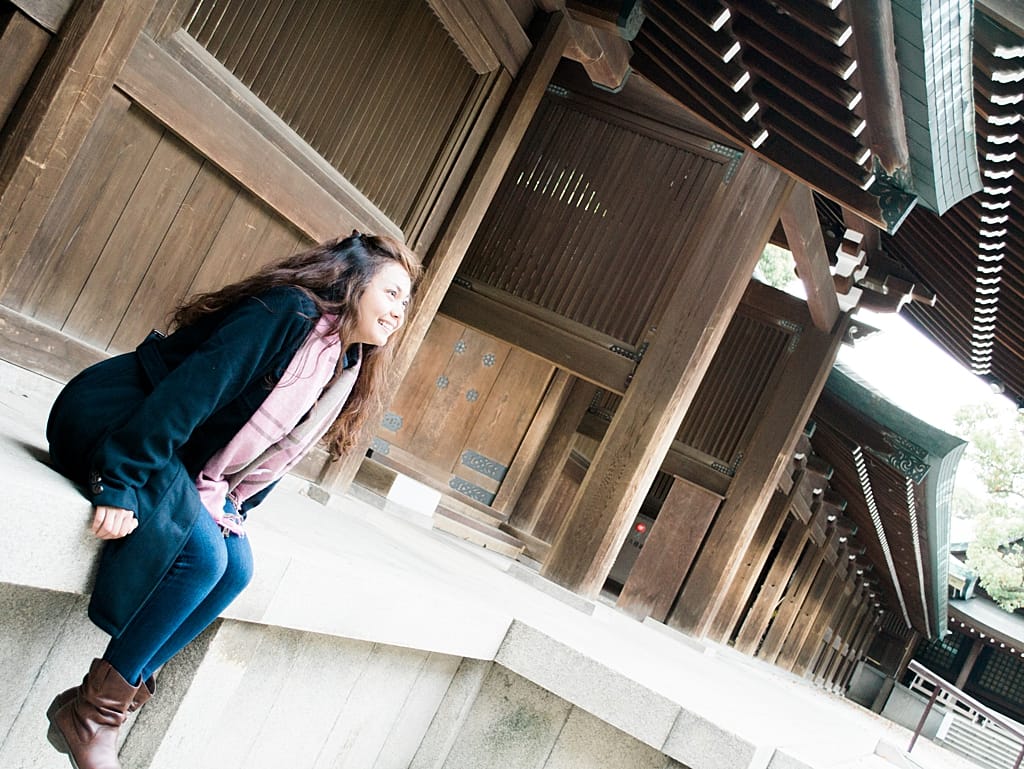
Japan is a fascinating mix of traditionalism and modernity. It’s safe and clean, and the people are incredibly polite. The transportation system is safe, fast, and efficient, and is easily the best in the world. But as with any place, there are certain issues that can hinder the traveler. Despite the politeness of its people, there are still locations that are off-limits to “gaijin” (a somewhat rude term for foreigners), which can include certain restaurants, hotels, stores, and bars. And while the transportation system is certainly great, it can be very confusing for first-timers, and you could easily end up on the wrong train or bus, or miss them altogether.
Japan also doesn’t name its streets, so it’s easy to get lost in unfamiliarity. And despite being the host of the Summer Olympics, you’ll definitely still encounter language barriers. If all of that sounds a bit daunting for you, then you might want to consider hiring a travel advisor specializing in Japan travel. Even if you are well-traveled, Japan is a destination where you want insider knowledge to help alleviate the language barrier, avoid tourist traps, and minimize the common problems mentioned above. An advisor can also provide you with travel tips that you might not be able to find online when planning your own trip.
1.1. Planning and booking everything on your own
For some, planning and booking everything on their own is attractive since it saves money. But that also means spending a lot of time researching and planning. Should you decide to plan the trip on your own, Japan Guide Books and the Japan National Tourism Organization can be great resources. However, remember that the information listed in these resources will be presented in the best possible light, which may lead you to rely on travel blogs. But an extra precaution is needed when referring to them. Most are “paid” or “sponsored” and often receive incentives to be positive, so these websites can sometimes be even more unhelpful. Don’t get me wrong, there are plenty of reliable travel blogs out there, and I’d like to think we’re one of them, but I suggest looking at a few smaller blogs to get a more balanced consensus, then make your decision. Within the community of do-it-yourself Japan trip planners, four issues stand out the most: the wrong choice of accommodation, over-packing, a too-full itinerary, and selecting popular tourist traps. These are common mistakes which, I admit, I myself have been guilty of committing on occasion.
One area of trip planning that almost always requires outside help is when people want to treat themselves to a VIP-like experience, such as dining at a Michelin-star restaurant or having dinner with a modern-day authentic Geisha. If you’re planning everything for yourself, you won’t be able to experience those without strong Japanese language skills, connections with the local operators, and a lot of luck. All of those things often make it more trouble than it’s worth. So in summary, planning your own trip to Japan has the following advantages and disadvantages:
- You could save money.
- You can book using your travel points or rewards deals.
- Can be a more personalized experience, if done right.
- Ideal for return travelers.
- Independent travel.
- You can’t Google search your way to an insider’s knowledge and expertise.
- Can’t access many exclusive experiences.
- Time-consuming planning and researching.
- Mistakes and inconveniences might cost you more.
Need itinerary ideas? Here’s our 10-day itinerary for a little inspiration .
1.2. Booking a Japan package tour by using a travel advisor
There are many Japanese package tours online, and as a traveler, you can book directly with them. The problem with this is that there are many excellent and reputable tour operators specializing in Japanese travel packages that cannot be found in Google search results. This is where a travel advisor comes in. Ideally, you want to consult with a travel advisor that specializes in Japanese travel. Contrary to popular belief, using travel advisors are not always expensive. They may charge a fee for consultation, but many find it worth the extra cost to remove the burden and frustration of planning for their trip. They can even find package deals that are hard to come by online, and they can pass on the savings to you by letting you book the trip without a markup, which is a win-win.
Our tip is for you to work with a travel advisor who either lives in or has traveled to Japan within the year. Japan is ever-changing so you want to work with someone who’s up to date with the latest information on top Japanese experiences.
Summary of package tours advantages and disadvantages:
- Research, planning, and logistics are already taken care of.
- It can be personalized up to a certain extent.
- Access to exclusive and authentic Japanese travel experiences.
- Access to a wealth of knowledge and experience about Japan that can provide you with advice and suggestions according to your needs and interests.
- Save time and money if they find a crazy Japan travel package deal for you.
- Fees can vary between a flat rate and per day.
- Can’t book using your points or travel rewards.
1.3 Hire a Japan trip designer for a fully-customized tour.
While it may sound similar to a travel agent or advisor, hiring a trip designer is on a completely different level. Whereas an advisor can help with an itinerary, match you to a tour, and even customize some aspects of it, a designer builds your trip completely from scratch, and the itinerary is highly personalized around you. If you opt for this route of trip planning, it is undoubtedly the most costly of all as most trip designers charge a fee based on the number of days you are traveling to Japan. Despite the cost, the experience can be quite luxurious as these trip designers have special partnerships with many suppliers in Japan that can offer you exclusive access to activities and experiences you can’t get anywhere else. Additionally, they book everything for you. Your itinerary is truly tailor-made compared to packaged tours where choosing your own accommodations is often not allowed.
- VIP treatment.
- Research, planning, and logistics are entirely taken care of.
- Your trip is highly personalized and fully tailored around you.
- Can accommodate specialized needs and interests (senior, wheelchair travel, large group, etc.)
- Can remove all communication barriers.
- Access to select exclusive Japanese travel experiences.
- Is very expensive.
- Constant back-and-forth communication is involved until everything is in agreement.
Examples of trip designers specializing in Japan:
- The Art of Travel starts from $1,000 per person per day.
- Michi Travel starts from $1,000 per person per day.
- Japan and More start from $197 per person per day + final costs of all bookings.
Now if you’re ready to move on to planning, organizing, and finalizing your itinerary on your own , proceed to the next section!
2. Find out when you would like to visit Japan.
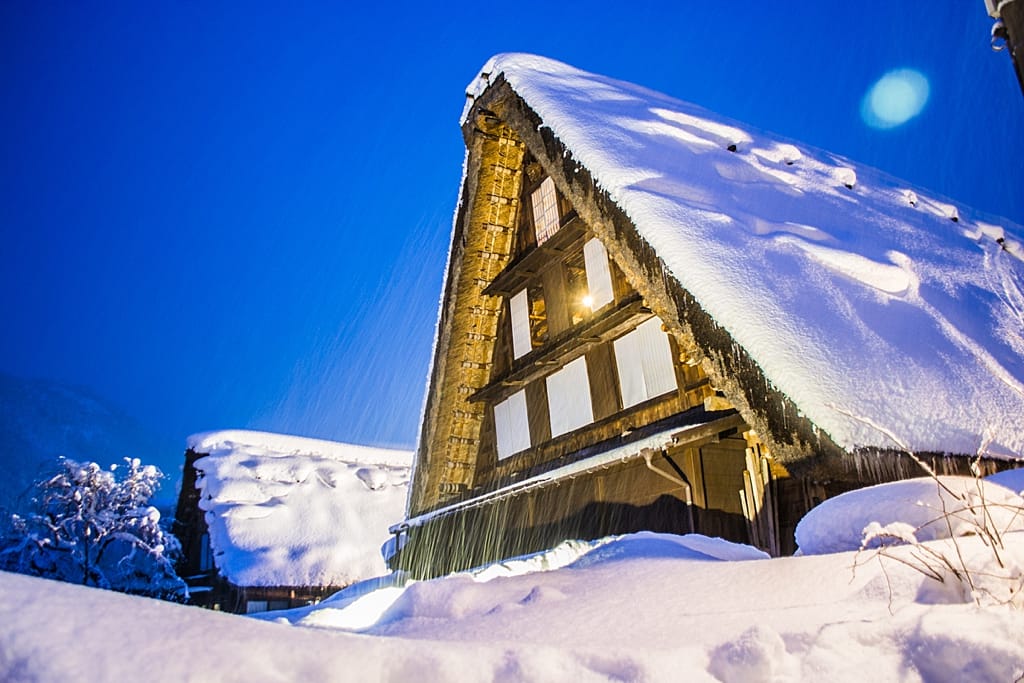
Japan’s climate is similar to a state like Virginia, and by that I mean the seasons can vary wildly. So summer can be brutally hot and humid and winter can be very cold and windy. The main difference here is that Japan gets more rainfall and snow than a place like Virginia.
Here’s a quick overview relating to visiting Japan by season:
Winter (Dec-Feb)
- Least amount of travelers and the least expensive season. The off-season time to travel to Japan, but be prepared to tackle the cold.
- The major winner when traveling to Japan in winter is Japan’s world-class ski resorts.
- Winter Illuminations are also everywhere, which are beautiful at night.
- Best of all if you’re around Tokyo, Mt. Fuji has a much higher chance of visibility in the winter.
Spring (March-May)
- Spring in Japan is undoubtedly the most beautiful time to visit due to cherry blossoms.
- The blooming of cherry blossoms makes this Japan’s peak season for tourism, so expect flights and accommodations to be very expensive.
- Timing (and luck) is everything here since rain is frequent and can knock the petals off the cherry blossom trees pretty quickly.
- Expect large crowds at each attraction.
Summer (June to August) .
- Summer in Japan is incredibly humid and hot.
- It’s also typhoon season, which reduces the number of tourists unless they plan to climb Mt. Fuji .
- Despite the weather in summer, Japan is full of vibrant and lively festivals ( matsuri ) and firework festivals ( Hanabi ).
- To stay away from its brutal heat, it’s best to design your itinerary to visit places in the northeast region for a milder climate, the island of Hokkaido, or the mountainous areas, like Gifu, Fuji, or the Nagano Alps.
Autumn (September to November) .
- Autumn in Japan is another popular time of the year to visit.
- The most ideal weather for travel.
- The red leaves offer a great alternative to the pink hues of spring. But unlike in the east coast U.S., leaves in larger cities, such as Tokyo and Yokohama, start to change from late November to early December.
- Just like cherry blossom season, the koyo (red leaves) season is a popular time of the year to visit Japan. So be prepared to battle with slightly higher accommodation prices.
3. Assess your destinations based on the season of your visit.
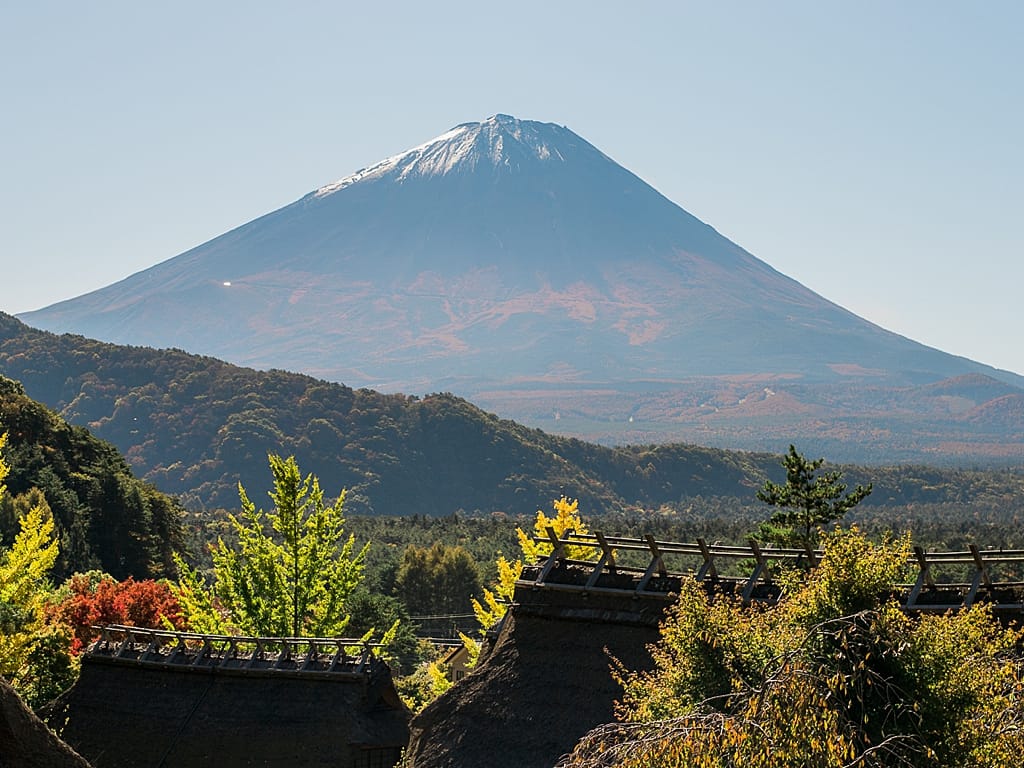
Once you determine the timeframe you’d like to go, you can move on to determining the best destinations to explore during your visit. Each season in Japan has its own pros and cons and we suggest that you visit the places that are their best during that time of year. If this is your first-time visiting Japan, it’s no brainer to include the “Three Classics” in your itinerary: Tokyo , Kyoto and Osaka .
Some people say it’s not always necessary to visit the three but I disagree. Tokyo, Kyoto, and Osaka are the three most culturally relevant cities in all of Japan, and visiting them allows you to see how varied the Japanese culture truly is, despite the islands small size. But that’s just my opinion.
4. Determine your trip length.
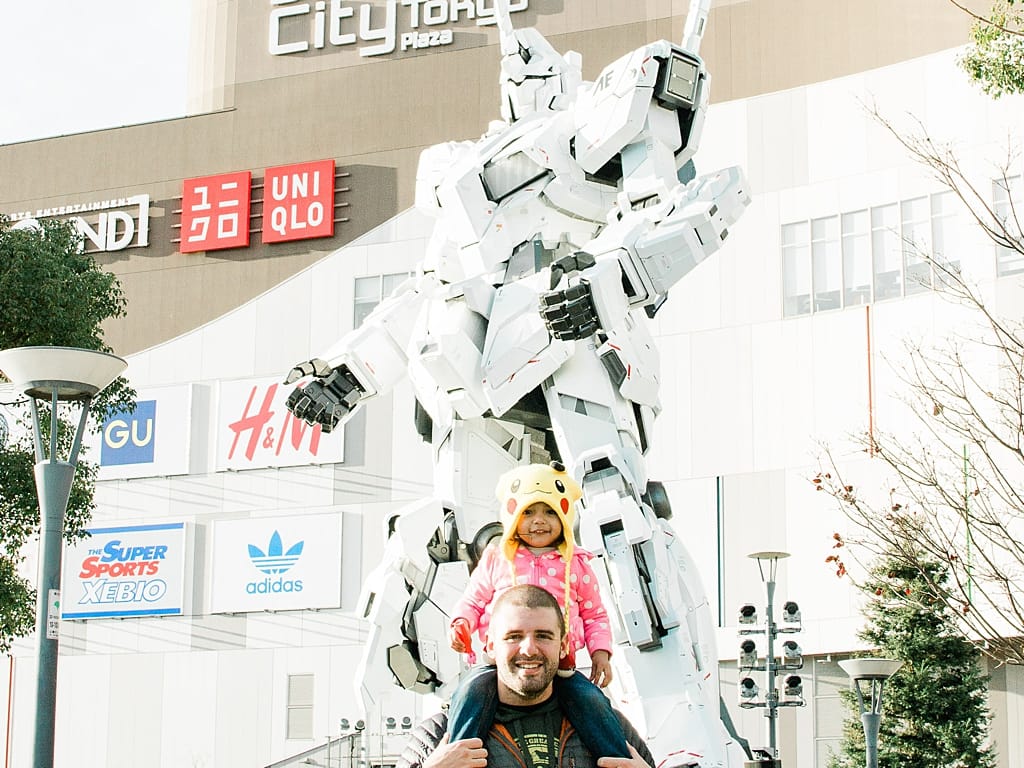
Two weeks (14 days) is the most common trip length for both first-time and repeat travelers to Japan. So be prepared to cash in on some of that leave time from your workplace!
If you want a more “wallet-friendly” trip while still tackling the Three Classics, it can be done in as short as 7 nights (8 days). If doing the 7 nights, we find it more practical, time-wise and money-wise, to make your air travel an “open-jaw” itinerary, where you fly into Tokyo and fly out of Osaka or vice versa, in order to make the most out of your time during your trip.
If you’re a bit of a Japanophile and feel like returning again and again (for sure you will), we suggest that you limit yourself to one region at a time instead of cramming your itinerary with too many things. Also, despite what you might have heard, getting the Japan Rail Pass (JR Pass) is actually often a bad idea unless you plan on using the bullet trains constantly since most efficient itineraries can keep the cost below that of a JR Pass.
5. Organize and finalize your itinerary.
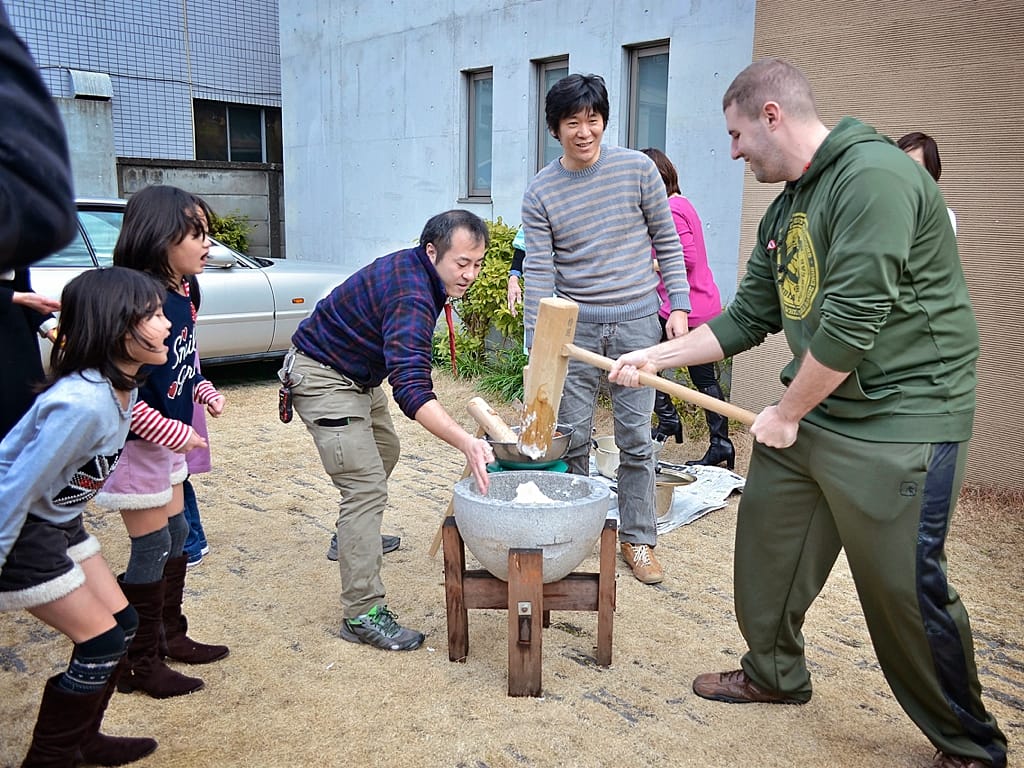
Here are my top tips when finalizing your itinerary:
- Consider day trips . Such as a day trip from Tokyo to Hakone or Tokyo to Kamakura. For day trip ideas from Tokyo click here .
- Include one or two Japanese experiences . Watching a Sumo match, participating in a “true” tea ceremony experience, bathing in an onsen, staying at a ryokan, and cherry blossom viewing are a few examples.
- For activities, make sure to book them well in advance . If you want to watch a grand sumo tournament or visit Ghibli Museum , those things require advance reservations. Don’t wait to do those activities until you arrive, because Japan is big on reservations!
- Make a balanced itinerary. Include some rest days or countryside day trips.
- Make sure your itinerary is realistic and works well with your physical abilities . Avoid an itinerary that is packed. And if you’re a family with small children or have a wheelchair, ensure the destination or attraction is a stroller and wheelchair accessible, because this is not a given in Japan as it is in other places.
- If you know someone in Japan, consider meeting up with them on your rest day . If you don’t know anyone, join a local food tour. Take some time and make a new friend! It’s nice to meet up with a local and experience more of the Japanese culture with them.
- Have someone critique your itinerary . Post on forums like TripAdvisor or Reddit and have someone critique it to see if it’s doable or not. A lot of members are actually helpful.
WHAT TO READ NEXT:
→ Japan Packing List and Travel Checklist → Detailed Guide to Average Costs of Japan Vacation → Important do’s and don’ts to know when traveling to Japan (etiquette, taboos, etc.)
Leave a Comment Cancel reply
Save my name, email, and website in this browser for the next time I comment.
- Work With Us
- Blogging Bootcamp

- Van Conversion Academy
- Campervan Shop
- Campervan Rentals
- Plan a Trip
- Itineraries
- Destinations
- Responsible Travel
- Family Travel
- Budget Travel
- Scuba Diving
- Travel Credit Cards
- Digital Nomad
- Teach English Abroad
- Blogging Resources
- Income Reports
- Travel Shop
- Meet Katie & Ben
- About Two Wandering Soles
- Personal Stuff
- Portfolio & Press
35 Expert Tips for Visiting Japan (Dos and Don’ts!)
Home » Blog » Japan » 35 Expert Tips for Visiting Japan (Dos and Don’ts!)
In this article we’re covering essential tips for visiting Japan, plus helpful advice we learned from personal experience that’ll ensure you enjoy your time in the Land of the Rising Sun even more!
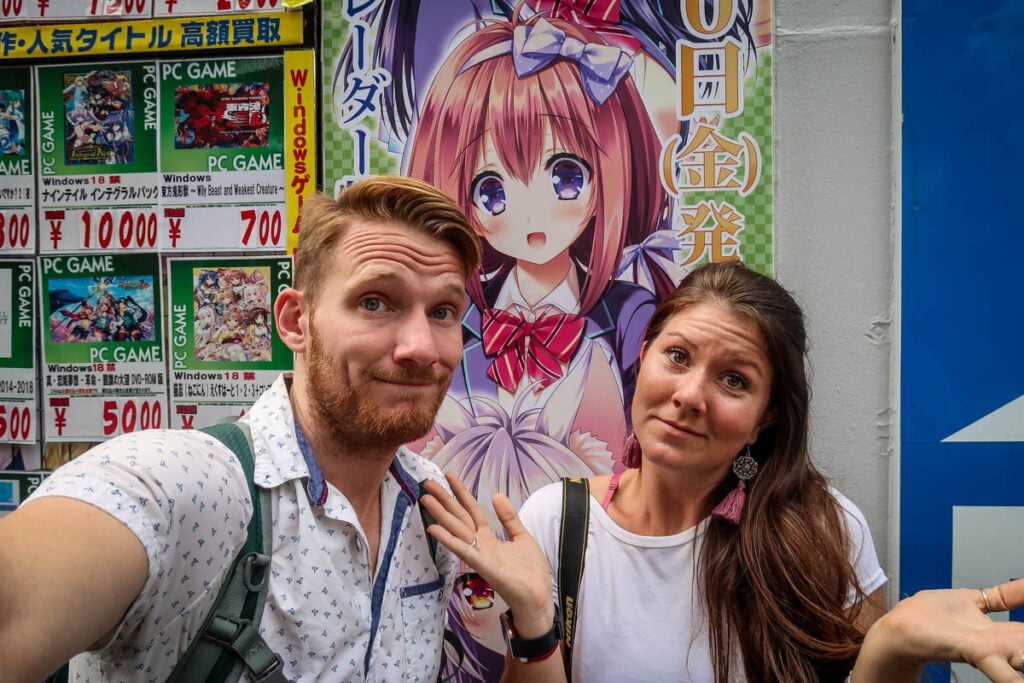
Before you hop on that flight to Japan, there are some things you should know.
This country has a complex culture, and there are definitely some manners and “norms” you should be aware of. There are also some Japan-isms that will leave you scratching your head… like, what are all those buttons for on Japanese toilets anyway?!
Don’t worry, we’ll give you the scoop! We’ve traveled to Japan three times now (and counting!) and have picked up some pretty good travel tips along the way. In this article we’re going over the essential tips for visiting Japan you should know before you go.

If you’re planning a trip to Japan, we have the ultimate resource for you!
This FREE PDF download includes everything you’re going to want to pack for your Japan trip, including what NOT to bring, plus tons of insider tips!
Sign up for our ultimate Japan packing list now and get a copy sent straight to your inbox.
1. Don’t worry too much about the language barrier
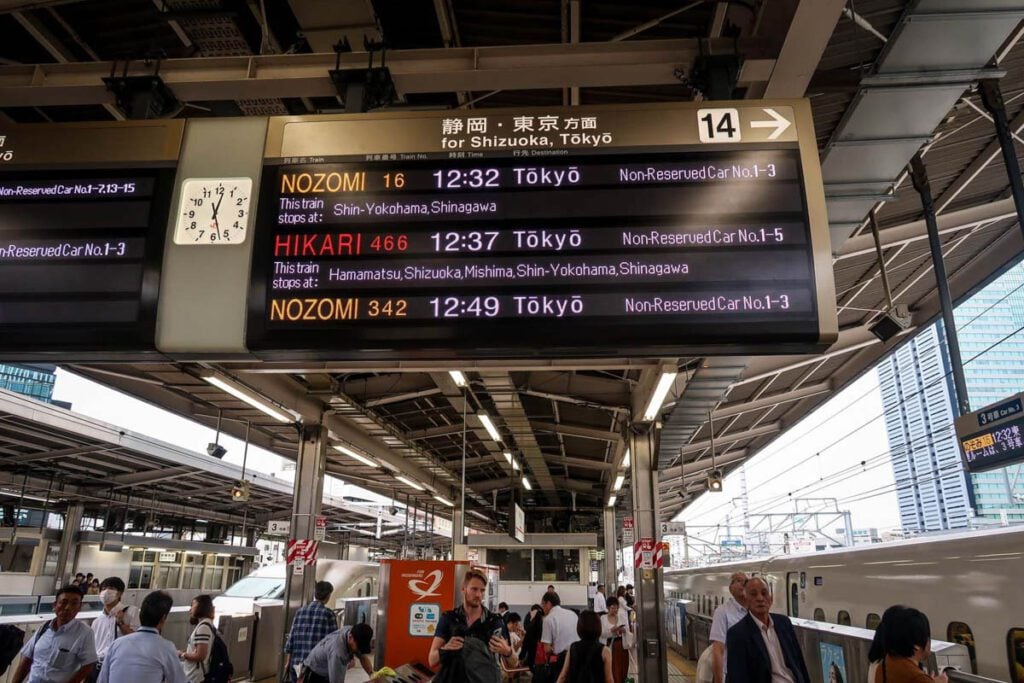
One of the things we get the most questions on is the language barrier in Japan. And after reading guide books and articles online, it can seem like traveling in Japan without speaking Japanese is impossible. But that’s far from the truth.
Honestly, we didn’t feel like the language barrier was too bad. (That said, we’ve spent a cumulative 3+ years living in and traveling through Asia, so we are used to language barriers.)
It is always respectful and recommended that you learn a few helpful words or phrases in the country you’re visiting, but we want to point out that it is possible to have a fantastic trip to Japan without having mastered the language.
This should put you at ease:
- In the event that you have a question, go to the JR counter and speak to an employee. They should have a translation device, which will help in the event that they aren’t confident with their English skills.
- Oftentimes restaurants have English menus (some even have pictures!)
- Hotel staff usually speak a bit of English
- At most restaurants there is at least one staff member who will be able to communicate with English speakers
- Oh, and the Google Translate app is literally the BEST THING EVER. Read about more apps we recommend downloading for your trip to Japan !
- Japanese people, in general, are very polite and kind. While they may not approach you, if you ask for help they will usually do their best to assist you or point you in the direction of someone who can help.
Learn a few words in Japanese, as it will show you’re trying. And be patient. Remember, you are a guest in another country, and while some people may know a bit of English, it is not their first language.
Helpful words & phrases in Japanese
- Hello: Konnichiwa (also means “good afternoon’)
- Good morning: Ohayō gozaimasu
- Thank you: Arigato gozaimasu (the “u” on the end of the word is almost silent)
- Excuse me: Sumimasen
- Cheers!: Kanpai!
- Delicious: Oishī
- More practical Japanese words and phrases
If you take one thing away from this point, I hope that it’s this:
There will be a language barrier while traveling in Japan, and you can’t expect people to speak English. BUT, it is definitely possible to communicate with simple vocab words, the Google Translate app, and a bit of patience.
2. Japan is super safe
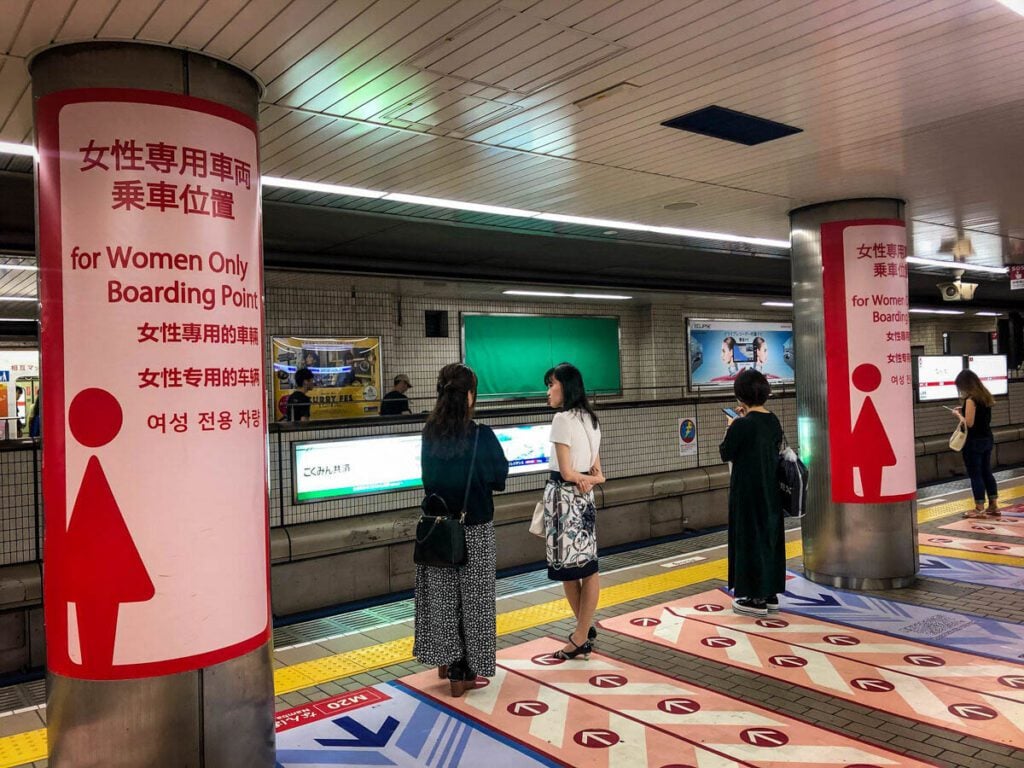
Like, very safe. Of course, you’ll still want to use common sense on your travels in Japan, but the chances of you encountering any dangerous situations or theft are very slim.
We’ve known people who have left their wallet on a crowded subway in Tokyo, only to have it hand-returned to them hours later. The thing we had to get used to was being mindful of our belongings when we returned to the U.S. after our trip to Japan!
Psst! Here are some essential travel safety tips you should know before any travels!
3. Do look into getting a Japan Rail Pass to save money
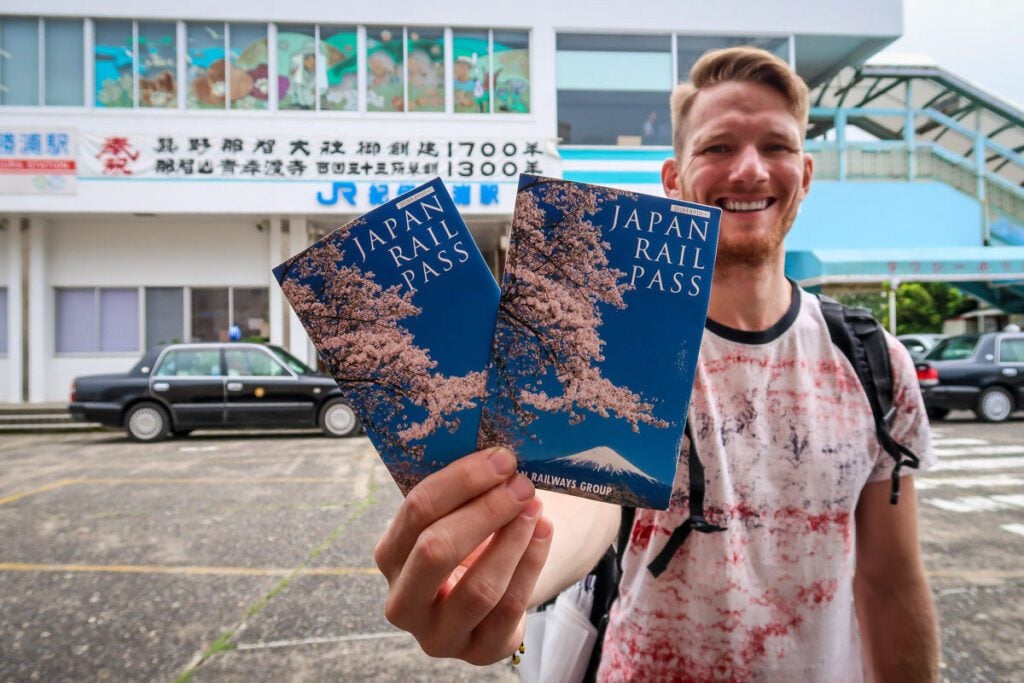
Essentially, if you plan to visit more than 2 cities during your trip to Japan, the JR Pass will almost definitely save you money .
We have a whole article detailing it and even a quick way to calculate whether or not it will be worth it for you… but chances are it WILL .

Good to know: A JR Pass is essentially the same price as a roundtrip ticket from Tokyo to Osaka. So many travelers in Japan will save lots of money by getting the pass.
Also, we didn’t know this until we were in Japan, but Japanese citizens actually cannot get this pass, and therefore pay a lot more than most tourists for train travel.
4. Book your major train routes ahead of time
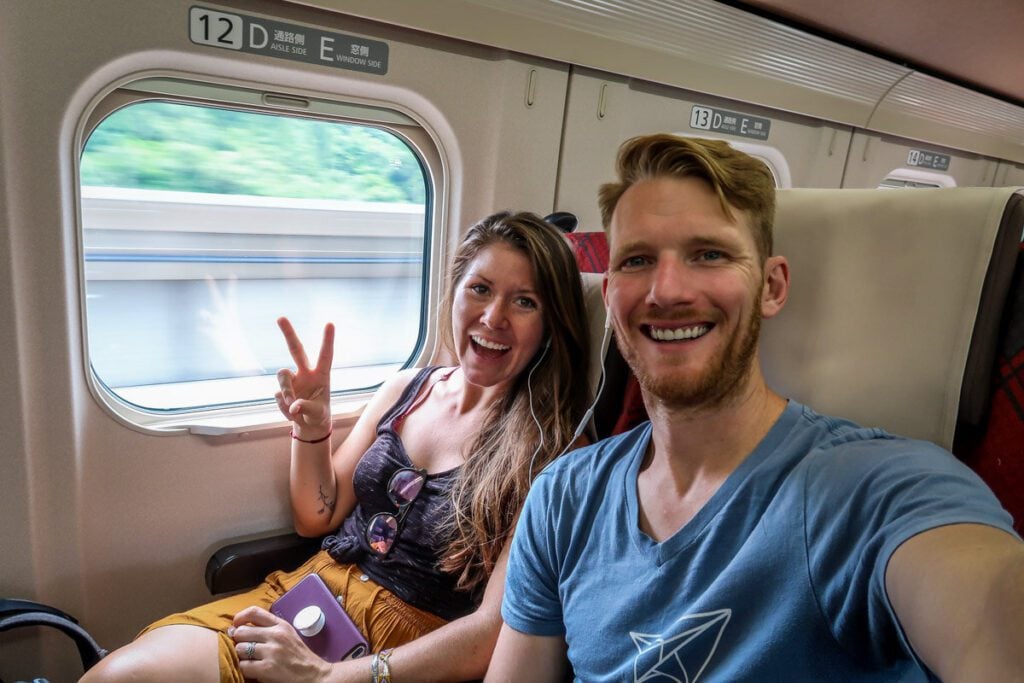
Many popular routes get fully booked up, so don’t wait until the last minute to reserve seats. For example, we had to stand for the 1.5-hour ride from Hiroshima to Osaka because we didn’t book our tickets in advance.
When you have the JR Pass , all train routes are free (there are a few lines that are not included, but you really don’t have to worry about those).
We’d recommend on your first day in Japan, to go to the JR ticket counter at the train station and reserve all your seats for your routes at once. You can always change your time and book another ticket later, but it’s good to have seats reserved.
If your route is fully booked, on every shinkansen train (bullet trains) there are a couple of cars that are for passengers that don’t have reserved seats. However, there is a high chance that you’ll be standing for that ride.
5. Do eat more than sushi and ramen
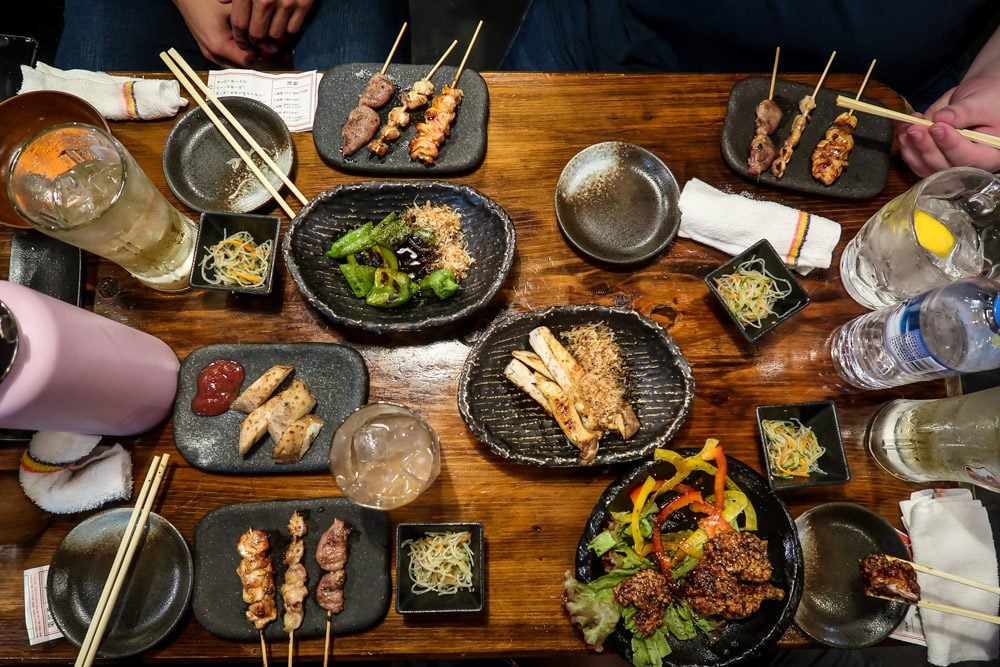
Before our first trip to Japan, our knowledge of Japanese cuisine started and ended with sushi and ramen. We didn’t know much else about it. But we’re here to tell you there is SO much more to this cuisine.
Check out our guide to the best foods to try in Japan , which even has a checklist you can download so you can make sure you don’t miss any foods! The more you know before your trip, the more you’ll be able to try.
6. Mind your manners
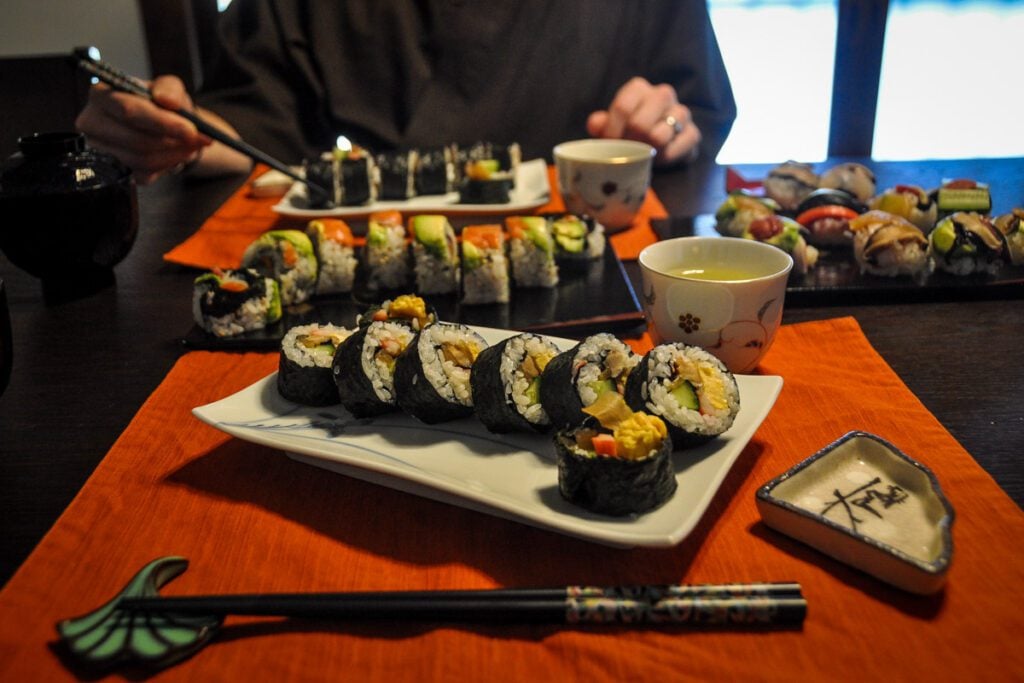
Manners are important in Japan, and it’s a good idea to read up on some Japanese etiquette before your trip so you don’t embarrass yourself or offend someone.
Here are a few manners to keep in mind:
- Instead of pointing with one finger, use your entire hand
- Avoid physical touch, like hugging, until you know if someone is comfortable with it. Also, public PDA is kind of a no-no
- Don’t eat while walking
- Be quiet on public transportation and avoid taking phone calls if possible
7. Don’t tip your server
While it is a common practice in North America, Europe and many other parts of the world, tipping is not part of Japanese culture and can be seen as mildly rude in some instances.
The Japanese believe that good service is expected (whether it be at a restaurant or tour) so there is no need to add extra money in the form of a tip.
Try to show your appreciation for a meal or tour by verbally thanking the staff, cook or guide. Leaving a review is always helpful so other travelers know what to expect.
8. Forks are few and far between
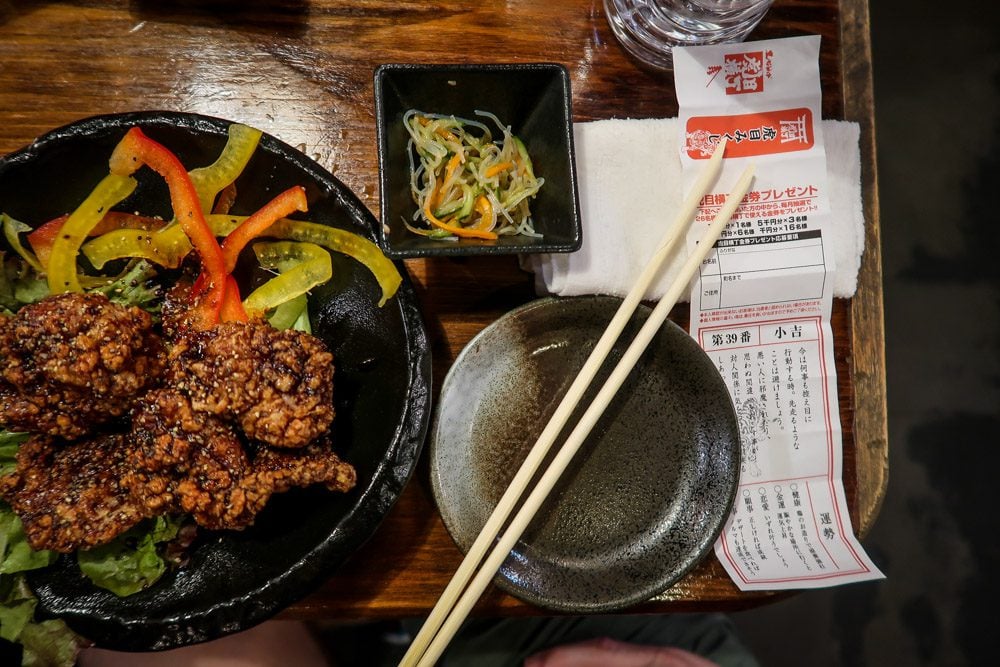
You’ll want to practice your chopstick skills before your trip to Japan because it is the utensil of choice, and very rarely will you find forks.
Hint: Chopsticks also make a great souvenir from Japan !
9. Do slurp your noodles
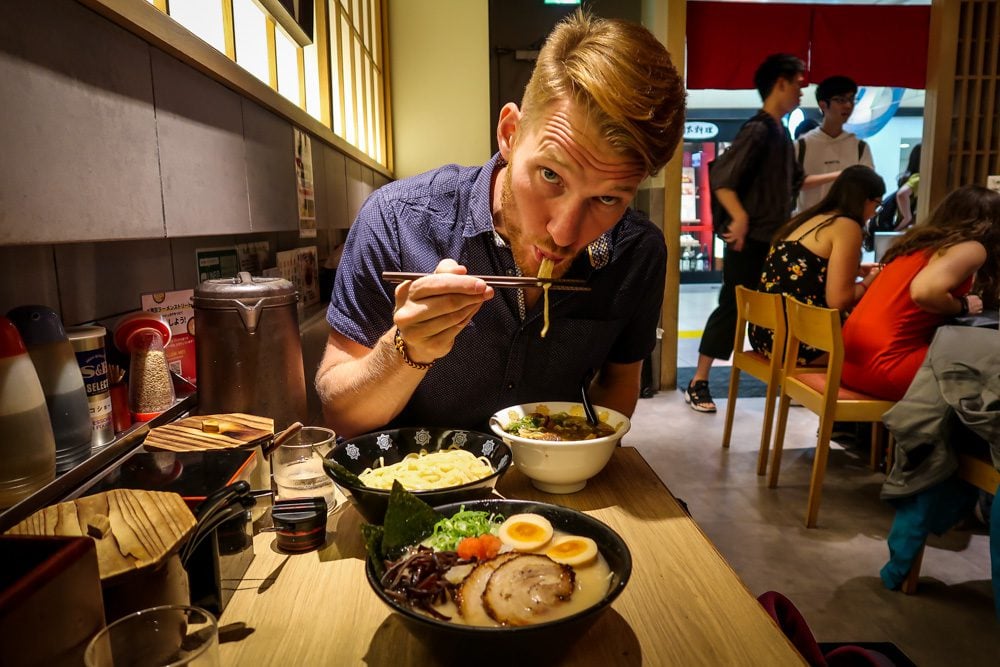
Everyone knows that slurping noodles is the best way to enjoy them , right? Well, here’s a fun fact about Japan you didn’t know you needed: it’s actually not considered rude!
In Japan, slurping your noodles is actually considered a sign of appreciation . It shows the restaurant or chef that you’re enjoying their food. Plus, slurping can even enhance the flavor!
10. Don’t forget to take your shoes off
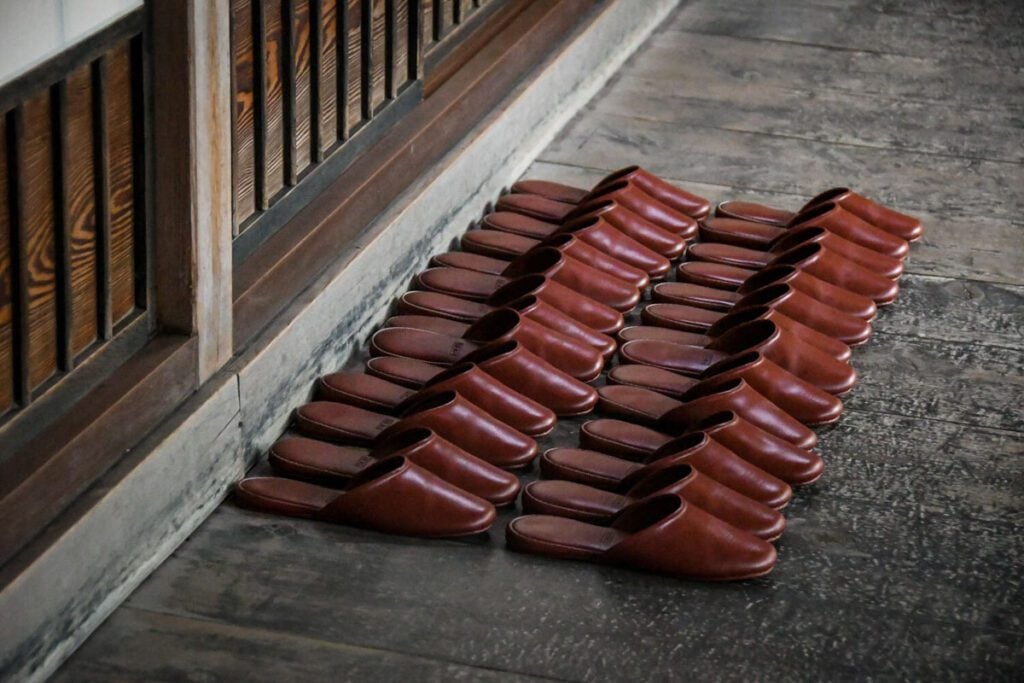
When entering guesthouses, homes, holy sites, and some stores, you will need to remove your shoes. This is typically indicated by floor that is different levels — either raised or lowered once you enter.
Usually there are indoor slippers that you can wear once you remove your shoes. The exception to this is in rooms where the floor is tatami mats — a delicate traditional flooring made of rice straw. These are common in traditional guesthouses and teahouses, inside which you can wear socks.
Also, some guesthouses have bathroom slippers. Yes, you read that right, shoes for the potty. Typically they will be sitting just inside the bathroom door and you’ll leave your indoor slippers outside of the bathroom.
11. Do learn onsen etiquette
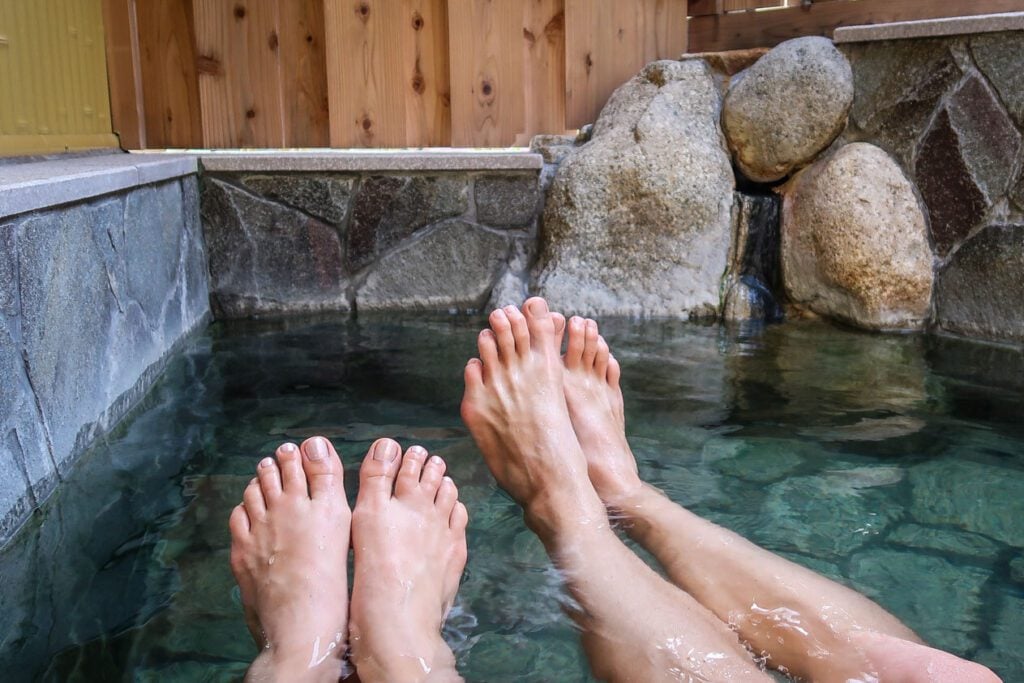
Soaking in an onsen should definitely be on your list of top things to do in Japan !
Hold up, what is an onsen, exactly?
An onsen is a Japanese hot spring with a bathing facility.
Japan has a lot of volcanic activity, meaning there are many onsens to choose from all around the country!
But before you start shedding your clothes, there are some important rules you should know so you don’t embarrass yourself…
Basic onsen etiquette
- Shower before you get in , oftentimes it’s at a shower where you will sit on a stool and rinse yourself off.
- Unless otherwise noted, do not wear a bathing suit.
- You can bring a towel into the bathing area, but don’t let it touch the water (many people put it on top of their head).
- Tie up your long hair so it doesn’t touch the water.
- Know the onsen’s policy on tattoos. Many onsen do not allow guests with tattoos, so you’ll have to seek out onsen where it is accepted or opt for a private onsen facility.
We go into more detail about onsen rules in our Japanese etiquette article.
Alternative: For those of you who just can’t get over the whole naked in public thing (I get it!), you may want to consider staying at a ryokan with a private onsen. This means you can reserve a time slot for yourself (and a travel partner if you wish).
11. Understand the difference between a shrine and a temple
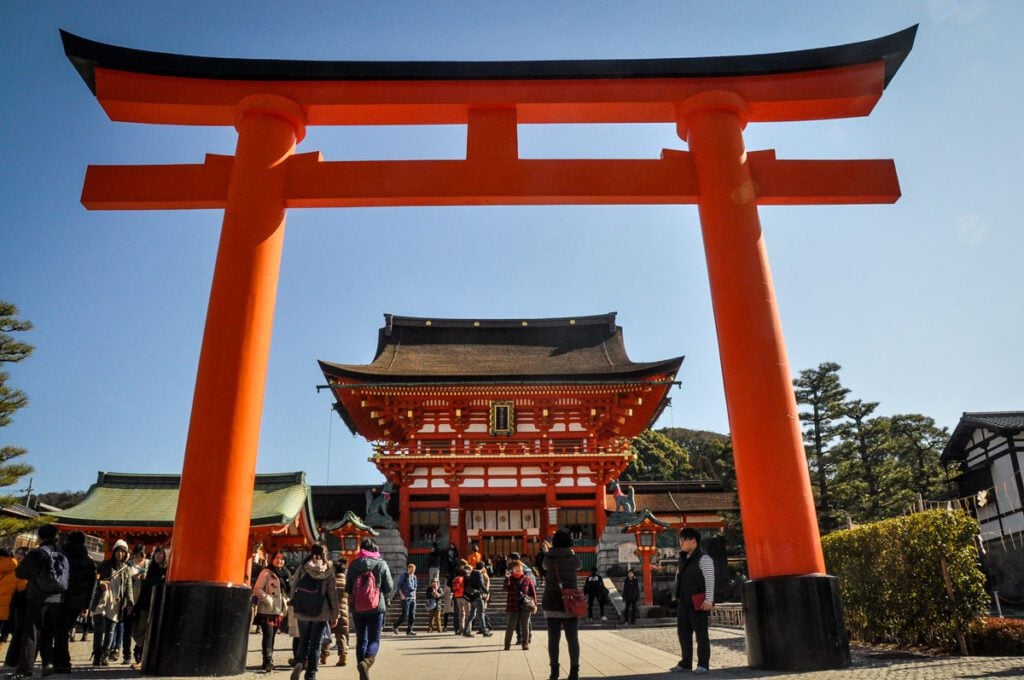
Before traveling to Japan, it’s very useful to know the difference between a shrine and a temple. Here is a general guide to help you:
Shinto Shrine:
- recognize them by the tori gates
- purification fountain (called chozuya ) with ladles
Buddhist Temple:
- large incense burner
- statues of Buddha
- sometimes a graveyard is attached
We have a whole section on how to visit a shine and a temple in our Japanese etiquette article.
12. Japan is not as expensive as you might think
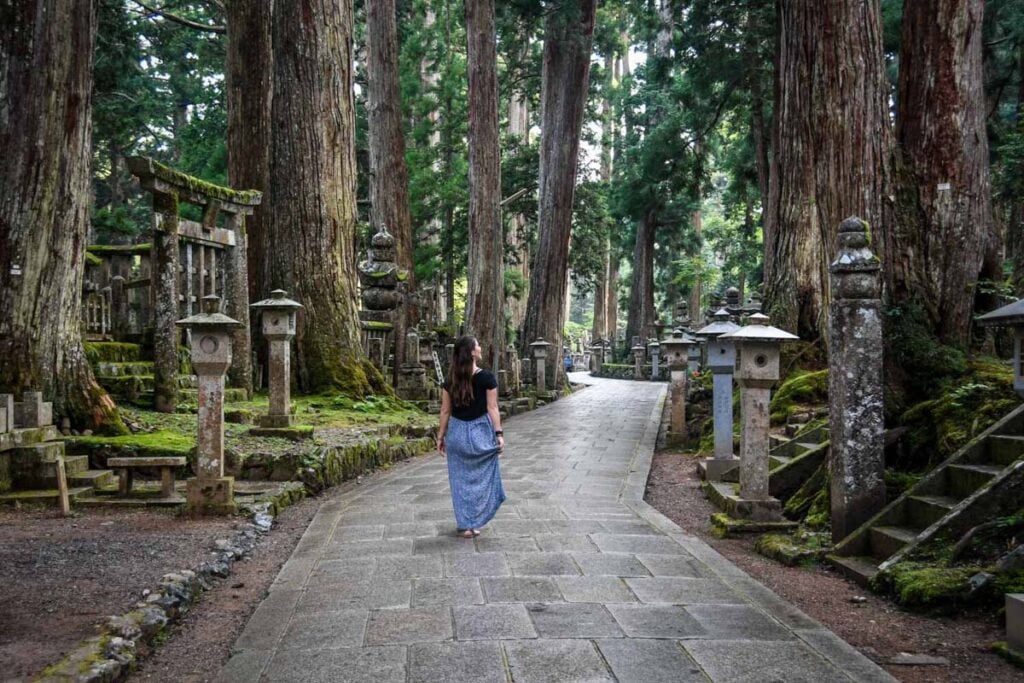
We’ve traveled extensively around Asia, and it’s true — Japan is one of the more expensive places we’ve visited in this region of the world. That said, it is still possible to travel Japan cheaply.
You can find budget accommodation in hostels, capsule hotels, or even Airbnbs . You can save money on food by eating at convenience stores, cooking some meals yourself, and planning out “splurge meals”. Cut transportation costs by getting the JR Pass , and enjoy all sorts of free things to do around the country.
Psst! We have loads of info on how to book Airbnbs , including red flags to watch out for when booking and our favorite Airbnbs.
Traveling to Japan doesn’t have to be crazy expensive. We’ve rounded up some of our top tips for traveling to Japan on a budget .
Moral of the story: If Japan is a country you’ve been dreaming of visiting, don’t let costs inhibit or deter you from making your dream a reality!
Related: We’ve got tons of super practical tips to show you how we afford to travel !
13. Do carry cash AND credit cards
Many places in Japan accept foreign credit cards with no problem. And if you have one with no foreign transaction fees that earns good rewards, you’ll definitely want to bring it along and use it as much as possible.
That said, there are still small shops, restaurants, and even guesthouses that only accept cash , so you’ll definitely want to have some Japanese yen on hand.
14. Withdraw cash from 7-eleven ATMs
The ATMs in 7-elevens are the most reliable ATMs in Japan with no fees for international cards. As a bonus, you can find 7-elevens everywhere! However, it’s good to note that some of the 7-eleven ATMs in popular spots do now charge a fee, so try to withdraw in less touristy areas.
Insider Tip: We always get foreign currency by withdrawing from ATMs, as it gives you the best exchange rate. To avoid those pesky ATM fees, we use our Charles Schwab debit card, which reimburses all ATM fees at the end of each month. It is the BEST card ever! Read more about which travel credit cards we recommend .
15. Don’t throw out your coins
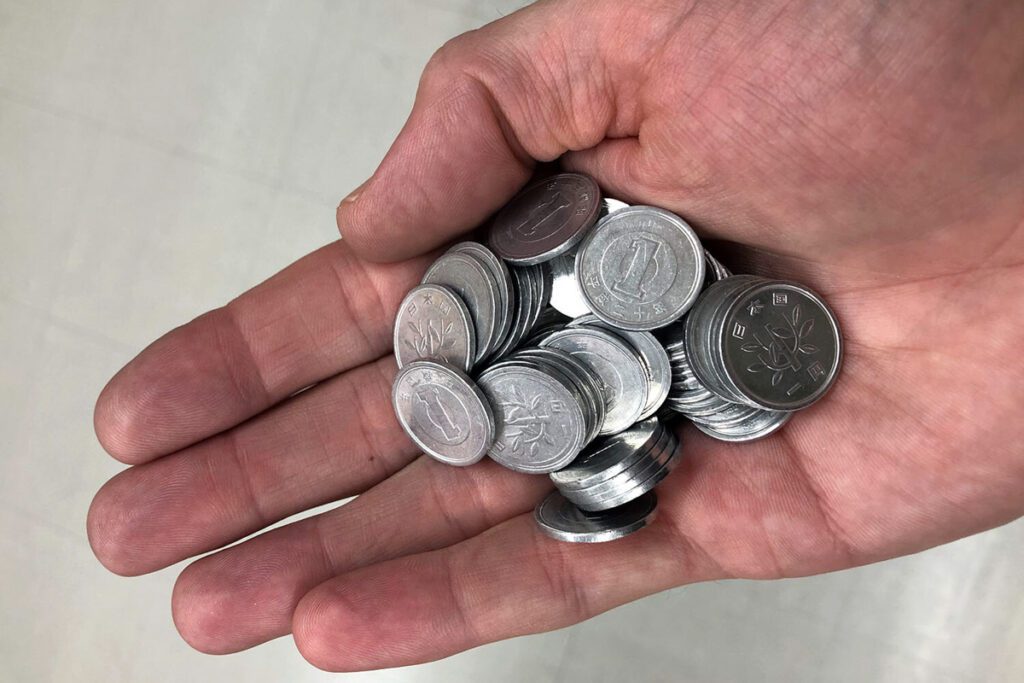
Some of those yen coins are worth almost $5 USD! I don’t know about you, but I typically throw coins around without much care — I mean, it’s no big deal if I misplace 12 cents… But in Japan, losing a handful of coins could add up to big money.
While on a train, a bunch of coins fell out of Ben’s pocket and we had to get down on our hands and knees to find them all before our stop. When we counted them all up we realized we nearly lost $24 USD in coins. Yikes!
When traveling in Japan it’s a good idea to have a coin case to keep them secure.
Tip: We met another traveler who had two coin purses — one for the large coins and one for the small ones to keep them organized.
16. Don’t get lost
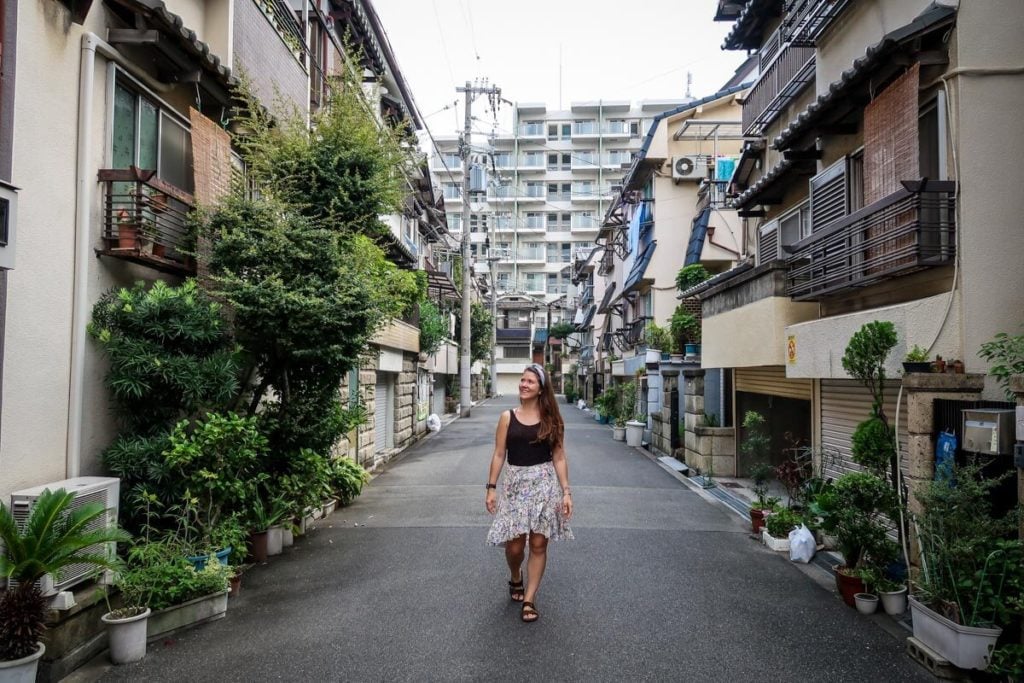
If you’re someone who’s not great with directions, you may find it alarming to find out that streets don’t have names in Japan… So how the heck are you supposed to find your way around?!
Although there are no street names, it isn’t a free-for-all. Addresses in Japan use an area-based system, where each area is divided into smaller areas .
The largest of these is called a prefecture. Prefectures are broken down into cities, and the cities are divided into wards.
Getting around and following directions in Japan is definitely a learning curve, so it’s worth studying some maps and taking time to research the numbering system before visiting.
17. Hold onto your trash
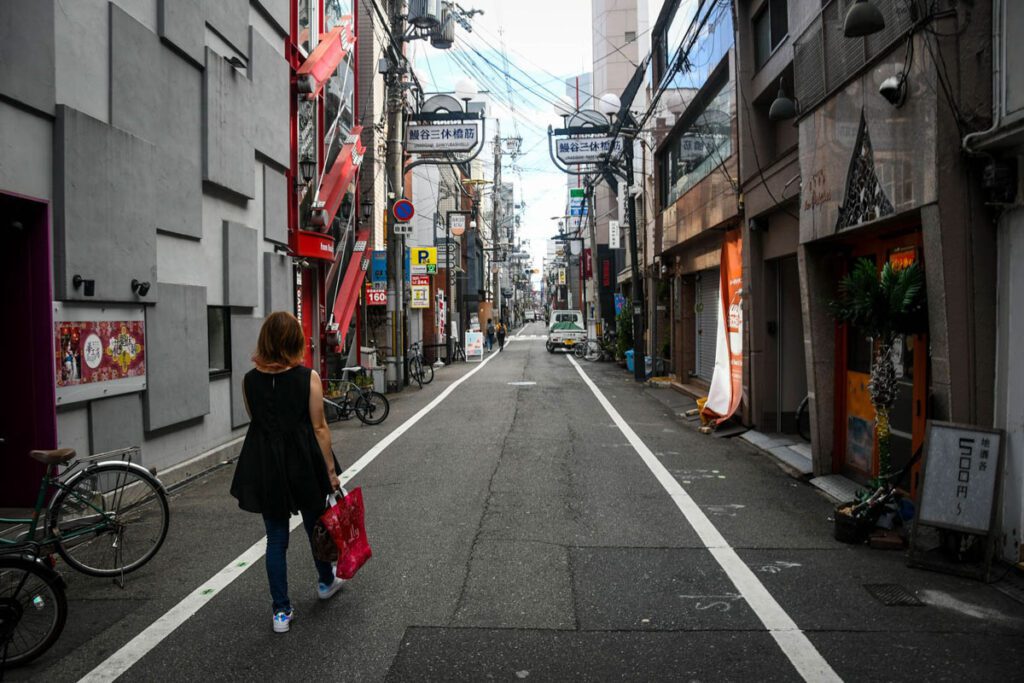
There are few trash cans on the streets in Japan. After hearing this, you might be surprised to learn that even though there is a shortage of garbage bins, there is very little litter in Japan.
Cleanliness is a big part of Japanese culture, which is reflected in the (mostly) litter-free streets.
So do as the Japanese do, and hold onto any wrappers until you find a bin. There are typically trash cans at convenience stores, meant for customers to dispose of their garbage.
18. Do the work to avoid plastic waste
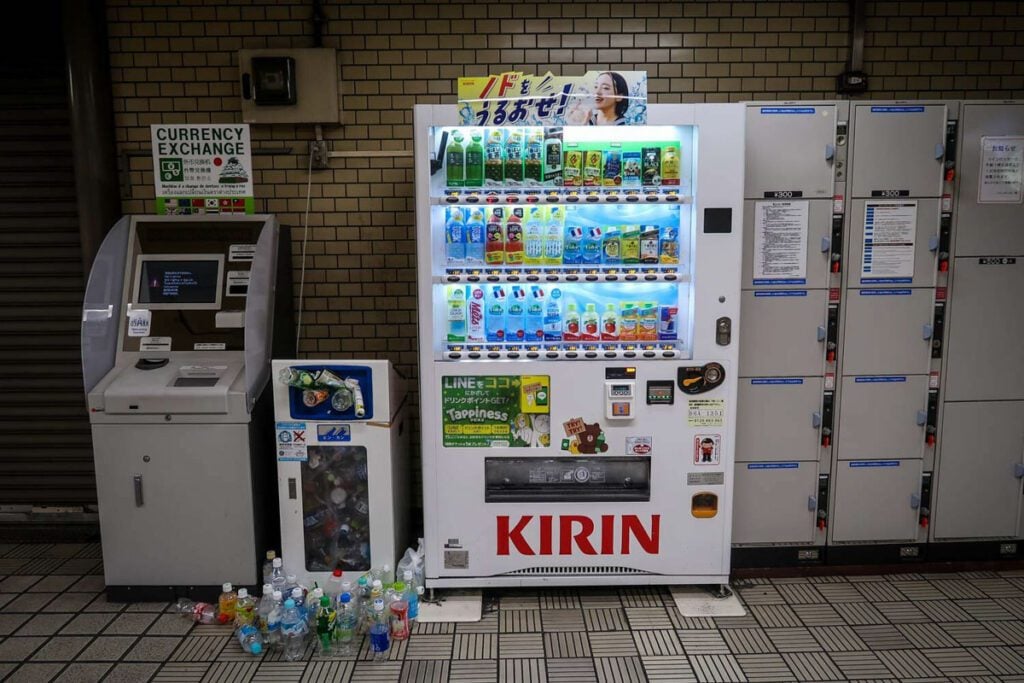
On the surface, Japan seems to be environmentally conscious: there are recycling bins every so often and the streets are very clean.
But as soon as you stop into a convenience store, you’ll notice that this country, like much of Asia, relies heavily on plastic packaging. And the super unnecessary kind, like plastic wrappers around single bananas.
As a traveler, there’s not too much you can do to change this, but you can reduce your own plastic waste by packing items that’ll help you turn down single-use plastic items.
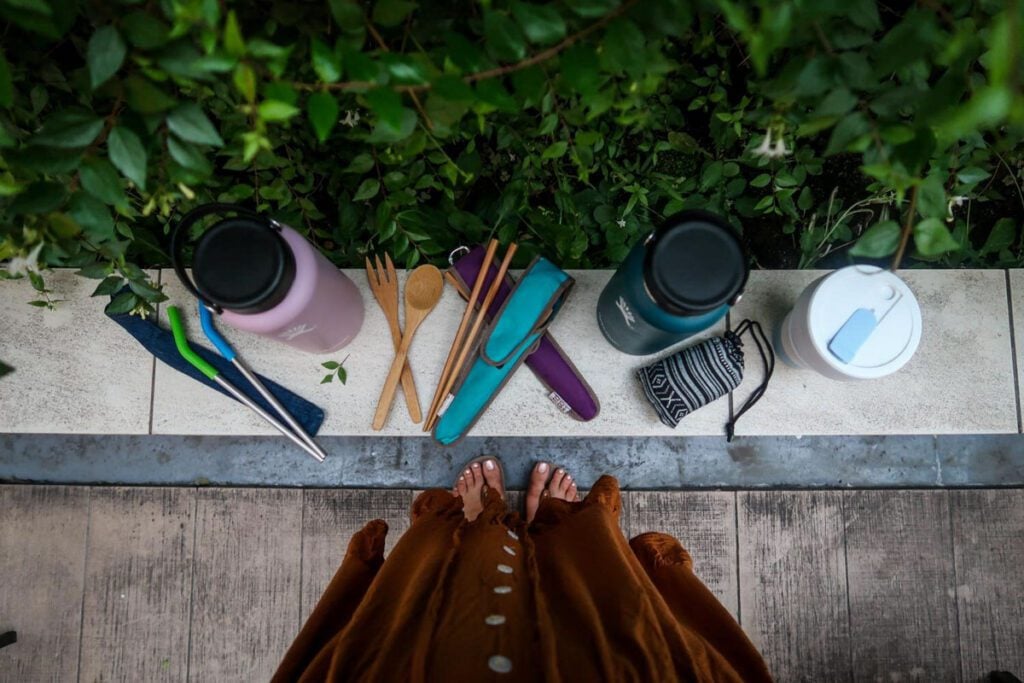
Here are some items we’d recommend packing:
- reusable utensils
- reusable straw
- water bottle *
- reusable bag
*Yes, you can fill up from the tap and drink the water in Japan! There’s an app called MyMizu that has a map of refill stations (mostly in larger cities, but I’m sure they’re expanding it as data is available).
Check out our eco-friendly packing list for some more ideas!
19. Choose an interesting hotel option
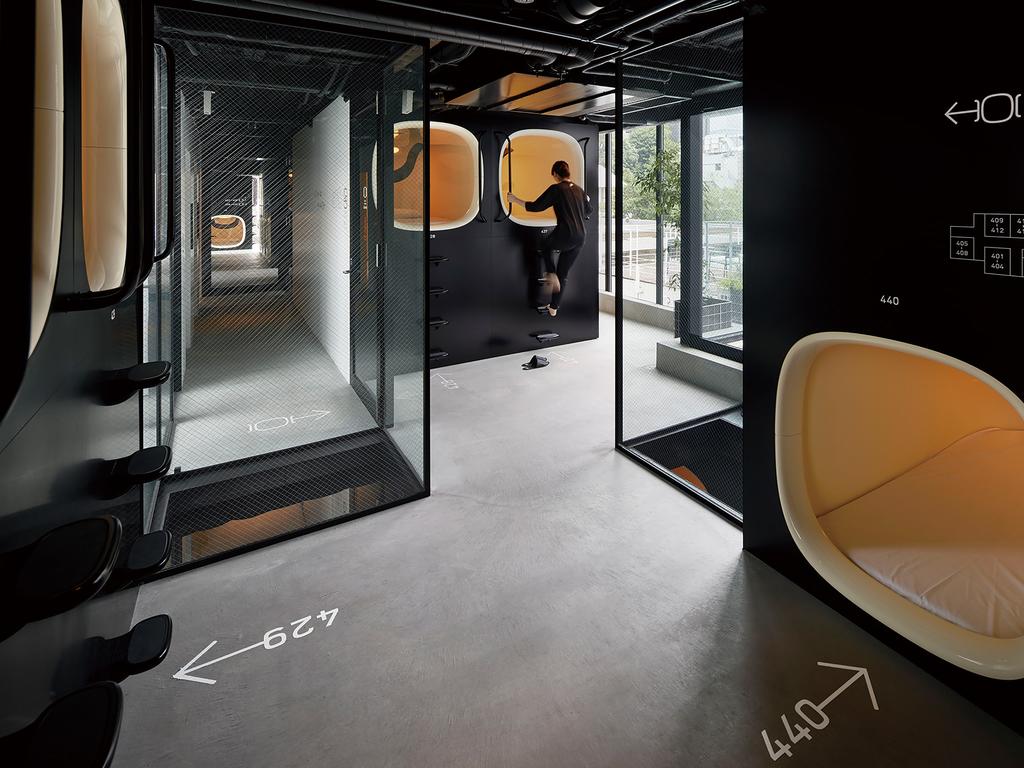
While traveling in Japan, you might want to try out a few unique hotel stays that you can find only in Japan.
- Ryokan: This is a traditional Japanese inn that typically provides guests with robes and meals. There is often a shared bathroom and onsite onsens that can be used by guests.
- Capsule Hotel: Made to maximize space in crowded cities, capsule hotels provide guests with privacy and an affordable stay. However, don’t expect to stand up in your pod! Staying in a capsule hotel is definitely a top Japanese experience to try out on your trip!
- Robot Hotel: There are even hotels run by robots! Like we said, #OnlyInJapan
20. Learn how to use a Japanese toilet
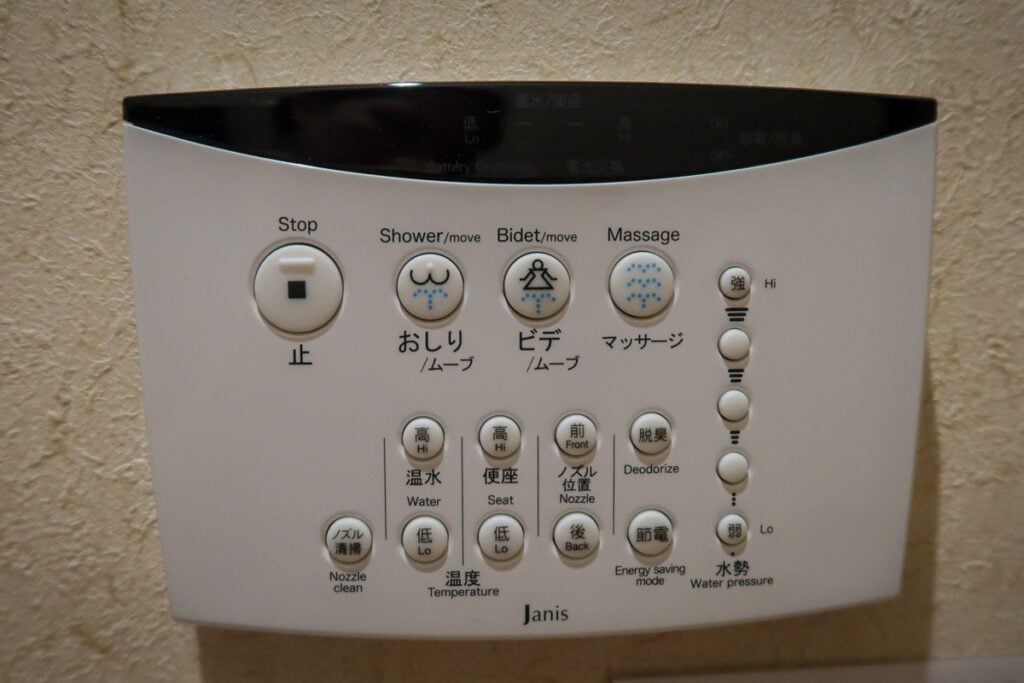
You’ve probably heard about Japanese toilets, and what the rumors say is true!
There are all sorts of buttons that perform different functions. For example, one button may play waterfall sounds or music to cover up— ehem —some other sounds you may not want the person in the next stall to hear. Other buttons will trigger a bum wash and can be set at varying pressure strengths.
All those buttons can be a little intimidating at first, but try them out (locate the STOP button first) and take advantage of those fancy toilets while you can. Because you surely don’t have those fun features at home!
21. Download these apps before you get to Japan
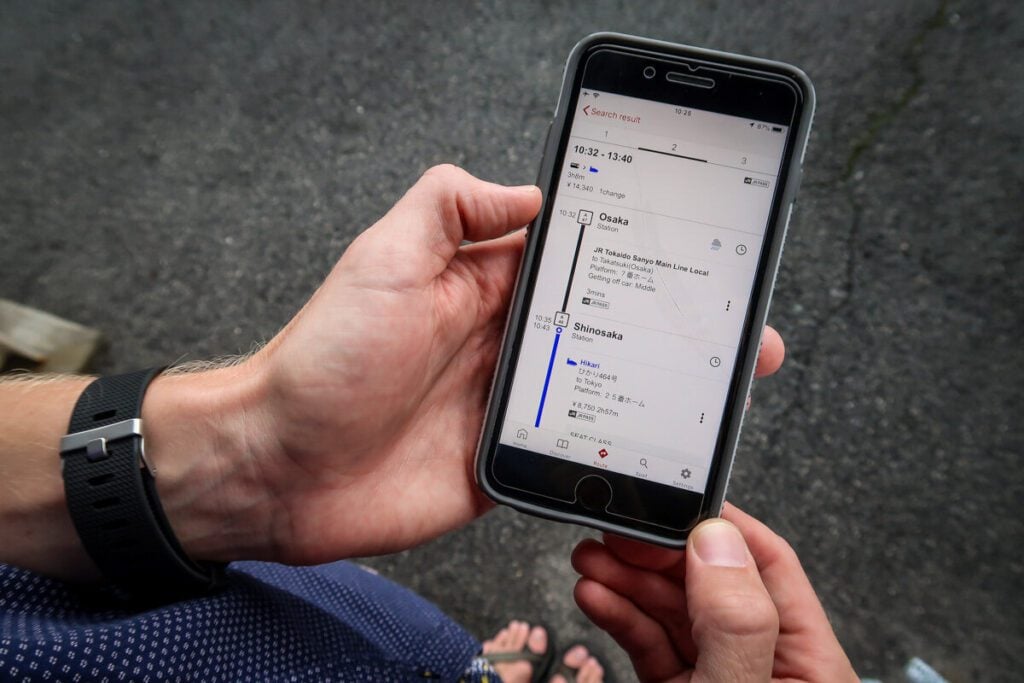
We have a whole article detailing all the best Japan travel apps you should download before your trip, but the 2 best ones that you NEED to download are:
- Japan Official Travel App
- Google Translate
You will thank us because they will come in so handy during your trip!
22. It’s difficult to be gluten-free in Japan
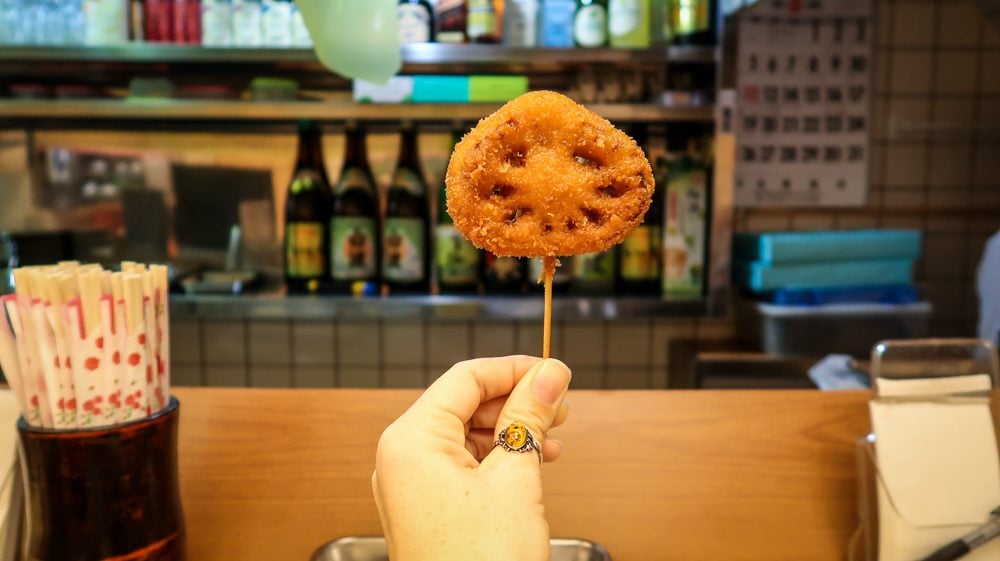
While the abundance of rice may make you think Japan would be an easy country for gluten-free travelers, that’s simply not the case. Soy sauce and other wheat-based seasonings are an integral part of Japanese cuisine, making it hard to avoid gluten.
Read this for more info on gluten-free travel to Japan .
23. Be on time
In Japan, it is seen as rude to be late, and thus, everything in Japan is run very strictly according to the clock.
This means trains leave exactly as scheduled and guests are often asked to show up to guided tours 15 minutes in advance. If you have a tendency to be late (I’m right there with ya!), be sure to pay extra careful attention to the time during your trip to Japan.
24. Utilize coin lockers to make things easy
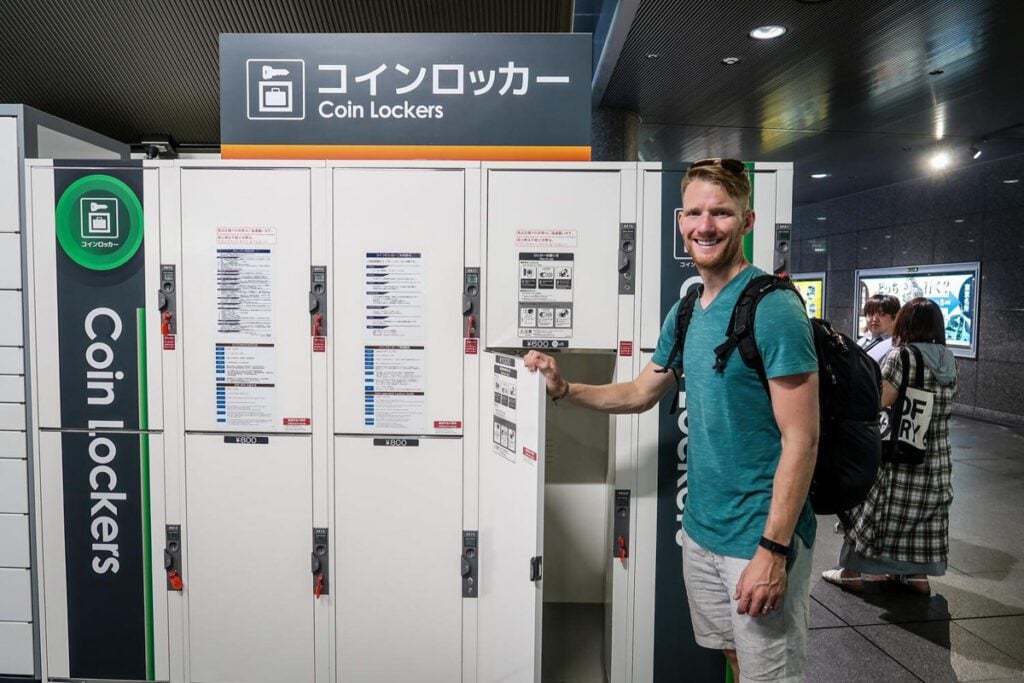
Nearly every train station has lockers which you can use to store belongings for a reasonable price. There are usually different sizes available, so you can store anything from a purse or small daypack to a large suitcase.
This is handy when you need to check out of your hotel but want to spend the day exploring.
Insider Tip: If you have a suitcase that you don’t want to bring with you on the train, there are luggage transport companies that can get it to your final destination for you!
25. Theme cafes are part of the experience

Japan is known for all things quirky, and this applies to restaurants and cafes.
The famous Robot Restaurant , with its laser beams, giant robots and scantily clad performers, is an example of something you can only find in Japan. But the theme restaurants don’t stop there. There are plenty of other over-the-top themed restaurants and cafes in Tokyo and Osaka you can visit to get the full experience.
However, it’s important to beware and do a little research before patronizing them.
Some of these theme cafes have a dark side. For example, many of the animal cafes (hedgehog, owls, sheep, etc.) do not have a safe and healthy environment for the animals. Also, there are anecdotes of young waitresses being exploited in the infamous “maid cafes”.
And no matter which cafe you go to, just remember, you’re not there for the food, which is usually sub-par. And it’s also worth noting, you’re paying for the experience as well!
26. Staying connected is easy
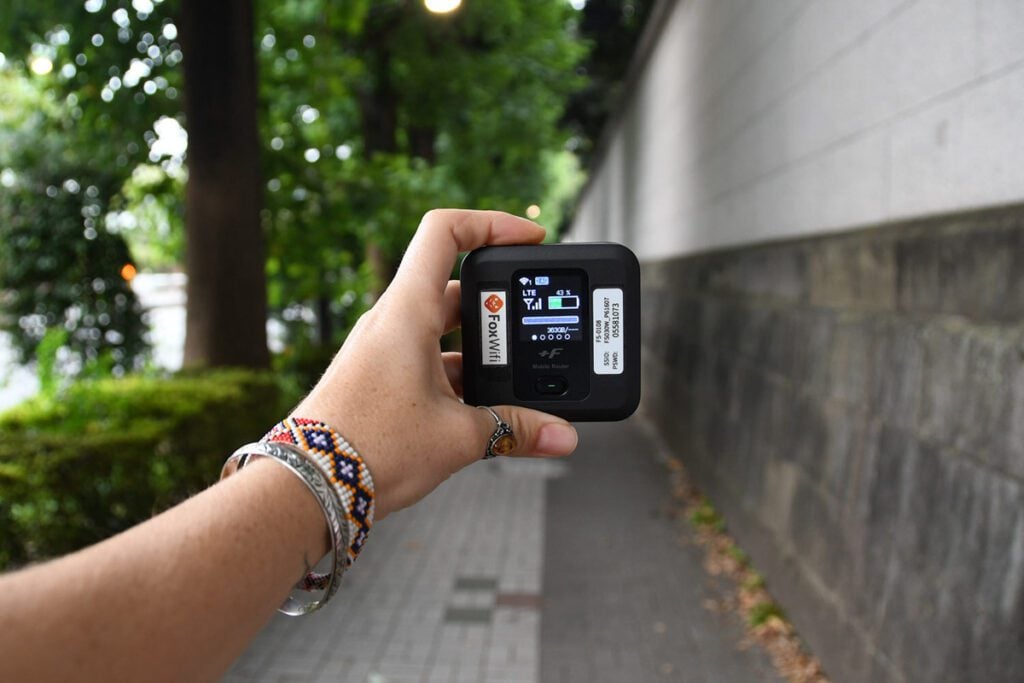
Staying connected to the Internet is very useful when traveling in Japan. And not just because you can post your pretty pictures to Instagram to make all your friends jealous…
Having an Internet connection will make your travels SO much easier when it comes to translating Japanese writing and getting directions for the notoriously confusing train and metro systems.
Trust me, having translating and navigating abilities in Japan is an absolute LIFESAVER.
The two best ways to stay connected is with a SIM card or via a hotspot. The best option is going to totally depend on your needs and budget, and we’ve compared them here so you can choose the best one for you.
27. Convenience store culture is a thing
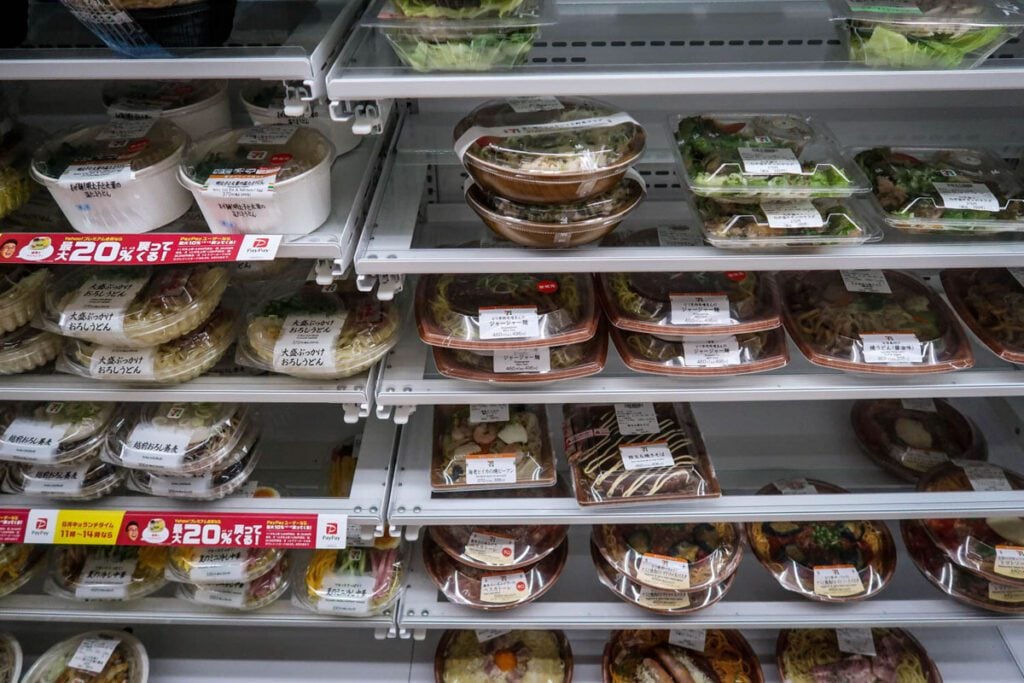
Convenience stores are a big deal in Japan.
And the food options in Japanese convenience stores are much larger — and less sketchy — than in most other places around the world. I mean, I would NEVER get sushi from a convenience store in the U.S., but I definitely did just that in Japan. And it was good!
You can literally eat breakfast, lunch, and dinner (and all your snacks too!) from convenience stores. The most popular chains are 7-Eleven, Lawsons, and Family Mart, and you can find them on just about every city block. No joke.
I will say that at the end of the day, the food you’ll find — while good — is still processed, packaged food. Some people claim they would live off of convenience store food in Japan. I am not one of those people!
I did enjoy it in moderation, and loved being able to try some super quirky treats, like Sugar Butter Sand Tree Cookies , which are weirdly delicious and familiar-tasting!
28. Don’t expect to eat lots of fresh fruits & veggies
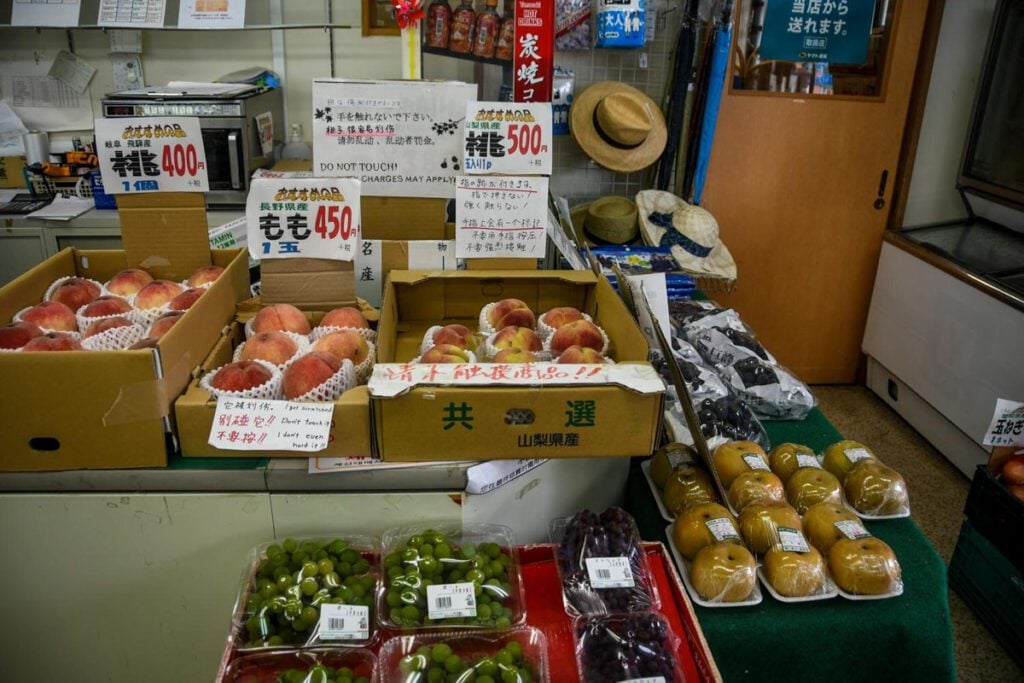
It might be good for some travelers to know that you should be prepared to go without a ton of fresh veggies and fruits for a while. We usually eat lots and lots of fresh vegetables and fruits, so we felt a bit “heavy/bloated” during our time in Japan.
You’ll find some vegetables cooked or fried in your meals or a shredded cabbage “salad” on the side, but not too much more than that. And fresh fruit is pretty expensive, so it’s more of a treat than a typical snack.
We had been living in Bali for 3 months before our trip to Japan, where our daily diet consisted of giant fresh salads and smoothie bowls. Let’s just say that Japan goes a lot heavier on the rice, noodles, meats and seafood than on fresh veg!
If you don’t eat that much fresh produce regularly, you might not notice too much of a difference.
Tip: Also, while convenience stores are great, and just that — super convenient! — I found it hard to find healthy snacking options. Next time I travel to Japan, I’ll pack some dried fruit (not covered in sugar), nuts, protein bars, etc.
29. Get a pre-paid transport card on the app
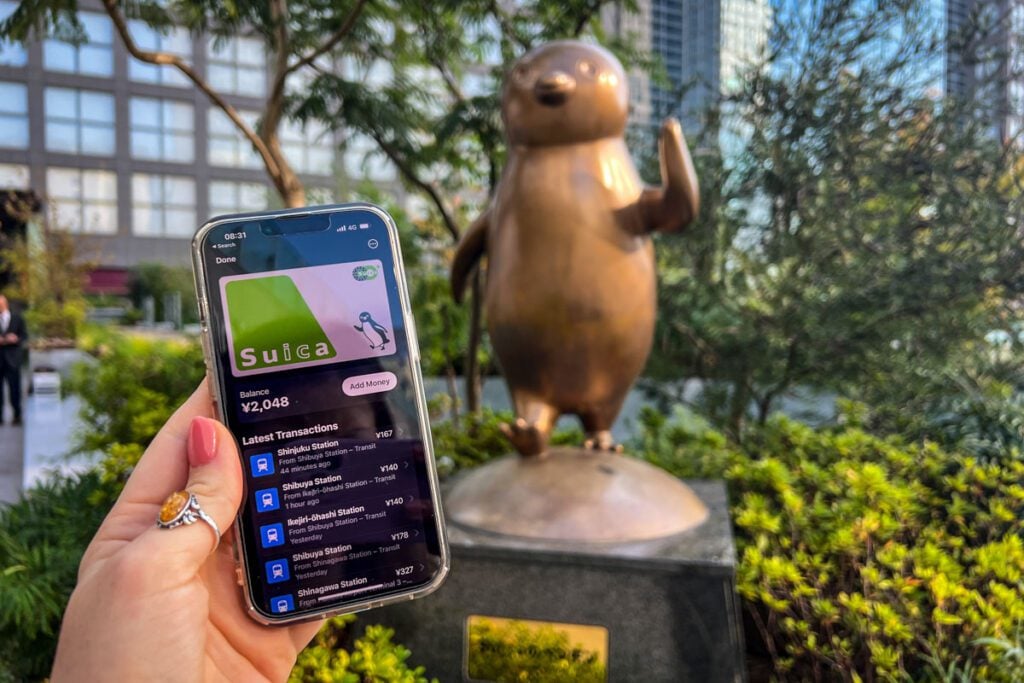
These are essentially the metro cards in Japan ( Suica is for Tokyo and the surrounding area, and ICOCA is for Kyoto/Osaka and the greater Kansai region).
They will save you money on each trip , and are more convenient than having to purchase a ticket each time.
Due to a shortage of physical cards, you are now required to get an app on your phone . Simply tap on and off, eliminating the hassle of purchasing individual tickets. Note that Visa isn’t accepted, so rely on Apple Pay, Mastercard, or American Express for top-ups.
You can use your card for purchases in convenience stores, which is handy when you don’t have cash.
30. Do pack light for Japan
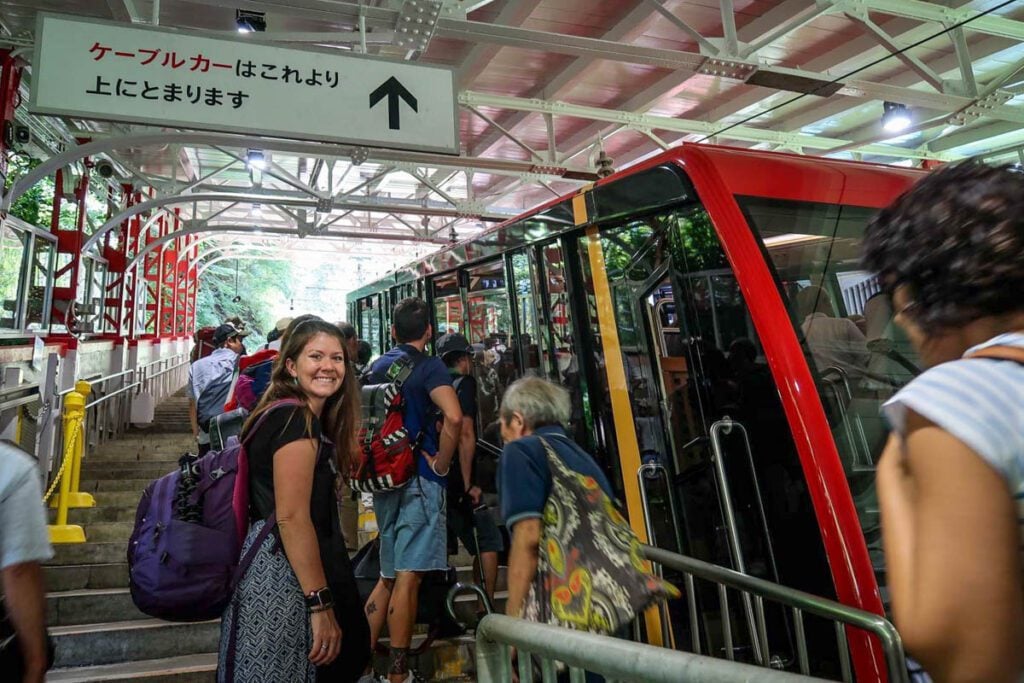
We actually broke this rule, as we had been living in Asia for a year and were in the midst of bringing all our stuff back to the U.S.
But trust me when I say that carrying big backpacks or suitcases through crowded metros, trains and intersections is NOT fun.
We found a luggage transfer service that was able to send the luggage we didn’t need from Osaka to our hotel in Tokyo and store it for us. It was super simple and cheap! I’m sure there are more services out there, but it was a little hard to find when we were searching.
Before you leave, check out these super helpful guides full of packing hacks and tips for traveling in Japan that you won’t find anywhere else:
- Our Japan packing guide lists all the essentials (many of which you might not think about), as well as what you should NOT pack for a trip to Japan.
- This article on what to wear in Japan will help you create a perfect capsule wardrobe for every season and let you in on some cultural taboos so you can be sure to dress appropriately.
- With this FREE Japan packing list PDF download , we’ll send checklists straight to your inbox for everything from clothing and toiletries (for both women and men!) to what shoes to pack and extra stuff you may want to have on-hand just in case. Click the image below to get your free copy!

31. Bring comfortable walking shoes
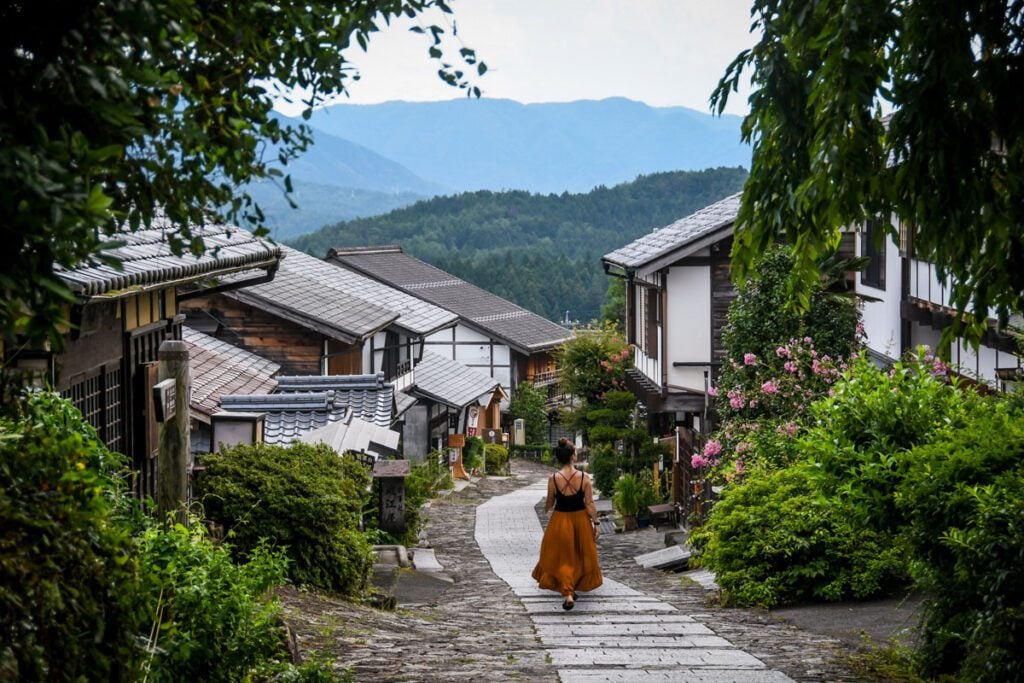
When people say you’ll be walking a lot in Japan, they ain’t lying! We walked an average of 10 miles (16 km) each day, so comfortable shoes are a MUST.
Psst! We have a list of must-see landmarks in Japan that’s sure to give you some inspiration for your itinerary!
32. Know about cover charges at Izakayas
Even though you’re not expected to pay gratuity in izakayas, it’s good to know that many establishments charge what’s called a otōshidai, or a “cover charge”.
Sometimes you’ll be given a small (aka TINY!) dish, otōshi , for which the charge is attributed on your bill. However, it’s really just an extra fee for the seat you are occupying.
Usually it’ll be between 200 – 500 yen. It’s good to expect this so you’re not confused when your final bill comes.
33. Don’t try to split the check
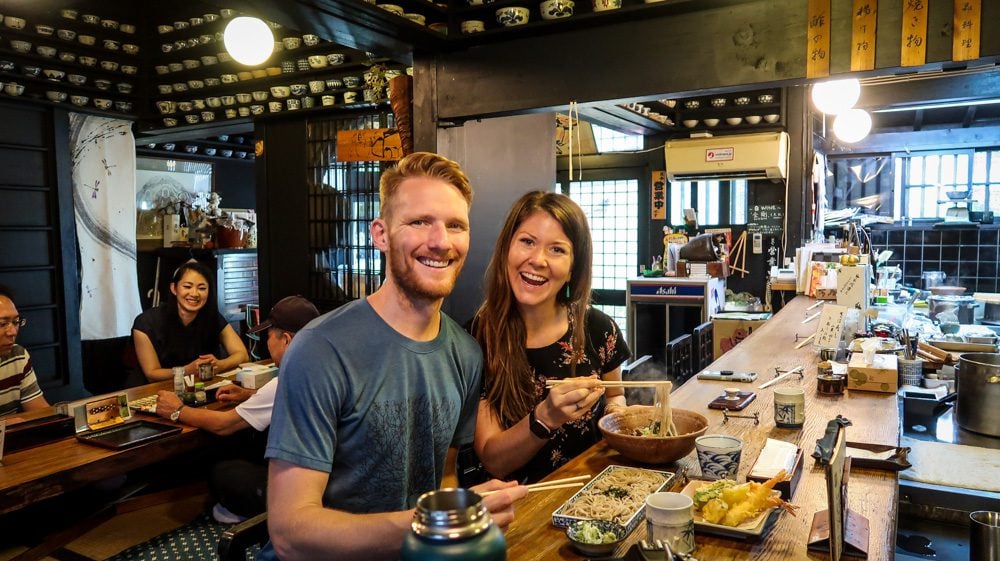
Sometimes when we’re traveling on a budget, we like to split one large meal. Often times, we don’t feel the need to order two full entrees, plus, it cuts our food costs in half.
However, this is usually considered rude in Japan since seating is often limited and you are taking up a spot in the restaurant.
So for instance, it would be frowned upon for two people to go into a ramen shop at a busy hour, and only order one bowl of soup. If one party doesn’t feel like eating, it would be best to wait outside (I know, I know!).
An exception to this would be if you go at an off-hour, say 3 in the afternoon, when a restaurant is less busy. You can ask if it’s okay to split one meal.
We did this once at a restaurant where they served large seafood dishes. The restaurant was pretty much empty in the middle of the afternoon and we just wanted a light meal, not 2 huge entrees. They said it was fine, but I wouldn’t have done this at a busy time of day.
Note: When we say this, we don’t mean you can’t try each other’s meals — we did this ALL the time — and find it the best way to taste as many dishes as possible.
34. Know you can’t see/do everything …
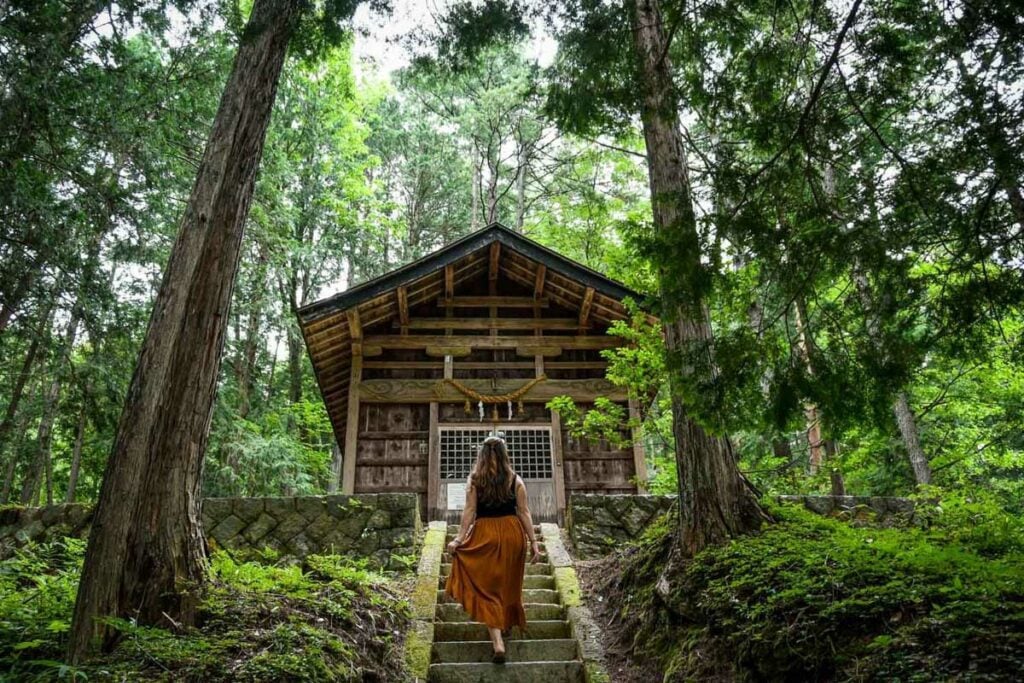
This can be a hard one to come to terms with, especially when you see all sorts of posts and advice. It can honestly get overwhelming (been there!). Just know that you’ll need to narrow down and prioritize the things you really want to do.
If you don’t get to everything — you likely won’t, there are ENDLESS cool things to do in Japan — you can always come back for a second, third, seventh visit down the road.
Need help deciding how long to plan your trip for? Our guide to how many days to spend in Japan will help you figure out how much time you need based on what you want to do.
35. Planning is your friend in Japan
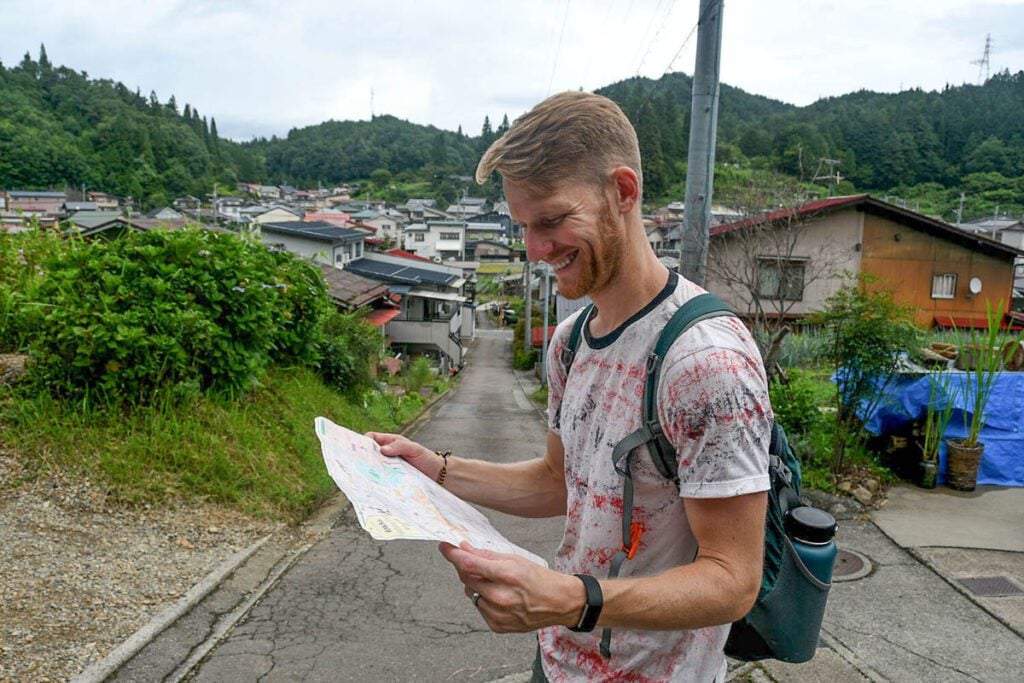
We usually love to travel with a lot of room for flexibility. However, unless you’ve got a lot of time to travel around Japan, planning your route and accommodation in advance is going to help you maximize your time.
Add in some “flexible” time where you can just wander or relax, but our advice would be to come with a pretty solid plan (even if you don’t usually travel this way).
Be sure to check out our ultimate Japan planning guide to help prepare for your trip!
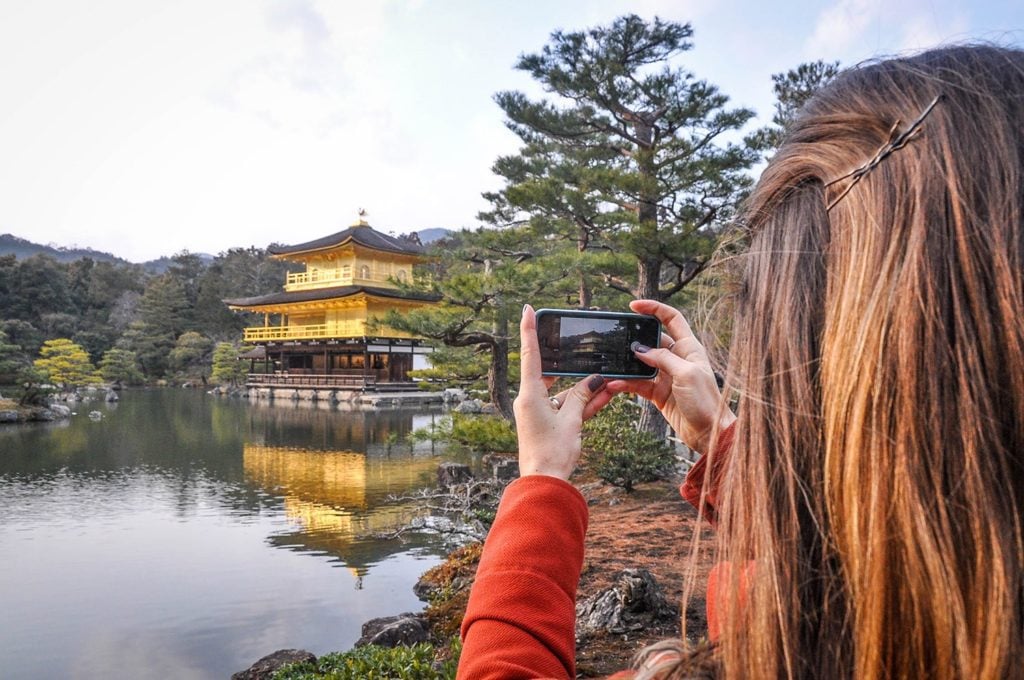
Japan Trip Planner: How to Plan Your First Trip to Japan
This information-packed Japan trip planner has the answers to all your questions. Find out the best places to visit, which Japanese foods to try, and how to ride the bullet trains. All the research is done for you to assist in planning a trip to Japan.
More resources for traveling in Japan
We have TONS of resources on travel in Japan and destinations throughout the country. Check out our Ultimate Japan Travel Guide for all the answers to your most burning questions, or read some of our favorite articles below!
- Best Time to Visit Japan: When to Go & When to Avoid
- Japan Rail Pass: Where to Buy & Is It Worthwhile?
- Renting a Car in Japan: Essential Driving Tips You Need to Know!
- Japan Travel Cost: Exactly How Much is a Trip to Japan?
- Japan on a Budget: Money-Saving Tips + Free Things to Do
- One Week in Japan: Best Itinerary for Your First Visit
- Japan Pocket Wifi vs. Japanese SIM Card: Review & Comparison
- Best Japan Travel Apps
- Foods to Eat in Japan: Guide to Japanese Cuisine
- Helpful Japanese Words & Phrases to Know for Traveling in Japan
Save this article to Pinterest for later!
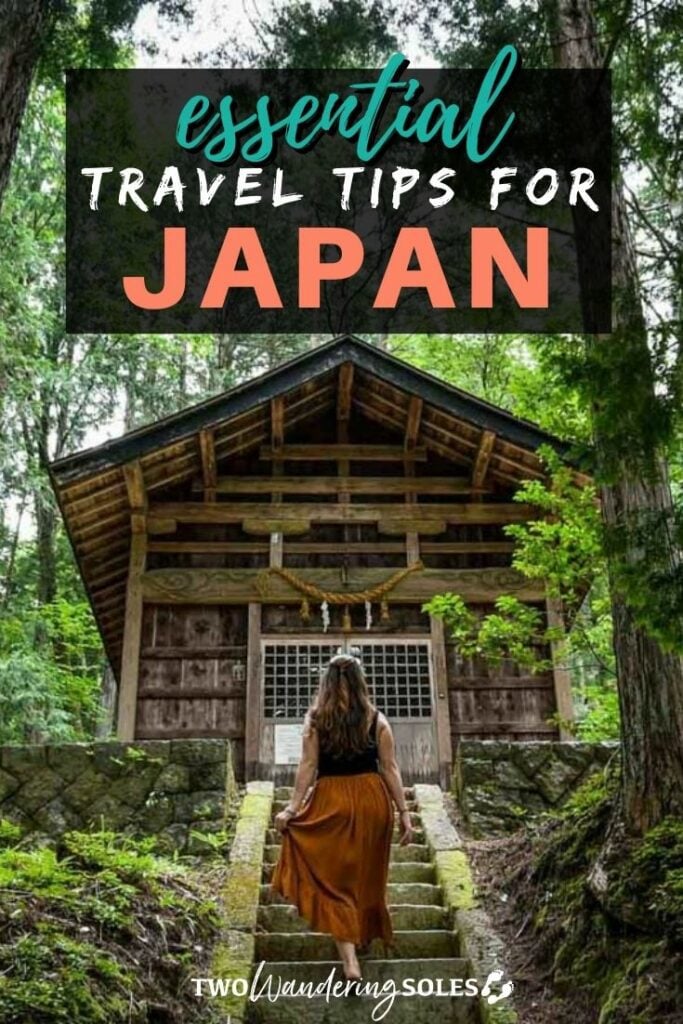
We want to hear from you!
Are any of these tips for visiting Japan surprising to you? Do you have any more Japan travel tips you think we missed? Let us know in the comments below!
Leave a Reply Cancel reply
Your email address will not be published. Required fields are marked *
Save my name, email, and website in this browser for the next time I comment.

Traveling to Japan for the First Time: Planning a 1-2 Week Trip Making your first trip to Japan an awesome one
May 8, 2012 • words written by Koichi • Art by Aya Francisco
Traveling to Japan for the first time can be overwhelming. I understand! There's a lot to see and do. That's why I put together a "first-timers" Japan travel itinerary, built on my 20+ years of traveling to and from Japan.
This sample trip is for people heading to Japan for 1 to 2 weeks (which seems like the standard visit time for most people). Of course, there are so many things to see in Japan besides those featured on this trip itinerary. That's why I broke the travel plan into a 2 week stint so you can customize your vacation, removing and adding things as necessary.
That said, I hope this is helpful to those of you visiting Japan for the first time.
Things To Know
There are a few important things to know that have nothing to do with the actual places. They are:
Whether you travel to Japan for one week or one-point-five weeks or two weeks, the general route stays the same. You'll do Tokyo area, then Kyoto, then Nara, then Koya, and then back to Tokyo. Throughout the route, I'll mark things as "optional" as well. If you're only staying a week, I'd recommend cutting out these things (unless you really want to go to them, then cut something else out). If you're staying for two weeks, you should be able to go to all of these places, and maybe even diverge off to other places. In fact, I highly encourage this! Go where you want – this route is merely a suggestion.
Also keep in mind that I'm just going to be providing locations. You'll have to do your own research as to how to get to them. Google and Google Maps helps a lot with this. I believe in you.
Whether you stay a week or two weeks, I'd recommend getting the JR Pass . This is like a magical golden ticket that gives you unlimited JR train rides (bullet train too) to anywhere around Japan. Not all things are free (for example, non JR trains as well as most subways), but if you take three rides on the Shinkansen that will usually make it worthwhile. You can get a JR Pass at jrpass.com (where I got my last one). Just be sure to take into account the time change when you schedule your ticket dates. Going to Japan involves traveling through both space and time.
Finding Places To Stay
I don't really cover places to stay in this article, just the places to go to. Finding someplace to stay is up to you, though there are plenty of resources out there that will help you. I recommend hostels for adventurers / students / people with no money (they're fun, cheap, and way less sketchy than other hostels I've been to). Guest houses are also great if you can find them. They tend to be a little cheaper than hotels, but the food / environments are a lot more interesting. And interesting is what you want when you travel to Japan.
Since this is a pretty standard trip, most of the places are going to be pretty bag friendly. I wouldn't bring a ton (lots of hotels have washing machines too), and would definitely recommend a backpack or something with wheels. Don't make the mistake of bringing something you're not comfortable carrying up and down long flights of stairs. You will run into a lot of these getting on and off trains, so if your biceps are tiny, only pack whatever you can lift (preferably less). Also, bring a lightweight duffel bag (or you can buy one) for the optional shopping you can do at the end of your trip.
That being said, let's get started! You have some traveling to plan.
Day 1: Fly Into Tokyo
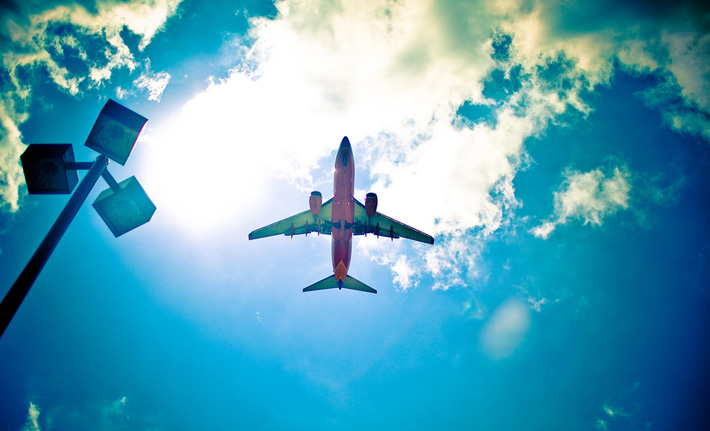
Flying into Tokyo isn't terrible, but it isn't great either. Depending on where you're coming from, you may also be terribly jet lagged. If that's you and you're on the 2-week schedule, you get an extra day to take it easy in Tokyo. Nice. If that's not you, you better be ready to go. No rest for the weary. After getting to the airport, you'll need to go pick up your JR Pass (should be included with your ticket). If your flight comes in too late (and the ticket place is closed) I'd recommend shelling out the $30 or so to go into Tokyo without the JR Pass and get it the next day in the city.
Optional: You can also pick up a 3g hotspot / internet dongle for your computer if you'd like. Finding free wifi in Japan is a huge pain, and getting one of these will pay for itself if you need to do a lot of work, or something.
Once you've gotten your ticket, hop on the JR Narita Express (NEX) to Tokyo. When you get to Tokyo, check into wherever you're staying and scope things out. It's probably evening by now anyways, so do your best to unjetlag yourself and go to bed so you can wake up early.
Day 2, 3, & 4: Tokyo
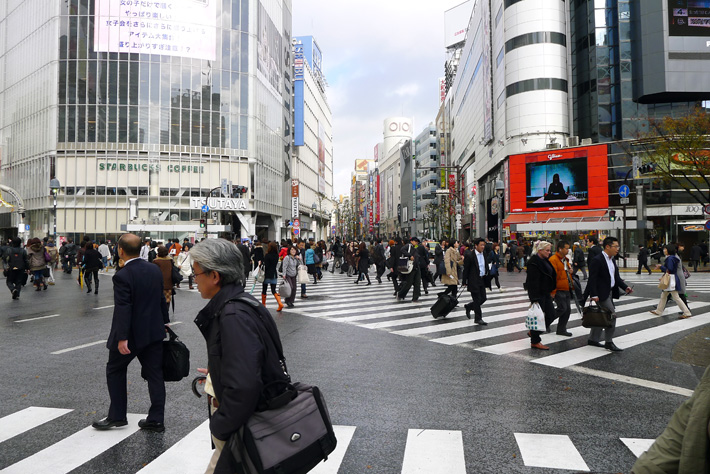
*If you're only staying for one week, cut out days 3 and 4 and then skip to Day 7. Alternatively, you could skip Day 2 as well and choose to do Day 5 or Day 6 (then your Tokyo time will be your shopping time on your way back). If you don't really care about big cities like Tokyo, skipping this section won't be too bad! :)
For the first few days, you'll be exploring Tokyo. So many people. So many things. Hopefully by the end of your Tokyo time you'll feel so tired of it you want to go somewhere nice and peaceful (don't worry, you will!). There are various areas of Tokyo worth visiting, and they're all quite easy to get to via the subway system. As long as you're not hitting it during rush hour, you'll probably have a great time scooting around. Since there are so many different tastes out there, I thought I'd list out the main places worth visiting in Tokyo, and then you can pick and choose what you like. I'll even sort them by areas.
Central Tokyo
Akihabara: This area should be on every nerd's Japan itinerary. It's famous for its electronic shops and otaku culture. So, if you're into either of these, this is a fun place to be. Make sure you look up, too. Lots of multi-story buildings filled with all kinds of weird things. You can spend a while walking around here.
Northern Tokyo:
Asakusa: Asakusa has the feeling of an "old" Tokyo, I think. You can visit the Sensoji (famous Buddhist Temple) and Asakusa Shrine or hit up some of the various shopping lanes.
Ueno Park: Ueno Park is probably one of Japan's most well known parks. Besides being parkish, it's full of museums, shrines, temples, as well as the Ueno Zoo. Definitely the kind of place you fancier folks will enjoy. You can spend a whole day here, if you're into this kind of thing.
Roppongi Hills: Want to see Tokyo from somewhere up high? Come to Roppongi Hills. You can go up into the Mori tower and look down on all those tiny people. Pro Tip: They don't like it when you try to throw pennies off the observation deck. Also worth noting is the Mori Art Museum.
Kappabashi: Do you know how a lot of Japanese food places have fake foods outside showing you what the food looks like? There's a chance they got it at Kappabashi, the kitchen capital of Tokyo. You can buy things for your restaurant, but the best part is the fake food, I think. It's surprisingly expensive, too.
Western Tokyo
Shibuya: Shibuya is just a ward of Tokyo, but it's particularly known for all its fashion and culture. Fashionistas should put it on their Japan itinerary. A lot of shopping can be found here, but there's also the Hachiko Dog Statue as well. Scope it out but come back in the "shopping days" at the end of your trip.
Love Hotel Hill: Technically this is part of Shibuya, but it's worth noting on its own. This is just an area with a lot of love hotels. Pro tip: They won't let three people in at a time, so if you want to check one out as a group, you'll have to break up into pairs or bring a body pillow.
Shinjuku: Shinjuku's kind of the party district, though that may be because of Kabukicho (northeast of Shinjuku Station) which is Tokyo's big red light district. If you're into nightclubs, bars, pachinko, neon, and other ahem things, this will be a place you'll enjoy.
Harajuku: Love crazy outfits? You'll fit in right here. Harajuku is home to Tokyo's teen fashion and cosplay (if you visit on a Sunday). There's also plenty of shopping and crepe stands as well (yum).
Meiji Shrine & Yoyogi Park: These two places are pretty close to each other, so I'm putting them together here too. It's also a good place to go from Harajuku, since you'll use the same train station. The Meiji Shrine is just one of many shrines in Japan, but it's particularly interesting if you're into modern Japanese history. Yoyogi Park, on the other hand, is just a really big park. Both are nice, though, if you're looking to get out of the cement jungle known as Tokyo.
Day 5: Monkey Park, Jigokudani

Have you heard of those Japanese monkeys that hang out in the hot springs? This is one of those places, though depending on the time of year, they may not be spending too much time in the hot springs. I like this place in Winter, but other times are good as well. Summer means baby monkeys, after all. To get here, you'll have to go North of Tokyo to Nagano (Shinkansen it!). From Nagano Station, take Nagano Dentetsu to Yudanaka. From there, you can take a bus to the Kanbayashi Onsen, which has the entrance to the Jigokudani Yaen-Koen. It'll be a 30+ minute walk (depending on how much you stop) to get to the actual monkey area, though you may start seeing monkeys before then if you're lucky. Check out the livecam , too!
If you're going to Jigokudani, I'd maybe recommend heading up here at the end of Day 4 and staying the night in Nagano. There's some interesting things up there too (that's where they did the Winter Olympics in 1998!), so feel free to head up a bit earlier and check things out. Then, the next morning (Day 5) you can head out bright and early to Jigokudani and take your time with the monkeys and possibly hit the onsen. It's a nice place. Then, you can head on back to Tokyo the same night.
Day 6: Toshogu Shrine, Nikko

Nikko is the mausoleum for Tokugawa Ieyasu. Basically, he and his relatives ruled over Japan as Shogun for 250 years (until the Meiji Restoration). That means he got a pretty sweet shrine. There are over a dozen Shinto and Buddhist buildings here, and it's in a very beautiful setting. Need some peace from Tokyo? You'll for sure get it here.
This can be a day trip (it's really close to Tokyo) with some extra time left over. I'd recommend coming here, then either checking out other things in this area or heading straight to Tokyo in the afternoon or evening. Just be sure to give yourself 3-4 hours to travel, so don't leave too late from here. Another option would be to leave the morning of Day 7 and get to Kyoto in the late morning or early afternoon. It's totally up to you.
Day 7 & 8: Kyoto
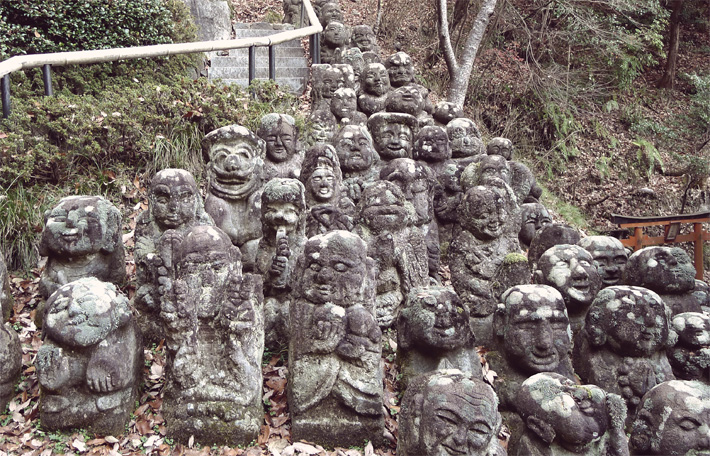
*If you're on the 1-week plan, skip day 8 and go to Nara instead.
Kyoto's going to be your shrine and temple time while visiting Japan. Since it was the place where the emperor lived for over a thousand years, it's full of cool, historical things. Take your pick and enjoy. Also be sure to just walk around at random. You'll run into so many temple, castles, and shrines just by accident. It doesn't hurt to explore, some. Oh, and bring your walking shoes. Things are about to get… walky.
Central Kyoto
Nijo Castle: This was where Tokugawa Ieyasu lived (remember his shrine, up above?). Later it switched to an imperial palace (after the Shogunate went down), and then later opened to the public. It is a UNESCO World Heritage Site, which is supposedly a big deal.
Kyoto Imperial Palace: When the Shogunate was in power, this is where the imperial family lived. You can even take tours in English, here.
Northern Kyoto
Kinkakuji: Also known as the golden pavilion, this is a building covered in gold .
Western Kyoto
Kokedera: Also known as Saihoji, this is another UNESCO World Heritage Site (way to go, Kyoto). This temple is mainly known for its moss, and apparently has over 120 different varieties.
Southern Kyoto
Fushimi Inari Shrine: This shrine is known for its thousand torii gates. They're bright orange and absolutely incredible to walk through. Highly recommended.
Eastern Kyoto

Kiyomizudera: One of the must sees, I think (and also a UNESCO World Heritage Site). This temple is high up on a hill and has a balcony that offers an awesome view.
Higashiyama District: You'll run into this on your way up to Kiyomizudera, actually. Think of this area as a "historic shopping district." Kind of touristy, but a lot of fun nonetheless. Grab something to take home!
Sanjusangendo: The building itself it's amazing, but the inside is pretty remarkable. There are 1001 statues of Kannon in here, which is… well… kinda remarkable.
Gion: Like Geisha? this is Kyoto's Geisha District. You will have to try pretty hard to get in to see a geiko, though, but good luck trying (hint: apparently some travel agencies will hook you up if you've got the yen).
Day 9: Nara
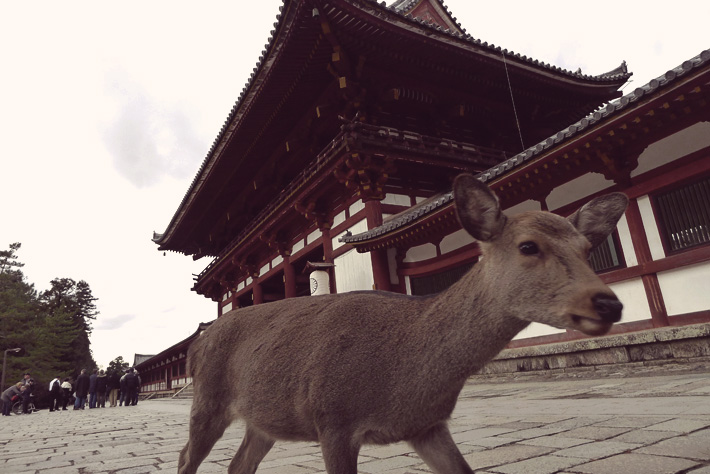
You can leave the morning of Day 9 or leave the evening of Day 10 and spend the night in Nara. Either is fine. You can even spend the night in Nara on Day 9 as well then move on early in the morning of Day 10. It all depends on how much you like temples and Deer.
While there's some neat temples, shrines, castles, and other similar things here in Nara, I'd say you're coming for deer. The deer here are pretty tame and will actually attack you if you have food (kinda fun to run from deer). Don't worry, they have their horns cut off, though (it's a religious thing), so you won't be stabbed through, most likely.
Places you'll want to go in Nara:
- Todaiji Temple: Largest wooden structure in the world with Japan's largest Buddha statues inside. Basically, think super sized. Definitely one of the best places to visit in Nara.
- Nara Park: Has a lot of deer. Go buy deer food, the deer will thank you.
- Kofukuji Temple: Basically a big temple. Very pretty, though.
- Nara National Museum: If you're interested in Japanese Buddhist Art, this will be a fun place for you. The building is also surrounded by ferocious, wild deer.
Consider this a day to walk around but not as much as when you were in Kyoto. Nara's a lot like Kyoto in a lot of ways, though, so I'd recommend mainly hitting up the deer and then hitting up Todaiji Temple. Depending on how worn out you are on temples, though, you can stay here longer or shorter, deciding where you stay this night based off of that.
Day 10: Mt. Koya aka Koyasan
You'll want to make sure you leave early this day, whether you're leaving from Kyoto or Nara. You have a ways to go to get to Koya-san, quite possibly one of the most beautiful places in Japan (just my opinion). This might be one of the best places you go in your Japan travels.
There are a hundred temples here, many of which you can stay the night at. When you spend the night, you get the best vegetarian meal you've ever had (guaranteed), a room to stay in, and even the option to wake up (really) early to go watch the monks do their morning rituals. It's so peaceful, a lot of fun, and one of my favorite places on earth. You'll want to go to the Koyasan website for more information on lodging.
I'd recommend getting here as early as you can on Day 10, dropping off your things at the place you're staying, then just walk around. You'll be able to fill a good amount of time just exploring. The best place to walk, though? Probably the giant cemetery, which also happens to be the largest in Japan. Although some may find a graveyard creepy, it really is quite peaceful.
This, I think, will be one of your best days in Japan, so don't skimp out on it if possible! Just be sure to get back to your temple in time for dinner.
Day 11: Travel Day / Osaka / Fuji

*If you're on the 1-week schedule, you'll need to get back to Tokyo. You're running out of days.
Day 11 is mostly travel. You'll want to leave Koya either late morning or early afternoon, depending on where you're going next. If you like shopping a lot, you'll want to get back to Tokyo on this day.
If you don't need the extra time, consider stopping in Osaka (it's on the way from Koyasan). You can visit the Glico Man, Osaka Tower, play some Pachinko, and eat some Takoyaki / Okonomiyaki (both famous in Osaka). It's a bit different than Tokyo, but it's still a big city. I'll leave this one up to you, though. Osaka's a lot of fun to just walk around and check out.
Alternatively, you could stop at Mt. Fuji on the way back too. I recommend the amusement park Fuji-Q Highland over climbing the mountain itself (it looks better from afar, you'll have to trust me on this one) if you do this. Definitely don't miss the horror house there, it's top notch.
Whatever you end up doing, you're reaching the end of your trip. Just make sure you're back in Tokyo in time to do your shopping before you get on the airplane to leave. Of course, if you don't shop, then you have more time to go to more places. If you do shop, get back to Tokyo.
Day 12 & 13: Shopping In Tokyo / Last Minute Visits

Hopefully you scoped out all the places you wanted to shop at, because this is your shopping time. Get the things you want for yourself and for your friends / relatives. Fill up that duffel bag you brought / bought and have fun. This is also a good time to just go around to the places you missed.
Either way, it's good to be back in Tokyo a day or two before your flight leaves, that way you won't miss your flight (unless you want to "accidentally" miss it, wink wink nudge nudge).
Day 14: Go Home
Hope you had traveling to Japan. This is only your first trip, though. Now that you've gotten all the normal / main stuff out of the way, your next trip can be filled with strange, exciting places. Be sure to check out TofuguTV for some of those, and keep reading Tofugu for more in the future. There are certainly many, many "off-the-beaten-track" locations worth visiting, but we'll save that for next time !
Bucket List Seekers
Extraordinary Travel for Ordinary Couples
Japan , Travel Guides · May 12, 2023
The Ultimate Japan Travel Guide for First Timers: How to Plan Your Trip!
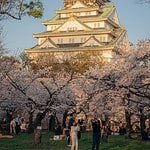
Planning a trip to Japan at least once in your lifetime is something that should be on every travelers bucket list . Whether it’s your first time in Japan , or perhaps it’s been a while since you visited, our Japan Travel Guide details everything you need to know before visiting Japan!
Japan is a country known for its rich history, stunning mountains and beaches, great skiing, futuristic mega cities, and has a food scene that will absolutely blow your mind !
After visiting Japan for the first time back in 2018, we absolutely fell in love with the country . We’ve since been back for several more visits and have had the opportunity to see this beautiful country during Spring, Autumn , and Winter!
There are so many beautiful places to visit in Japan , from the well-known tourist destinations like Tokyo or Kyoto to some truly under-rated hidden gems .
Most visitors are pleasantly surprised at how easy it is to travel in Japan compared with other countries. But if it’s your first time visiting, we recommend focusing your itinerary on these 5 destinations .
So, if you’re on the fence about whether to go to Japan, we say absolutely do it sooner rather than later, because Japan is becoming more popular than ever . We’ve got a ton of handy Japan travel tips below to help you plan your own itinerary!
Let’s dive right in…
Visiting Japan at least once is an absolute must-do on anyone’s Bucket List!
Did You Know? We use ads to help pay the bills so we can continue to publish free travel advice. We also have affiliate partnerships, so when you click through and make a purchase or book your stay from one of our blog posts, we may receive a small commission (at no extra cost to you). Thank you for supporting Bucket List Seekers! Read our Disclosure Policy for more details.

In This Post:
Planning a Trip to Japan
Should you book a tour or travel around japan independently.
This is a question I often get asked. Traveling in Japan is actually very easy and there is no need to book a tour . The public transport system is efficient and easy to navigate , and there are trains that will get you to all the best destinations you would want to visit in Japan.
In saying that, if you’re the type of person who prefers an itinerary all laid out for you and have someone else take care of all the logistics, then absolutely book a guided tour (or follow our itinerary ). Just be aware that you will pay a lot more to visit Japan on a guided tour. And Japan is already an expensive country to visit!
But if you’re happy to save some cash and plan your own trip to Japan , we have a ton of Japan travel blog articles , including itineraries, city guides, first time travel tips, and more, to help you along the way.
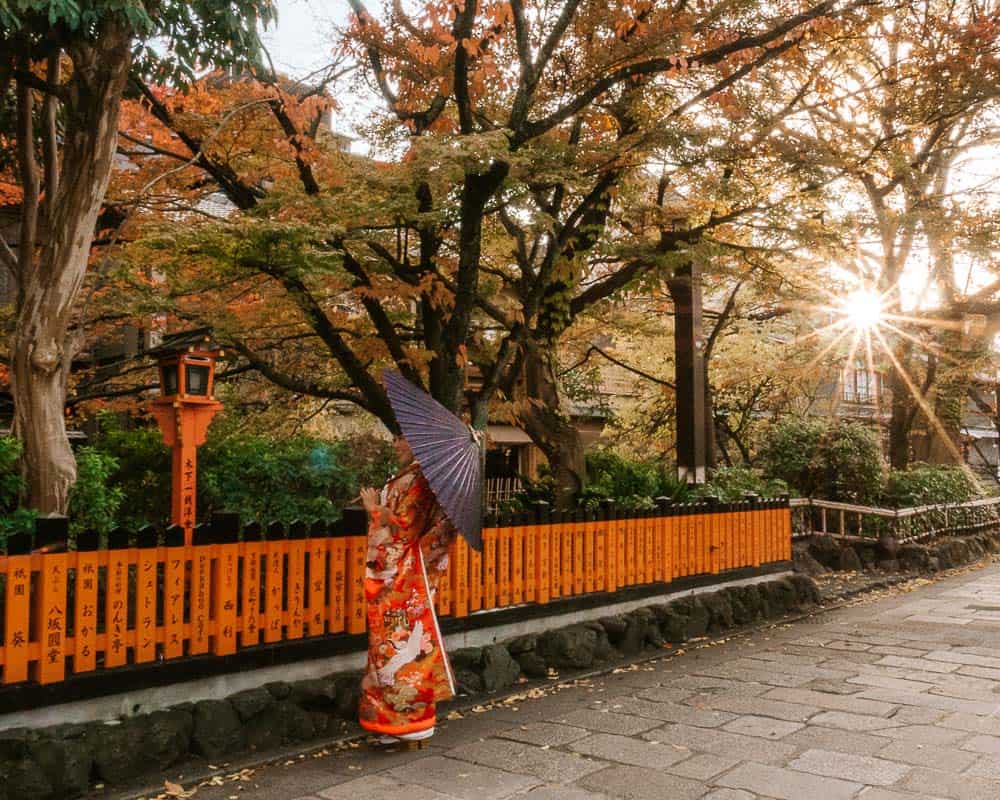
Things to Book Before You Travel to Japan
There are a number of things to prepare before going to Japan . Being organised before you arrive is essential as Japan can be a chaotic place, and with English not being the first language , it can be a stressful experience if you’re not organised before you arrive.
To help you plan a trip to Japan, we’ve made a list of handy resources and things we recommend you book before you arrive:
- Book Flights: We use Skyscanner to search and compare the best flights deals to Japan and get price alerts.
- Book Hotels: Accommodation in Japan can book up quickly, especially during peak season (spring and autumn). We book all our accommodation through Booking.com to take advantage of their Best Price Guarantee.
- Get a Japan Rail Pass: If you plan to travel on the Shinkansen (bullet train) in Japan, then we recommend purchasing a Japan Rail Pass at least 4 weeks before your departure.
- Pick up a contactless public transport card: You’ll need one of these to tap on tap-off on the metro, buses and other public transport systems around Japan. We recommend purchasing a SUICA card before you arrive (pick up in Tokyo).
- Book an airport transfer: Due to the language barrier, it can often be overwhelming dealing with taxis or public transport when you first arrive in Japan, if you don’t feel confident then we recommend booking a private transfer to get you from the airport to your accommodation.
- Book day tour and attraction tickets: We recommend using either Klook or Viator to book day tours and attraction tickets before you go to Japan. This will ensure you don’t miss out on the best tours, and you won’t have to wait in line for the popular tourist attractions in Japan.
- Purchase WiFi or Sim Card: You will use your phone a lot when navigating your way around Japan. Make sure you’re organized by purchasing a Pocket WiFi with unlimited data or a Japan SIM Card that will help you save money on roaming costs.
- Get travel insurance: As with anywhere you visit in the world, having travel insurance is a must. We recommend Safety Wing for comprehensive worldwide insurance.
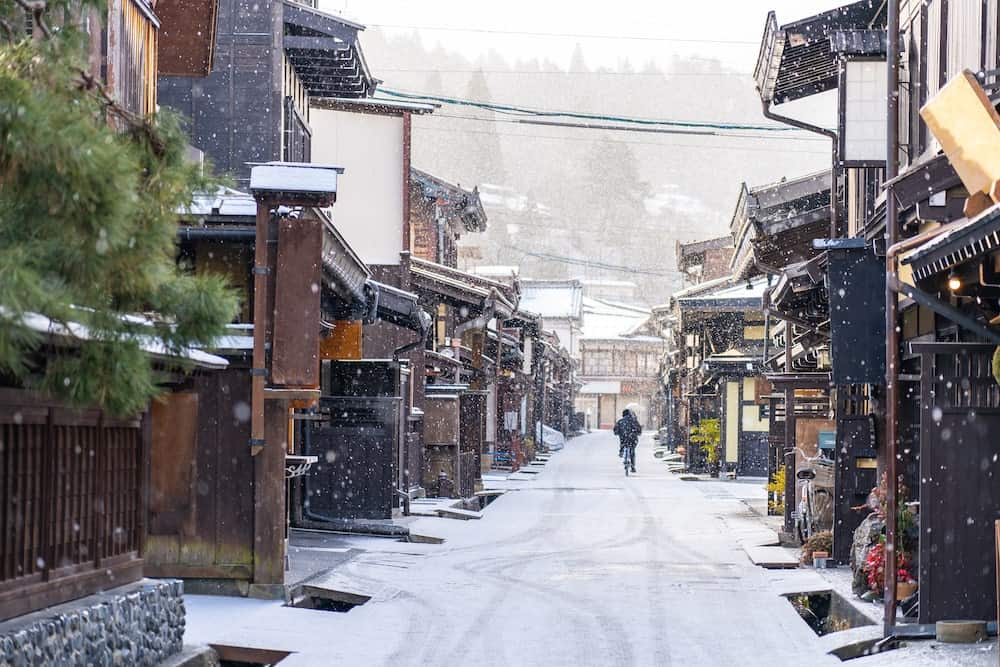
When is the Best Time to Visit Japan?
If you’re wondering when is the best time of year to visit Japan – in truth, there is not one time of the year that really stands out above all the rest. Japan has four distinct seasons , each with its own unique climate, scenery, and cultural events. The best time to go to Japan depends on your interests and preferences.
Spring and autumn are popular for gardens, cultural events and beautiful scenery, summer is great for outdoor activities, and winter is ideal for winter sports and hot springs. Here’s a brief explanation of the four seasons in Japan to help you work out which is the best time of year to visit Japan for you!
Spring (March to May)
Spring is a popular time to visit Japan. The weather is mild, and there are many festivals and events celebrating the season. Some people recommend late March or Early April as the best month to go to Japan, as this is usually when cherry blossoms are in full bloom . However, spring is a very busy time for tourism, so expect crowds and higher prices .
Summer (June to August)
Summer in Japan can be hot and humid , especially in cities like Tokyo. However, there are many outdoor activities and events , such as fireworks displays and traditional festivals like Obon. The mountainous areas of Japan are also popular for hiking and enjoying nature.
In our opinion, Summer is probably not the best time to visit Japan, as the weather and monsoon season can be somewhat unpredictable , but that depends entirely on what you want to do.
Autumn (September to November)
Autumn is another popular season for tourism, with cooler temperatures and stunning fall foliage . There are also many cultural events and festivals during this time, such as the Autumn Leaves Festival in Kyoto. It’s a good time for outdoor activities like hiking and visiting hot springs.
We personally loved Autumn in Japan, due to there being less tourists than in Spring . In our opinion, the best month to visit Japan would be late October or early November.
Read More: 25 Stunning Photos that will Inspire You to Book a Trip to Japan in Autumn
Winter (December to February)
Winter in Japan can be cold and snowy, but if you’re into winter sports like skiing and snowboarding , then you might think that is the best time to travel to Japan. There are many winter festivals, such as the Sapporo Snow Festival, where you can see beautiful ice sculptures. The hot springs (onsen) are also a popular winter activity.

How Many Days in Japan?
One question I often get asked when someone is thinking about visiting Japan is, “ how many days in Japan is long enough to see everything? ”
This is somewhat of a loaded question because Japan is a huge country. There are so many places to visit in Japan, from the major tourist hotspots of Tokyo, Kyoto , and Hiroshima, to the slightly more off-the-beaten path destinations like Hakone , Kanazawa or Okinawa.
How many days you choose to spend in Japan depends entirely on how much you want to see, and how fast you want to travel around.
Most visitors generally tend to spend between 7 to 14 days in Japan . We have itineraries that cover both 7 days and 14 days in Japan.
The amount of time that most visitors choose to visit Japan generally coincides with the days offered on a Japan Rail Pass to get the maximum value out of the pass. You can purchase a Japan Rail Pass with either a 7-day, 14-day, or 21-day option.
7 Days in Japan
Spending 7 days in Japan is the minimum time we would recommend . This is enough time to get a taster of what travel in Japan is like, but not enough to venture further than the regular tourist triangle.
If you’re planning a trip to Japan, and you only have 7 days to fit in as much as possible, then we recommend an itinerary that looks something like this:
- Tokyo: 3 days
- Kyoto: 2 days
- Hiroshima: 1 day
- Osaka: 1 day
This itinerary will ensure you experience some incredible sights and the best cities to visit in Japan, following the well-trodden tourist path . However, it will not really allow you to get off the beaten path at all.
Be aware that this itinerary will only work for people who are okay with being on the move constantly, as it’s a lot to squeeze into 7 days and you won’t have a great deal of downtime.
Read More: Japan 7 Day Itinerary: The Best Route From Tokyo to Kyoto
14 Days in Japan
The best Japan travel advice we could give anyone is, if you have the time, then we would highly recommend stretching your time in Japan to at least 14 days .
If it’s your first time in Japan then planning to spend 14 days is the ideal amount of time, in our opinion. 14 days will allow you to tick off these must-see places in Japan, plus extend your itinerary a little further and experience some smaller towns and off-the-beaten-path gems .
A 14-day itinerary would also be a little less hectic than 7 days , and you can factor in some downtime in a few destinations. We would recommend staying mostly on the island of Honshu (the main island of Japan) and covering the following destinations:
- Tokyo: 4 days
- Nikko: 1 day
- Kanazawa/Takayama: 1-2 days
- Kyoto: 3-4 days
- Hiroshima & Miyajima: 1-2 days
- Okayama/Himeji: 1 day
- Osaka: 1-2 days
- Hakone: 1-2 days
21 Days in Japan
However, if you’re lucky enough to have 21 days to spend in Japan, then you can really get to know this beautiful country. This is enough time to allow you to venture further afield and tick off more of these Japan bucket list items. We would recommend heading to Okinawa in the south, or Hokkaido in the north (or both!).
Start by following the 14-day itinerary above, so you get to see all the major tourist attractions in Japan, then during your third week, you could either:
- Fly from Tokyo to Okinawa to experience the crystal-clear waters, white sands, incredible beach resorts, and hiking opportunities; or
- Catch the Shinkansen further north of Tokyo to Sendai (2 days), Hokodate (2 days), and Sapporo (2-3 days) to explore the mountains and forests, traditional Japanese way of living, and incredible food scene.
Alternatively, you could extend the above 14-day itinerary and add some stops at some of these unique places to visit in Japan .

Trip to Japan Cost
A lot of people tend to think that Japan is really expensive. And yes, it can be. But there are also many affordable options available for budget travellers too.
There are many different styles of accommodation in Japan, making it a great country for both budget travellers and those seeking a little more comfort .
On the budget side, you’ll find loads of hostels, doom rooms, capsule hotels, budget Airbnbs, and local family-run ryokans/guesthouses with traditional style tatami-floor bedding.
If you have a little more to spend, 4 or 5-star hotels with buffet breakfast, and up-market ryokans with western-style bedding are a plus. Many hotels in the larger densely populated cities such as Tokyo, Osaka, or Kyoto have much smaller rooms compared with other countries, even the 5-star hotels. This is mainly due to the space factor.
Japan Rail offers both standard and first-class carriages. Standard class on most trains is exceptionally clean and comfortable and offers great value for budget travellers.
Here is a rough estimate of the cost of a few common expenses when traveling in Japan:
- A local beer = $6
- A bowl of ramen or soba noodles = $9
- A Kaiseki meal experience = $100+
- A night in a capsule hotel in Tokyo = $50-$70
- A night in a traditional Ryokan with tatami bedding = $20-$40
- A night in a 3-4 star boutique hotel or Ryokan = $150-300
- A night in a 5-star luxury hotel in Tokyo (e.g. Tokyo Hilton) = $450+
- Entrance fees to temples, museums, or gardens = many are free, but some of the more popular ones charge between $5 to $18.
Ideally, we would recommend the below budget as a guide per day for a couple (not including flights), depending on your style of travel and taste in accommodation. This budget breakdown includes accommodation, transport between and around the major destinations, activities, and food.
Just be aware that accommodation prices tend to be higher in Tokyo and Kyoto compared with other destinations in Japan, so the following costs are an “average”.
As an example, we paid around $450 a night for a 5 star hotel in Tokyo, but then only paid $185 for a night in a 5 star hotel in Kanazawa. This is one reason why we recommend opting for a combination of the big cities plus some lesser-frequented tourist destinations during your itinerary to keep costs down.
Budget ($100 – $180 per day)
This average daily budget would be enough for t wo people for accommodation in hostels, capsule hotels, Airbnbs, and local family-run ryokans/guesthouses with traditional style tatami-floor bedding. This daily cost would also cover casual meals in local cafes , such as ramen or sushi, or street food, plus entrance fees to most tourist attractions. This budget does not necessarily factor in additional costs for any day tours, which can be quite costly.
Mid-Range ($300 – $500 per day)
This average daily budget factors in the cost for two people to stay in 3 or 4 star hotels , Airbnbs, or ryokans with western-style bedding. It also includes transport in standard train carriages , and a combination of casual meals, plus a few splurge meals at nice restaurants, entrance fees to tourist attractions and the occasional guided day tour.
Luxury ($600+ per day)
If you’re willing to budget a higher amount, then the sky’s the limit really. But I would recommend $600 day as the minimum is what you can expect to pay for 4-5 star hotels, transport in first class train carriages , entrance to tourist attractions, plus hotel buffet breakfasts, and meals at upmarket restaurants.
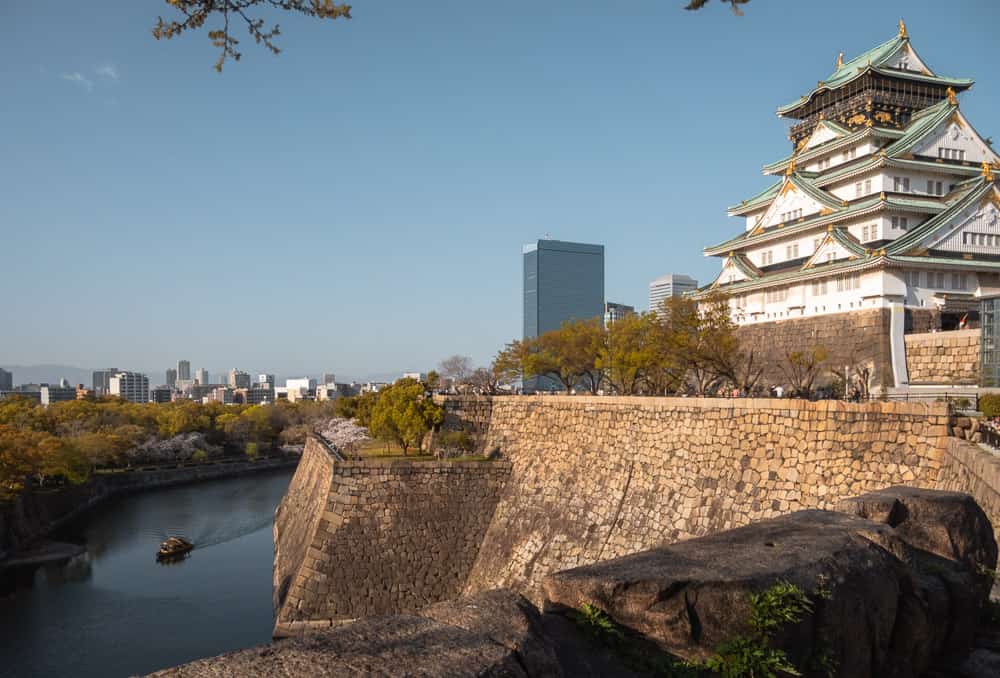
Getting Around Japan
If it’s your first time in Japan , travelling by train is the most common and easiest way to navigate around Japan. Japan’s railway networks are extensive, with trains running frequently and on time.
There are local trains that stop at every station, limited express trains, and shinkansen (bullet trains), which are high-speed trains that can travel up to 320 km/h (200 mph).
Most visitors to Japan purchase a Japan Rail Pass before arriving. This allows holders unlimited travel on the Japan Rail network which is the most widely used train network in Japan. There are other train networks that you can’t use the Japan Rail Pass on, but most tourist destinations are generally well connected by Japan Rail.
A Japan Rail Pass can be purchased for a set period – either 7, 14, or 21 days. The Japan Rail Pass can only be purchased before arriving in the country. We recommend purchasing through Klook at least 4 weeks before your trip. After arriving in Japan, you’ll have to exchange your pre-paid coupon for a Japan Rail Pass and then you can make seat reservations for your trip.
We love a good road trip. It’s one of our favourite ways to see a country because it gives you a little more independence to travel at your own pace without having to rely on public transport.
However, driving in Japan is not the most common way to get around for first time visitors because it can be quite a challenge. Japan has some unique traffic rules that may be different from what you’re used to in your home country.
In Japan they drive on the left-hand side of the road. Most road signs in Japan are written in Japanese, so it can be difficult to navigate if you don’t know the language. However, many major roads and highways also have English signage, especially in tourist areas.
You can rent a car in Japan through Rentalcars.com . Be aware that you will need to have an International Driving Permit to rent a car in Japan.
Japan Airlines (JAL), All Nippon Airways (ANA), and low-cost carriers such as Peach Aviation and Jetstar are the main carriers operating in Japan.
Domestic flights are often a convenient option for travelers who want to save time or avoid long journeys by train or car. Though, travelling around Japan by plane is more common for locals than tourists because air travel can be expensive, and Japan Rail offer a cost-effective alternative for tourists to travel by train.
We would recommend travelers take a domestic flight if you’re wanting to visit further away places such as Hokkaido or Okinawa. You can check schedules, and book tickets via Skyscanner .
Join a Tour
Another alternative to travelling around Japan is to join a group tour. This is a great option if you’re not confident to navigate your own way around a foreign country where English isn’t widely spoken. Or perhaps you simply want an itinerary all planned out for you, or you just love travelling with and meeting other people.
Tourra dar lists several options for tours around Japan, from larger group trips to smaller boutique-style or adventure tours.

Best Places to Visit in Japan
There are so many places to see and things to do in Japan. You could easily spend months exploring the entire country. If you don’t believe us, then check out all the incredible things to do on our Japan Bucket List !
However, most tourists visiting Japan for the first time only have a week or two to spend there and tend to stick to the main tourist cities of Tokyo, Kyoto, Hiroshima and Osaka . But there are also some amazing hidden gems to be discovered when planning a trip to Japan.
Below is a brief rundown of the top places to visit in Japan for first timers (including a few hidden gems , that are less frequented by tourists), or click here for more in depth information about visiting each of these destinations.
Unfortunately, we couldn’t list every destination in this Japan travel guide, so the list below is by no means an extensive list of places to see in Japan. It simply highlights the most popular must-do spots that most visitors tend to gravitate to first.
If you’re looking for some other great places to visit in Japan , check out these articles for some inspiration:
- 30+ Places to Get Off The Beaten Path in Japan
- 11 Places to Visit on a Day trip from Tokyo
- The Ultimate Japan Bucket List
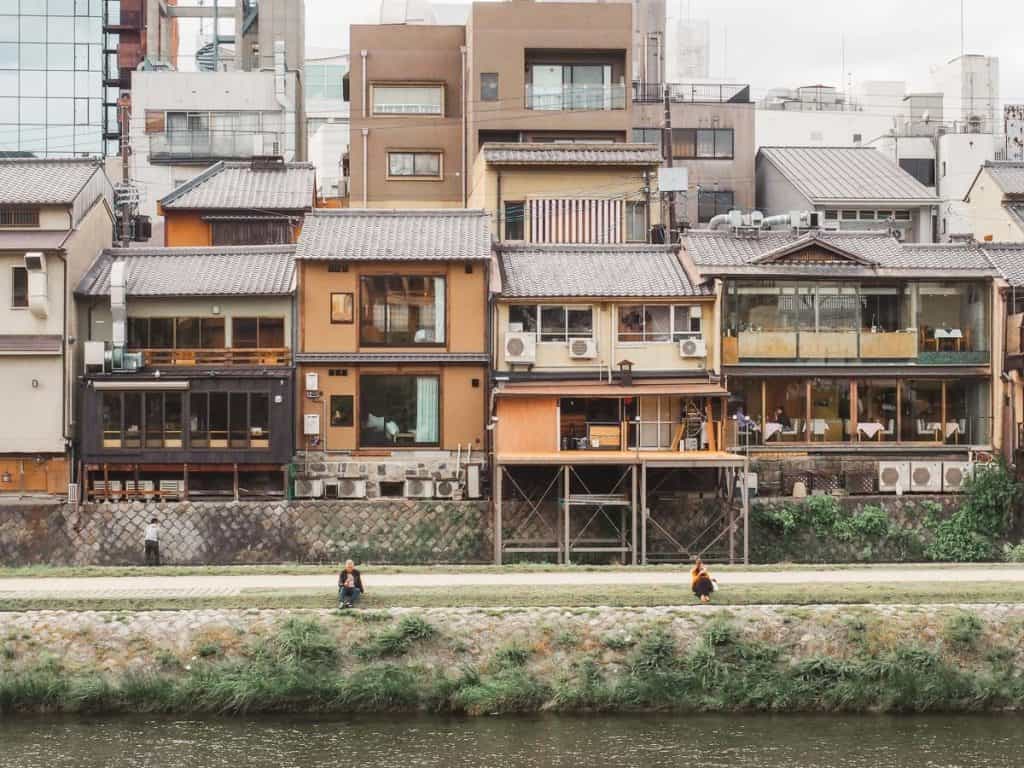
Kyoto would have to top our list of the best places to see in Japan . It’s a city packed with historical temples and shrines, incredible Japanese gardens, and quaint cobbled streets with traditional shop houses.
Japanese culture simply oozes out of every corner of this beautiful city and it’s a great place to really immerse yourself in old-world Japan traditions.
Kyoto is one of those must visit places in Japan that you simply cannot leave off your itinerary. It’s our favourite of all the cities we’ve visited in Japan and we could honestly go back there again and again.
The most popular Japan tourist attractions are usually found in Kyoto, making it quite a busy tourist destination . In fact, it’s one of the most visited places in Japan!
Many tours only spend a day in Tokyo, but we recommend at least 2 days in Kyoto . Though you could easily 3 or 4 days in Kyoto and still have a full sightseeing itinerary as there are so many things to do – check out this list of 25 top things to do in Kyoto .
Read More About Kyoto:
- The Perfect Itinerary for 2 days in Kyoto
- Top 25 Things to do in Kyoto, Japan

Tokyo is a modern bustling metropolis that’s constantly buzzing with energy and excitement, with its neon-lit streets, towering skyscrapers, futuristic museums, and endless array of delicious food options.
Being the capital and largest city in Japan , most visitors would arrive at one of the two international airports located in Tokyo (Haneda or Narita).
Tokyo is a great place to kick off your Japan sightseeing itinerary, as there are many popular tourist attractions to tick off your Japan bucket list .
So, how many days should you spend in Tokyo ? We recommend 2 days at a minimum, but ideally 3-4 days to see the best of what Tokyo has to offer.
Read More About Tokyo:
- How Many Days in Tokyo Is Enough for You?
- 11 Places to Visit on a Day Trip from Tokyo
#3 | Hakone
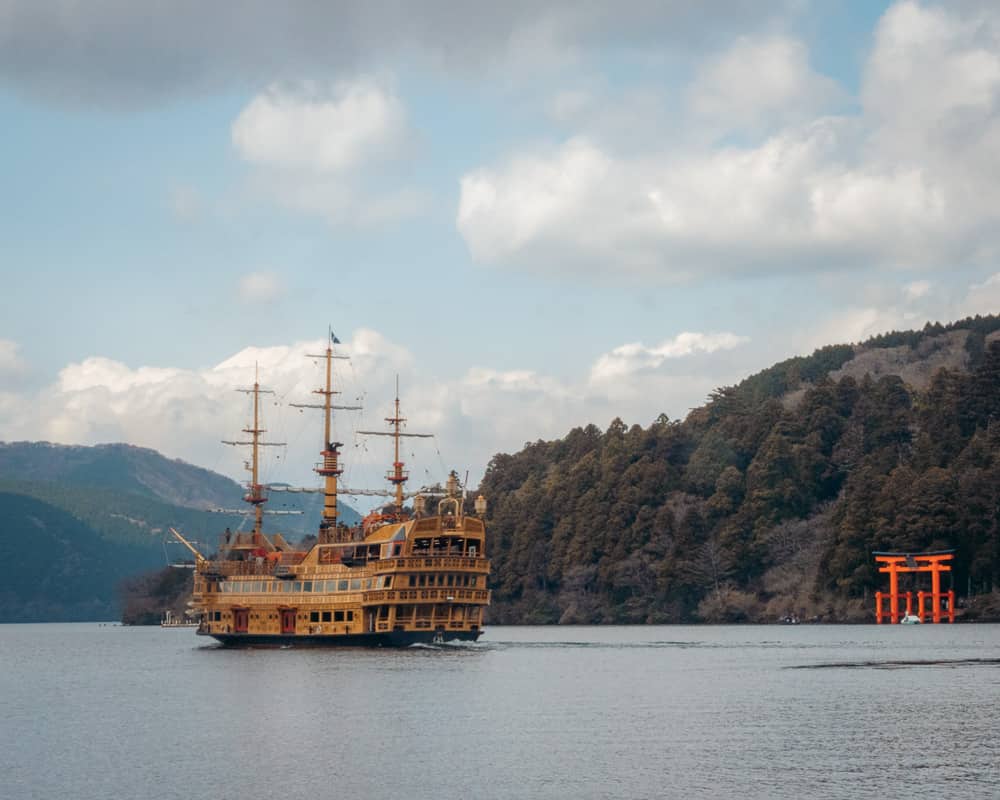
Spending a few days in Hakone is one of our top recommendations when visiting Japan. The area consists of a series of quaint mountain villages inter-connected by train or bus.
Hakone is famous for its hot springs, Japanese gardens, open-air museums, volcanic activity, and incredible views of Mount Fuji . Catching a glimpse of Mount Fuji is top of most visitors list of the best things to do in Japan, but it’s not an easy one to tick off, as Mount Fuji is hidden behind cloud 70% of the time. But if you’re going to see it from anywhere, then Mount Hakone usually offers a great opportunity.
Hakone is one of the best under-the-radar places to visit in Japan for first-timers, as it’s very close to Tokyo and easy to reach by train . It’s possible to visit Hakone on a day trip from Tokyo , but we recommend spending at least 1-2 nights there to really enjoy the relaxing hot spring vibe.
Read More About Hakone:
- A Complete Guide to Visiting Hakone, Japan
- Staying at Hakone Gora Byakudan (a Modern-style Japanese Ryokan)
#4 | Hiroshima

Hiroshima is a city in Japan that has a lot of historical significance , due to the devastating impact of the first atomic bomb dropped during World War II. The destruction caused by the bomb is still evident today with the Hiroshima Peace Memorial Park being one of the most popular Japan tourist attractions.
Before visiting Hiroshima, I honestly wasn’t all that fussed about going there, as I thought it was a little out of the way, and I didn’t think there was much to do there. However, I would actually list Hiroshima as one of the best places to go in Japan for first-time visitors .
Learning about the devastation caused by the atomic bomb was extremely moving and visiting the Hiroshima Peace Memorial Museum honestly left me lost for words.
Hiroshima is located on the southwestern part of Honshu Island and on the map, appears quite a distance out of the way. However, it’s only 2 hours from Osaka or Kyoto via Shinkansen (bullet train), and well worth the journey to visit for a day trip or overnight stay.
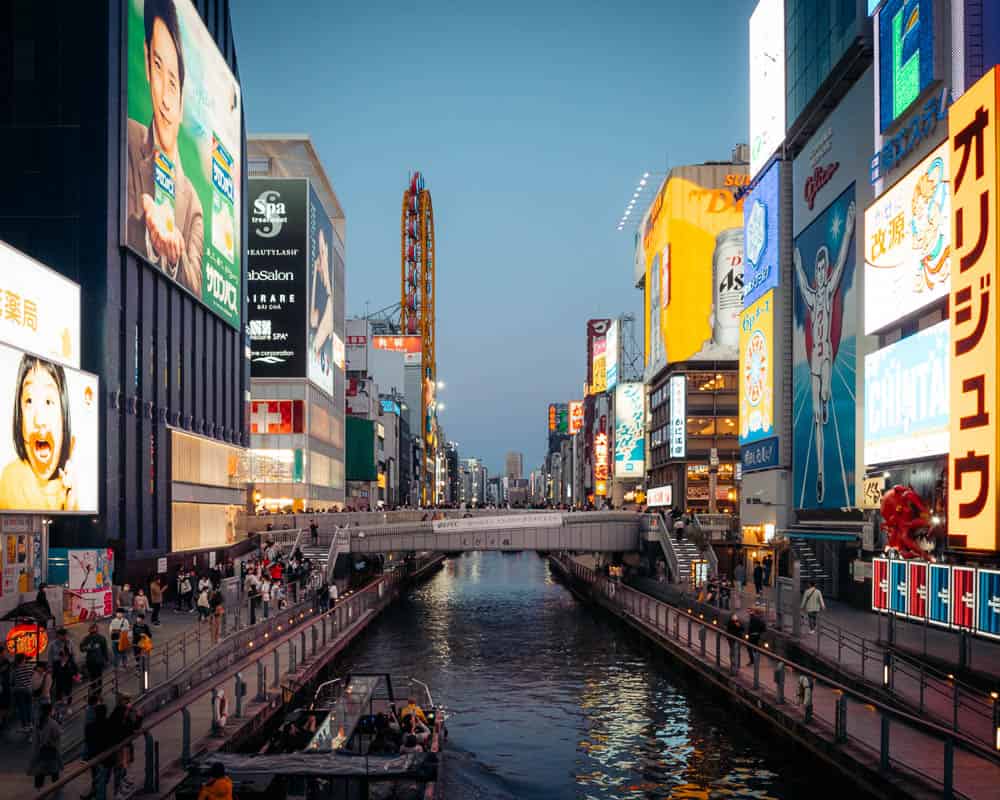
Osaka is the third-largest city in Japan, after Tokyo and Yokohama, and is known for its incredible food scene, lively nightlife, and friendly locals. It’s well worth a visit on your Japan itinerary.
The Osaka Castle is one of the most popular things to see in Japan and a stunning example of Edo-era architecture.
Although Osaka is usually not as popular with tourists as the likes of Kyoto and Tokyo, we were pleasantly surprised at how much we enjoyed spending a day sightseeing in Osaka and would highly recommend including a visit on your Japan itinerary.
#6 | Kanazawa
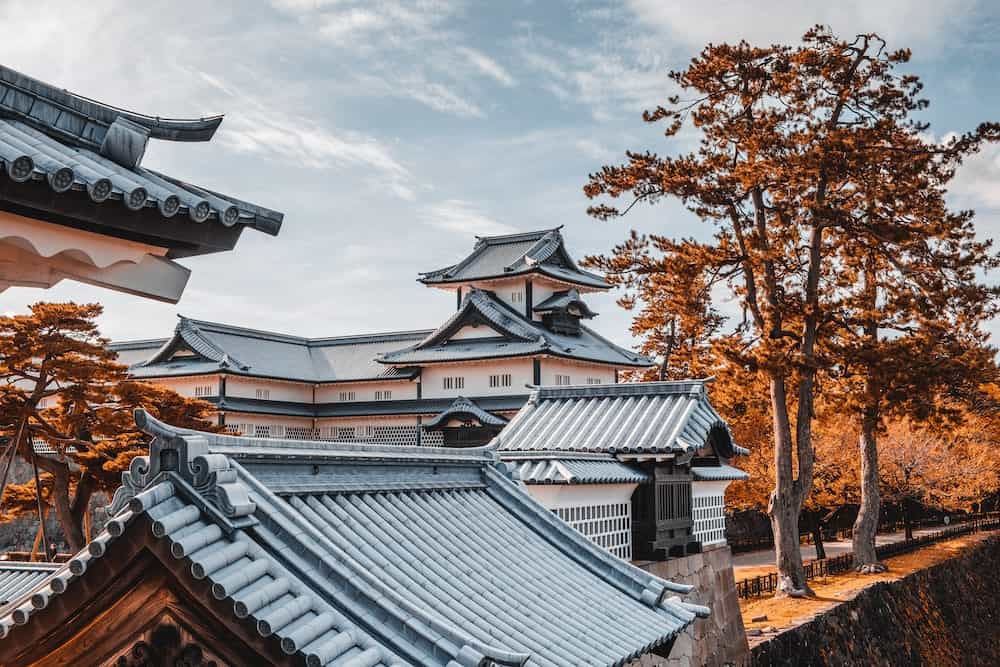
Kanazawa is a truly underrated place to visit in Japan. Located on the west coast of Japan’s Honshu Island, Kanazawa is only a 2.5-hour Shinkansen ride from Tokyo, making it a perfect place to stop on a 14-day Japan itinerary.
The city is best known for its beautifully preserved traditional neighbourhoods, and famous well-manicured gardens .
One of the most well-known gardens in Japan, the Kenroku-en Garden, is reason alone to plan a visit to Kanazawa, but if you’re looking for more, there’s also the Kanazawa Castle, a stunning example of Edo period architecture, or the Higashi Chaya district, a traditional area with picturesque streets lined with old teahouses that are now home to souvenir shops and cafes.

More Japan Travel Tips
Visiting a country that speaks a foreign language can be overwhelming. But despite the language barrier, we personally found Japan to be one of the easiest countries to navigate . The Japanese people are very kind by nature, and most will go out of their way to help you, even if they don’t speak English very well.
Below we’ve outlined some basic information on things you should know before traveling to Japan for the first time.
Language: The main language spoken in Japan is Japanese. English is not commonly spoken; however, many younger generations generally have enough language skills to have a brief conversation. English is more widely spoken in Tokyo than in other cities.
Visas: Visitors with a US or AU passport do not require a visa to visit Japan. Check if you need a Visa using iVisa.com .
Currency: The currency used in Japan is the Japanese Yen (JPY). Click here to get the current exchange rate in USD or click here for AUD.
Credit Cards & Cash: Most hotels, larger restaurants, and retailers will accept credit cards as payment. Japan is still largely a cash economy (although this is slowly changing), and a lot of smaller food outlets or markets will only accept cash, so it’s best to have some cash on you.
Tipping: Tipping is not expected in Japan and is not commonly practiced.
Power plugs: The plugs used in Japan are Type A and Type B. The voltage is 100 volts, and the frequency is 50/60 Hz. We recommend buying a universal adapter with surge protection.
Safety: Is it safe to travel to Japan? Absolutely. Japan is one of the safest countries we’ve ever visited. Crimes against tourists are rare. It’s also one of the countries where we’ve felt the most comfortable as a minority.
Feeling inspired? Here are 10 amazing destinations you must add to your Travel Bucket List !
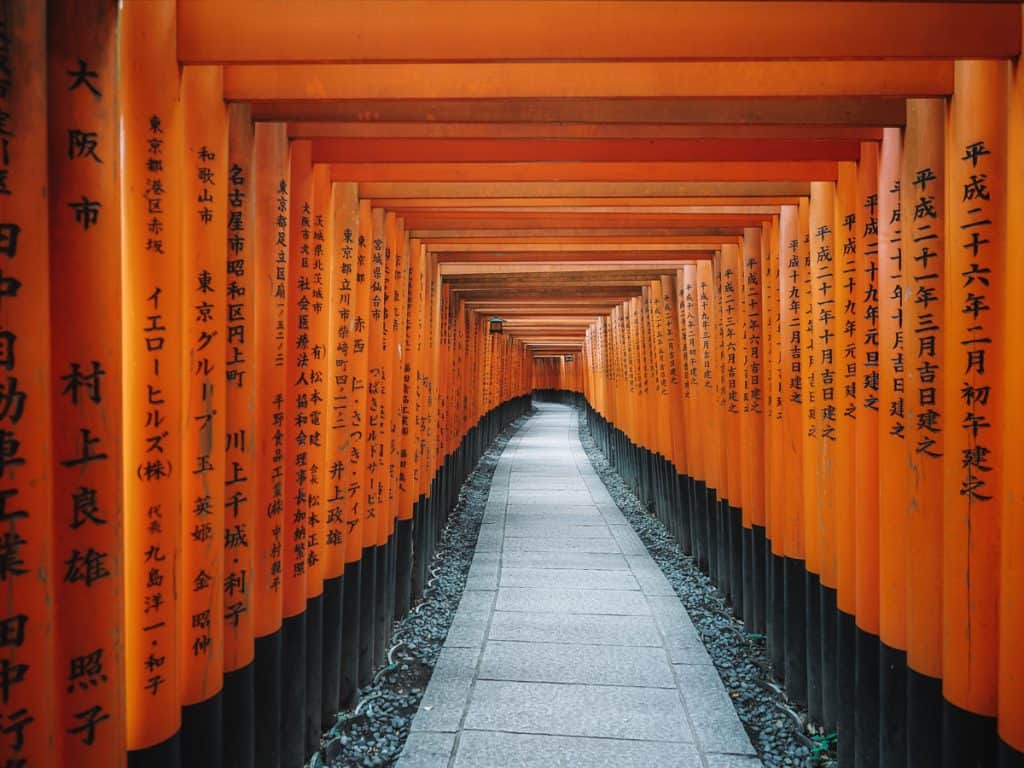
Ready to Book Your Trip to Japan?
Japan is a truly unique and fascinating country with a rich history, culture, and way of life. Whether you are visiting Japan for its vibrant pop culture, ancient traditions, or stunning landscapes and beautiful people, Japan is a place that is sure to leave a lasting impression on anyone who experiences it.
We hope this Japan travel guide has helped you with all the information you need to dive in and start planning your first trip to Japan!
If you’re looking for more handy Japan travel tips, itineraries, and city guides, we have a ton of articles in our Japan travel blog library . We also recommend checking out the following useful websites that offer in depth guides for planning a trip to Japan:
- Travel Japan – The official tourism website of Japan
- Japan Guide – Comprehensive information for travelling in Japan in all regions
- Truly Tokyo – Where to eat and what to do in Tokyo
- Inside Kyoto – Essential tips for visiting Kyoto
More Japan Travel Guides
View more resources & tips to help plan your japan trip.
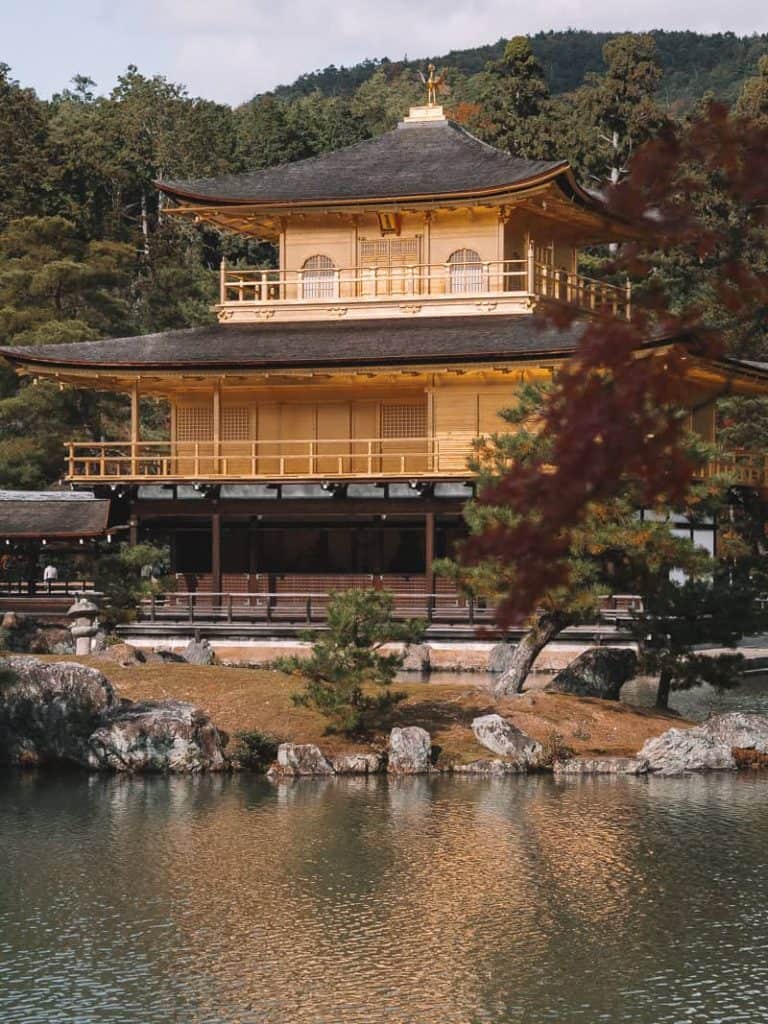
Have a great trip to Japan!
If you found this Japan Travel Guide useful, don’t forget to sign up for our Travel Resource Library and download our free Japan travel resources (itinerary, bucket list, maps, and more).
Planning a trip soon? Here’s a list of the websites we use for booking our trips:
- Skyscanner for the best flight deals
- Booking.com for the best rates on hotels
- HomeAway for the best price on apartment and home rentals
- Rentalcars.com for quick and easy car rentals
- Luxury Escapes | Expedia for luxury package holiday deals and tours
- Get Your Guide | Klook | Viator for booking day tours and attraction tickets
- Tourradar for a wide selection of multi-day tours
- Safety Wing for the most comprehensive worldwide travel insurance
Did You Know? We use ads and affiliate links on this website. When you click through and make a purchase, we may receive a small commission (at no extra cost to you), that helps us pay the bills to keep running this blog as a free resource. We only recommend products we use ourselves. If you’re planning to book a trip soon, please consider clicking through the links above, so that we can continue to provide free travel guides, just like this one! Please see our Disclosure Policy for more details.
About the Author:
Amanda Twine is the founder and creator of Bucket List Seekers – a luxury travel blog sharing informative travel guides, food guides, hotel reviews, itineraries, and tips about how to make luxury travel more affordable.
Connect with us on Facebook | Pinterest | Instagram | Twitter . If you found this article helpful, please share it with your friends!

Share This Post:
Get Access to our FREE Travel Resources Library!
Subscribe and get exclusive access to loads of printable planning checklists, maps, itineraries, destination bucket lists, and more!
You’ll Also Love

Tokyo Beyond the City: 11 Places to Visit from Tokyo on a Day Trip
- Destinations
- Travel Guides
- Travel Itineraries
- Travel Tips
- Accommodation
Join Our Newsletter
And get exclusive access to our FREE Travel Planning Resources!
- Work With Us
- Disclosure Policy
- Terms & Conditions
- Privacy Policy
Copyright © 2024 Bucket List Seekers
Privacy Overview
- Tours & Experiences
- Tailor-made Trips
- Bahasa Indonesia
We are happy to see you again!
Continue with
Or use email.
No Account? Create one
Create account
Already have an account? Sign in
Quickly Sign up with
I agree to Japan Travel's Terms of Service and Privacy Policy . Terms of--> and acknowledge that Japan Travel's Privacy--> applies to me.-->
Email reset password link
Please check your inbox and click the link we will send to you.
9 Tips for Your First Trip to Japan
Rail passes, airport choices, accommodation info, & more

Traveling somewhere new comes with a wide mix of emotions – there's often excitement and anticipation of what's to come, combined with some trepidation or anxiousness about being in a completely different country.
Often, that trepidation or anxiety can be eased when you know what to expect, so we've put together a beginners guide to Japan. The goal of this compilation is to answer some of the questions we regularly receive via our social media channels, plus some things our own staff would have liked to know when they first came to Japan!
Where to fly into?
One of the first things to consider when heading to Japan is where you'll be flying into. Many first timers opt to head to Tokyo, which is served by two international airports – Haneda (HND) and Narita (NRT). Something that visitors aren't often aware of is the difference in distance between them. Haneda is located under 20 kilometers from popular tourist areas like Shinjuku and Shibuya, whereas Narita is located in Chiba Prefecture about 80 kilometers away from the heart of Tokyo. Factor this in when you book your flights!
Transport Tips
A question we receive quite regularly is "should I get a JR Rail Pass or not?", and the answer really comes down to how much ground you plan on covering. At the time of writing, the price of a 7 day rail pass is close to 30,000 JPY, and the 14 day pass is just over 47,000 JPY. When you compare the price to a one-way ticket from Tokyo to Kyoto at 13,320 JPY for an unreserved seat, you can see that the pass pays for itself fairly quickly if you're chalking up some kilometers.
If you're basing your stay in Tokyo, one economical way to get around is the Tokyo Metro one-day pass. Priced at ¥600 for adults and ¥300 for children, the pass includes unlimited rides on Tokyo Metro lines for 24 hours from its first use. The passes can be purchased in advance or on the day, with on the day tickets available via ticket machines at all Tokyo Metro stations.
Getting yourself a PASMO or Suica card is another good option if you're predominantly staying in the one locale. These tap-and-go electronic money cards can be used on train and bus networks, plus they can be used as a means of payment at convenience stores, many vending machines, and even some retail outlets. You can find more information about PASMO cards here, and more information about Suica cards here.
Something to note when you disembark at a train station is which exit you should head out from. Many stations have numerous exits, and heading out the wrong one can put you on the opposite side of where you need to be. We recommend checking a map before randomly picking any exit, so you can be closest to your intended destination.
Some people opt to rent a car for their Japan travels, and this guide on our site covers some of the basics you need to know if you're intending to do that. It's also helpful to know how to fuel up a vehicle, and we've got an instruction guide for that here.
Cash or Card?
Unlike some destinations, Japan still has many stores and restaurants that don't offer card payment facilities. Because of this, it's useful to keep some cash on you to avoid being caught out.
While on the topic of cash, Japan doesn't have a culture or custom of tipping. If you do leave cash on a cafe or restaurant table as a tip, it's likely you'll have a staff member chase you down the street to return your money!
Which accommodation option to choose?
Accommodation options in Japan run the gamut, from size to price. Some types to consider include:
- Capsule Hotels: these are small, pod-like structures that basically fit a bed mattress and not much else. At these hotels, bathroom facilities are communal, so keep that in mind if you would prefer more privacy. Capsule hotels can be a great option for solo travelers on a budget, and there are capsule hotel chains who offer male-only or female-only lodging if you would prefer that.
- Business Hotels: There are several different business hotel chains in Japan, including the likes of APA, Route Inn, and Dormy Inn to name just a few. They are typically small in size but clean and conveniently located near stations to cater to their business clientele.
- Love Hotels: Despite their reputation for being places for some *ahem* quality time, love hotels can serve as an inexpensive, clean, and convenient place to stay. Many love hotels offer automated self check-in and check-out options, which is great if you intend to arrive or leave outside standard hours. Some also have quirky decor themes which can be fun if you're looking for something unique.
- Minshuku: Often referred to as Japan's bed and breakfast option, minshuku are a way to enjoy an authentic Japanese experience with your stay. Something to note about minshuku is that it's common for bathroom facilities to be shared between others staying there, so be sure to check when booking if this is something that would bother you.
- International Hotel Chains: There are also numerous international hotel chains to choose from, including the likes of Hilton, Marriott, and Westin to name just a few. If you're after familiarity when it comes to your accommodation, these chains can be a good option.
- Ryokan: these are traditional Japanese inns, and usually come with meals (primarily breakfast and dinner) included with the room rate. If you have allergies or intolerances, it's recommended to advise your ryokan of this ahead of time so they can work to accommodate your preferences.
Best time of year to visit
It's important to mention that the best time of year is going to be different for everyone based on their own personal interests. For instance, one person may hate the cold, another may adore skiing and snowboarding – so winter might be great for one traveler and not so much for others!
Weather-wise, two of the most pleasant times of year to visit are spring and autumn. They're also two times of year with some stunning natural beauty to enjoy in the form of cherry blossoms and changing leaves respectively.
Something to keep in mind when planning your visit is Japan's schedule of national holidays. One time of year that can present challenges for travelers is Golden Week , a string of public holidays running from April 29th until May 5th annually. During this period, many people travel to visit family or plan their own getaways, meaning that roads are congested, trains and flights are often booked well in advance, and accommodation options are often more expensive during this peak timeframe.
What does Japan think about ink? Long story short, tattoos have associations with yakuza (organized crime syndicate members) here, and tattoos are often still prohibited at places like onsen (hot springs), water parks, and even some public beaches.
If you do have tattoos, there are a couple of options. First, if your tattoos are small, some people opt to cover them with waterproof band-aids and try their luck. A safer approach is to visit places that have a more open mindset regarding tattoos, and using a website like Tattoo Friendly Japan to help narrow down those destinations is useful.
If you are particularly enthusiastic about visiting an onsen, opting for a private one can be a stress-free approach with respect to both tattoos and then idea of being naked around a bunch of strangers – the latter is quite an adjustment for visitors from certain countries.
What to do if you're an early riser
One thing becomes apparent in Japan very quickly – many places (cafes, restaurants, supermarkets) don't open until 10am or later. This is where convenience stores come in handy! Three of the major convenience store chains here are 7-11, Lawson, and Family Mart, and they're places where you can grab a morning coffee or tea, full meals and snacks, toiletries, and plenty more.
Once you're fueled up for the day, temples, shrines, and parks are good options to explore bright and early. These places are often open 24 hours (although not in all cases, so be sure to Google your intended destination to double check!) and can provide a serene and culture-filled start to your morning.
Helpful apps and websites
With most of us traveling with smartphones in our pockets, downloading a few apps ahead of time can be particularly handy. Some that we'd recommend include:
- Google Maps – a must for getting from A to B, pinning spots you'd like to visit, and even working out which trains to catch. Pop your departing station and arriving station into the app, tap the transit icon, and voilà – you've got the routes right in front of you.
- Google Translate – this comes in super handy for things like deciphering restaurant menus or being able to ask someone for help if you don't speak Japanese. If you download the offline version ahead of time you'll still be able to translate things without an internet connection.
- Gurunavi – this website makes picking somewhere to eat a breeze. You can filter by the area you're visiting and the type of cuisine you're seeking, and it will provide a variety of results. There is also an app version, but at the time of writing it is only available in Japanese.
- Halal Friendly Japan – if you're Muslim and looking for halal eateries during your visit, download Halal Friendly Japan. The app helps you find halal restaurants and cafes based on your destination.
- Happy Cow – This website (also available in app form) is useful for vegan and vegetarian travelers looking for plant-based places to eat.
Staying connected on your visit
Another regular question we get asked is how to stay connected during your travels. There are two main options – SIM cards or portable WiFi devices – and there are several companies that provide those services. For sim cards, Mobal is one convenient choice, and they offer various plan lengths with different features.
Portable WiFi is another popular way to stay online, and there are numerous companies that offer these devices. Checking the website of the airport you're flying into can be helpful in establishing where to find either SIM card providers or portable WiFi devices, for instance:
- Tokyo Haneda SIM + Portable Wifi Services
- Tokyo Narita SIM + Portable Wifi Services
- Kansai Airport SIM + Portable Wifi Services
- Share on Facebook
- Share on Twitter
- Copy link to share
Japan Travel Staff
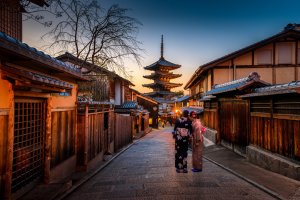

- PLAN MY TRIP
- All Destinations
- Discover Hokkaido
- Discover Honshu
- Discover Kyushu
- Discover Shikoku
- THINGS TO DO
- Japan Travel Deals
How To Plan Trips To Japan
4 comments

When it comes to travel planning, they do kind of have a point.
When you start out, there can be dozens of questions that need answering when trip planning...
- How long should we travel for?
- Where will we go?
- How much do we need to budget?
- What type of accommodation should we focus on?
- What are the essential things to do?
- Can we do it all by ourselves, or should we book some guided trips?
...and so on, and so on.
In this post I’ll share with you the 5 stages of travel and how to get the most out of each of them by planning ahead. Along the way, I'll share how I approach each of them, and how you can create your own ‘travel planning formula’ to make your trip planning easier and your travel more fulfilling.
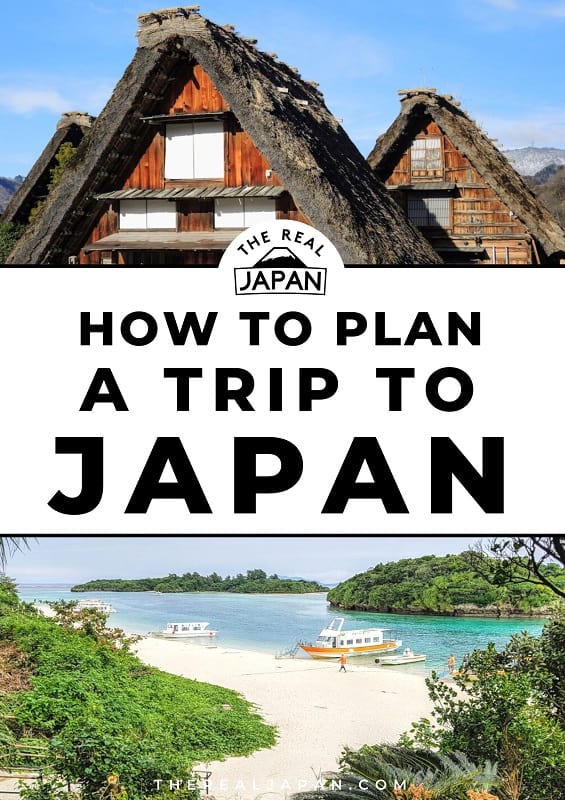
The first step in planning a trip to Japan is deciding how long you’ll be staying. Whether you have a week or a month, Japan has plenty to offer, but it’s crucial to strike a balance between exploring different regions and not rushing through this special experience. The length of your visit can significantly impact your Japan itinerary and budget.
- Short Trip (1-2 weeks): If you have limited time, focus on specific regions or cities to make the most of your stay. Consider exploring the iconic Tokyo and Kyoto for a mix of modern and traditional Japanese experiences. For travelers on a limited timeframe, taking a multi-day package tour like this 10 Day Best of Japa n Tour Package is recommended to help you get around and see all the sights, while maximizing your short stay in Japan.
- Medium Trip (2-3 weeks): With a bit more time, you can venture further into the country, adding destinations like Hiroshima , Osaka , and Nara to your itinerary. This is the perfect amount of time to complete the popular Japan Golden Route which starts in Tokyo and ends in Kyoto.
- Extended Trip (3+ weeks): For an extended stay, you can explore Japan more thoroughly, including less-visited but just as stunning areas like Hokkaido , the Japanese Alps and the Chubu region to your trip, on top of all the classic must-sees in Tokyo and Kyoto. This extended option offers a well-rounded experience of Japan’s diverse landscapes and culture.
2) Create a Budget for Your Trip to Japan

Before you dive into planning your trip, it’s crucial to establish a realistic budget. Japan is often perceived as an expensive destination, but with careful planning, you can manage your expenses effectively. In general, you should budget to spend at least $100 per day during your trip in Japan for all your expenses including nice accommodation. For a cheaper trip, you can opt for hostels, capsule hotels, and other budget options. These are all things you should keep in mind while you save for your trip to Japan:
- Flights: Depending on where you’re coming from, Japan can be a long way away and your flight may take up a significant part of your budget. Consider flying off-season, or breaking your flight up into multiple stops if you’re looking to cut costs. Use flight comparison sights like Google Flights to help you find the cheapest way to fly.
- Food: Japanese cuisine is a highlight of any trip. You can enjoy budget-friendly street food or indulge in Michelin-starred restaurants. Allocate a portion of your budget for dining experiences. If you don’t have much left in your budget for food, you could choose to indulge in one or two authentic food experiences and enjoy delicious and affordable street food for the rest of your stay.
- Accommodation: Determine your accommodation preferences, whether it’s staying in luxurious hotels, budget-friendly hostels, or traditional ryokans . Prices vary significantly, so research and book in advance to secure good deals.
- Transportation: Decide whether you’ll invest in a Japan Rail Pass for extensive train travel or use regional passes and local transportation. Calculate transportation costs between cities in advance.
- Activities: Make a list of activities and attractions you want to visit, and estimate entrance fees, tours, and cultural experiences.
- Miscellaneous Expenses: Don’t forget to include costs for travel insurance, SIM cards or pocket WiFi, and shopping souvenirs.
Pro-Tip for Cost Efficient Travel
To cut costs, consider joining a guided multi-day tour of Japan . This option can take care of transportation, accommodation, some food, and activities with one purchase, and is often more cost effective than booking each thing separately. This 8 day tour of Kyoto, Tokyo, Osaka, and Nara is an excellent and affordable option to see all the unmissable sites in Japan. Alternatively, you can browse all our Japan package tours for a range of lengths and visiting locations.
See all Japan Tour Packages
3) What Time of Year Do You Wish to Travel?
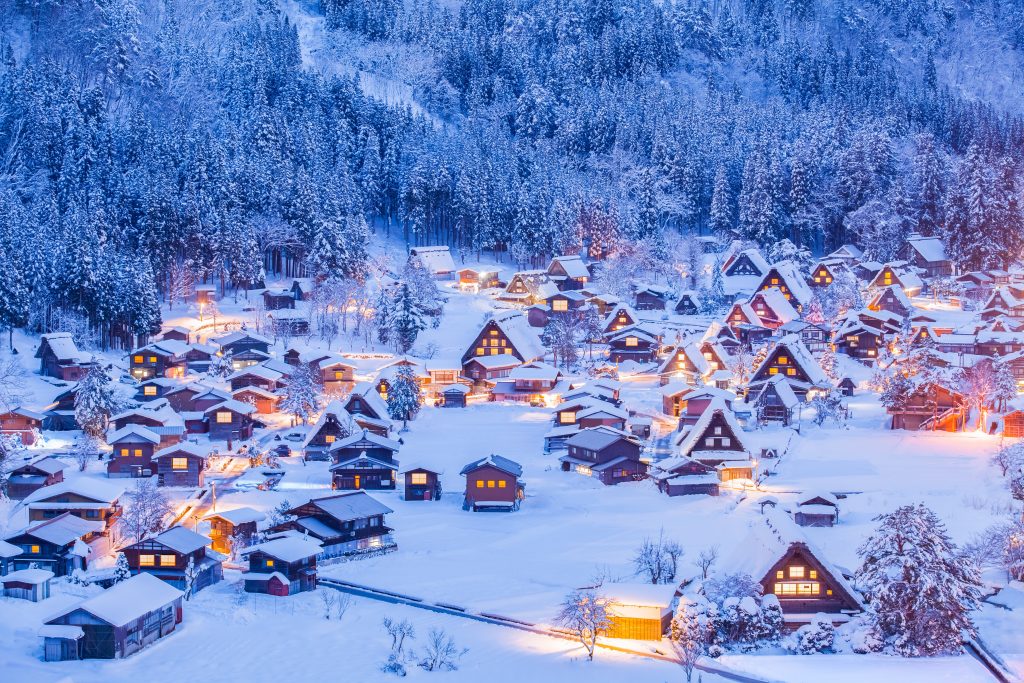
Japan experiences distinct seasons, each with its unique charm. The time of year you choose to visit will determine the climate, festivals, and the availability of certain activities. Keep in mind that cherry blossom season (Sakura) and autumn foliage (Koyo) are especially popular times to visit.
- Spring (March to May): Spring in Japan is famous for cherry blossoms . If you’re interested in witnessing these beautiful flowers in full bloom, plan your trip from late March to early April, and base your trip around the top places to see the Sakura . The weather is mild, making it the perfect time for outdoor activities. For recommendations during this time, check out our guides to Japan in March , April , or May .
- Summer (June to August): Summer can be hot and humid, especially in cities like Tokyo and Osaka. This is a great time for indoor activities like food tours and exploring temples. Hokkaido offers relief from the heat with its cooler temperatures. Browse through our monthly guides for more information about Japan in June , July, or August.
- Autumn (September to November): Autumn brings stunning foliage and pleasant weather. It’s a fantastic time for hiking! Among our favorite autumn activities is enjoying the changing leaves in picture-perfect Takayama in the Japanese alps.
- Winter (December to February): Winter is ideal for skiing and enjoying hot springs (onsen) in places like the Gifu prefecture. There’s nothing like sinking into this natural heated pool in the heart of the Japanese Alps! Of course, Japan’s most popular places, Tokyo and Kyoto, also have their unique winter flavor .
4) Build Your Trip Around Special Experiences
View this post on Instagram A post shared by Tourist Japan (@tourist__japan)
Japan offers a wide range of experiences, from cultural immersion to outdoor adventures. Tailor your itinerary around your interests and the season of your visit. Decide what side of Japan you wish to prioritize during your stay:
- Cultural Experiences: Participate in a tea ceremony , visit traditional temples and shrines , or explore the ancient art of calligraphy. Kyoto is particularly famous for its rich cultural heritage.
See all cultural tours
- Outdoor Adventures: Hike the beautiful trails in the Japanese Alps, visit the breathtaking Mount Fuji , go skiing in Niseko, or relax in an onsen with stunning mountain views.
See all nature tours
- City Exploration: Tokyo, Osaka, and Kyoto offer a mix of modern and historic attractions. Explore Tokyo Disneyland , experience the nightlife of Osaka, and visit Kyoto’s UNESCO World Heritage Sites .
See all city tours
- Foodie Adventures: Savor sushi at Tsukiji Fish Market in Tokyo , try street food in Osaka’s Dotonbori, and sample kaiseki (traditional multi-course) dining in Kyoto. Can’t decide which is best for you? Check out our list of the best food tours in Japan .
See all food tours
5) Book Day Trips from Japan’s Main Cities
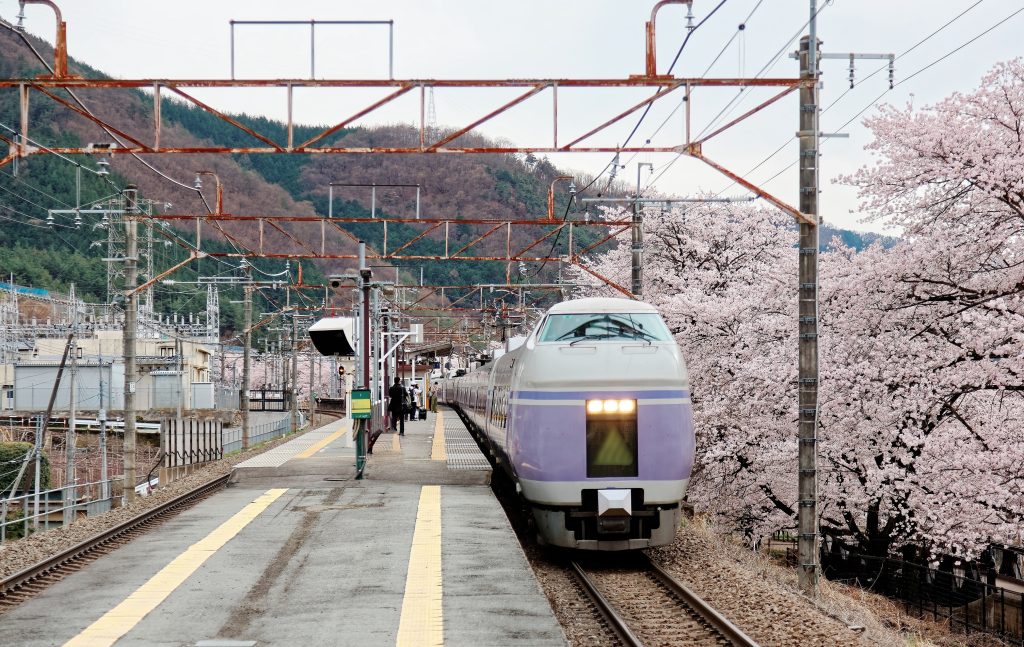
While exploring Japan’s major cities is a must, consider adding day trips to your itinerary for a more well-rounded experience. Here are a few day trip ideas from Tokyo, Kyoto, and Osaka:
- From Tokyo: Visit Nikko to see the Toshogu Shrine, ascend the iconic Mount Fuji , take a trip from Tokyo to Kamakura to see the Great Buddha , or explore the charming streets of Harajuku.
See all tours from Tokyo
- From Kyoto: Explore Nara to see the friendly deer and ancient temples, visit Hiroshima and its Peace Memorial Park, or spend the day temple hopping inside Kyoto.
See all tours from Kyoto
- From Osaka: Visit the iconic Osaka castle or explore the city’s wonderful food markets.
See all tours from Osaka
Have Fun in Japan!
Finally, don’t forget to enjoy your trip to Japan to the fullest. Embrace the culture, try new foods, and immerse yourself in the beauty and traditions of this incredible country. Be open to serendipitous discoveries, make new friends on day trips , and create lasting memories!
In conclusion, planning a trip to Japan can be a rewarding experience when approached with thoughtful consideration. By deciding on the duration, timing, budget, experiences, and logistics of your journey, you’ll be well-prepared to embark on an unforgettable Eastern adventure. So, start planning, pack your bags , book your travel insurance , and get ready for an incredible journey through Japan’s rich history, vibrant culture, and stunning landscapes you won’t find anywhere else.
Subscribe for insider tips to Japan Enter your email address to stay in-the-know of what's new in Japan. We promise to only send you guides to the best experiences. Email Keep Me Updated
Recommended

Related Articles

The Japan Golden Route: Everything To Know

Japan in May 2024

Japan in April 2024

Japan in March 2024

The Three Wise Monkeys of Toshogu Shrine in Nikko


Tips for Climbing Mount Fuji

The Tokyo Bucket List – Top Things To Do in Tokyo

Spa & Wellness in Tokyo

Top Experiences in Japan

Cultural Guide to Japan
Itineraries
- Tours and Activities
- Travel Guides
- Best of Japan
JRailPass.com » Japan Travel Blog » Planning a trip to Japan: Travel Guide
Planning a trip to Japan: Travel Guide
August 1, 2023
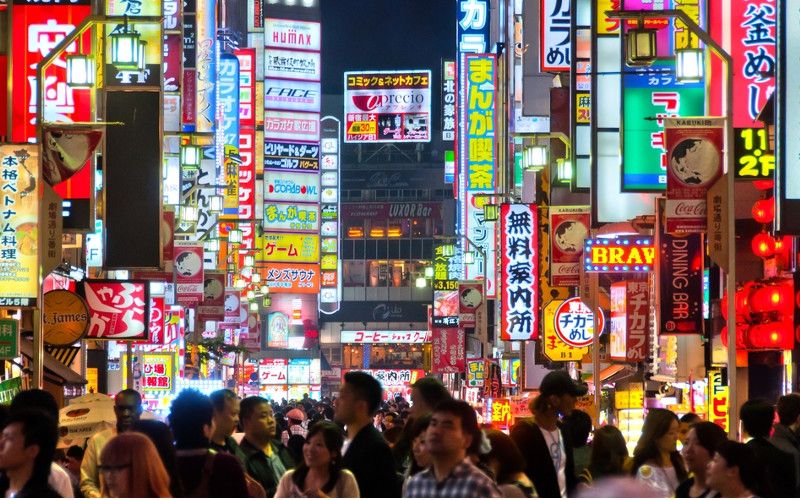
If you’re planning a trip to Japan , you may at first feel overwhelmed by the vast amount of exciting cities, stunning natural landscapes, and unique historical attractions to visit.
Fortunately, we’ve compiled this handy Japan guide to help you make informed decisions about what you want to get out of your trip, how to prepare, and the services and facilities that may be useful to you during your stay.
You can use the following travel guide to help you plan your itinerary in the country, compile your packing list, and learn more about Japanese customs and lifestyle in general.
When you should travel to Japan
The best time to visit Japan is subjective and depends on what you want to get out of your trip. See the following advice for traveling to Japan depending on the season :
- Spring – The stunning colors of the sakura cherry blossom season draw many foreign visitors to Japan in spring. However, this is can result in large crowds at the parks and shines where the cherry trees can be found. Furthermore, Golden Week , one of the main Japanese holidays , takes place from late April to early May, and is considered one of the worst times to visit Japan because public transportation can be incredibly crowded and prices tend to be at their highest.
- Summer – A great time to take part in outdoor activities in Japan and enjoy a number of matsuri festivals . Although summer is the rainy season across much of the country, the rain rarely affects travel plans, and most of Japan experiences hot and humid weather.
- Autumn – One of the least crowded times to visit Japan, although the popular tradition of koyo autumn leaf viewing can also draw large crowds in November. However, early December still allows plenty of opportunities to take part in this pastime.
- Winter – Those who visit Japan in January, February, or March will find it one of the cheapest and less crowded times to travel to the country. Winter sports enthusiasts will want to take advantage of the excellent powder snow for skiing and Snowboarding in Hokkaido.
Things to know before you travel
Some basic facts that travelers should know before traveling to Japan include:
- The phone number for a medical emergency is 119
- Public restrooms in Japan are readily available and easy to find in prominent tourist attractions, train stations, and department stores
- Trash cans in public spaces are not common , and many Japanese people carry their trash with them during the day to later dispose of at home
- It is normally necessary to remove shoes before entering a Japanese home , as well as in some public establishments
- Japanese streets are not named with the exception of major roads, and the address system in Japan is based on areas
- Travelers with tattoos are advised is necessary to cover up if planning to visit a public onsen hot spring .
Do I need a visa to travel to Japan?
Travelers from a number of countries, including The United States, the United Kingdom, Canada, Australia, Mexico, and all European Union countries, do not need a Japan tourist visa to enter the country for short stays.
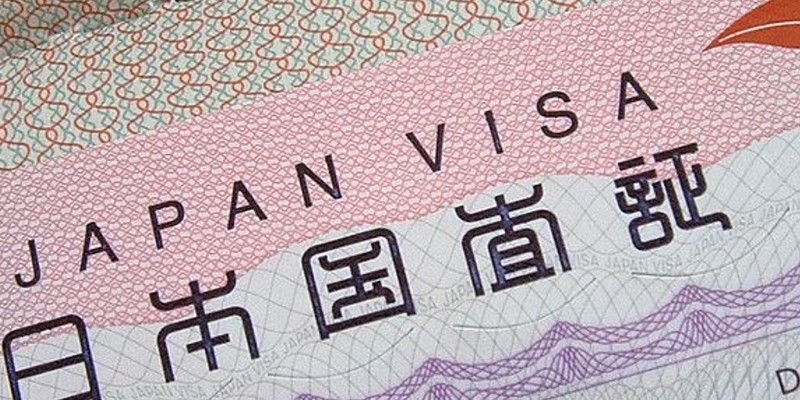
Citizens of these countries receive a temporary visitor stamp in their passport upon arrival in Japan, which guarantees their entry to the country for purposes of tourism. Travelers are required to have this stamp in their passport to be eligible to apply for the JR Pass.
Planning your trip to Japan
When planning a trip to Japan , it’s a good idea to settle on your itinerary and investigate accomodation and travel options for each destination in advance.
Below you’ll find an extensive list of travel tips for the country, including how to access WiFi in Japan, basic Japanese etiquette and common phrases you should learn, and how to travel with a JR Pass.
Accommodation
If you’re traveling to Japan on a budget , an excellent accomodation option is to stay in a sleep pod in a Japanese capsule hotel .
Although the sleeping capsules in the unique ‘ pod hotels ’ are smaller than a regular-sized hotel room, these establishments are usually ultra-modern and very comfortable, and may also offer luxury facilities such as a sauna and a spa.

Travelers willing to spend a little more to experience traditional Japanese accommodation should consider staying in a Ryokan (Japanese guest house).
Although a Ryokan may cost a little more than a regular hotel (typically between ¥15,000 and ¥25,000 per person, per night), many visitors feel that it is worth it for the traditional Japanese experience.
The Japan Rail Pass is a must-have for all visitors planning to travel around Japan.
The JR Pass is multi-use, discounted ticket that allows unlimited access to trains operated by Japan Rail National, as well as JR bus services, ferry services, and airport transfers .
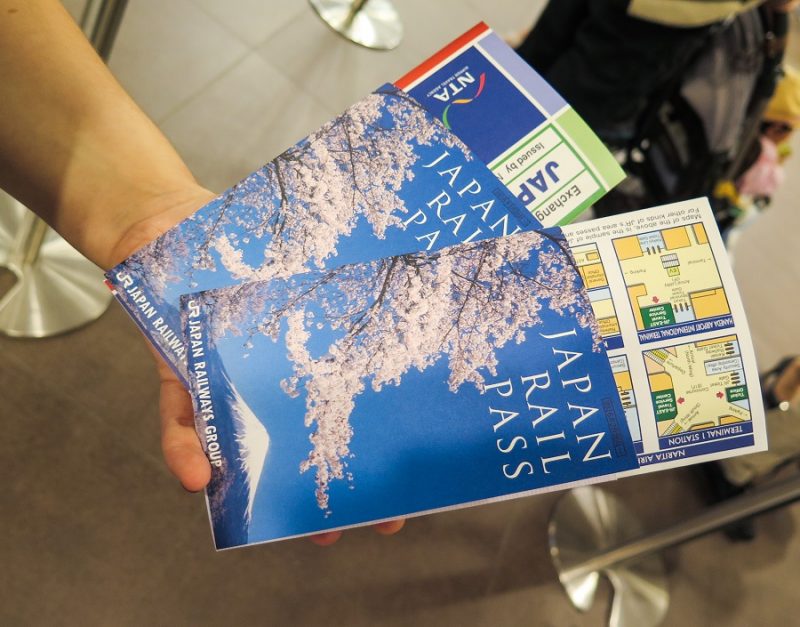
The Japan rail pass is worth obtaining even if you don’t plan on traveling extensively within the country, as this cost-effective travel option for the whole country is around the same price as a single ticket from Tokyo to Kyoto on a Shinkansen bullet train .
Book your Japan Rail Pass now
If you don’t plan on leaving Tokyo during your stay, you may want to consider applying for a Japanese IC card , a prepaid rechargeable travel card which can be used on trains, metros, buses, ferries, and cable cars within the city.
An IC card may also be used at certain restaurants, vending machines, and convenience stores throughout Japan. IC Cards can be purchased from an automated kiosk or ticket counter or at any major train station
Whether you are planning to visit Japan for a week or up to a month , there are a number of comprehensive Japanese routes and itineraries available to help you see everything you want to take in during your trip.
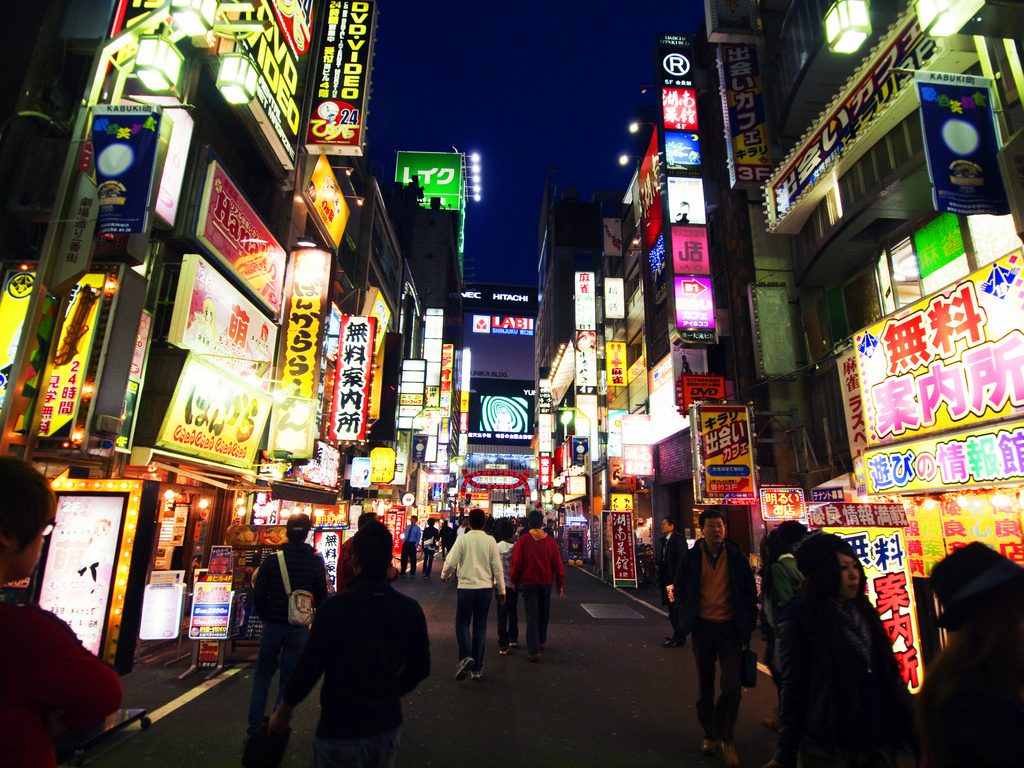
Apart from the itineraries for attractions in individual cities such as Tokyo , Kyoto , and Osaka , the following routes can help you get around come of the most appealing areas of the country in the time you have available:
- 7 days – Tokyo highlights, Kamakura , Kyoto, and the Todaiji Buddha statue in Nara
- 10 days – Tokyo, Takayama , Japanese Alps, Kyoto, Nara, and Osaka
- 14 days – Kyoto, Osaka, Nara, Hiroshima , Miyajima, Fukuoka , and the best attractions to visit in Tokyo
- 21 days – An in-depth itinerary including Tokyo, Kyoto, Takayama, Osaka, Nara, Okayama , and Hiroshima.
Phone and internet access
Travelers to Japan can gain internet access in a variety of ways. Upon arrival in the country, it’s a good idea to download the Japan Connected phone app, which indicates where you can find free WiFi at over 1,500 hotspots in Japan.
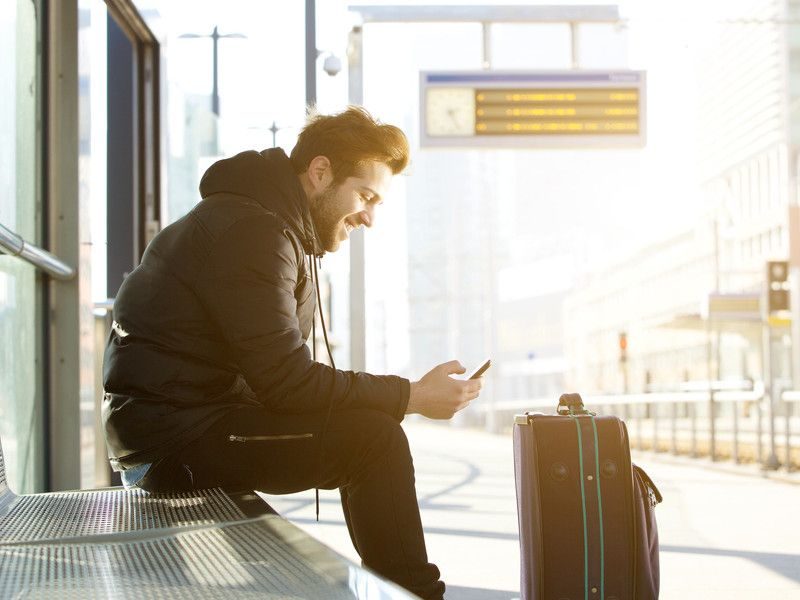
If you need to constantly access high-speed internet while on your travels, it is advisable to rent a pocket WiFi router, to which up to 5 devices can be connected. A pocket WiFi can be rented for between 5-30 days and can be picked up on arrival at a Japanese airport or from your hotel.
You also have the option to rent a Data SIM card to access the internet while in Japan, which permits you to use up to 500 MB of high-speed internet per day.
Dos and don’ts
Before visiting the country, you should learn the basic rules of Japanese etiquette to show respect to local customs and traditions .
Some common ‘Do’s include:
- Bowing as a greeting
- Taking shoes off when entering a Japanese home
- Showing appreciation for a home-cooked meal.
While in Japan, visitors should not :
- Point using chopsticks
- Blow their nose in a public place
- Wear inappropriate clothing when visiting temples and shrines.
Learn some Japanese phrases
While you may meet Japanese people who speak English while traveling in the country, it’s still a good idea to learn some basic Japanese phrases to help you get by. Locals will also appreciate the effort .
Some common phrases that are good to know include:
- Konnichiwa – “Hello”
- Ogenki desuka? – “How are you?”
- Sumimasen – “Excuse me”
- Kudasai – “Please”
- Arigato – “Thank you”
Bring some cash and look for 7-11
As not all of ATMs in Japan accept credit or debit cards issued overseas, it’s a good idea to bring some cash currency with you when traveling to the country.
Nevertheless, there are over 30,000 ATM locations across Japan that do cater to international travelers. This includes over 10,000 ATMs at Seven-Eleven convenience stores across Japan, where foreign cards such as Visa, Plus, American Express, Cirrus, and others are accepted.
Familiarize yourself with Hyperdia
Hyperdia is a useful transport planning mobile and web app which allows you to plan your itinerary to travel around Japan by train with precision.
Travelers who download Hyperdia have direct access to up-to-date schedules, journey times, and train information and prices. The app also allows you to access links to useful services in the selected locations, such as car rental companies, hotels, and restaurants.
Useful travel apps
Besides Hyperdia, there are a number of other travel apps for Japan which visitors may find useful during their visit to the country. These include a variety of apps to translate Japanese into English, to navigate the metro systems in the major cities, and restaurant and hotel-finder apps.
Don’t miss while in Japan
If you’re only planning a short stay in Japan, you should make sure you fill your itinerary with the top attractions and most typical traditional experiences. Find below some suggestions.
These small traditional inns are usually run by the same family for generations, and are typically located close to onsen hot springs or public baths in appealing natural surroundings. Most Ryokans in Japanese cities also have dedicated indoor bathing facilities.
The Gora Kadan in the Hakone region, Tamahan Ryokan in Kyoto, and Sadachiyo Ryokan in Tokyo are considered some of the best Ryokan in Japan .
These natural hot springs , fueled by volcanic activity, are perfect for taking a soothing, warming dip in the winter months, and are usually located close to Ryokan guest houses.
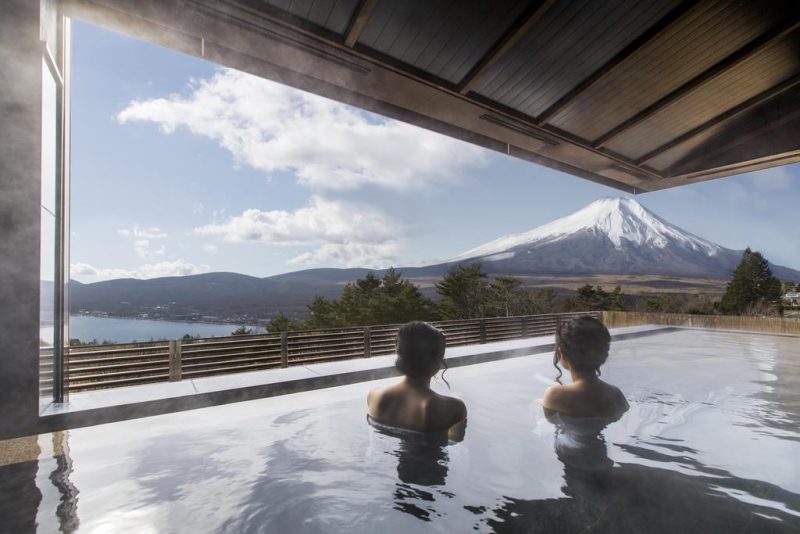
Onsen in Japan you should consider visiting during your stay include Kusatsu Onsen in Gunma Prefecture, any of the luxury onsen in Hakone , and the Noboribetsu Onsen in Hokkaido.
Cherry blossom
The Japanese cherry blossom , known as sakura , is one of the main attractions for travelers to Japan during the spring months, and sees Japanese parks and shrines come to life with the spectacular blooming of pink and white cherry flowers.
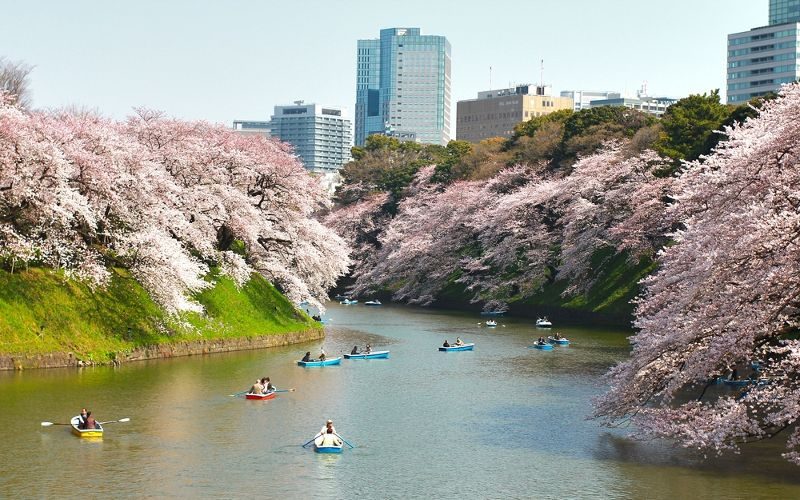
If having a picnic under the blooming cherry trees or taking part in a cherry blossom festival appeals to you, you should check the yearly Cherry blossom forecast before planning your trip to get the timings right.
In Japan, the phenomenon of the autumn leaves changing into vibrant shades of red, yellow, orange, and brown is called momiji , which means ‘ red leaf’, and can be just as stunning as the spring cherry blossom.
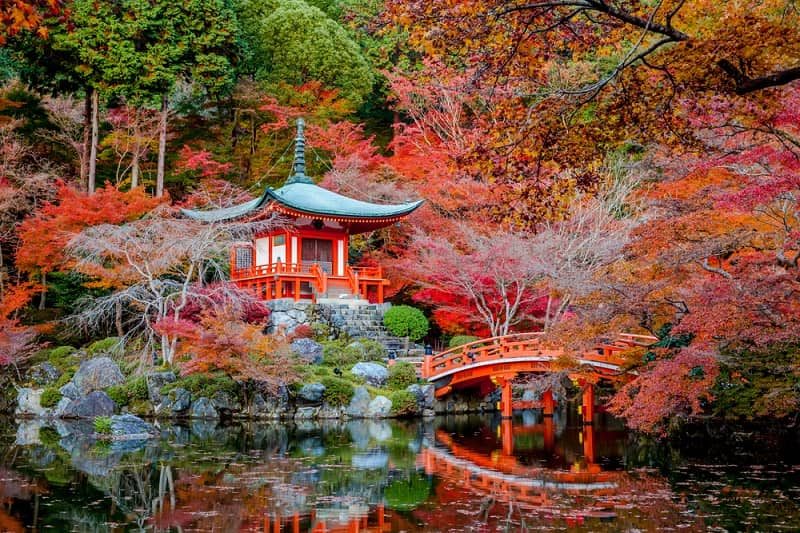
The act of Momijigari (red leaf hunting) reaches its peak in November , but in some regions the leaves can start turning as early as September or much later in the season, in December. Check the yearly Autumn leaves forecast to make sure you don’t miss out on the phenomenon.
Ride the Shinkansen
Using the Shinkansen network is the fastest and most convenient way to get around Japan, with the high-speed trains capable of reaching up to 320 km/h (199mp/h).
The Shinkansen lines are extensive and cover the majority of Japan , from Tokyo to Osaka and the south, to the northern parts of Honshu and the entirety of the island of Hokkaido.
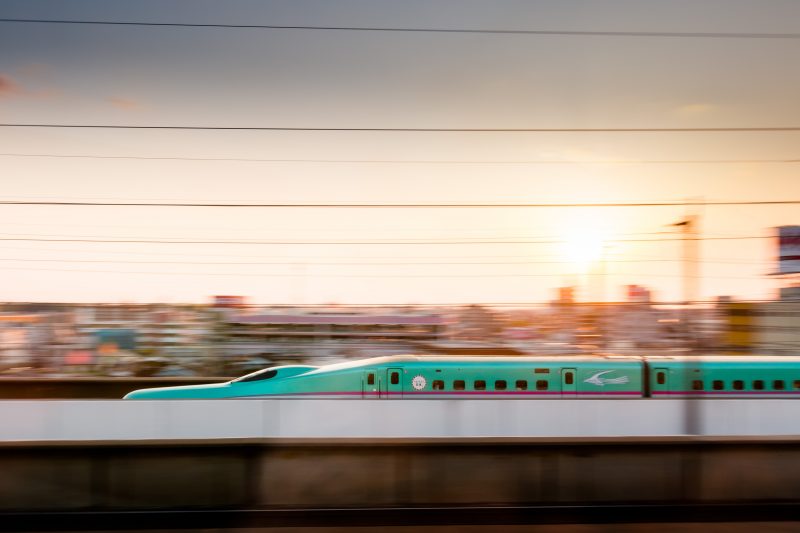
Holders of the JR Pass are granted unlimited access to all of the Shinkansen bullet trains during its validity. From October 2023, you can also ride the Nozomi and Mizuho Shinkansen if you pay a supplement. These run on the Tokaido, Sanyo, and Kyushu Shinkansen lines.
Top destinations in Japan
You may feel as though there are an overwhelming number of places to visit during your stay in Japan. While this may be true, there are certain cities and natural landscapes you really can’t msis during your trip, including:
Japanese top attractions
While there a vast number of enticing historical and cultural attractions in Japan to discover during a visit, if you are only planning a short trip you might want to consider prioritizing some of the following:
- Tokyo Imperial Palace
- The Chureito Pagoda overlooking Mt. Fuji
- The Fushimi Inari Taisha Shrine in Kyoto
- Osaka Castle
- Arashiyama bamboo forest near Kyoto
Of course, this is just a small sample of the many unique attractions in Japan, and if you’re planning a long trip the country, you’ll be able to discover much, much more.
Related posts
Related tours & activities.

- Switzerland
- The Netherlands
- National Parks
- Affording Travel
- Photography
- Responsible Travel
- Worldschool
- Wanderlust Guides
- Travel Planning
- Work with Us
Asia , Japan , Travel
Planning a trip to japan here’s what you need to know.
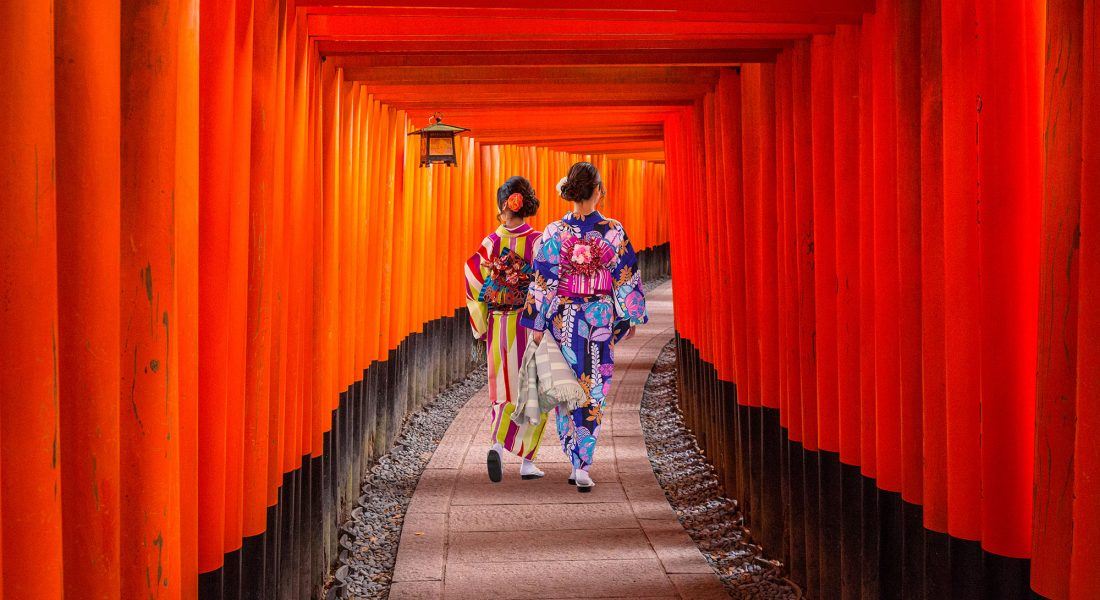
Planning a trip to Japan? This guide will walk you through the steps you need to take to start planning your visit to this amazing country.
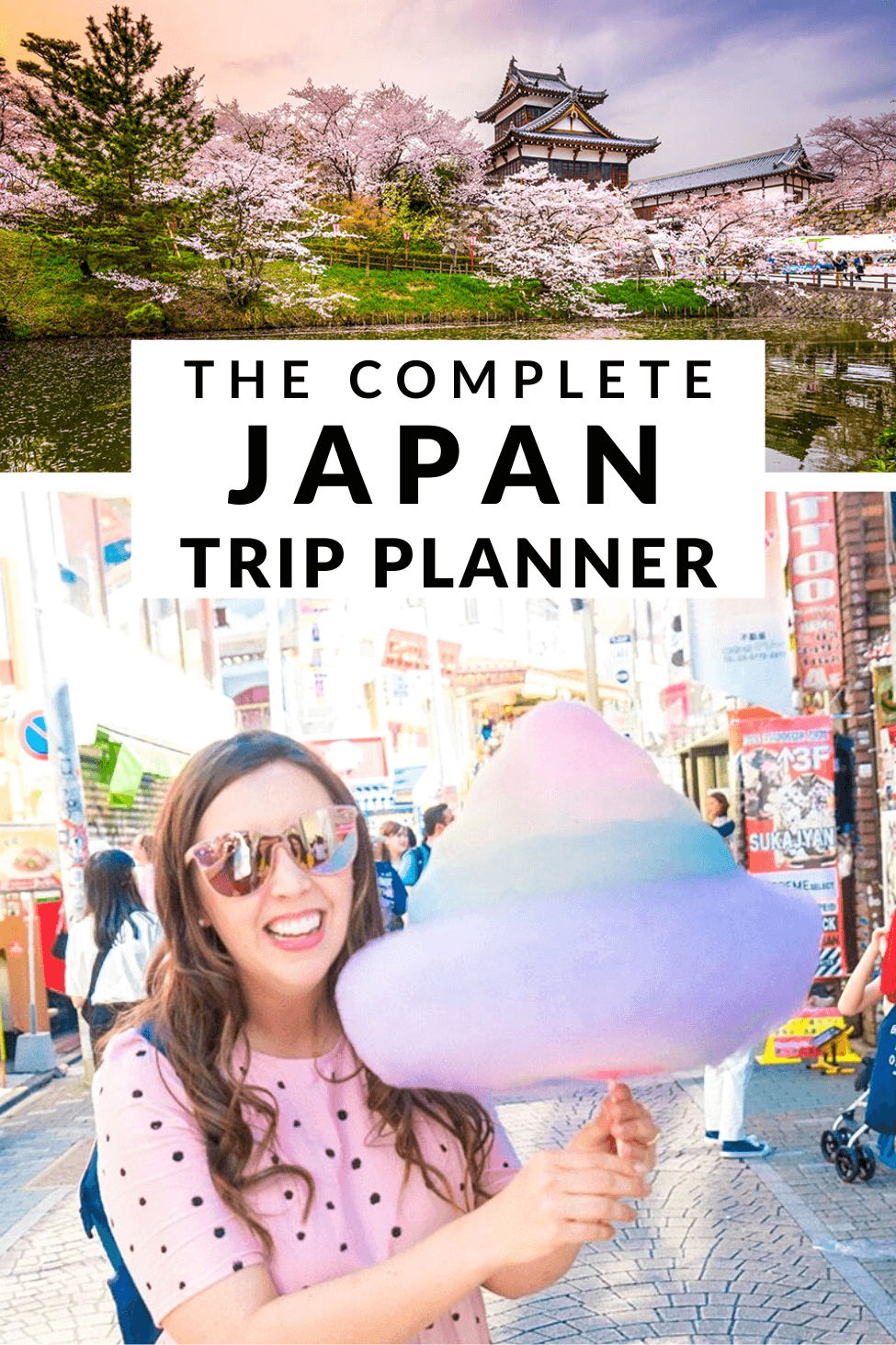
If you’re planning a trip to Japan, congratulations! I’m so excited for you to take a trip of a lifetime to one of my favorite countries! The planning stages are always so exciting, but can also be overwhelming. Before I visited Japan, I honestly didn’t have much of an opinion about it and didn’t really know what to expect. After spending several weeks in Japan, I fell in love and I know you will too!
We created this Japan trip planner to help you get started and stay organized. If it’s your first trip to Japan, this guide will be a huge help to get you started.
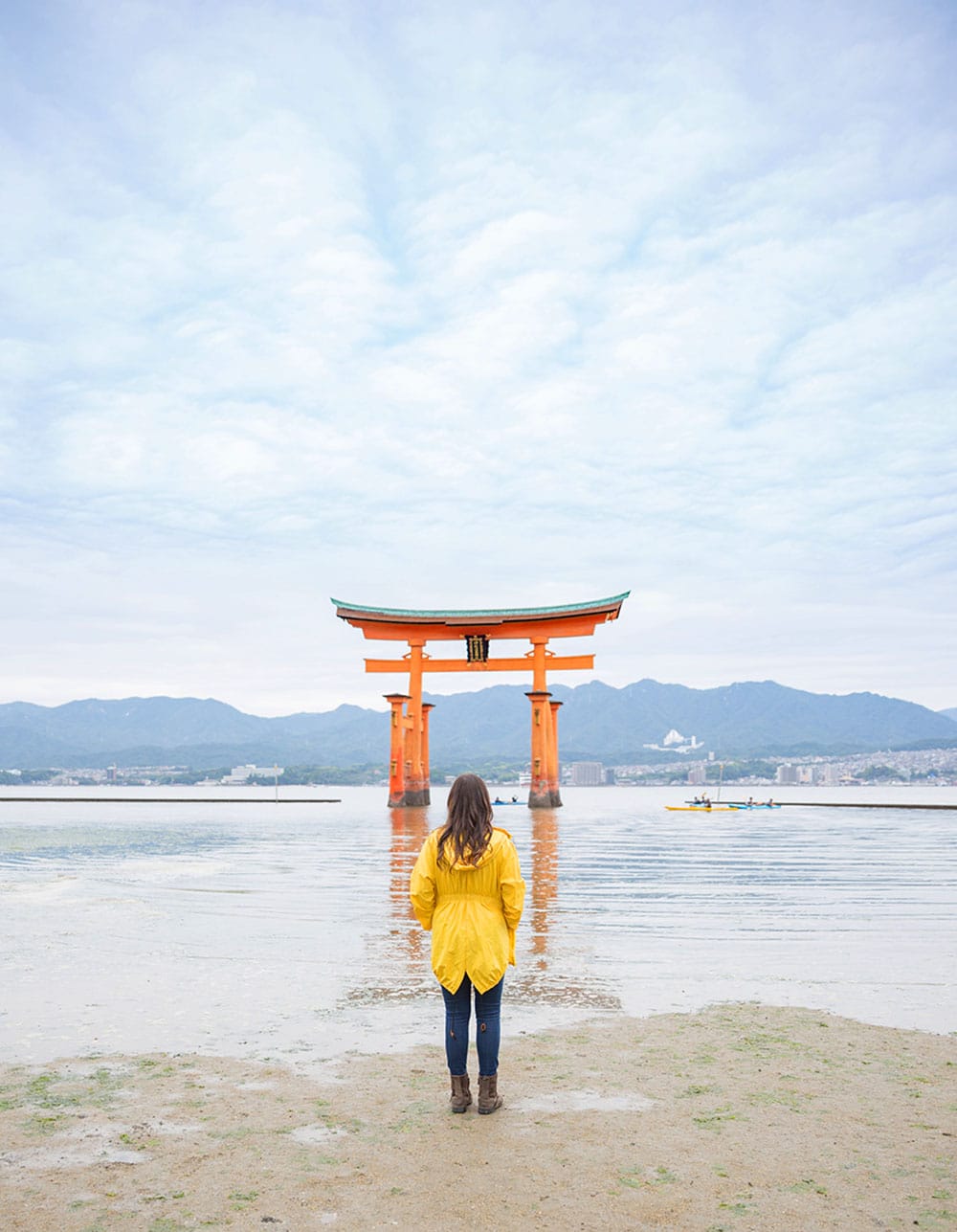
We’ve done Japan trip planning for hundreds of clients and for ourselves over the last several years. But in recent years we couldn’t keep up with the demand that clients had, so we created this guide to help those who we couldn’t personally help. This will walk you through planning your own trip to Japan and help you stay on track, making sure you’re not missing anything important.
Use our Japan Travel Planner
Before you start planning your trip to Japan, download our free Japan Travel Planner to help you keep your trip organized.
Decide When to Visit Japan
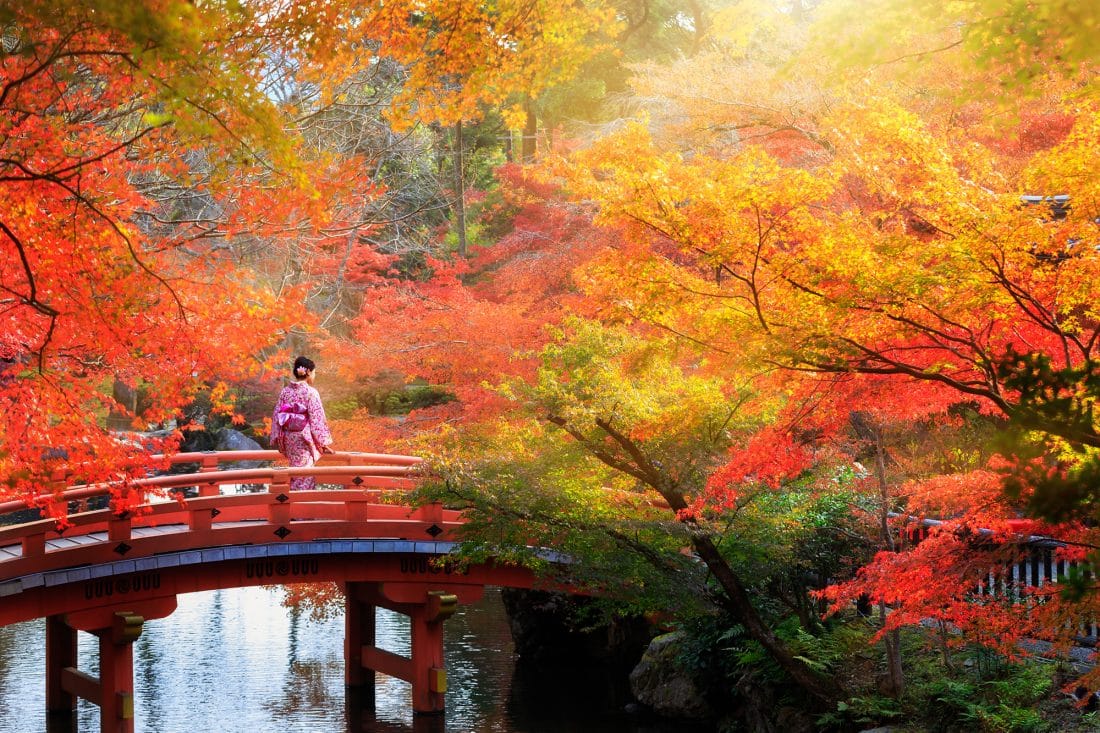
The first step is deciding when to visit Japan. This will depend on your own personal schedule and budget, but there are a lot of things to take into consideration. Ultimately the best time to travel to japan is when it’s convenient for you and works with your schedule and you can find decently priced tickets.
When is the best time to visit Japan?
Let’s go over the seasons in Japan to help you decide when you want to visit.
Winter – Winter is a very affordable time to take a Japan trip. Flights and accommodations will both cost less. You will also be battling fewer crowds during your time there. If you’re planning a trip to Japan in winter, the weather can be unpredictable, so keep that in mind. There are many locations in Japan that get snow, and quite a lot of snow too.
If you’re interested in visiting the snow monkeys of Nagano, then winter will be a must for you. If you love to ski, winter is the perfect season for you. Japan receives between 300 and 600 inches of snow each year from December to March. There are over 500 ski resorts in Japan from Hokkaido to Kyushi, so take advantage of the amazing snow in Japan if you love winter sports.
Spring – Spring is a great time to plan your trip to Japan. But keep in mind that prices can jump during Cherry Blossom Season at the end of March through April. It’s a gorgeous time to be in Japan and the cherry blossoms make for incredible pictures. There will also be many cherry blossom festivals around the country, so it’s an exciting time to visit. Keep in mind that spring in Japan can still be quite cold. Cherry Blossom season (aka Sakura Season) in Japan is the busiest time for tourism in the country. So that’s something to consider. If you’re looking for a budget trip to Japan, you might want to pass on Sakura Season.
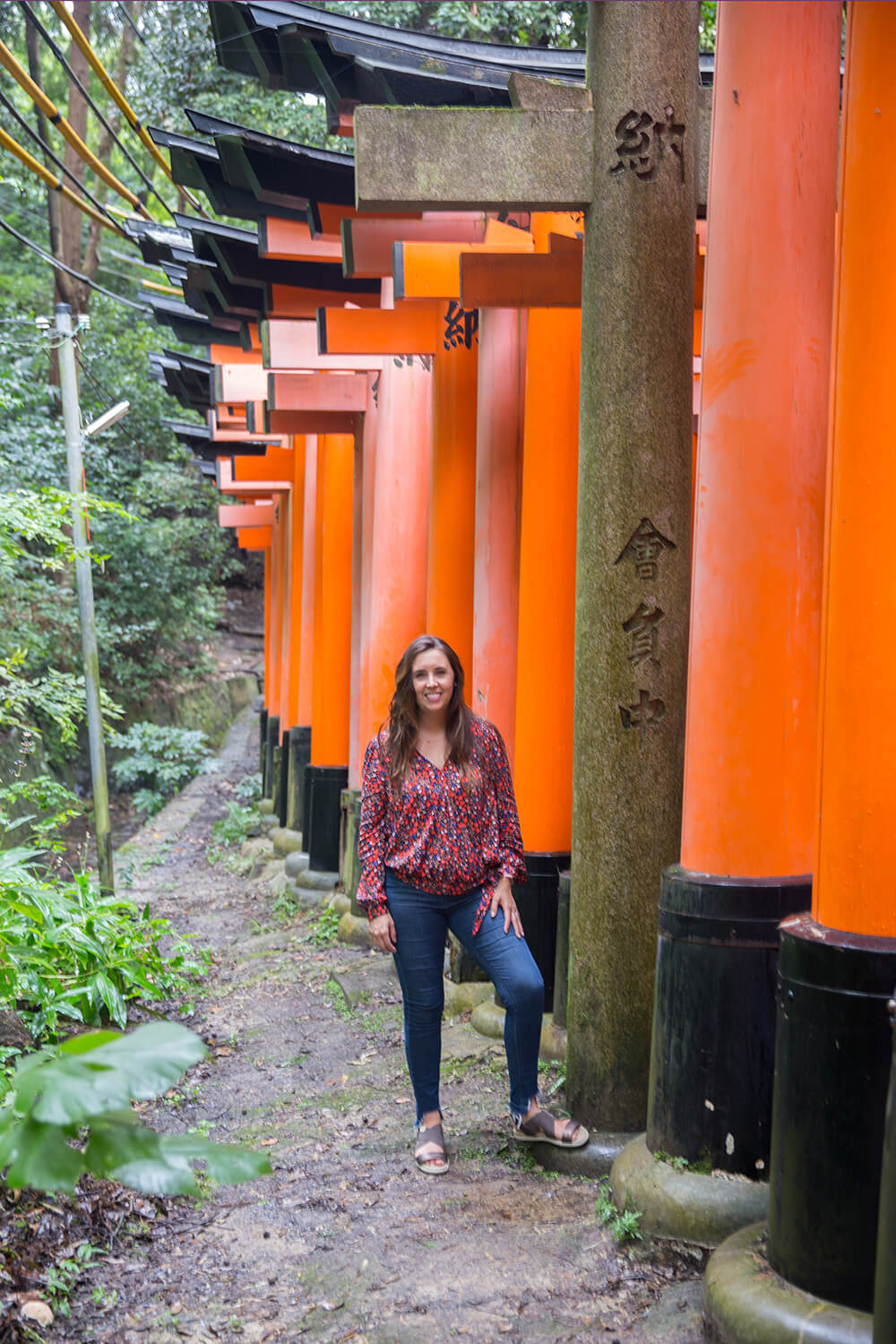
Summer – Summer is a good time to visit Japan, but also the second busiest time of year to go. You’ll find the warmest weather and the most crowds during this time. Japan can get very hot and humid. Even the last time I was there in October, it was hot!
Fall – Fall is another great time to plan your trip to Japan. Like the winter you’ll see fewer crowds, but also less rain and snow. As many tourists are back at school and work during the beginning of the fall, it’s generally a good weather time to go and avoid crowds. The weather can be quite warm, even into the fall, so if you’re looking for a temperate weather time to travel to Japan, the Fall is a good choice.
Think About What Kind of Trip to Japan You Want & Do Some Inspiration Browsing
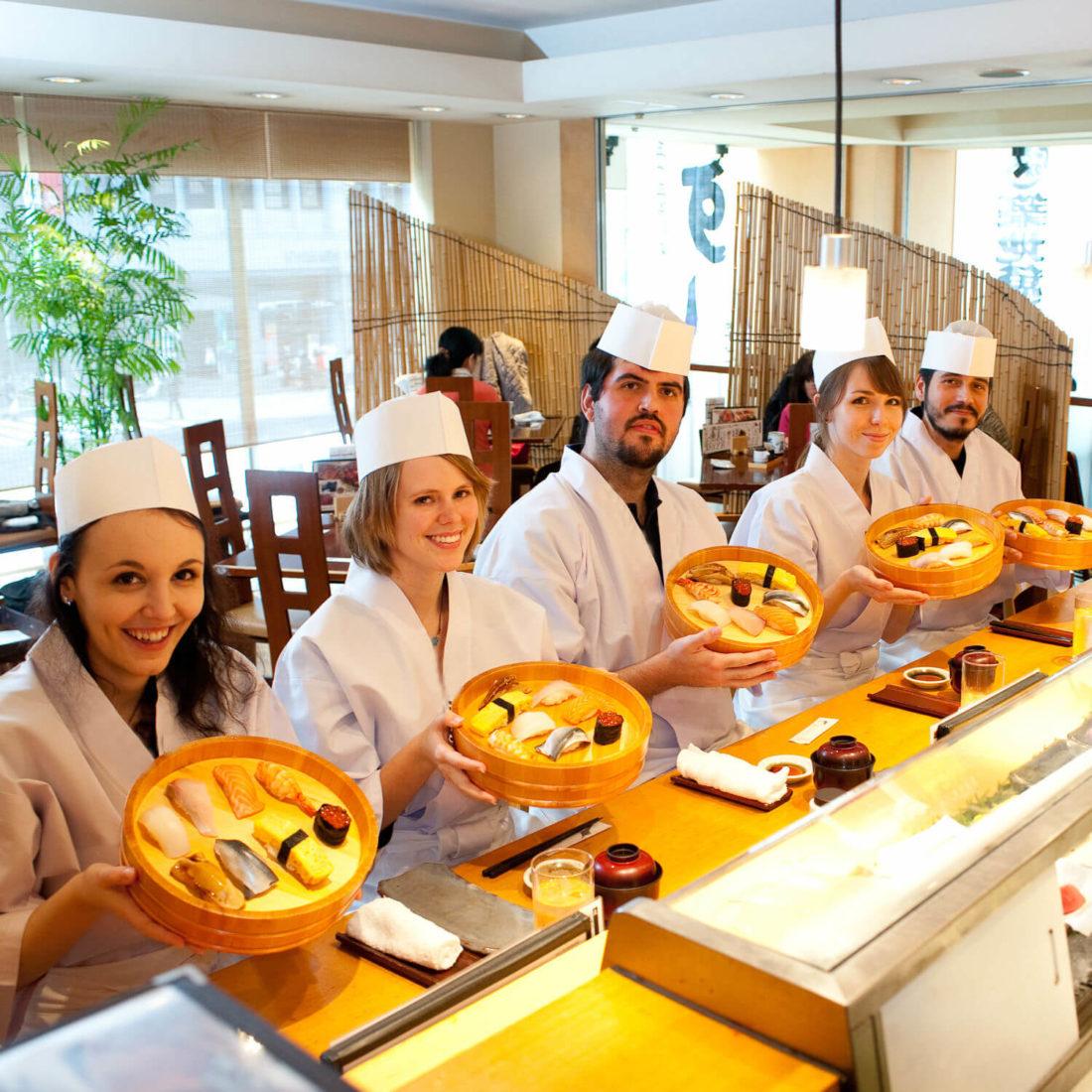
Before you really start getting into the nitty-gritty of planning a trip to Japan, consider whey kind of trip you really want to take.
Why are you taking this trip? Is it a vacation where you want to prioritize relaxation? Is it a once-in-a-lifetime trip to Japan where you want to prioritize seeing as much as possible, famous attractions and iconic sites? Do you want to stay in the city center and do a day trip to each location? Do you want to focus on a small group tour or private tours? Is it a romantic trip with your significant other? Is it to connect with Japanese culture?
Really think about these questions and what the answers are. Spend some time browsing Facebook groups, Pinterest, and Instagram and exploring ideas and places.
Figure Out Your Budget
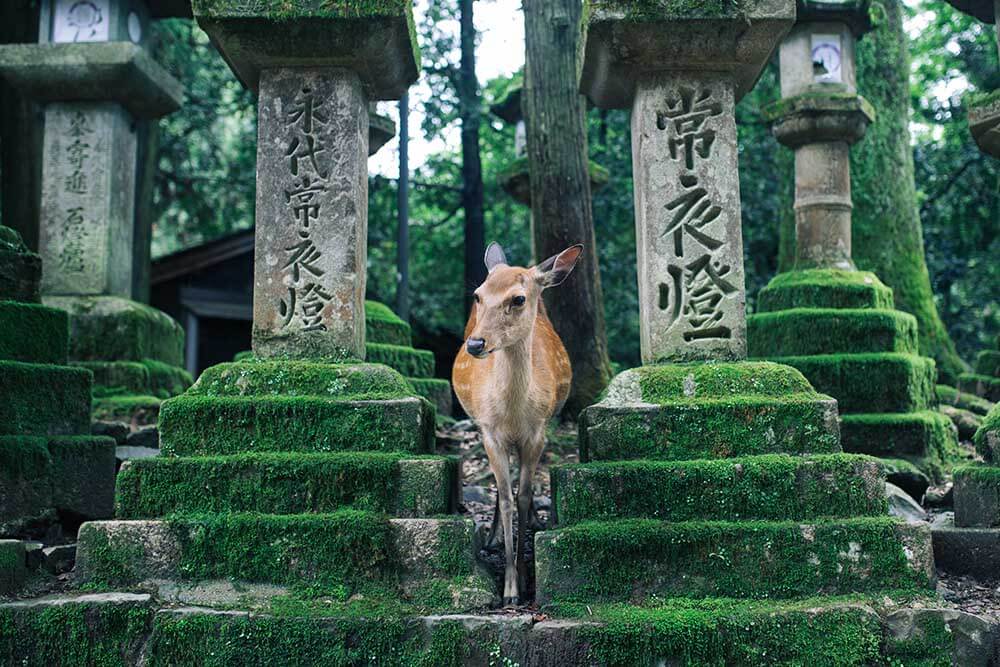
After you’ve done the fun part of planning your Japan trip, it’s time to get down to brass tacks and really figure out what kind of trip you can afford. So many people ask us how much a trip to Japan will cost.
This is such a subjective question that it is nearly impossible to answer. When you plan a vacation to Japan, determining factors for the cost of your trip are how flexible your schedule is, what kind of accommodations you prefer, how often you like to eat out, where you want to visit, what kind of tours you prefer, what kind of transportation you prefer, etc. As you can see, it’s a very personal decision.
Japan is definitely one of the most expensive countries to visit, compared to the rest of Asia. It’s probably the most costly trip to Asia you can take, but I promise it’s worth it.
I would plan on at least $3,000 per person for a Japan vacation.
Check Logistics for Entering Japan
In your next step in planning a trip to Japan, be sure to check that you can legally enter Japan and that there are no extra steps that need to be taken. Most people living in the USA, Canada, the UK, and Australia won’t need a visa to visit Japan for up to three months.
Japan has essentially dropped all other requirements regarding the word which shall not be named, so you’re good in that regard.
Decide Where to Go in Japan
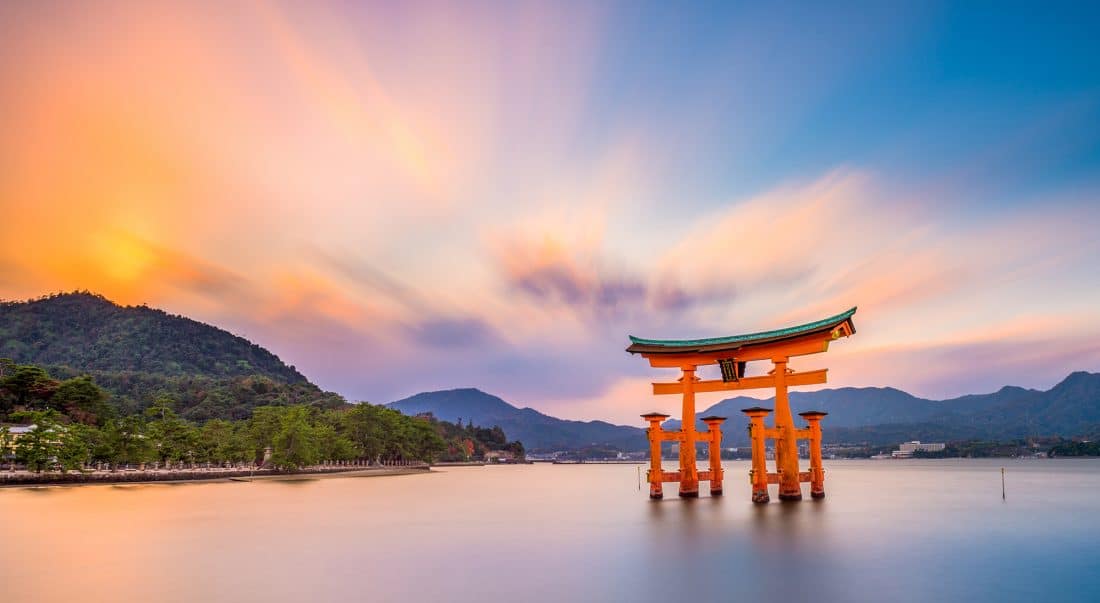
At this point in your trip planning process, it’s time to decide where you want to go in Japan. This can be one of the most difficult decisions to make while planning.
Japan is not really that big, but this island packs in a whole lot. The nice thing is, you can get all over Japan pretty quickly with the Shinkansen bullet trains. Where you go will depend on your preference, budget, time of year, and length of your trip. Besides the most popular cities in Japan, consider visiting some lesser-known places as well. You may want to go all over the country or stick to one or two regions.
Figure out Your Itinerary

Once you’ve figured out where you want to visit in Japan, it’s time to nail down your specific itinerary. Make sure you’re not overscheduling yourself. Leave plenty of time to wander and relax, even if you’re packing in the destinations. If you’re struggling to pick a Japan itinerary, try looking at this Japan Itinerary we’ve created that includes step-by-step instructions and day-by-day itineraries for your first visit to Japan.
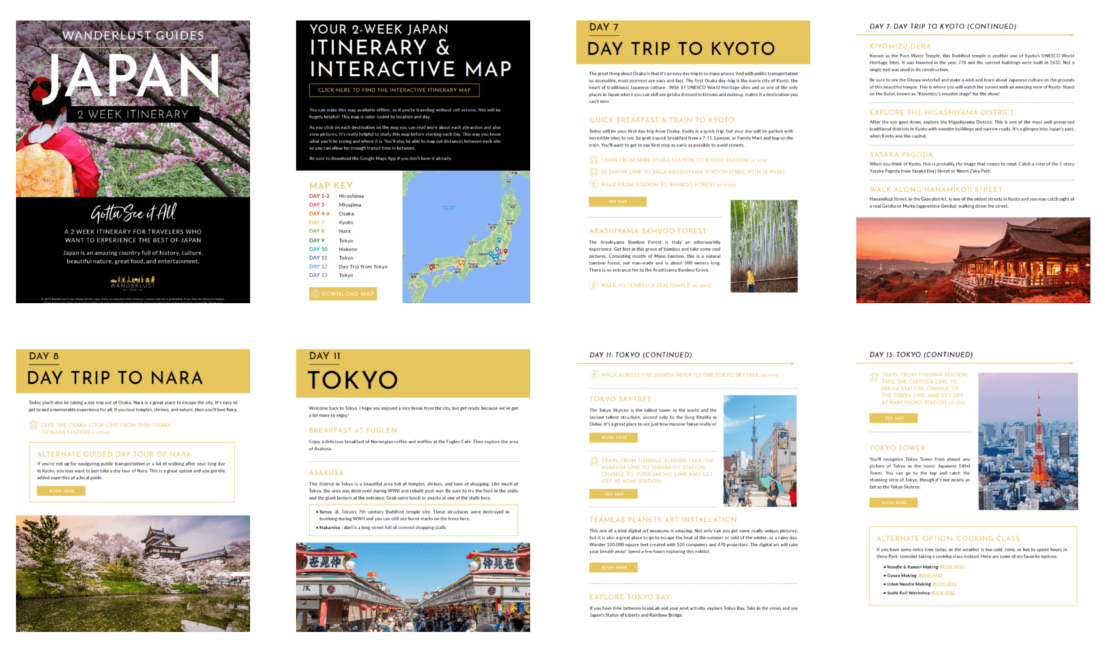
Book Your Flights
Once you’ve figured out your itinerary and know where you want to begin and end your trip, it’s time to start looking at flights. We recommend setting a travel alert on your favorite flight search engines like Hopper, Google Flights, Kayak, or Skyscanner. Read more of our tips for finding cheap flights.
You’ll most likely want to fly into one of the major airports in Japan. The most affordable International airport to fly into is usually Tokyo. There are two international airports in Tokyo: Haneda ( HND ) and Narita ( NRT ). The second most affordable option will probably be Osaka ( ITM ).
Purchase Travel Insurance
In these uncertain times, it’s never been more crucial to have travel insurance. You just never know. We highly recommend getting it as soon as you book your flights.
Book Your Accommodations
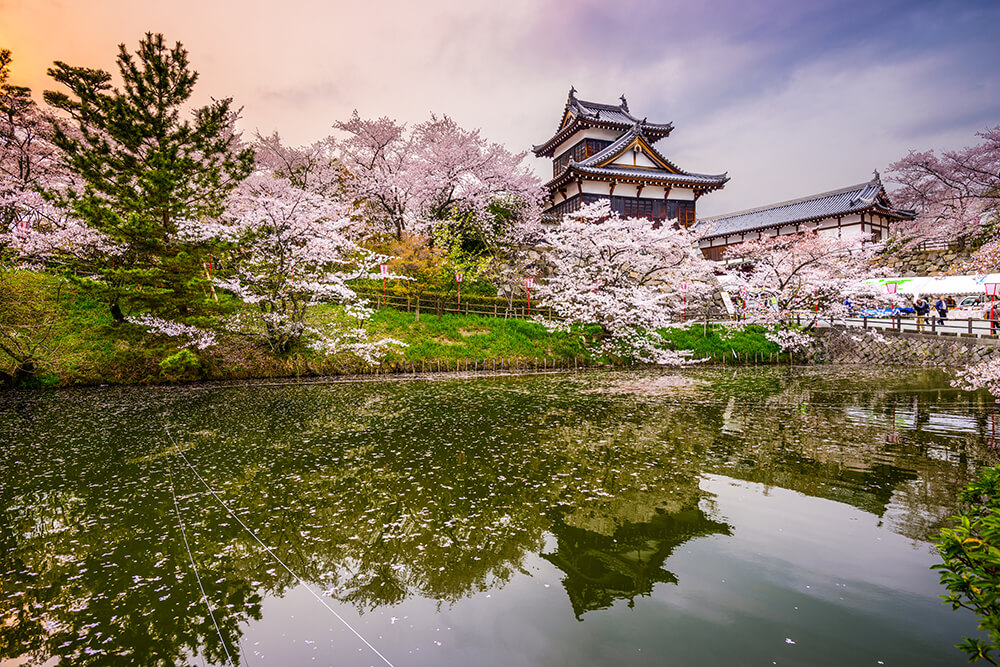
Once your flights are booked and your itinerary is pinned down, it’s time to start booking your accommodations for your trip to Japan. We recommend only booking hotels on official booking sites that offer full refunds, which is almost every hotel these days. But always remember to read the fine print.
I find the best way to search for hotels, houses, and apartments in Japan is to use Expedia . It allows you to search not only hotels, but also home rentals, similar to Airbnb, but better because of the great cancellation policies and customer support that booking offers. Other sites we like to use are Hotels.com or Booking.com .
For home rentals, we always use VRBO (Vacation Rental By Owner) . We used to use Airbnb, but their fees have just gotten crazy and their customer service is just bad!
Be sure to book a Ryokan stay for at least one night. A Ryokan is a traditional Japanese inn that includes dinner, spa time, and a room. It’s a must when visiting Japan.
You may also want to consider a stay in one of Japan’s famous capsule hotels. It’s a unique experience.
You can also check out my accommodation guides on Where to Stay in Japan.
Book Tours and Activities
Once your accommodations are booked, you’ll want to start looking at activities, tours, and cooking classes. We love booking local tours that really elevate your time in Japan and make it more meaningful. Some of our favorite tour companies to book through are Get Your Guide , Klook and Arigato Japan.
Package Tours in Japan
If you’re feeling overwhelmed by the tours and options in Japan, you can always book package tours in Japan. These can be a great way to explore areas without stress. If you’re organizing a large group or a family reunion in Japan, these can also be great options if you’re not up for planning a trip to Japan all on your own.
These companies take care of most of the logistics. Just be sure to read recent reviews and have all your questions answered before booking. Always check refund or rescheduling policies.
Book Your Transportation
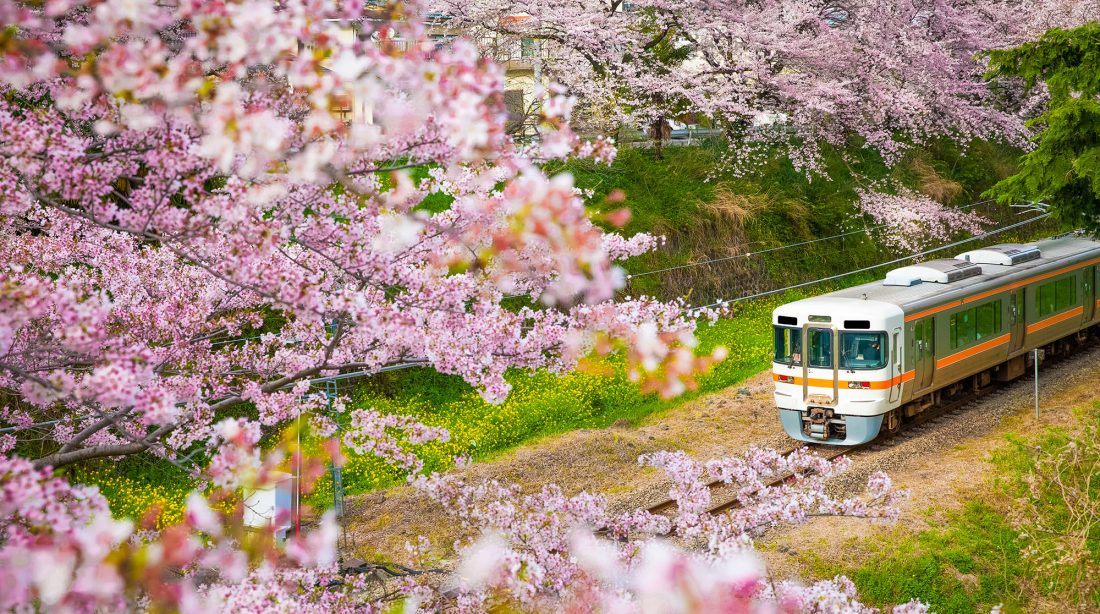
Now that your tours, activities, and classes are booked, you can move on to booking your transportation within Japan. Depending on where you’re going, you’ll need to decide if you’re going to need to use the Shinkansen bullet train in Japan. If you do, you may want to consider purchasing a Japan Rail Pass before your trip. The JR Pass can only be purchased and mailed to you outside of Japan. You can book your JR Pass online here.
Make a Food Bucket List and Make Dinner Reservations Where
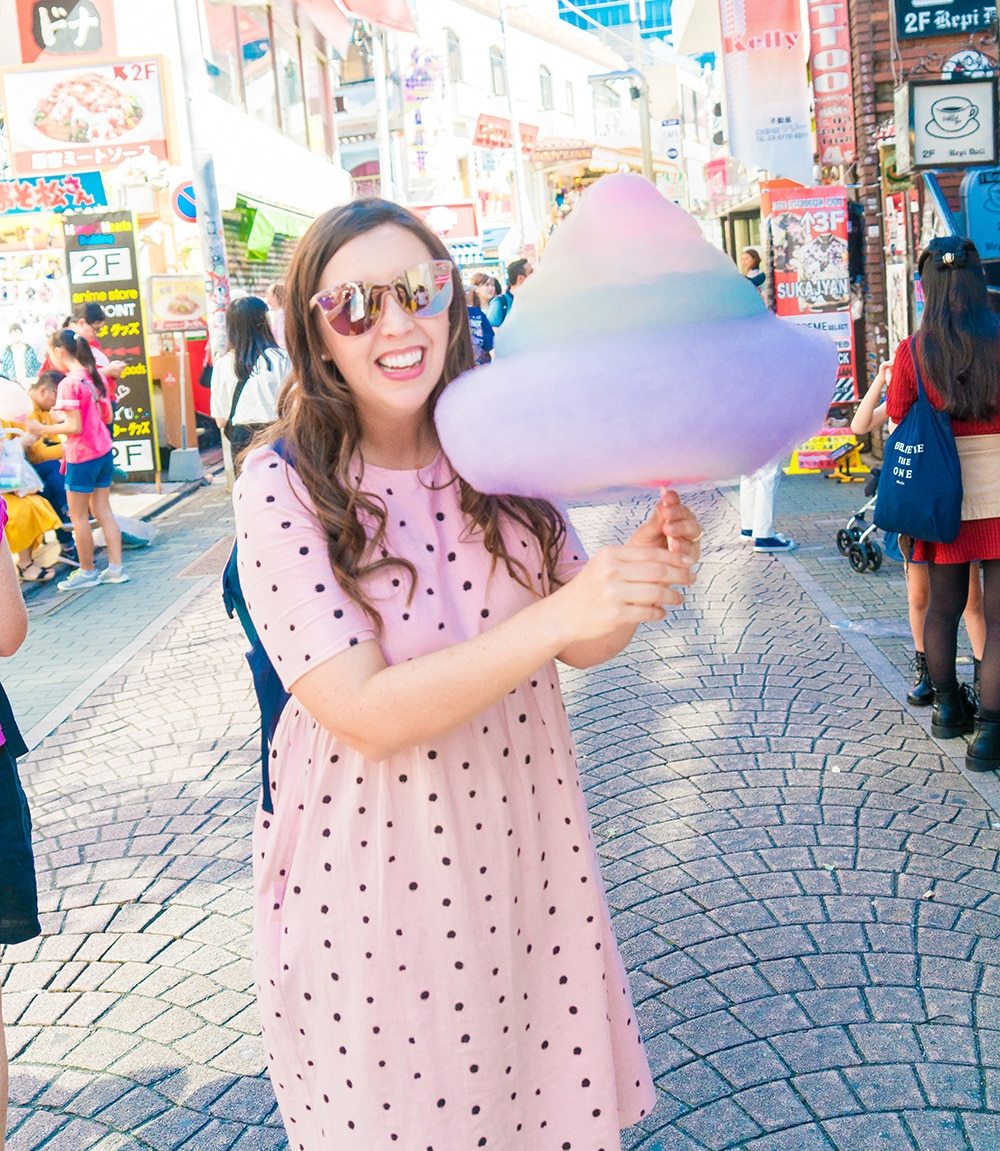
Japanese cuisine is known for its emphasis on fresh, high-quality ingredients and beautiful presentation. Rice, seafood, and noodles are staple ingredients in many Japanese dishes, while vegetables and soy-based products such as tofu are also commonly used. Popular dishes include sushi, ramen, tempura, and udon noodles. Japanese food culture also places a strong emphasis on seasonality, with many dishes and ingredients changing with the seasons. You’ll also find some really fun desserts like cotton candy bigger than your head!
Make sure you take some time to explore the foodie scene of Japan. Book a food tour or a cooking class and bring home a new skill with you.
Check out our Japan Food Guide for some good ideas.
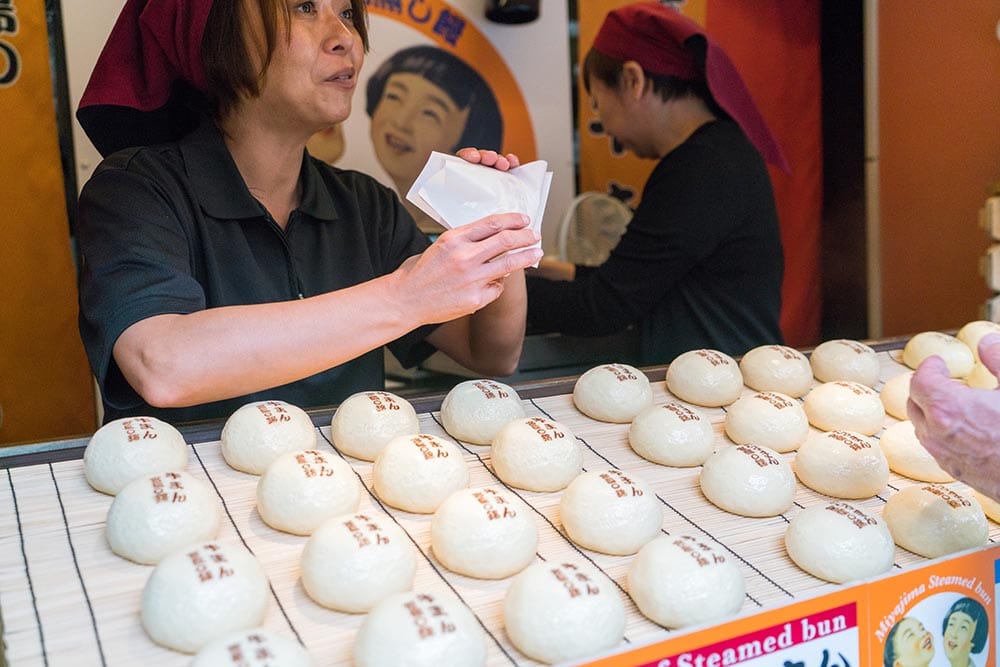
If you’re eating at any restaurants in the popular cities of Tokyo, we recommend making as many dinner reservations as possible. You don’t want to schedule every night and some restaurants may not offer the option. Allow room for exploration and spontaneity, but it will alleviate some stress if you can book places ahead.
One thing Japan is known for is themed cafes. Find one that interests you and try it out. Some options are the Own Cafe, Vampire Cafe, Kawaii Monster Cafe, and Alice in Wonderland Cafe.
Make a Packing List & Shop for Supplies
Once you’re done with the bulk of your Japan trip planning, it’s time to make a packing list and shop for any items you may need before your trip. What you need will depend largely on the time of year you take your Japan trip and what season you visit.
Make Last Minute Preparations
Planning a trip to Japan should be done one year to six months in advance, but there are a few things that need to wait until just before you leave.
Internet Access
If you’re planning to use international data during your trip to Japan, you’ll need to contact your cell phone provider, plan on purchasing an international SIM card on arrival, or use a portable WiFi Device. We use this one .
Contact Credit Card Companies
Before you visit Japan, be sure to contact your bank and your credit card company to let them know that you’re traveling abroad. If you’re looking for a great international credit card, we love our Amex Platinum card . It offers so many benefits, including airport lounge access, Global Entry, TSA Pre Check, Airline Credit, Clear, rental car insurance, and more!
Apply for Amex Platinum Card
Sign up for STEP
Before your Japan trip, sign up for STEP (Smart Traveler Enrollment Program). This is run by the State Department and is a free service that allows US Citizens and nationals traveling abroad to enroll their trip with the nearest embassy. This is important if there is a national emergency or if something should happen to you during your trip. You can receive alerts from the nearest embassy, input emergency contact information, and be accessible during an emergency. We have many friends who work at embassies and they agree that this is the most important step (see what we did there?) when planning a trip to Japan.
Plan for Spontaneity
Learning how to plan a trip to Japan is great, but be sure to leave room in your Japan itinerary for fun and spontaneity. Leave time to get lost, make new friends, have fun, and explore Japan like a local. Plan on something going wrong at least once during your trip! We always say “it’s either a good time or a good story.” Hopefully, your Japan trip is both ! Happy planning!
I hope this Japan travel planner has been a helpful tool to you and that you’re able to stay organized and plan a trip to this amazing country efficiently.
Wanderlust Crew
Leave a reply cancel reply.
Your email address will not be published. Required fields are marked *
Notify me of follow-up comments by email.
Notify me of new posts by email.
This site uses Akismet to reduce spam. Learn how your comment data is processed .
The Ultimate Japan Trip Planner
How to design a dream trip to japan without stress.
Curious how we arranged our stress-free trip to Japan?
Planning a first trip to the country can feel a little daunting! When we were planning our first trip to Japan we were completely overwhelmed by the complex train system, the massive stretched-out cities, and the seemingly endless number of sights that made it hard to choose, even for a full-month trip.
We also know by experience how complicated things are when you arrive in Japan for the first time. In fact, when we had just landed in Tokyo and jumped on the first train to get to downtown we already had to pay a supplement because we opted for a train that was not covered by our fare.
We often hear how people are a bit reluctant to plan their first trip to Japan, but don’t let all of this stop you from visiting this beautiful country.

We created this Japan trip planner to stop you from making the beginner mistakes we made and to grant you a perfect stress-free trip.
The document guides you step by step through the preparations and takes the stress out of your trip planning.
It contains all the information you need to plan an amazing vacation in the land of the rising sun for just the price of 2 coffees or a takeaway lunch.
The Ultimate Japan Trip Planner: How to design a dream trip to Japan without stress

"I’m using your Trip Planning Guide. It’s a great aid and one less thing I have to think about organizing. Love it!"
(Bought the planner in May, 2023)
"The planner has been really helpful for my wife and I as we plan our first trip to Japan and has given us a good insight on how to spread out our accommodation bookings. Cheers and keep up the good work."
(Bought the planner in January, 2023)
"Thank you for sharing the Japan Trip Planner. I purchased it yesterday and am very pleased."
(Bought the planner in October, 2022)
“You both did a beautiful job of the design, not forgetting any details. Love them!”
(Bought the planner in June, 2021)
"It is a terrific resource and a great starting point for us to build our trip. First time in Japan so this is really helpful."
This planner is for you if....
- You always wanted to travel to Japan on your own but didn’t know where to start...
- You feel overwhelmed by what there is to do and to see in Japan....
- You’re wondering what to pack and take with you to Japan...
- You’re wondering if you will benefit from a Japan Rail Pass, are looking for alternatives, or want tips on how to calculate if you will save with a pass or not!

About the authors
We are Sylvia & Kris, 2 passionate travelers, and we have been exploring the world independently over the last years. We like the freedom that we have to explore places that we otherwise wouldn’t have seen with an organized tour. We completely fell in love with Japan and spent an amazing time in the country in 2018. We created this Japan trip planner based on our experience of the country so you can enjoy Japan as much as we did.
Japan Travel Planner
Here is how our japan travel planner will help you to plan your dream trip to japan..
- We’ve mapped all preparations on a timeline so you know what to do and when to do it.
- Overwhelmed by the many highlights of Japan? This document includes itinerary planners for all three of Japan’s major cities, Tokyo, Kyoto, and Osaka.
- Not sure if you should take a JR pass? Japan’s train system is complex for first-time travelers. The included Japan rail planner explains how to plan your route using Japan’s vast train network. We discuss 3 key sites for planning your route and explain in-depth how to use them. You will learn everything you need to know about riding the trains in Japan and you will know if you can benefit from a JR pass or not.
- We have also included some useful checklist for your planning and packing. These lists will ensure you arrive in Japan with everything you need without overpacking.
- Don’t lose sleep over your budget. The included budget and expense sheets mean that you can keep track of how much you spend during your planning as well as in Japan.
The benefits don’t stop there. This document is also created to take with you to Japan. Write down your carefully crafted Japan planning on the provided pages and use them as a guide during your trip.
In the blink of an eye, you will be able to retrieve all the crucial information about your vacation.
Detailed list of everything included in this Japan Travel Planner
- Daily Planner – Outline your everyday plans and take them with you on vacation so you don’t miss any of the sights you absolutely want to see
- Budget Planner – Keep track of your budget while planning
- Expense tracker – Note your daily expenses while traveling and avoid nasty expensive surprises when back home
- Travel checklist mapped against a timeline – Follow this checklist and forget about those stressful days in the run-up to your vacation.
- Itinerary planners for Tokyo, Kyoto, and Osaka – We brought together all key sights of these cities in a handy one-page overview to help you with your planning.
- Share your travel plans with your loved ones who stay at home – let them know where you are and how to contact you if needed
- Useful Japanese Phrases – A selection of useful Japanese expressions to interact with Japanese in a courteous and polite way. Useful if you need directions to your hotel or want to join Tokyo’s vibrant nightlife.
- Packing List for your Japan trip – Use this packing list and you’re sure to arrive in Japan with everything you might need.
- Outfit Planner – Are you a serial overpacker? Use this sheet to plan your outfits so you know exactly how many dresses and shoes you will need to stuff in that suitcase.
- Emergency contacts – Write down all emergency contacts on this paper and you will have them within easy reach whenever something might happen. We pre-filled Japan’s emergency numbers for you.
- Photo Bucket List – Are you an avid photographer? Use this sheet to start keeping track of those iconic photo locations before you even set foot in Japan.
- Food Bucket List – Foodies will love Japan’s varied and healthy kitchen. Ready to taste all those delicious dishes? Make a note of everything you want to taste and make reservations in your favorite restaurants.
This is an editable PDF. Depending on your preference you can complete everything digitally or print the templates.
Buy your Japan Trip Planner now and get these 4 amazing bonuses for FREE

Free Bonus #1: Japan Train Planner ($17.97 value)
Prepare for your train journey in japan. Discover everything you need to know about train travel in the land of the rising sun and follow our step-by-step guide to learn if you can benefit from a Japan Rail Pass.
Updated for the JR price increase in 2023. 36 pages with more information than ever.

Free Bonus #2: Kyoto 2-day Itinerary ($2.97 value)
Take our nicely formated 2-day Kyoto itinerary with you on your mobile phone. Read about the places you visit when you visit them without the need for a Wifi device.

Free Bonus #3: Tokyo 4-day Itinerary ($2.97 value)
Are you going to visit Japan’s capital? Take this amazing 4-day itinerary with you on your mobile phone and discover all the city’s highlights.

Free Bonus #4: Osaka 2-day Itinerary ($2.97 value)
Your fourth bonus is this image-rich Osaka itinerary. Together these 4 bonuses will allow you to explore Japan’s major cities without a WiFi Device.
Get your copy now and you will also get all the above bonuses!
How is this guidebook different from others.
This isn’t a guidebook but a trip planner that will help you plan your trip at ease.
How does the purchase work?
We use Stripe to handle the payment transaction. Your transaction is completely secured by Stripe. You can use a credit card to make your payment.
Once the transaction is completed you will be taken to a page where you can donwload the documents.
A few minutes after you’ve made your payment you will receive a confirmation email that also includes the link to download your documens. You can save this e-mail in case you want to redownload the files in the future.
The email will be coming from [email protected]. Please whitelist this e-mail address or add it to your contacts to ensure that the mail with the download link does not go to your spam folder.
What to do if you don't see the e-mail:
- Double-check if you have entered a working e-mail address.
- Check your spam, junk, promotional, ... folders. Search for an e-mail from [email protected].
- Contact us if you cannot find the e-mail
Can I download the book as many times as I want?
Yes, once you’ve purchased this e-book it remains yours forever.
Can I get a refund after purchase?
Unfortunately, we cannot offer any refunds because this is an instant download. However, don’t worry, we’re committed to your satisfaction. Be sure to contact us if you have any problems with the travel planner. Click here to send us an email .
What happens if I have problems downloading the book?
We’re here to help! Don't hesitate to send us an email in case you experience problems with your download.
Have a great trip!

How to Plan a Trip to Japan: a Step By Step Guide
By: Author Kris
Posted on Last updated: December 6, 2023
Wonder how to plan a trip to Japan? If you don’t know where to start, or how to plan a trip to Japan, you have come to the right place.
Planning a trip to Japan, a country with a completely different culture, an unintelligible language, and several stretched-out megacities, can be a little overwhelming.
But let me reassure you immediately, it is very easy to travel independently in this country.
Japanese are welcoming, helpful, and well-organized. You will find yourself at home in this country in no time.
In this Japan travel blog post, we will explain step by step how to get started with your Japan trip planning.
We share a lot of travel tips for Japan, how to get to the country of the rising sun, where to stay, all of the best things to do for first-timers, and everything else you need to know to craft a perfect holiday.
We have some example itineraries to get you started, we will cover what to pack and the best travel time.
We also mapped some things against a timeline so you know how far in advance you should take care of some of the more important things.
This step-by-step guide is also handy if you are only planning a trip to Tokyo, Kyoto, or Osaka.
Ready? Let’s start working on this amazing Japan trip!
There is a really good chance that this post contains affiliate links. If you click one of them, we may receive a small commission (for which we are deeply grateful) at no extra cost to you.
Table of Contents

When to Visit Japan
A good item to start your planning with is to record your travel period. Once you’ve decided on a certain period you can start looking for flights.
Below is an overview of the different seasons in Japan with the pros and cons of each season.
Best Time to Travel to Japan
Japan is a long and narrow, stretched-out country. It has a mountainous region in the North that attracts skiers in winter. The Southern island of Okinawa is a popular beach location and scuba divers are raving about its untouched colorful underwater world.
The most popular tourist hotspots of Tokyo and Kyoto are located between those two regions.
The best time to travel to Japan obviously depends on your interests and the region you want to visit.
The best time to travel to Japan for first-time visitors who want to see the highlights of the country is Spring and Autumn.
We would advise against traveling in summer because the cities are very hot and humid in this season.
The Sakura is a bonus of traveling in Spring, the cherry blossoms are an attraction in and by themselves.
Here are some more details about the different seasons.

Spring is an excellent season to visit Japan. Certainly, if you can arrange your plans to coincide with the so-called Sakura, the famous cherry blossoms.
The cherry trees start blooming in the South of Japan and gradually transform the entire country into a colorful floral display.
The northern peninsula of Hokkaido is the last to showcase its beautiful colors.
It’s difficult to predict exactly when the flowers will bloom.
You can check the predictions and forecasts on the site of the Japanese tourist board and the Japanese Meteorological Corporation. The predictions become more accurate as the date approaches and they’re not really useful at this stage of your travel planning.
The period can vary a few weeks every year. It’s best to plan your trip across the country in a southerly direction. It guarantees that you will see the blossoms at their best in at least one location.
We witnessed this glorious natural phenomenon in Tokyo , Kyoto, and Osaka. The cherry blossoms attract huge numbers of people all over the country, the Japanese even organize Hanami in the parks. (A Hanami is a flower-viewing party)
You can see cherry blossoms all over the world, but the atmosphere in Japan during this time of year is one you won’t find anywhere else.
The Sakura blossoms draw in large crowds, so this is a busy and somewhat more expensive time to travel to Japan.
Right after the Sakura Season is another busy travel week, the “Golden Week”. It is formed by 4 national holidays, the first of which is Emperor day on April 29. The other days are Constitution day on May 3, Greenery day on May 4, and Children’s day on May 5.
Many Japanese take advantage of this period to explore their own country, which makes the popular tourist attractions much busier than usual. This, in turn, causes the hotel rates to increase as well.
Temperatures will range from 15 degrees Celcius to 25 degrees Celcius. In March and April, you may experience an occasional shower, during May it starts raining more often and more heavily.
Insider tip: Did you know that we also have a travel planner that you can download and use for your trip planning? Check out our Japan travel planner ! This document will help you plan your trip smoothly.

Summers in Japan are warm with temperatures that often exceed 30 degrees Celsius. The humidity makes the wind chill even higher and unenjoyable if you’re not used to tropical climates.
The cities are always crowded and the combination of this bustling activity and such a high temperature can make exploring these concrete jungles unpleasant during this season.
June and July statistically know the most rainfall. This applies to most of the country, only the northern peninsula of Hokkaido is mainly spared from the downpours.
The rainy season starts and ends a month earlier in Okinawa where most rainfall is measured in the months of May and June.
It doesn’t rain every day in the rainy season. Some days are dry, while some days have light rain and other days come with massive downpours.
It’s difficult to predict, but as a rule of thumb, one can say that it will rain roughly every other day.
The benefit of traveling through Japan during this time of year is that the popular tourist sites, where otherwise you’d be part of a huge crowd, are much less busy.
Even after the rainy season has come to an end the weather remains hot and humid.
The official typhoon season starts in May, but the typhoons that can disrupt everyday life are most common in the months of August and September.
Only a few severe storms reach the Japanese mainland and the storms are also very predictable. This means that it is not necessary to avoid this period. It’s sufficient to watch the weather forecast to know when you shouldn’t go outside.
That being said, heavy rainfall does have the potential to cripple public transportation, while temples and amusement parks are sometimes closed during strong winds or sudden floods.
Many Natsumatsuri are organized in Summer.
A Natsumatsuri is a summer festival. It’s a cause for Japanese women to get their colorful Yukata out of the closet. Huge crowds gather around the food and drink stalls and watch the fireworks together.
If you’re in Japan during Summer you must definitely join these celebrations.
If you’re not a fan of warm and humid summer weather, you could still always go to Hokkaido. This is the only region with summer temperatures around 20 degrees Celsius (68 degrees Fahrenheit).

Fall is another great time to travel to Japan.
Japan is home to many expansive parks and forests, and the fall colors transform them into a gorgeous and colorful palette.
The fall foliage craze is no match for the popularity of the Sakura but that couldn’t stop the Japanese from giving it a special word: Koyo.
The best period to admire the amazing Koyo colors depends on the weather conditions and the location. Japan is fairly big and the peak period differs significantly between the different regions.
Japan’s official tourism website has an Autumn leaves guide. You can track the Koyo predictions just like you can track the cherry blossoms.
Autumn temperatures start around 26 degrees Celcius. When you visit Japan in October, you’ll normally still be able to enjoy pleasant temperatures that exceed 20 degrees Celsius. During the month of November, the temperature drops below 20 degrees Celcius to 15 degrees Celcius.
Although November is a bit cooler, it still counts plenty of sunny days to enjoy.
This makes both October and November pleasant and comfortable months to travel to Japan.

Winter announces the low season in most parts of Japan. Only Hokkaido, with its many ski resorts, experiences a peak in tourism during this season.
Temperatures in Hokkaido range around 0 degrees Celcius. In central and South Japan it is around 10 degrees Celcius.
Some melting snow may fall in Tokyo during January and February, but the snow typically doesn’t stick around very long.
This is an atypical time to visit Japan, but the country does have some fun things to offer in winter. Great examples are the snow monkeys that you can see bathing in the onsen. You can also visit idyllic villages such as Shirakawa-go that are very enchanting when they’re covered by a layer of fresh snow.
The Japanese brighten up these cold months with various winter festivals featuring ice sculptures and fairytale-like lights. The most famous of those is the Sapporo Snow Festival.
General Do’s and Don’ts in Japan
It is clear that etiquette is still an important element of everyday life to the Japanese. They are some of the most courteous, helpful, and respectful people we’ve come across.
That was one of the aspects that made our trip so unforgettable.
You are certainly not supposed to comply with all their etiquette rules as a tourist, but the least you can do is try to return the favor.
Soaking in an onsen is one thing you absolutely must do while in Japan, but please read a little about basic onsen etiquette before you do.
Also, try your best at learning a little Japanese so you can say thank you and please when the locals help you out when you ever get lost in one of the huge train stations. (it happened to us a few times)
If you’re staying in a Ryokan, something we also recommend, it’s also good to read a little in preparation so that you know what to expect.
A Ryokan stay is an excellent way to experience Japanese tradition but you will enjoy it so much more if you understand the typical customs that come with such a stay.
They will provide you with slippers and a Yukata to wear around the property and Ryokans usually also have an onsen.
Are you afraid to cut a silly figure? Don’t let this stop you from staying a Ryokan and remember that you can always ask the owners about their house rules.
Intrigued by what we write above? Here you can find all our ryokans posts:
- Best Ryokan with private onsen in Kyoto
- Best Ryokans in Osaka
- 20 best Ryokans with private onsen in Hakone
- Best Ryokans in Kanazawa
Different cultures have different eating etiquette and it won’t come as a surprise that Japan also has a number of rules about eating with chopsticks. If there’s one thing you absolutely must remember, it’s that you shouldn’t place your sticks vertically in food, which is associated with death.
Did you come here expecting a list of things absolutely not to miss in Japan? We’ve got that too. Here is our Japan bucket list and famous landmarks you shouldn’t miss !
How Many Days in Japan
There’s no easy answer to this question. As Japan lovers, we recommend that you go as long as possible. 🙂
Japan is a country of contrasts. From the bustling city of Tokyo to the stillness of a Zen garden, from the neon-lit nightlife to the serene beauty of Kyoto. There is enough variation in the various sights so that traveling around Japan isn’t boring or repetitive.
To truly appreciate Japan, and its people, we recommend taking at least two weeks to explore this fascinating country.
We have carefully mapped out 5-day, 7-day, 2-week , and 3-week itineraries specifically aimed at first-time visitors.
If you want to make a city trip, check out Tokyo is the perfect destination for a 4 or 5-day city trip .
And if you have a week you can visit Tokyo and make some side trips to nearby places such as Hakone and Nikko or even Kyoto and Osaka.
Check out this list of example itineraries for various destinations in Japan
Japan Trip Cost
Japan is not the cheapest country to explore but some good planning can save you a lot of money. Hotels will take the largest chunk out of your travel budget. You can save a lot of money by booking these several months in advance.
Transportation is the second-largest cost item. Oftentimes you can save on this by using local discount passes or special tourist passes. The most well-known is the Japan Rail Pass but we also cover other passes on our site such as the Tokyo Metro Pass (Tokyo Subway Ticket) and the Hakone Free Pass .
Food is relatively cheap in Japan. We spent an average of €12 per day per person on food. (That is excluding breakfast which was usually included in our hotel rate)
We go into much more detail about the cost of these 3 items in our Japan Travel Guide .
Your Japan Trip Planning
Once you know when you will be traveling you can start working on your Japan itinerary.
Here we share a complete timeline.
The Timeline for Your Japan Trip Planning
6 months in advance
Book international flights
Get travel insurance Plan your itinerary Check if you need a Visa
About 3 months in advance
Book your Japan Rail Pass Book domestic flights
1 month in advance
Internet in Japan Book Tours and other Fun Experiences
1 week in advance
What to pack
6 Months in Advance
Join our japan facebook group.
Be sure to become a member of our Japan Travel Planning and Tips Facebook group.
The purpose of this group is to help you plan an amazing vacation to Japan.
You can ask questions and exchange tips with fellow travelers.
Cheap Flights to Japan
We recommend that you start looking for flights as soon as your travel dates are fixed. Prices for flights fluctuate continuously and it’s hard to predict when is the best time to buy.
Tickets can be booked one year out until the very last day and over the course of this period, the price follows a stretched-out U curve.
Prices start high to drop gradually to a low point, and from there on they start rising again.
Everybody knows it’s expensive to wait until the very last minute but nobody knows the exact low point.
Usually, this is 4 to 6 months out for intercontinental flights. We recommend tracking the price of your flights before you book.
These days such tracking functionalities are available on all major booking sites (some sites call them price alerts).
You can also use the insights provided by websites such as Momondo to get a clue about what the price will do.

Here are some tips to find cheap flights to Japan
- Use travel comparison sites such as Momondo , Skyscanner , and Kayak to instantly compare the prices on hundreds of sites. Direct flights are almost always more expensive.
- Japan has 2 excellent airlines. Japan Airlines (JAL) and All Nippon Airways (ANA). Both are recognized by Skytrax as 5-star airlines for their outstanding service. You will notice that, because of this award, their flights are often more expensive.
- Chinese carriers often offer rock-bottom prices to Japan with a stop in Shanghai or another Chinese hub. We flew with China Eastern and thought the service was equally good as what we have experienced on many other European carriers.
- Japan counts several airports. Make sure to compare prices to all these airports when you’re looking for flights: Narita and Haneda in Tokyo, Kansai and Itami Airport in Osaka, and Chubu Airport in Nagoya.
- Twice yearly we compare several travel booking sites to see which one offers the best flights. You can check the results here .
Travel Insurance
Flights to Japan are no longer as expensive as a few years ago but they still take a big chunk out of your budget.
That’s why we recommend taking out travel insurance as soon as these are booked.
Insurances only cover accidents that occur after taking out and you don’t want to lose this money in case things suddenly turn awry.
Such accidents happen when you least expect them.
We once couldn’t leave on vacation because one of us slipped on an icy terrace and severely bruised an ankle.
Our travel insurance saved us a lot of money back then because it was a complete family trip that needed to be canceled.
Travel Insurance is something that can be overlooked when you prepare for your vacation.
We were glad we had it back then because, in all honesty, we didn’t always think about it before then.
Since then we always make sure that our travel expenses are covered.
Travel Insurance for Japan
Japan is a safe and civilized country. The country has an excellent healthcare system that is free for most residents but the costs of medical treatments can be extremely high for foreigners.
Drawing up a travel insurance policy may seem expensive at first but it can potentially save you a significant sum, significantly more than the small insurance fee.
We explain what to look for in your travel insurance policy here . Don’t just go with the cheapest option, make sure to look at what’s covered and to what amount. Cheaper policies usually come with low limits which can result in high out-of-the-pocket expenses for you.
Most travel insurance policies are usually aimed at residents of a specific country.
Have a look at what’s available in your country and compare this with what’s offered by SafetyWing and HeyMondo travel insurance.
Both are good and trusted insurance companies and offer really good protection for a very affordable rate!

Passports and Visas
Most people won’t need a visa when traveling to Japan, at the time of writing residents of 68 countries were exempt from a visa for short-term stays .
If you’re a resident of another country, such as China, the Philippines, or Vietnam amongst others, you will need to apply for a Visa before traveling to Japan.
Your passport needs to be valid for the duration of your stay and not longer. It needs to contain one empty page for the entry stamp.
Health Declaration
Currently, everybody who enters Japan needs to have a health declaration. This declaration can be completed online on the Visit Japan Web site. You need to create an account, enter your passport and flight details, and add proof of vaccination (or a recent test certificate).
At the time of writing Japan requires visitors to have at least 3 vaccinations or a test certificate from a test taken a maximum of 72 hours before boarding the flight. (Check the links for the full official guidelines. We always recommend checking the official website as this information can change anytime.)
In the next step, you can add the customs declaration.
This will result in 2 QR codes, one for the health officer and another one to show at customs. the codes will appear at the latest 6 hours after entering the data.
The Japanese government highly recommends using the online application but it is not mandatory. Just having proof of your vaccination or test results is also OK to be allowed in the country.
We recommend using the application as there have been reports of airlines denying boarding passengers without the QR codes. This is overzealous and incorrect on the part of these airlines, but it can give you serious problems.
Plan your travel itinerary
This may be the hardest part of your Japan trip planning but it’s also the most fun and rewarding part.
A good place to start your travel planning is our Japan Guide . This guide contains a mix of inspirational posts about the country complemented by very practical travel information to help you explore the land of the rising sun.
Our articles will keep you busy for several hours. if you still think you miss something have a look at the wide range of books that Lonely Planet has about Japan .
Below is our advice on the things you shouldn’t miss if this is your first trip to Japan.
We have wrapped them up in short here. More on these highlights can be found here .

Japan Highlights – Top Japan Destinations
Tokyo : Japan’s bustling capital is an amazingly fascinating city of which you will never grow tired. You will need 4 to 5 days to get an impression of the various districts. Each district has its own appearance and charm.

9 Best Ryokans in Tokyo With Private Onsen (2024 edition)

Samurai Restaurant, the new Robot Restaurant

Mt. Fuji tour from Tokyo: 9 best tours and tips (2024 guide)

How to use Tokyo’s public transport

10 Best Ryokans in Tokyo You Need To Stay At

10 Best Airbnbs in Tokyo: 2024 Guide

17 Best Onsen Hotels in Tokyo You Need To Stay At

A thrilling Tokyo itinerary for 4 days

Where to stay in Tokyo for the first time?

The Hakone day trip guide that covers everything (2024 edition)

Best Private Mt Fuji Tour: 7 Flexible and Customizable Tours

Planning a Tokyo to Mount Fuji day trip: All you need to know

BEST Tokyo itinerary 7 days suggestions for Tokyo + surroundings

12 best Airbnbs in Tokyo for families in 2024

EPIC Tokyo Itinerary: 5 Days of Unforgettable Adventures

Where to find cheap Robot Restaurant Tickets

The best places to visit in Tokyo

Best sakura spots in Tokyo you don’t want to miss
Kyoto : Kyoto is most tourists’ favorite. Prepare for temples galore, the city counts no less than 1600 temples. 2 days won’t be enough to visit them all but it should be sufficient to see the highlights of Japan’s cultural capital.
You may want to add a third day if you don’t want to feel rushed.

19 Amazing Ryokans in Kyoto in The Best Areas (2024 Guide)

How to find the best Airbnb in Kyoto

15 Best Kyoto Onsen Hotels You Need To Stay At

16 BEST Ryokan with Private Onsen in Kyoto (2024 Edition)

Where to stay in Kyoto: Best areas and hotels for 2024

The BEST Kyoto 2-day itinerary for first-timers (2024 edition)

25 Amazing Things to Do in Kyoto at Night

15 of the coolest hotels in Kyoto

Things to do in Gion at night
Osaka : Osaka is Kyoto’s neighbor. Both cities are just 30 minutes away by train. Despite it being so close many tourists skip Osaka and only visit Kyoto.
We absolutely loved Osaka, it’s also called Japan’s Kitchen, so we strongly recommend reserving 2 days to explore this city.

10 Best Osaka Capsule Hotels You Should Stay At

18 Osaka Hotels With Onsen For A Perfect Stay

Best Osaka Ryokans with Private Onsen (2024 Guide)

How To Find the Best Airbnb in Osaka (2024 Guide)

10 Best Osaka Food Tours For 2024

16 Best Ryokans In Osaka You Need to Stay At (2024 guide)

EPIC Osaka 2-day itinerary: Perfect for first-timers (2024 edition)

Where to stay in Osaka: our best recommendations (2024 guide)
EPIC 1-day Osaka itinerary: Lots of highlights in 1 day

16 BEST things to do in Osaka at night

12 of the coolest hotels in Osaka you have to see
Hiroshima : A city with a dramatic past. We were touched by the stories in the peace museum and also loved nearby Miyajima with its picturesque floating Torii gate and the free-roaming deer.
You can find more info on what to see and what to do in Hiroshima here.
Mt. Fuji : Japan’s iconic volcano is a sight for sore eyes. On clear days the mountain can be seen from the capital but you better not count on that to happen.
In the following articles we explain the best ways to see the mountain with a tour or independently .

Is The Hakone Freepass Worth It in 2024? The Ultimate Guide

14 Amazing Mt Fuji Hotels with Private Onsen

Best Ryokans in Mount Fuji You Need To Stay At

16 Best Hakone Ryokans You Need To Stay At

Hakone 2-Day Itinerary: Epic Hakone Itinerary+ Tips (2024 Guide)

12 Wonderful Airbnbs in Hakone (2024 Guide)

20 Best Ryokan in Hakone with Private Onsen (2024 edition)

The snow monkeys : Being animal lovers this was a true highlight of our trip. The best time to see these cute monkeys is in Winter or early Spring when they’re bathing in the onsen. but it’s also fun to see them in Summer or Autumn. You can visit on your own or join a guided tour from Nagano Station.
Check prices and availability:
Snow monkeys tour GetYourGuide
Snow monkeys tour Viator
Visit an onsen : Living in Japan can be stressful. They have long working hours, a high work ethic, and also something known as Tatemae which means you must be an upstanding, ideal citizen to everyone except maybe your close family. Japanese like to visit an Onsen to find relief after a stressful day. We also enjoyed the warm water after a full day of walking around in the immense cities.

Samurai restaurant : The Samurai restaurant is the new name of the robot restaurant. The robot restaurant was infamous because it was the epitome of Japanese kitsch, you either hated it or you loved it. That is still the case today. Attending this crazy neo-Japanese cabaret show might be one of the highlights of your trip.
Check prices and availability: Samurai Restaurant tickets
Or read our full post about the restaurant here.
Kaiseki dinner : The Japanese kitchen is well-balanced and widely known to provide numerous health benefits. A Kaiseki dinner is Japan’s gastronomy at its best. It’s a multi-course meal made of local fresh ingredients presented in a beautiful pleasing way. It’s a real culinary treat.
Kyoto is a great place to enjoy a Kaiseki dinner. The below-mentioned tour combines a guided walk through Gion with a Kaiseiki diner.
Check prices and availability: Kyoto Evening Gion food tour
A traditional tea ceremony : This is another enjoyable Japanese tradition. It originated in Zen Buddhism and it is bound to strict rules. A lot of places offer tea ceremonies, we suggest doing some homework and not entering the first tea house you pass. Not all ceremonies are equally good.
This is a well-appreciated tea ceremony in Kyoto .
Check prices and availability: Kyoto tea ceremony
Stay in a Ryokan : A Ryokan is a traditional Japanese family hotel. Staying in one can be a real treat as the hosts are usually very accommodating and breakfast and dinner are mouth-watering.
Opt for a small ryokan for the best experience.
The success of Ryokans has attracted larger properties with dozens of rooms but these are nowhere as charming as the small traditional Ryokans where it feels like you’re really a guest staying with the family.
Rent a Kimono : Ideal if you want some great pictures of your trip. Don’t worry that you will stick out, the Japanese put on these traditional clothes for all kinds of festive occasions. We counted loads of Japanese that were taking pictures of the cherry blossoms in their colorful Kimonos.
Here is one address in Kyoto where you can rent a kimono for a day .
Check prices and availability: Kimono rental
Example Japan itineraries
Here are some example itineraries. You can copy them exactly or you can use them as a basis to start with.

Sapporo Winter Itinerary: Enjoy Sapporo in Winter in 2 or 3 Days

What to Do in Hiroshima? Best Activities in 2024

The Perfect 14-Day Japan Travel Itinerary for First Timers

4 Best Japan 7-Day Itinerary Suggestions For First Timers (2024 Guide)

A wonderful Kanazawa itinerary for 2 days

EPIC 3-week itinerary for Japan (perfect for first-timers)

The best Japan 5-day itinerary suggestions for first-timers
Hotels in Japan
Accommodation in the larger cities of Japan can be expensive.
Kyoto takes the cake with prices that can reach $800/night and higher for a standard room in a 4-star hotel in the high season.
Prices in Tokyo and Osaka skyrocket as well in peak season, albeit slightly less.
It’s good practice to be prepared and book your rooms as soon as you’ve got your Japan itinerary fixed.
Don’t be put off by the above prices. If you plan in time and compare different hotels, you can also book very good hotels for quite a bit less. We traveled through Japan during the cherry blossom season, an expensive period to be in Japan, and paid on average €105/night for our hotels.
We stayed in a combination of Ryokans and 3 or 4-star hotels. All were well-maintained and very clean.

Best Booking Sites for Japan
It’s easy to book the hotels for your trip online. These are the sites we used:
Booking.com
Who doesn’t know Booking.com ? What else do I need to say?
Less popular but equally trustworthy is Agoda. It is also part of the Booking.com group. Agoda originated in Asia and it will sometimes show better rates for Asian hotels. We also found some Ryokans on Agoda that couldn’t be booked on Booking.com
Apartments and Houses
Hotel rooms in Japan can be on the small side. Certainly in the megacities of Tokyo and Osaka.
If you’re traveling with children or friends it might be better to look for an apartment instead. We recommend renting through VRBO, Booking, and Airbnb.
And don’t worry, Airbnb is completely legal in Japan.
Here is an overview of the best Airbnb’s in Tokyo. If you are traveling to Tokyo with your family, check out this post.
If you are looking for apartments and houses in Kyoto, click here.
Those that are traveling to Osaka can find a selection of apartments and houses here.

Special Accommodations
We already shortly talked about ryokans in this article, here are some other options for an original overnight stay in Japan.
As written above a stay in a Ryokan, a traditional Japanese family hotel can be a real treat. In a Ryokan, you sleep on a futon on the floor, believe me when I say that it is much more comfortable than it sounds.
Ryokans can be booked on both Booking.com and Agoda.
A Minshuku is very similar to a Ryokan. The term Minshuku is not as widely known as many people probably just refer to these hotels as Ryokans. Opinions differ as to what a Minshuku is. Sometimes you will see it described as a low-budget Ryokan. According to us, it is better seen as a small-scale Ryokan.
All Ryokans used to be small family-run properties but these days you can find some large Ryokans with dozens of rooms. These offer luxurious accommodations with top-notch service but don’t have the homely feeling of what a Ryokan used to be about.
To experience this you have to opt for a smallish Ryokan or a Minshuku.
Very few hotels call themselves Minshuku as not many tourists know this term. Usually, they are also listed on booking platforms as Ryokans.

Temple Stay
Here you will stay at a temple.
The room is comparable to that found in a ryokan.
A healthy vegetarian dinner is usually included in your stay and we suggest you retire early as you’re also invited to participate in the morning prayers that start at 6 am sharp.
You can also enrich your stay with meditation classes offered by Buddhist monks.
Temples that offer temple stays can be found in Kanazawa and Kyoto but the most popular place by far for this experience is Koyasan. We left our temple a little disappointed, it all felt too touristy and not authentic but your mileage may vary.
There are special sites that specialize in temple stays but you will also find these temples on Booking.com and Agoda.
Check prices and availabilty: Booking.com
Check prices and availability: Agoda
Capsule Hotels
Capsule hotels, also known as pod hotels, originated in Japan.
They were originally only aiming at busy businessmen that were looking for a place to crash for a few hours.
Many still only cater to men but some now welcome both genders, still strictly separated in separate parts of the hotel.
The capsules in the hotel are usually the size of a bed with just enough space to sit upright. The capsules are stacked side-by-side and are usually two units high. In the capsule is a small TV and power sockets, all other amenities like toilets and showers are communal.
Over the years capsule hotels have become more popular among tourists, on the one hand for the unique experience but backpackers also love them because they’re cheap.
The tourists were the driver for them to start with Woman sections and Kiba hotel in Tokyo now even has pods with a double beds for couples.
Capsule hotels can be booked on Booking.com and Agoda.
Check prices and availability: Booking.com
Staying in a Machiya can be a unique experience. Machiya are vacation rentals and ideal in case you’re traveling with friends or family. The properties almost always have a full kitchen to prepare your own meals.
What distinguishes a Machiya from a regular holiday home is that they are located inside a traditional townhouse. The townhouses have been restored, respecting all elements of Japanese traditions. Some come with some Western comforts but all have a traditional Japanese interior.
Several Machiya can be found in Kyoto .
What you Should Know When Booking Accommodation
- Rooms in Japan tend to be small. Certainly in the major cities. The less you pay the smaller your room will be. In our experience, the price is a good indicator of the size of the room.
- Regardless of whether we stayed in cheap Ibis or Comfort Inn hotels or more expensive Hilton and Marriott properties, our rooms were always spotlessly clean.
- Capsule hotels will require you to check in and check out every day irrespective of the length of your stay. Your bags will also need to be stored in lockers. Make sure you arrive prepared with all you need for the night in a separate small bag. It’s not really practical if you need to start digging in your suitcase right there.

21 Amazing Hokkaido Ryokans with Private Onsen

Ryokan in Kanazawa: 9 BEST Traditional Japanese Inns To Stay At

15 of the coolest hotels in Tokyo you must stay in (2024 edition)

Getting Around Japan
Now that you know what you will be visiting in Japan it’s time to glue all this together. There are 3 means to get around Japan.
Below is a short summary of the 3 options. Click here for more information on getting around Japan .
The train is by far the most convenient way to get around Japan. It’s also the most popular among tourists. Japan’s train network consists of several companies.
The formerly state-run JR is the largest company and also the one to offer the Japan Rail Pass.
This pass is exclusively available to tourists and is often a good way to save on your transportation.
See further in this article for more about the Japan Rail Pass.
Highway buses offer a cheap alternative to the more expensive trains. Buses are a slower and less comfortable means of transportation but can save a few bucks in your travel budget.
There is a dense network of bus routes operated by several different companies.
Not all companies have an English website, to book buses, it’s best to use the website of Japan Bus Online .
Rental Car or Campers
It’s also possible to rent a car or a van.
While this probably won’t be more affordable than getting around by train it may offer you more flexibility.
Avoid large cities though where your car will be more like a liability than an asset.
Organized tours
These tours are great alternatives if you just won’t succeed to plan your trip or if you rather just enjoy your holiday without needing to worry about all the details.
There is a range of group tours, but there are also tours where you still travel independently according to a pre-organized itinerary.
TourRadar is the place to go for an all-encompassing overview of the available tours.
It is an online marketplace for tour operators.
It shows an overview of all available tours and it avoids having to separately search the website of each tour operator.
You will find tours from popular international household names as well as a broad selection of Japanese niche operators.
They have a very user-friendly website. Several filters allow you to limit the selection to your liking and the reviews can give you a good impression of what to expect from the tour.
Below is an overview of some excellent 5 and 7-day tours that can be found on TourRadar.

How to Choose the Best 7 days Japan Tour Package (2024 Edition)

How to choose the best Japan tour package

Best Self-Guided Tours in Japan: 10 Amazing Tours For 2024

How to choose the best 5 days Japan tour package? (+tips and tours)

3 Months in Advance
Japan rail pass.
The train is a super-convenient way to get around Japan.
I’m a big fan of car rentals as these give you a lot of freedom during your trip and even I made an exception in Japan.
When planning our Japan trip I carefully checked the train schedules and prices and compared this with what it would cost to rent a car.
Renting a car is not cheap, Japan counts many toll roads and fuel prices are on the high side. What won me over is how easy it was to get everywhere with the trains.
Trains aren’t particularly cheap in Japan either but they run on time and even the most secluded stations seem to be serviced several times a day.
That brings us to the Japan Rail Pass , is it worth buying one or not? The answer is, it depends.
Those rail passes are not cheap. It would be a shame if you draw conclusions too quickly and buy one if you don’t need it. The rail pass makes it easier to travel by train but it’s too expensive to buy it only for comfort.
It’s only really worth buying one if you will save on your tickets or if the difference is marginal.
We explain how you can calculate if, and how much, you will save on your tickets in this article . I really encourage you to do the math before you buy your Japan Rail Pass.

Is the Japan Rail Pass still worth it in 2024: Tips and Tricks
Domestic Flights
The efficient Shinkansen that traverse the country in all directions make flights almost unnecessary.
Still, there remain a few locations that are more quickly reached by plane than by train.
Most notable is, of course, Okinawa, an island south of Japan’s main island that can only be reached by boat or plane. Another journey, which is also faster by plane, goes to Hokkaido. The island is north of Japan’s main island. It’s possible to ride the Shinkansen to Sapporo but the aircraft on average cuts the travel time in half.
Japan counts a wide range of low-cost carriers. You have Jetstar, Peach Aviation, Vanilla Air, and Fuji Dream Airlines to name just a few. The prices for the flights are usually very good thanks to this fierce competition.
There’s also no need to book these flights long in advance.
Somewhere between 3 months and 3 weeks in advance should be OK unless you are looking for flights in peak travel periods like Golden Week.
Use travel comparison sites such as Momondo , Skyscanner and Kayak to instantly compare the prices of all the low-cost carriers.
Check what’s included with your ticket. Some low-cost carriers have carry-on only fares, others use 15kg as the standard baggage allowance. (For comparison: Regular carriers usually allow 20-23kg for each piece of baggage).

1 Month in Advance
Staying online in japan.
A local SIM card or a Pocket Wifi device is an invaluable asset if you would like to discover Japan independently.
We did use our phones intensively to avoid getting lost, to find local restaurants, and to check the train or subway schedule.
There is a whole range of other Japan apps that can help you to travel deeper.
We cover the advantages of staying online in more detail in the below articles.
You can choose between a pocket WiFi device and a local tourist SIM card. Both have their pros and cons which we also discuss.

The BEST pocket WiFi rental for Japan (2024 guide)

What’s the best tourist SIM card for Japan (2024 guide)

Tours and other Fun Experiences
Tourism has boomed in Japan and popular attractions can fill up several days in advance. Most notable is Teamlab Borderless where tickets are sometimes sold out several weeks in advance.
To avoid missing out on fun experiences like these it is best to book your tickets well in advance.
In many cases, it will not only give you peace of mind but will also save you a few bucks. Often online tickets are cheaper than the price at the door.
Most activities and tours can be booked with either GetYourGuide or Klook.
Booking Sites for Japan Activities
Here is some information about the booking sites we use most for bookings in Japan.
GetYourGuide
Millions have already booked their tours with GetYourGuide.
What we love about GetYourGuide is its outstanding customer service.
They’re just a call or an e-mail away and will respond quickly and professionally.
Most activities booked on GetYourGuide can be canceled for free until 24 hours in advance which leaves you with enough flexibility in case your plans might change.
Check prices and availability: GetYourGuide
Viator is just like GetYourGuide a middleman that brings tourists in contact with local tour companies. Viator was independent until 2014 when it was acquired by TripAdvisor. It is a reputable company with a wide range of tours, even bigger than GetYourGuide.
If you can’t find what you’re looking for on GetYourGuide, maybe you should check out Viator.
Most activities can be canceled for free until 24 hours in advance. This way you can book your activity knowing that your schedule is still flexible in case your plans need a change.
Check prices and availability: Viator
Klook is a major Asian ticket-booking site aimed at independent travelers.
They offer more activities in Japan than any other booking site. In many cases, tickets on Klook are cheaper than the official prices at the door.
This might have you wonder if Klook is legit. It is!
The site is completely trustworthy, it has already been featured in several reputable business magazines (such as Forbes ) and we have used it, as well as thousands of other users , without any problems.
Not all activities offered by Klook can be canceled 24 hours in advance.
Pay attention to this when booking if your plans are not 100% fixed.
Check prices and availability: Klook

Fun Activities
Here’s a list of things you might consider booking in advance:
Robot Restaurant ( renamed the Samurai restaurant): Tickets online are usually cheaper than at the door. Read our review to see what this show is about.
teamLab Borderless : A very popular experience in Tokyo unlike anything else you have seen before.
Tokyo Skytree : Amazing 360-degree views of Japan’s capital. This ticket allows you to skip the line.
Traditional Tea Ceremony in Kyoto : An introduction to the traditional Japanese tea ceremony.
Ghibli Museum : The Ghibli Museum contains a world-famous collection of art pieces
Sumo Tournament or Sumo Practice : Sumo tournaments are only held 3 times per year. If you can attend one we certainly recommend it. If you are not in Japan during the tournaments it is still worthwhile to attend a practice session.

Amusement Parks
Tokyo Disney and DisneySea : Tokyo Disney is very much like Disneyland anywhere else in the world. DisneySea, on the other hand, is a unique and very well-designed theme park with some amazing rides.
Universal Studios : Another amazing theme park in Osaka. Your ticket includes access to the Wizarding World of Harry Potter and Minion park. To spend your time efficiently you can upgrade your pass to skip the line at 4 attractions or 7 attractions .
Fuji-Q : This theme park is located at the base of Mount Fuji, one of Japan’s famous landmarks. It has some record-holding rollercoasters and several anime-themed attractions.
Airport Transportation
Do you already know how you will get from the airport to your hotel? We definitely recommend that you plan this in advance so that you arrive in the country stress-free.
Here’s more info on how to get to Oska from the airport or on how to get to Tokyo from the airport .
Tokyo Tokyo Narita – Skyliner Express Ticket The N’ex train is covered by the JR Pass. If you have no JR pass this train is a good alternative.
You can also book a private or shared transfer .
Osaka Kansai – Nankai Line rapi:t The JR Haruka is covered by the JR Pass. If you have no JR pass this rapit train from the Nankai line is a good alternative.
You can also use the Osaka Limousine bus or a private or shared transfer .

Discount Passes
Hakone Free Pass A good discount pass to explore Hakone and see Mt. Fuji
Tokyo Subway Ticket (Tokyo Metro Pass) The cheapest option to get around Tokyo (unless you plan on using your JR Pass in the capital). If you pre-order your metro pass it will be ready at the airport and you can use it to get to your hotel.
1 Week in Advance
What to pack for your japan trip.
We’re almost there. It’s time to start packing.
The most important things are of course your passport and an open mind.
Once those are taken care of you can have a look at our Japan Packing List , a handy list that covers everything from the official stuff, to travel gear to make your trip more comfortable as well as what to wear in the various seasons.

Great, you reached the end of this post! I hope this means you’re all done and can start counting down to this amazing adventure.
Don’t forget to join our Japan Facebook group if you haven’t already done so. In this group, you can exchange tips with fellow Japan Travelers to fine-tune those last details of your trip.
Let’s wrap it up by wishing you a Japan vacation of a lifetime!

Planning a trip to Japan in 2023/2024: How to prepare for a trip to Japan + essential Japan travel tips
Planning a trip to Japan? Whether you’re going independently or considering joining a tour, here’s everything you need to know!
Japan is such a unique and fascinating country, with so many different faces to discover.
It also offers something for every taste and every type of traveller and is one of the few countries I feel almost everybody would enjoy.
When planning a trip to Japan, however, it’s easy to feel overwhelmed – so much so that you may even wonder if travelling to Japan is a good idea!
As I already mentioned, a Japan trip is something almost everyone should experience.
It’s magical, it’s eye-opening and will give you a lifetime of memories… without pushing anyone too far out of their comfort zone .
That’s because, for all the wild things to do in Japan, it may just be the most organised and logical country on our planet.
Everything in Japan follows a system – one that defies language barriers – and therefore Japan is a very traveller-friendly country.
There’s no need to forego a trip to Japan just because you don’t know much about it, or even if you haven’t travelled to Asia (or many other places!) before.
Here’s how to plan a trip to Japan on your own or as part of a tour, including everything you should consider when planning a trip to Japan.
I’ve also thrown in some essential Japan travel tips so you will know exactly how to prepare for a trip to Japan!
Planning a trip to Japan
How long to spend in japan, the japan rail pass, when to visit japan, planning your japan itinerary, japan travel budget, invest in a japan rail pass, check if you need a visa, book hotels as far in advance as possible, make sure you have wifi access, ensure your insurance is adequate, learn a little about the culture, what to pack for japan, arrive with an open mind, consider carrying a visual dictionary , leave time for spontaneity.
- Prepare the essentials
- Break the language barrier
Just to let you know… This post (probably) contains affiliate links, including Amazon Associates links, and I may receive a small commission if you click one. This is at no extra cost to you and allows this site to keep running.
Japan is a country of contrasts, where shyness meets eccentricity, where neutrally-shaded wardrobes meet the intoxicating lights of Tokyo, and where tradition meets the future.
And it’s absolutely captivating.
Needless to say, you may feel a little overwhelmed when you first arrive in Japan. But don’t worry – it’s a good kind of overwhelmed and it’s easy to find your feet.
Order and organisation play a huge role in Japanese life and they’re going to be important if you want to make the most of your time there.
When travelling to a country that runs as logically as Japan, it pays to put in the little extra effort to be prepared before you arrive – even (or especially!) if you’re like me and usually prefer to get lost.
Whether you’re flying into Tokyo Narita or Haneda airport – or any of the other major airports in Japan – it’s worth exploring beyond the most famous Japanese cities.
While Tokyo, Kyoto and other major cities are well worth spending time, don’t overlook the smaller cities.
It it in these smaller and lesser-known destinations that Japan really comes into its own.
From onsen towns to bathing snow monkeys in hot springs , Japan has no shortage of unique travel experiences waiting to be discovered.
What may surprise you more than anything is how accessible many of these incredible places are.
It’s easy to travel a long distance in a short time in Japan thanks to the country’s incredible bullet train network and efficient public transportation.
As long as you spend a little bit of time planning a trip to Japan, you can see a surprising amount.

Insider travel tip
If you haven’t already booked your flights, I recommend using WayAway to find the best options. Not only do they aggregate the largest number of supplies and the best prices, but you can also get 10% cashback with a WayAway Plus membership!
WayAway Plus is one of my favourite travel hacks because you can save money on almost anything. You just use their search engine to find the best deals and get up to 10% of the cost back in cold hard cash (in your Paypal account).
I love it so much that I’ve teamed up with them to give Alajode readers an exclusive discount of 55% (less than $4 per month)! Sign up using this link and enter the code “ ALAJODE ” to save on your next travel bookings.
With a destination like Japan, you could save hundreds of dollars in just one trip.
How to plan a trip to Japan: step by step
No matter how far you’ve already gotten with planning a trip to Japan, you’ll want to make sure you’ve left no detail uncovered.
Most first-time visitors fly in to Tokyo and, for me, Tokyo is an absolute must-visit – especially if it’s your first time in Japan.
Whether you decide to stay in Tokyo or not, you’ll also want to get out of the city.
Where exactly you go will depend on the time of year and your personal interests, but you’re unlikely to be disappointed no matter where you go.
All of the following is my personal recommendations and some Japan travel tips from my own extended travels in Japan, broken down into budget, itinerary and other practical considerations.
These are the things you’ll absolutely want to consider when planning a trip to Japan in order to make sure your trip flows as smoothly as possible (and you can make the most of your time there!).
If you have a fixed amount of vacation time or have already booked your flights, this one might not apply.
If that’s not the case, my only advice would be this: spend as long as you can in Japan!
It’s not the easiest (or cheapest) country to travel to, so you’ll really want to make the most of your Japan trip.
Not only that but, as we already saw, you can fit a whole lot into even a short Japan itinerary.
7 days in Japan is enough to see some of the highlights. If you only have one week to explore Japan, it’s still well worth going but you’ll probably want to stay in just one place, such as Tokyo, and take day trips .
Luckily, Tokyo is very well-connected to many of the other major attractions including Kyoto , Osaka and Fuji.
If you have two weeks in Japan or longer, I highly recommend to the lesser-visited Hokkaido.
Hokkaido is the northernmost island in Japan and has a character of its own. The landscapes are dramatic, Siberian influence is prevalent and the ramen is by far the best we tasted in the whole of Japan.
Thanks to the shinkansen (bullet train) network, a couple of extra days can be the difference between squeezing in an extra part of the country – not just another city.
Whether you have one week in Japan , one month or more, the Japan Rail Pass will give you limitless opportunities to explore anywhere your heart takes you.
It will also be a very worthy investment that will save you a heap of time and money while travelling to Japan, especially if you buy one in your home country before you go.
If one thing becomes abundantly clear when planning a trip to Japan, it is that the Japan Rail Pass is essential.
This handy little card gives you access to the entire network of high-speed trains (and some non-high-speed local trains) across the country, making it possible to squeeze much more into your time in Japan.
It will also save you a small fortune on the cost of travel in Japan!
It’s best to order your pass before you leave because it’s much cheaper than buying it once you arrive. Plus, it’s also much easier.
You can buy your pass on this official website and get free delivery to almost any country in 24-48 hours. If you prefer, you can also do as I did and pick your pass up when you arrive, but you’ll save time by getting it delivered.
f you’re wondering when to plan your trip to Japan for… well, it’s pretty much always a good time to visit Japan!
Japan is one of those rare countries that is equally enchanting at all times of the year, and offers a completely unique experience depending on the season.
It’s why you’ll likely find yourself craving to go back to Japan, even if you’ve already visited several times!
If this is your first time in Japan, the best time to visit Japan for you will depend on where you want to go and what you want to see during your time there.
Even though there’s plenty to do during every season in Japan, some things will be off-limits at certain times of the year, while other places really come to life.
If you want to see those oh-so-cute Japanese snow monkeys bathing in hot springs , you’ll need to visit Jigokudani Monkey Park during the colder seasons.
If you want to see the cherry blossoms transform the streets of Kyoto , you’ll need to go to Japan in early spring and hope you pick the right week.
If you want to get off the beaten tourist path and try diving in Japan , it’s best between spring and autumn.
And if you want to get the full onsen experience and visit the natural hot springs on a cold day, you’ll need to visit Japan in the colder months .
Unless, of course, you head north to the northernmost island. In that case, the best time to visit Hokkaido is undoubtedly in early spring.
For this reason, your Japan itinerary will likely depend largely on when you visit.
If you haven’t fixed your travel dates yet, you may want to think about what you’d like to do in Japan before deciding…

As I mentioned, you’ll want to arrive with a plan if you hope to make the most of your time in Japan.
We started with a list of all the places we wanted to visit and then worked out what would be feasible. It was a great way to plan our month in Japan and meant we left satisfied with how we spent our time there.
If there’s one thing we learned while planning a trip to Japan, it was to not instantly write off anything that looks too far out of the way.
Japan’s rail network is incredible and the Shinkansen trains (or bullet trains) and Japan Rail Pass make travelling long distances very doable.
The only part of Japan that might be a little trickier to get to in a short time is the Yaeyama Islands .
Otherwise, you can consider pretty much any part of Japan!
If you already have your Japan travel dates in mind, I’d recommend considering the following for your Japan itinerary:
- Winter and the colder months: Hokkaido, Nagano and the Japanese Alps, Jigokudani Snow Monkey Park, Tokyo
- Spring and cherry blossom season: The major cities including Kyoto, Mount Fuji, Hokkaido, Hitachi Seaside Park, Nara Park
- Summer: Festivals in the cities, hike Mount Fuji, and pretty much anywhere
- Autumn: follow the fall colours in the cities, Nara, Hakone
If your dates are restricted, don’t worry. Almost everywhere in Japan can be visited year-round.
The experience you have will largely depend on the season in which you visit, but sometimes that can make for a really unexpected (and less crowded!) surprise, rather than being a disadvantage.
For example, while you can’t enjoy a sunrise hike at Mount Fuji during the winter months.
However, you can still see Mt. Fuji covered in snow – a special sight in itself – and even admire it from one of the nearby ryokans (a traditional Japanese inn) with onsen baths .
During the summer months, you’ll miss the ski season, winter sports and many snow festivals that bring Hokkaido to life in the colder season.
However, you’ll be able to explore more of the unique parks and enjoy the island’s intriguing nature.
And then there are the cities. Each Japanese city has its own unique charms, and you could spend weeks – or months! – in each.
Even if you’re more into ecotourism than city breaks, it’s worth allocating some city time when planning a trip to Japan.
Aside from the unique nightlife , you’ll find plenty of history, culture and foodie experiences in Tokyo , Kyoto , Osaka and other cities.
Ideas for your Japan itinerary:
- Japan in winter
- Things to do in Tokyo
- Tokyo nightlife guide (for all ages)
- Unique things to do in Kyoto
- The best day trips from Tokyo
- Kyoto at night
- Hokkaido travel guide

A trip to Japan can vary quite a lot depending on the type of accommodation you choose, what you eat and what you choose to do while there.
If you visit Japan on an organised tour for all or part of your trip, it may be easier to budget ahead of time.
It’s fairly easy to book independently, whatever your budget (and you’ll likely save a lot of money by doing so).
So, how much does a trip to Japan cost on average? The following should give you a good idea:
- One night in a standard hotel or apartment rental: $70-120 USD
- One night in a capsule hotel or hostel : $30-60 USD
- A meal in a local restaurant: $5-10 USD per person
- Special meals and experiences: $30-60 USD per person
- Attraction tickets and entrance fees: $5-15 USD per ticket
- Japan Rail Pass: $230 (7 days) to $466 (3 weeks) USD per person ( if you order online before you go ! )
- Travel insurance: around $40 USD, but depends on coverage and provider – I recommend TrueTraveller for Europe residents and EKTA for everyone else
During cherry blossom season and summer (when Japanese people travel), prices can be a little higher due to the higher demand.
However, you should be able to visit almost any part of Japan at any time of year on the budget above.
How to plan a trip to Japan on your own
I receive quite a few emails asking if it’s possible – or a good idea – to plan a trip to Japan independently.
From conversations I’ve had, many people are afraid that it will simply be too difficult to organise transport, accommodation and everything else that goes into planning a trip to Japan without help.
In my experience, Japan is surprisingly easy to plan independently.
If that’s how you would prefer to travel, it will be easy enough. It will also be more cost-effective and give you the freedom to add or remove things from your Japan itinerary while you’re there.
However, if you’re not confident and planning a trip to Japan on your own is going to cause so much stress that you don’t enjoy the trip, it might be worth joining a tour for all or part of your Japan trip.
Planning a trip to Japan with a tour company
Since Japan is a popular travel country, there are numerous types of tours that you can join.
These vary in length and style, so it should be easy to find one if you prefer to have someone organise part or all of your Japan trip for you.
It’s also possible to book a self-guided Japan tour so you get the best of both worlds.
Whatever you decide, it’s best to choose a tour from a reputable operator with a government licence.
The best way to book a tour is using a service like TourRadar . All of the Japan tours are reviewed and provided by trusted operators, and you can filter tours by budget, length, travel style and date.
Recommended Japan Tours
- Best All-Inclusive Tour : This 9-day Japan tour is the ultimate hands-off experience if you just want to turn up and be sure you’ll see the best. It includes accommodation, meals, a guide, insurance and transport within the country.
- Cherry Blossom Season : If you want to see the best of Japan’s cherry blossom festival, this dedicated tour covers all the best spots with a guide included.
- A tour for nature lovers : This walking tour of Japan will take you where most visitors don’t go, as well as all the classic spots.
- A budget-friendly option : a tour will always cost more than planning a trip to Japan on your own, but this 8-day trip is one of the most affordable options out there.
How to prepare for a trip to Japan
Once you’ve decided on your dates, set a budget and added some ideas to your itinerary, you’re already halfway through planning a trip to Japan.
Here are some extra tips to make sure you arrive as prepared as possible.
If there’s one thing I can’t emphasise enough when planning a trip to Japan, it’s this.
The Japan Rail Pass really will be your best friend while you’re there. It will be your (literal) ticket to almost anywhere in Japan and give you the freedom to explore as much as possible.
It’s much cheaper, easier and more convenient to buy yours online before you go, so you can buy yours as soon as you’ve decided on your dates.
Simply select your dates, how many days you need and have it delivered to your home in 24-48 hours (and get a taste of Japanese efficiency while you’re at it!).
As of October 2022, the Japanese government has once again announced visa exemption arrangements for nationals of 68 countries .
If you hold a passport that fulfils these criteria – which includes passports from most Western countries – you can travel to Japan without a visa.
Otherwise, you will need to contact your nearest Japan Embassy or Consulate to acquire a visa before you travel to Japan.
Even though Japan has no shortage of hotels and vacation rentals , accommodation can get booked up fast.
Since the country was closed to visitors for a long time and many have had to rearrange their trips, this is now even more true.
It’s best to book your accommodation as soon as your know your travel dates to avoid missing out on the best or most affordable options.
Look for options with free cancellation so you can change your mind later on if you wish – the important thing is having something !
The language barrier in Japan really isn’t ever an issue – as long as you have internet access!
From Google Translate and Google Maps to random things you’ll want to Google, the internet has made travelling Japan very easy for people who don’t speak a word of Japanese.
Despite Japan’s advanced technologies, WiFi can be surprisingly hard to come by (especially when you need it most), so it’s best to arrive prepared and make sure you can connect from the second you land.
There are two ways to do this: with a sim card or a portable WiFi device.
The Solis WiFi hotspot is one of my favourite travel essentials because it doubles as both a WiFi hotspot for up to 10 devices and a portable charger, so you never have to worry about being disconnected.
Alajode readers can enjoy an exclusive 15% discount on both the device and WiFi packages by using this link and entering the code ‘ALAJODE’.
Alternatively, you can get a sim card for your phone. If your phone has e-sim technology, this option will be the easiest. This one is one of the most popular and offers unlimited data for 7-30 days.
If an e-sim isn’t an option, it’s possible to get a physical sim card for your trip. This one comes with 8, 16 or 31 days of unlimited data and can be delivered to your hotel on arrival.
Japan is one of the most expensive countries in the world, so you don’t want to get caught out with any unexpected bills.
Travel insurance should always be considered an essential, but that’s especially true in Japan.
Unfortunately, not all travel insurance policies cover all destinations and activities, so your priority should be choosing one that covers the awesome Japan trip you’re planning.
Make sure whichever policy you choose covers all of Japan and includes cancellation coverage as well as medical fees.
The best travel insurance for Japan
As a European resident, I use and recommend True Traveller because they cover things that most insurers won’t and the policy can be customised to your trip.
If you’re based outside of Europe, check out EKTA for similarly affordable, transparent and customisable policies for travellers up to the age of 85.
Japan’s unique culture is one of its main draws, and you’ll certainly learn a lot about the Japanese approach to life while you’re there.
But it also pays to learn a little before you go . Not only will you fit in and feel at home quicker, but you’ll also avoid any awkward or embarrassing situations.
I put together this post with 37 must-know tips for your first time in Japan at the end of my month there and while everything was still fresh in my mind.
You don’t need to learn the language or immerse yourself in Japanese culture at home before you leave, but a little knowledge will go a long way.
More specifically, a little awareness of Japanese etiquette will be both useful and considerate.
Japanese culture – including social norms and behaviour – is very different to many other countries.
If you are expecting certain behaviours – and know which ones to avoid! – you’ll feel less overwhelmed and also be able to be a more respectful and responsible tourist .

More Japan travel tips
By now, I hope you’re feeling pretty confident about planning a trip to Japan, whether it’s on your own or with an organised tour.
Here are just a few more Japan travel tips to help you prepare for your trip.
Japan is a country with four distinct seasons and the very variable weather that comes with that.
If you plan to travel to the south or north of Japan, you’ll also encounter a variety of seasons – sometimes within the same week.
We went from house-high snow to a summer heatwave in the space of two days when we travelled from Hokkaido to Kyoto in March.
No matter when you’re travelling to Japan, you can expect to encounter different types of weather, so it’s best to pack layers and rain-friendly options, including an umbrella, and sunglasses.
Japanese dress tends to be fairly conservative. Think tailored pieces in neutral shades such as grey, navy and cream that fit loosely and layer easily.
If you want to fit in, this should be your uniform – but it doesn’t need to be.
You can wear pretty much whatever you like in Japan – especially in the Harajuku district of Tokyo! – but the one thing you’ll want to think about is footwear.
If the thought of wearing socks and sandals together makes you cringe, it’s probably best to leave the sandals at home.
Pack plenty of socks because you’ll need lots of them. It’s customary to remove your shoes when entering houses, restaurants and even some shops in Japan, so slip-on shoes (and clean, hole-free socks!) are your best bet.
When you first arrive in Japan, there’s a good chance it will all be a little overwhelming. But it might not be for the reasons you expected.
If you think Tokyo is going to be busy, bright and loud, get those images out of your head now.
You’ll certainly suffer from sensory overload, but you’ll quickly realise how peaceful it is – almost eerily so.
Even on the most crowded Tokyo streets, you won’t have to speak in anything louder than a whisper.
There’s a good chance you’ll get a little culture shock when you first travel to Japan, but it’s not necessarily an unpleasant kind of culture shock.
Still, it helps to be prepared for the shock and arrive open to the wonderful culture that awaits you.
Even though a phone or other device with an internet connection will be enough to get you around Japan (see above!), sometimes it’s nice to not rely on technology.
A visual dictionary can be a great way to quickly communicate in restaurants, on public transport and in shops.
Plus, it will help you save your battery power – especially if you use your phone for your travel photos!
When planning a trip to Japan, it’s best not to cram your itinerary with non-stop activities.
Leave time for spontaneity, too, because even if you arrive with a bucket list of things to do in Japan, it will probably triple in size as soon as you arrive.
Japan will make you fall in love with its culture, customs and people, and then it will break your heart when you realise you don’t have time to see more than a fraction of the magic.
By leaving a little leeway in your itinerary – or even a couple of days – you’ll be able to squeeze some extra things off your growing bucket list.
If it’s your first trip to Japan, don’t go expecting to see everything. Don’t get overwhelmed by all the possibilities that will pop up along the way. And don’t go expecting to never go back again.
There’s a good chance you’ll be planning your second trip before you’ve even left.
Japan Travel Planning
Even though I found Japan surprisingly easy to travel, it still pays to be prepared.
In fact, it’s one country where you’ll really save yourself some time and money (not to mention stress!) by having as much prepped in advance as possible.
Here is a checklist of things to have prepared before you go:
Shinkansen Tickets
The Japan Rail Pass is a no-brainer for anybody who wants to see more than one part of Japan.
Booking in advance is super simple – much simpler than buying in Japan – AND comes with free 24-48 hour delivery.
I booked through JRailPass.com and can’t recommend them more for their price, efficiency and customer service.
GET YOUR TICKETS
Travel Insurance
The good news: things generally run smoothly in Japan and, when they don’t, the healthcare is some of the best in the world.
The bad news: when things don’t go to plan, it can be very expensive.
That’s why travel insurance is a must in Japan.
Since moving to Portugal, I use and recommend True Traveller because they cover a wide range of activities and circumstances.
If you’re resident outside of Europe, EKTA travel insurance offers affordable, transparent and extensive coverage all over the world.
WiFi/Sim Card
Getting a sim card in Japan is tricky (and expensive!). Unfortunately, I waited until I was there and learned the hard way, so I highly recommend arranging your WiFi situation before you go.
The best way to stay connected while travelling Japan is with an eSim that you can use right away or this local sim with unlimited data that you can pick up on arrival.
Save on flights to Japan
Did you know that you can save up to 10% on flights with a cashback service?
With WayAway Plus , you can find the cheapest flights, transfers and other travel services and receive part of your purchase back in cash. It goes straight to your Paypal account!
I use WayAway to book all my flights so that I can save extra and have secured an exclusive discount for Alajode readers to do the same.
Use this link and the code ‘ALAJODE’ to save a massive 55% on your yearly membership plan and start saving. That mean you’ll get up to 10% off all travel services for less than $4 per month. In just one trip to Japan, that could save you hundreds of dollars!
Not only does a VPN help protect you and your data while travelling, it can also help you access geo-locked content.
That’s something that comes in really handy in a place like Japan, especially if you don’t speak the local language!
NordVPN is the one I use and trust, and currently has this great deal available.
Airport Transfers
If you’ll be arriving late or staying somewhere fairly remote, consider booking an airport transfer on arrival.
This will take a whole lot of stress out of an already confusing situation when you land in Japan, especially after a long flight.
I’ve found this website has the best prices and the widest availability (sometimes in places where there aren’t even taxis!).
About Jodie Marie Dewberry
Jodie has been travelling the world full time since 2017, sharing the most unique places in the world along with tips for living as a digital nomad. She is a passionate wildlife photographer and has worked with a number of prominent travel brands, including airlines, tourism boards, hotels and tour operators.
1 thought on “Planning a trip to Japan in 2023/2024: How to prepare for a trip to Japan + essential Japan travel tips”
Im headed to Japan! I booked a 4 star hotel for 60 bucks Im set!
Leave a comment Cancel reply
Save my name, email, and website in this browser for the next time I comment.
THE JOURNAL
Travel Inspiration
Planning a Trip to Japan: Your Full Guide

The Modern Travel Agency
Fora Travel
https://www.foratravel.com/the-journal/planning-a-trip-to-japan
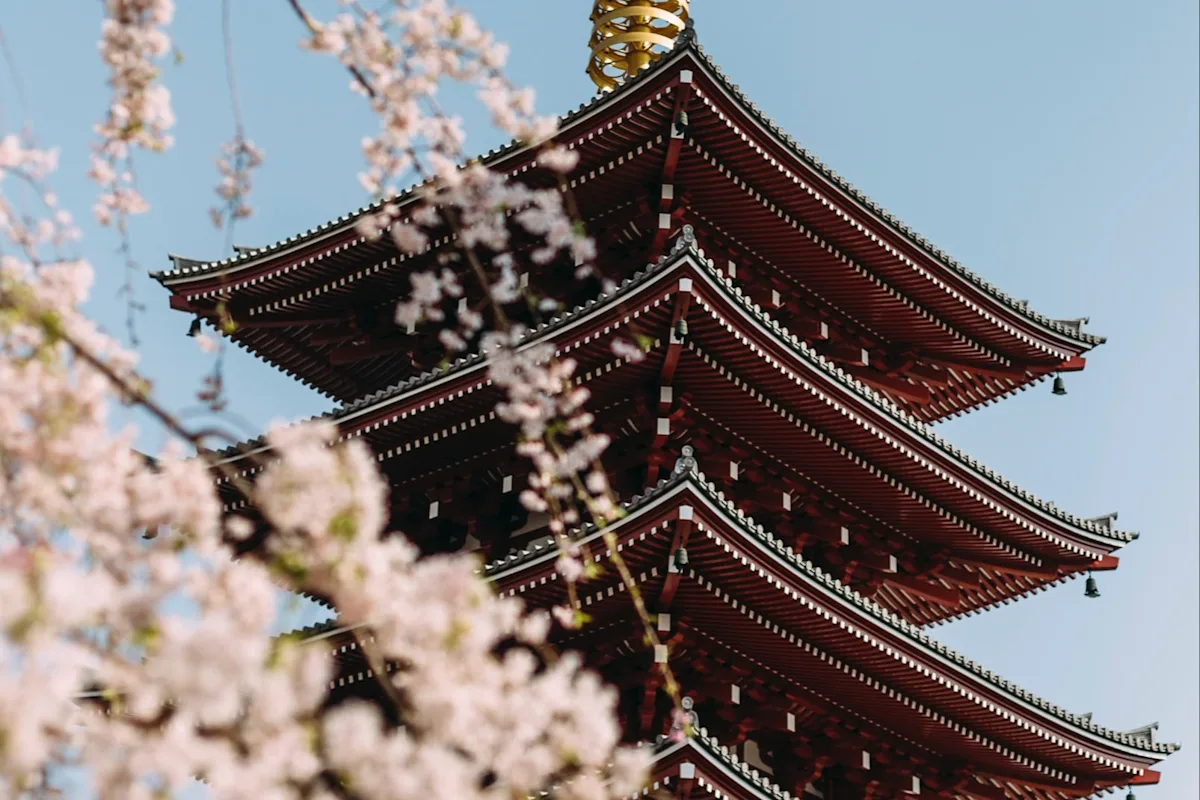
Planning a trip to Japan might feel intimidating, especially if you’re not used to international travel, but don’t let that stop you from experiencing one of the world’s most unique countries. Here, we’ll explain in detail how to plan your trip to Japan, from travel basics to advanced tips and FAQs.
Or, skip the reading and book your trip with Fora . From booking incredible accommodations in the best areas to providing elite travel tips — all while scoring you exciting travel perks — we'll make sure your trip is an amazing experience from start to finish.
Planning a trip to Japan: the travel basics

There are a few basic Japan travel FAQs you’ll want to have the answers to before planning a trip to Japan. Don’t worry; we’ve got you covered.
Do you need a visa to travel to Japan?
If you’re traveling to Japan from the United States, you don’t need a Japan tourist visa unless you plan on staying for more than 90 days. If you’re traveling from elsewhere, we can point you in the right direction.
In any case, you will need a valid passport to enter the country.
Does Japan have any entry requirements? Are COVID-19 rules still in effect?
COVID-19 policies for travelers vary by country of origin and are likely to change with new events.
Travelers may need to be vaccinated and / or have a negative COVID-19 test. Depending on where you’re coming from, tests are provided upon entry. American travelers can find up-to-date information on the US Embassy to Japan’s website .
Is getting around Japan easy?
Generally speaking, yes! Japan’s railway system is arguably the world’s most efficient, and intercity public transportation, even walking, is similarly seamless.
It should be noted that not all signs have English counterparts, especially in more rural areas. A translator app can be useful in these instances.
Do people speak English in Japan?
In major cities, it’s not too uncommon to run into people who speak basic English. However, you’re best off using a translator app and learning at least a few basic Japanese phrases.
Japanese people are delightfully friendly and polite, and are often happy to help travelers.
Ready to travel? Connect with Fora to plan and book your Japan trip today.
Planning a trip to Japan: advanced tips & FAQs
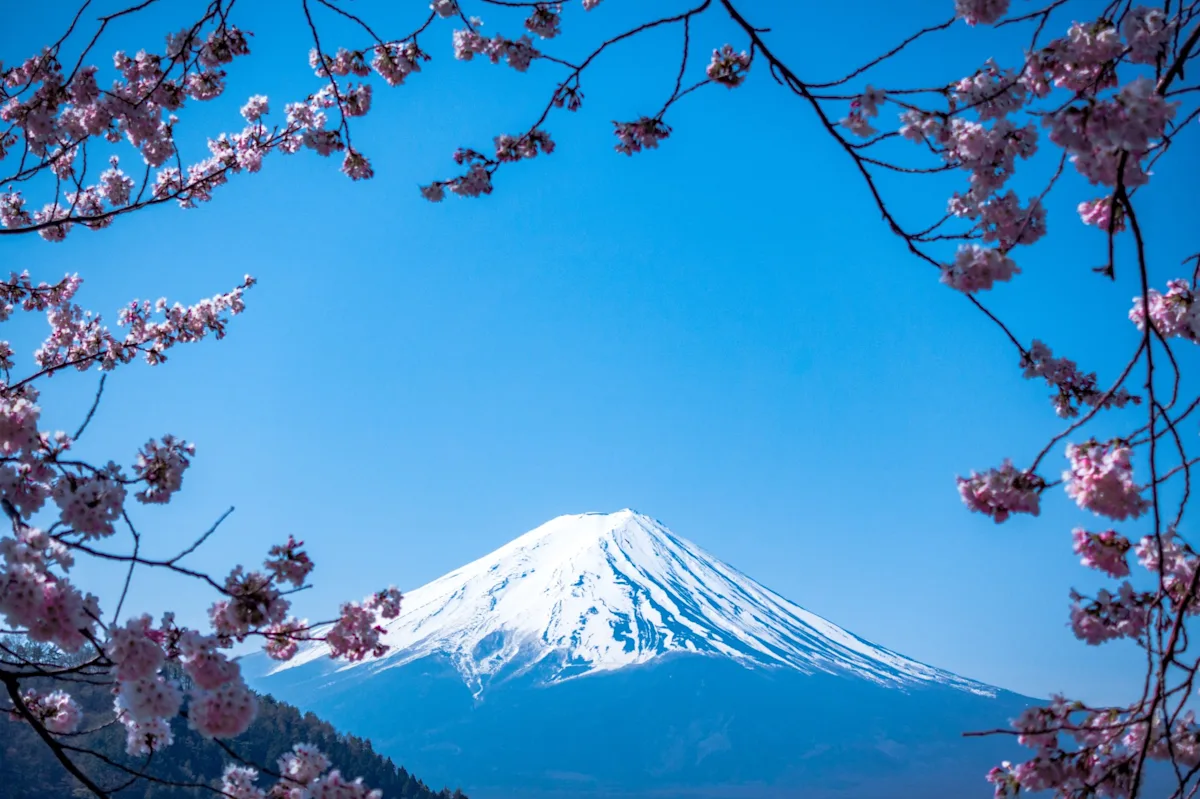
Once your more basic Japan travel questions are answered, you can start planning a trip to Japan in earnest.
How many days in Japan is enough? How long should my first trip be?
If you want to see everything , you’ll have to measure your trip in months or years. But we know that’s not exactly realistic.
We recommend spending at least one week in Japan , as this will give you enough time to explore one or two of the top destinations. That doesn’t mean a shorter trip isn’t possible, though. Connect with Fora for help planning the trip to Japan that’s right for you.
What’s the best time to go to Japan?
There’s no easy answer, but we offer a full explanation in our guide to the best months to visit Japan . It ultimately depends on what you’re visiting for.
For example, if you want to visit Osaka (check out our Osaka itinerary ), the best time to visit may be in late spring, when some of the crowds have quieted down, the weather’s temperate and the cherry blossoms are still in bloom.
How much does a trip to Japan cost?
A trip to Japan will likely cost a lot more than traveling domestically, but beyond that, it’s hard to say without specifics. Where you’re staying (check out some of the coolest hotels in Japan ), which places you visit, where you want to eat and many other factors all affect the final cost.
Don’t worry, though. When planning a trip to Japan with a Fora Advisor, you’ll get the best deals on hotels, along with expert recommendations to get the most value out of your vacation.
Is etiquette really that important in Japan?
Yes. Courtesy and respect are very important aspects of Japanese culture. For example, bowing is an important greeting, and don’t be surprised if you have to take your shoes off to enter certain buildings, especially homes.
But as we mentioned above, Japanese people are very friendly, and often eager to help tourists who respect local culture.
Learning basic Japanese can be very beneficial
While English speakers are somewhat common in the major cities, if you’re going to some of the more unique places to visit in Japan , knowing basic Japanese will make a difference.
Simple phrases — please and thank you, greetings, etc. — will show your willingness to work with locals, and they’ll likely return that eagerness in kind. And if you’re wondering how to plan a trip to Japan that will be unlike anything else, you’re going to want to interact with locals.
Planning a trip to Japan: where should you go for your first (or 20th) time?
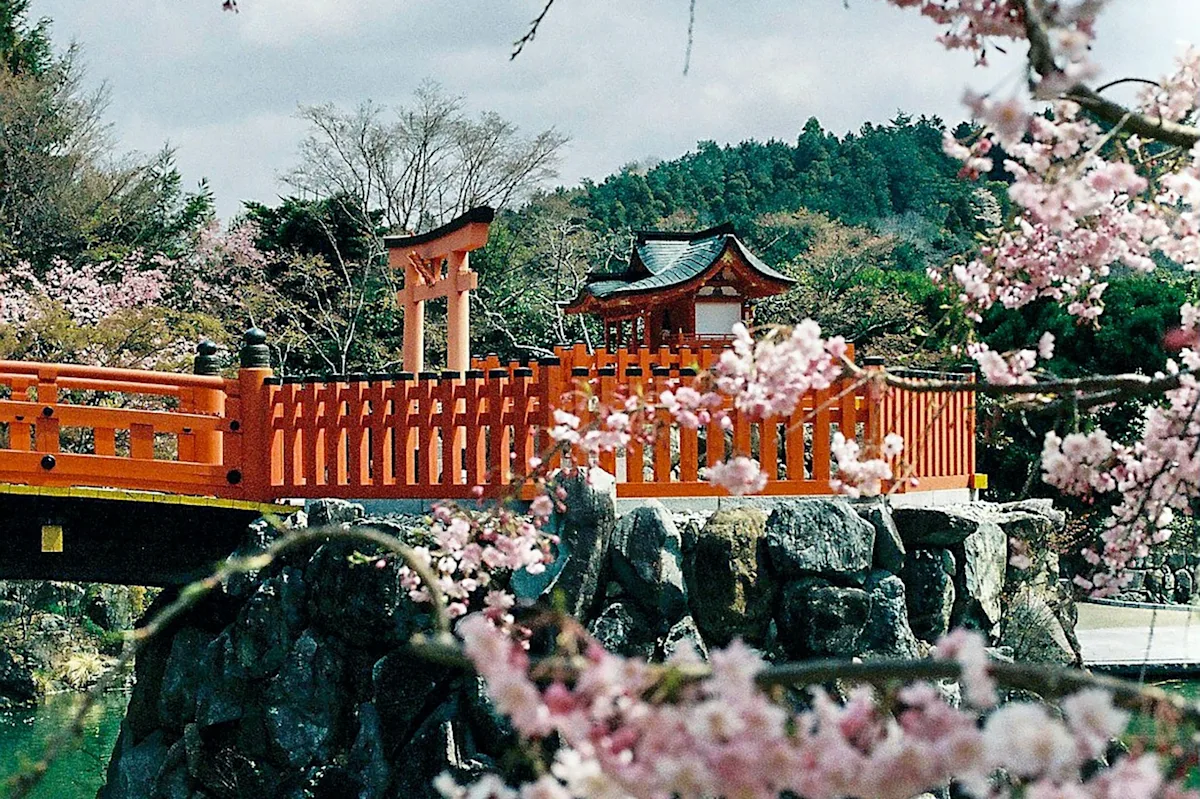
Arguably the most important part of planning a trip to Japan: deciding where to go!
Whether this is your first time in Japan (and if so, check out our first timer’s guide to Japan ) or your 20th, building an itinerary with Fora beforehand can help you maximize your time.
Tokyo, Kyoto & Osaka are Japan’s top destinations…
Traveling to Tokyo , Osaka or Kyoto is the most popular choice. These cities are world-class examples of urban locales that blend modern technology with traditional roots. Yet each has a distinct feel and form.
Whether you’re getting off the beaten path in Kyoto or enjoying your first time in Tokyo , we'll make sure your trip is unforgettable.
…But there’s much to see outside these destinations, too
As exciting as the three major cities are, exploring Japan’s smaller cities, countryside or mountainous northern region is just as grand. From New Year’s skiing in Niseko to enjoying the more traditional culture of Naoshima , there’s no shortage of things to do outside of Tokyo, Osaka and Kyoto.
How to plan a trip to Japan for the first time (or the 20th) and get amazing travel perks, too
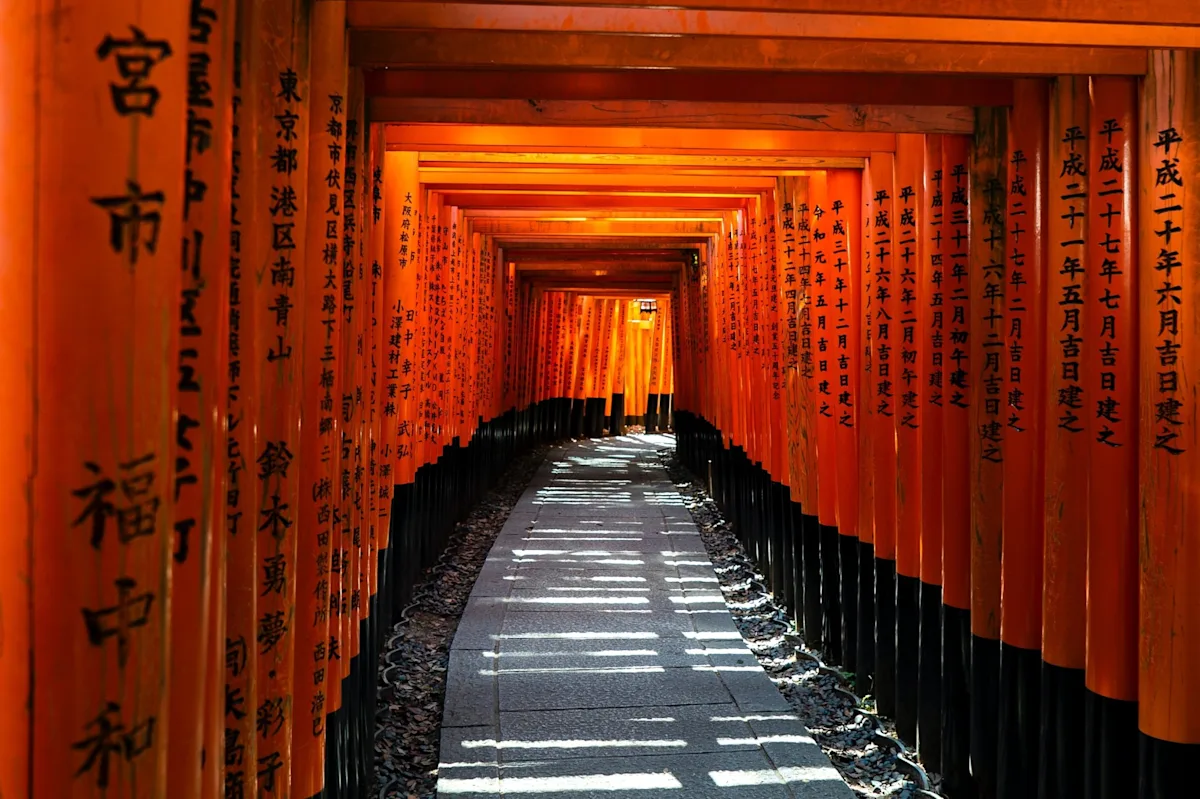
The best way to plan your trip to Japan is to book with Fora . We’ll go over the best places to stay in Japan , like where to stay in Tokyo — the coolest hotels in Tokyo are among the best in the world, by the way— where to stay in Kyoto and more.
And you’ll get access to exclusive hotel perks and upgrades . This can include property credits, room upgrades, or even complimentary meals and nights. Even better, these perks come at no extra cost to you.
The help doesn’t stop at hotels. We can also recommend the best restaurants and things to do in Japan , as well. Maybe you’re looking for the best food in Japan ? We have the connections, if not the personal experience, to land you at the top restaurants and bars around, so you don’t have to waste time researching by yourself.
Book with Fora
Tell us more about yourself to get matched with a Fora Advisor and start planning your dream trip today.
Planning A Trip To Japan: 7 Easy Steps
This page may contain affiliate links which earn us a commission at no extra cost to you to support the site. Thank you!
Do you want to visit Japan but not quite sure where to start? This article will take you through seven easy steps to planning a trip to Japan – it’ll be an unforgettable holiday!
Japan is by far my favourite country to visit. It’s so unique, filled with the most amazing sights and things to do, and no place is quite like it. Many people dream of visiting Japan, and I was one of them for years! But I was very lucky to make that dream come true a few years ago – and, oh my, did it exceed my expectations!
Planning a trip to Japan can be quite overwhelming though, especially if you’ve been wanting to go for such a long time. That’s why I’ve put together this guide with seven easy steps on how to plan a trip to Japan. I’ve also got many guides about Japan and Japanese cities for some more inspiration.
Let’s take a look!
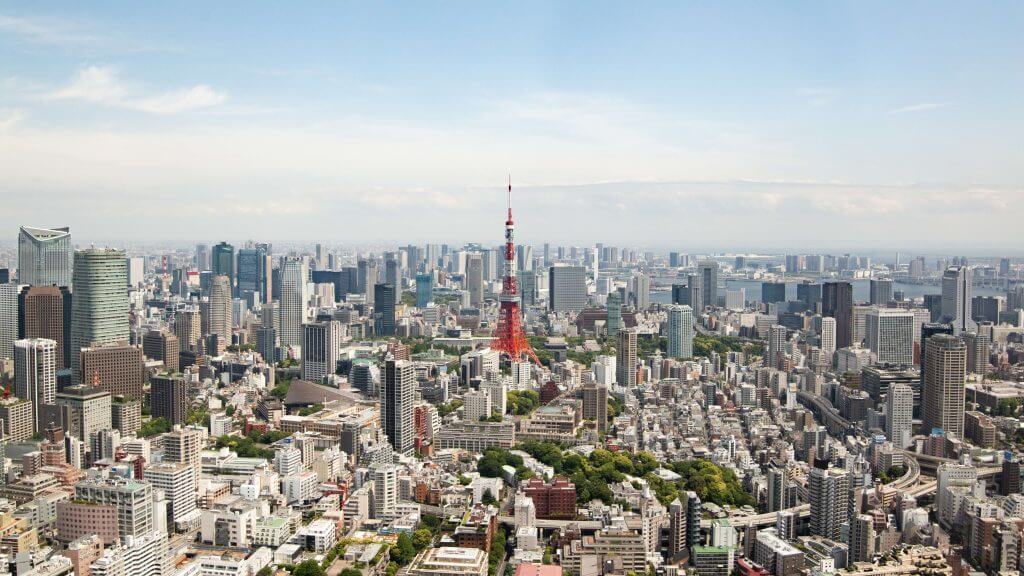
How to plan a trip to Japan
Here are seven easy steps on planning a Japan trip:
1. Decide when you want to go
The first thing you need to do when planning a trip to Japan is figure out when you want to go. There are quite a few things to consider, especially because visiting Japan is quite a big and expensive trip. Keep in mind the following things:
- What season do you want to visit? Spring can be amazing because of the cherry blossoms, but it’s more expensive and busy. Autumn, on the other hand, is my favourite season to visit Japan, as it’s more affordable and you get to enjoy the beautiful autumn foliage.
- How much time can you get off work? Obviously, it’s important to plan around your everyday life – how much time can you get off work and are there other responsibilities you’ll need to keep in mind when planning this trip.
- How much time do you need to save? Japan can be done on a budget, but it’s still not the cheapest place to visit. While you should probably book your flights as soon as possible, you can often pay at the hotel when booking with Booking.com and you won’t have to pay for most activities until you’re there.
- How long do you want to go for? How much time do you need to see everything you want to see. Since going to Japan is quite a big trip, you may not know when you’ll be back again – so make sure you have enough time to see as much as possible!
If you’re looking for inspiration on where to go and what to do in Japan, there are tons of resources online like articles on my Japan travel blog .
2. Book flights to Japan
After deciding when and how long you want to go to Japan, it’s time to check flights. To get the best deals, it’s best if you have a little bit of leeway in terms of days. Obviously, that’s not always possible, but it’s a great way to save some money.
Websites like Cheaptickets, Skyscanner and my personal favourite HolidayPirates are a good place to start. To find the best deals, you could try putting in different flying dates, different airports, different lengths etc.
For our first trip to Japan, we ended up booking a return flight from Amsterdam – Tokyo Haneda with a 1.5-hour overlay in Frankfurt for £425 per person. The return flight stops in Frankfurt again for 1.5 hours. I’ve got another article on how much it cost to go to Japa n, where I broke down all the spendings on our first trip to Japan.
A few things to keep in mind while booking your own flights:
- Tokyo has two airports: Hanada and Narita. Most international flights arrive in Hanada and it’s also the best airport to land at, since it’s closer to the city. While it’s not impossible to get to Tokyo from Narita, it takes a lot longer and is way more expensive.
- Always book as early as possible! We flew to Japan in October and we booked our flights in March. We probably could’ve saved some more money if we had booked them even earlier.
- Check different airports (both departure and arrival). We wanted to fly from Manchester but it turned out to be £100 more per person! You can get super cheap flights to Amsterdam with EasyJet or Ryanair and save yourself some sweet dollah .
- Double-check the overlay time if it’s not a direct flight. We found flights as cheap as £300 – £350 but with a 16-hour overlay between flights (same thing on the flight back), which meant we would basically miss out on two full days we could’ve spent in Japan.
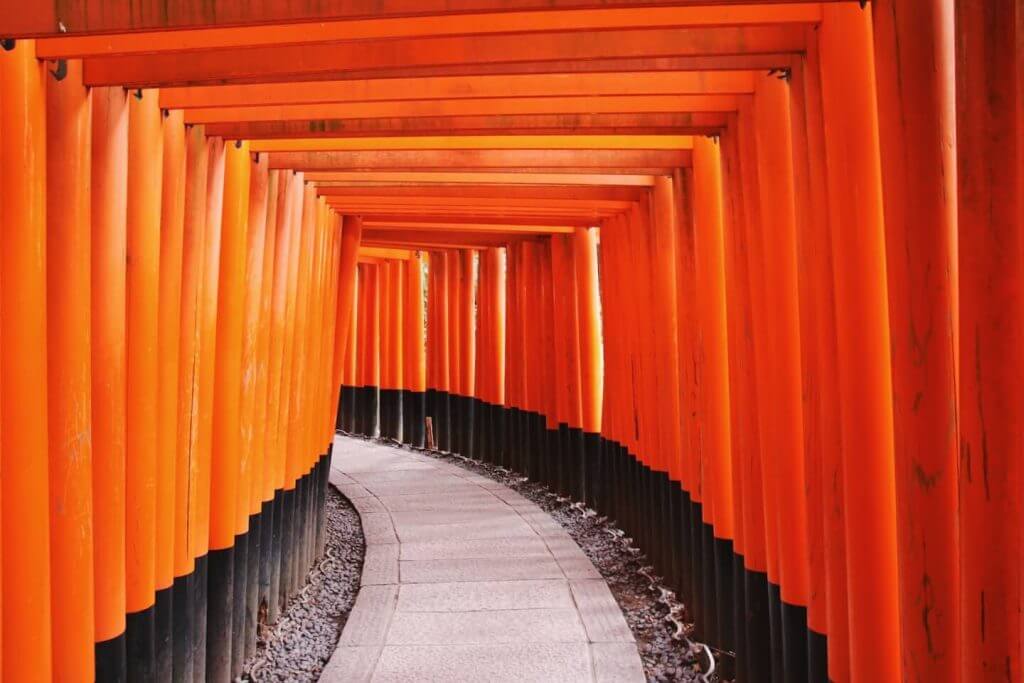
3. Plan an itinerary
The dates are set in stone! Now, it’s time to plan an itinerary. While you don’t have to put a full daily plan in place, it’s a good idea to start thinking about how many days you want to spend in every place – especially since you should book hotels as soon as possible.
As long as you’ve got a rough itinerary, you’ll be good to book your accommodation. Of course, you can have a look at which Japan landmarks you want to tick off your bucket list or create your own list of things you want to do in Japan when you’re there.
Alternatively, you can take a look at my Japan itineraries for some inspiration:
- 10 day Japan itinerary
- 2 week Japan itinerary
- 3 week Japan itinerary
4. Book your hotels
Now you know what cities you want to visit and have a rough idea of how many days, it’s time to look at accommodation. Finding the perfect place to stay can make or break your trip, so it’s important to do your research. Make sure it’s close to a train/metro station, near the places you want to see, and within your budget.
If you want some recommendations, I’ve got guides on the best hotels and areas in three of Japan’s largest cities:
- Where to stay in Tokyo
- Where to stay in Kyoto
- Where to stay in Osaka .
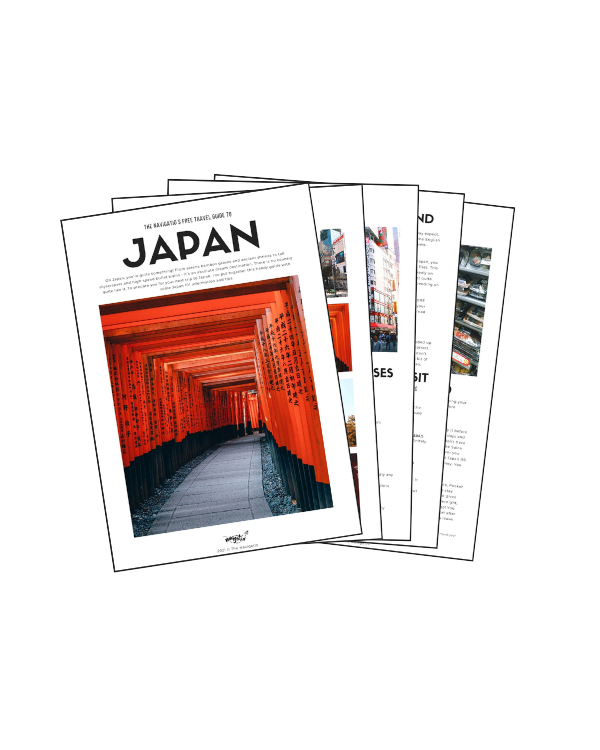
Get Your Free Japan Guide
Subscribe to our monthly newsletter and receive my FREE downloadable Japan Travel Guide . Including everything you need to know before visiting Japan!
You can unsubscribe anytime. For more details, review our Privacy Policy . (We promise not to spam!)
Almost there!
Thank you! Make sure to go to your inbox to confirm your newsletter subscription for your free Japan travel guide.
5. Book the JR Pass & Pocket Wifi (optional)
While many people say that you absolutely NEED a Japan Rail Pass when going to Japan, that simply isn’t true. This pass gives you unlimited travel on all JR lines for one, two or three weeks. However, it’s not a cheap pass, so it may not be worth it for your trip.
It completely depends on what your itinerary looks like, how much you’ll be travelling around, and how many cities you’ll be visiting. Sometimes, it’ll be cheaper to buy individual train tickets. Find out whether the JR Pass is worth it in my review – it also shows you where to buy them and how to save even more money.
If you do decide that the JR Pass will save you money on your trip, it’s best to order them a couple of months before your trip. This will give you enough time for the voucher to arrive before your trip.
Other than the JR Pass, you may want to order Pocket Wifi before your trip. You can pick up this little device from the airport after you arrive and it allows you to connect your phone to it so you can access the internet wherever you go in Japan. It’s an absolute lifesaver – ready to use Google Maps, Google Translate or any other handy Japan travel apps on the go.
6. Plan activities
While you can always adjust your daily itinerary closer to your trip, making sure you’ve got a rough idea of what you want to do every day of your trip can help you avoid missing anything. Some activities and places require you to book a few weeks or months in advance. But it also gives you the opportunity to make sure you’ll fit in everything you want to see.
Get Your Guide is a great place to book tickets in advance – often saving you some money at the same time. Here are a few activities you could add to your itinerary:
Google Maps is an amazing tool you can use to break down your itinerary into days and add all the spots you want to see. Since you can download the map and see it offline, it can also help massively when you’re actually in Japan. I’ve got a full guide on how to plan a trip with Google Maps on how to make the most out of this tool.
And when the departure day is getting closer, it’s time to start packing! Inside Kyoto has an awesome guide on what to pack for Japan here .

Conclusion: Japan trip planning
Planning a trip to Japan is a very exciting process – you’ll get to choose all the amazing sights you’ll get to visit! I hope this guide has helped to take away some travel anxiety and get you ready for a once in a lifetime trip. You’ll have an amazing time!
If you want more inspiration for your trip, don’t forget to check out my Japan travel blogs !
Nele (Nay-la) graduated from Manchester Metropolitan University with an English and Creative Writing Degree and has lived in the UK for nearly 10 years. She has had an interest in Japan and its culture for as long as she can remember. Since her first trip in 2018 surpassed all expectations, she has continued to return to Japan to explore more of all it has got to offer. You can read her full story here .
View all posts
72 thoughts on “Planning A Trip To Japan: 7 Easy Steps”
Oh that sounds so exciting! I remember booking my trip to Japan 2 years ago and it was actually so spontaneous. We luckily have a friend who lives there so we just booked our flights and decided to be spontaneous and plan everything there, which was so much fun. I’m definitely planning on returning though. It’s such an incredible place! xx
Interesting about the stamps! We’re planning a trip there, too, and we hadn’t heard about that. I think our kids would love collecting travel stamps!
That sounds fun!! I’m trying to plan it out as carefully as possible because it’s my biggest dream to go, so I don’t wanna miss out on anything 🙂
Super glad I have found your job twice in one day 🤣 I love how easy and fab you make travelling look! Going to Japan has always been on my list so this made a very interesting read! Thank you hunny!
Glad it’s helpful Ashleigh! 🙂 Cannot wait to share my experience on here once I’m back!
Your plan sounds incredible!! I went to Japan in 2016 and I had a wonderful time visiting the same locations to what you have planned. I want to return so badly to do places that I missed and have heard good things about since coming home.
Glad you had such a good time, I’m so excited to go! If you have any recommendations for those places, please let me know :)!
Thank you so much for these tips! I’m booking marking this to start planning my first trip to Japan!
Thank you! Glad they’re helpful! Good luck planning your trip 🙂
These photos are incredible! Japan is somewhere I’ve always wanted to visit but it’s been so hard trying to save haha! Hopefully it’ll be a trip for 2019!
Thanks! I know the feeling, it’s so hard to save! I had to freeze my bank account when I started university, to make sure I’d have enough to go after graduating haha. I’m gonna make a full budget/money plan for my trip once I’m done so you can see how much I ended up spending! 🙂 Might be helpful!
Love this post! Really well written x
Thank you! 🙂 Glad you liked it!
Wow wow wow! These photos are amazing; I’m really hoping to go on holiday with my friends next summer so will definitely bear this in mind. Xx
Thank you! Hope the tips help, it can be a little overwhelming trying to plan such a big trip but breaking it down always helps me 🙂
Late congrats on graduating uni! It’s so funny, I told myself that I’d hop on a plane for Japan once I graduated school but I ended up going to Canada instead!! It was better that way anyway, because I got to see my partner and I didn’t have nearly the amount of money I needed for going to Japan anyway!
I love the pictures you took…they are excellent! And yes, it makes so much more sense to plan down to the nitty gritty details instead of being spontaneous and just decide then and there to take full advantage of your time!
Thank you so much! Canada is definitely on my list too, hopefully I can start saving for that once I’m back from Japan. Hope you still get to go to Japan someday 🙂
Wow! What an awesome trip! I can’t wait to hear all your stories and see your pictures.
Yes, I would love to visit Japan some day, but it hasn’t happened yet. Some day 😀
Karen from http://www.OurCarpeDiem.com
Thank you! Definitely going to share the whole trip on here once we’re back 🙂
These pictures are wonderful!
Soph – https://sophhearts.com/ x
Thank you! 🙂
Planning a long stay and exploration in Japan in a very similar manner to you is something we have wanted to do for a long time but that old curse of limited annual holiday and finding ourselves booking other things before committing to this sort of trip has meant we’ve just kept putting it off. We will be visiting a couple of stops in Japan next month – Kagoshima and Naha, Okinawa – but they’ll be as part of a cruise so we won’t get that in-depth feel for the country. One day, maybe. Looks like you’ll have a fabulous time from your plan.
I feel that! I had to freeze my savings in my bank account before I started university so I wouldn’t spend it all haha! Hope you have fun in those places though – I bet they’re beautiful!
I have dreamt of Japan for as fa as I remember! I want to visit to bad! This is such a detailed and helpful post, thank you!
Thank you! Hope this helps you break it down a little for when you plan your trip! 🙂
Japan is so beautiful! I love your photos, and this is so helpful! One of my friends is tarting to plan her trip so I’m gonna send her this post! Love, Amie ❤ The Curvaceous Vegan
Thank you Amie! Hope it helps your friend plan her own trip 🙂
Thank you for the great tips! Now I’m ready to take a trip… not sure where to go.
Thanks for reading! Haha, I know the feel! Love planning trips – already excited to plan a next holiday!
Book marking this post for when I eventually plan to go to Japan. Tonnes of super helpful info and love the pictures! Thanks for sharing!!
Thank you! Hope it helps 🙂 If you have any questions, please let me know!
You got really good priced flights! The 2 weeks that you dedicated to them definitely paid off! Also that pocket WiFi is a genius idea! I wonder if other places do similar things?
Jas xx | https://thoughtsfromjasmine.co.uk
Thank you Jasmine! I think that a lot of people don’t realise how much you can save on flights as long as you know the right websites and techniques to find them 🙂
Planning trips are always so exciting! I’d love to visit Japan someday, it looks amazing. You have shared so many helpful hints and tips, especially the JR Pass and booking the flight advice. Thank you for sharing and hope you have an amazing time! <3 xx
Bexa | http://www.hellobexa.com
Thank you Bexa! Glad they’re helpful – if you ever have any questions about planning a trip like this, please let me know!
great post! i love how much information you added and how easy you made it to follow! a trip as big as this seems like it would be overwhelming but you seem to have it planned out really well! i hope you have a great trip! xx
mich // simplymich.com
Thank you Michelle! As long as you can break down the bigger plan, I feel it’s a lot easier!
This is such a helpful post – thank you! My partner has been talking about visiting Japan for so long now and we’re hoping to make it happen in the next year or so! I’d love to go around March to see the cherry blossom but I heard that’s the busiest time of the year to visit! Your photos are absolutely beautiful.
Milenka x Blushing Lately
Thank you! So glad you enjoyed it 🙂 I’ve heard the cherry blossom season is very busy – which is why I’m avoiding it for my first time in Japan. But I’d love to go back during spring to see them 🙂
Great post🌸 I never traveled before🤫 but I am excited to do it this is helpful for someone never traveled to get organized and think of everything 😃
Glad you liked the post – hope you get to travel someday!
Great post👍 I love how detailed and easy to read it’s also helpful to someone never traveled before 🤫to not miss on something while planning
Wow that’s very informative post! Definitely helpful for first time travellers! Great write-up.
Thank you! Glad it’s helpful :)!
Love this! Definitely a good idea to plan Japan carefully as it can easily become expensive otherwise. JR pass is awesome. I would highly recommend a visit to Kanazawa in Ishikawa (West Japan) if you get the chance. I lived there for a year and loved it 💕 Have a great time!!
Thank you! 🙂 I don’t think we’re gonna have time to visit those places this time, but I’ll definitely save them for a second trip to Japan (cause let’s be honest, I’m gonna fall in love with the country and want to go back every year haha!)
It’s so cool that you’re going to Japan! Major congrats on graduating from university! Oh man, the flights look like a great deal. These are helpful tips for scoring some good deals. There’s so much to do out there! Love that you planned so many details for your trip. Have fun when you go!
Thank you Nancy! 🙂 I don’t think a lot of people realise how much money you can save on flights by simply checking different websites and dates 😀
Love the post! Japan is on my go to list for places to visit! Always wanted to go, might finally be going in a year or so, the images are incredible!
Thank you :D! Hope you get to go next year too, if you have any questions about planning your trip please let me know!
This post is so helpful 🙂 me and my partner would both love to do Japan one day 🙂 this is full of great information and inspo! Thanks for sharing and I can’t wait to read about your trip when you get back.
Thank you Rachel, so glad you find it helpful! I’ll be sharing my whole trip on here once we’re back so hopefully that’ll give you some inspiration for your own trip!
First, congratulations on graduating university! That’s such a big accomplishment! Next, this list is SO handy for people planning to visit Japan! I want to visit the country sometime in the next two years and OMG this post has been so so helpful! xoxo, KB | http://www.herlifeinruins.com
Thank you so much! I feel that this trip is the perfect graduation gift to myself haha! Hope you get to visit it too! <3
Ohhh this sounds really exciting! Have a great time!
Thank you Anne 🙂
This is such a helpful post. I’ve wanted to visit Japan for so long, but find the planning part totally overwhelming. Thanks for sharing! x
Thank you Kate! I feel your pain – I’ve never really planned a trip this big before but once I broke it down into smaller parts it suddenly became a lot of fun to plan it in ^^
Congrats! Hope you have fun. Thanks for the helpful tips. It’ll make my life easier when I go to Japan since I’m pretty clueless on where to start.
Thank you! Hope it helps for your own trip – if you have any more questions please feel free to contact me!
I absolutely loved my time in Japan and would give anything to go back there. It is such a crazy and interesting country and culture. Sounds like you’ve done some great planning. Tokyo and Osaka and absolutely amazing cities. The Studio Ghibli museum is absolutely incredible so do try go there if you get a chance and a maid cafe, they’re unlike anything else ahaha. Oh and make sure to see Kinkaku-ji (the golden temple) in Kyoto!
Hope you have an amazing trip!!!
http://www.just-a-kidd.blogspot.com
So glad you had such a lovely time in Japan – I cannot wait for my trip! Super excited! The maid cafe is definitely on the list, I feel like that’s an experience we can’t miss haha. Still need to have a look at tickets for the ghibli museum, I might be a little late with that :\
Sounds like you’re going to have a fantastic time! I find blog posts like this great help when planning my trips, so I’ve definitely picked up some handy tips for when one day i book a trip you Japan myself. It’s been on the list for a while now! Can’t wait to see you posts all about your trip. Have a great time 🙂
Ooh, these photos are so beautiful! After my A-levels, I’m planning on going away somewhere outside of Europe and I’m definitely considering Japan so if that’s the final decision I shall be coming back to this post! Aleeha xXx https://www.halesaaw.co.uk/
Congrats on ticking this off your bucket list! The travel in Japan seems so expensive but I take it you had a great time.
Japan is on my list one day, just not anytime soon.
Great post! Japan is a place I truly dream of going I have a friend that’s going next year and I’m sending him this post as fast as I can. Love the pictures. Love the details. Looks like you had an outstanding trip.
Thanks so much for sharing the post, hope your friend finds it useful! 🙂 Working on all the travel guides at the moment, hope to post them soon!
Wow this trip sounds amazing! I’d love to go to Japan one day and you’ve given me some great inspiration. I can see you’ve thought everything through and are ready for your adventure. I hope you enjoy yourself and can’t wait to watch how it all turns out 😊 Thanks for sharing all your plans and advice x
Great tips! I enjoyed seeing the pictures as well. I have been all around Asia, but never to Japan, so I would love to visit! My father had taken a trip to Japan and he enjoyed it immensely. I did get back some souvenirs, he brought back a kimono for me! 🙂
Blessings, Ann Marie Ruby | http://www.annmarieruby.com
Thank you so much! He brought a kimono for you? How lovely! They’re so pretty! Hopefully you get to go someday too, it was really the best trip ever!
I think you made perfect plan! I usually have the same planning process and it works great for me. Sometimes I check flights just out of curiousity and after that decide on the destination (I did that for Taiwan trip and it was amazing). Japan is also on my travel list and hopefully I will get to visit someday as well. I am so excited for you! 🙂
Thank you!! Having a plan really helped a lot when we were there, the idea that we knew what we were doing every day helpt a lot with the travel stress haha! Hopefully you get to visit Japan someday!
Leave a Comment Cancel reply
This site uses Akismet to reduce spam. Learn how your comment data is processed .
Must-Read Articles

50+ Best Things To Do In Japan

Is The Japan Rail Pass Worth it?

The Perfect Three Week Japan Itinerary
Japan Travel Tips Group

The Japan Travel Newsletter
Sign up to get inspired! Receive insider tips, special discounts and more to plan your perfect Japan trip.
You have successfully joined our subscriber list.
japan travel Blog
Tokyo Kyoto Osaka Hiroshima Hakone Kobe Nikko Nara Kyushu All Japan Content
Plan Your Trip
Best Things To Do Japan Rail Pass 2 Week Itinerary 3 Week Itinerary Accommodation Japanese Phrases
About The Navigatio Work With Us
Trip within a Trip: Osaka and Kyoto, Japan

May 1, 2024 • 9 min read
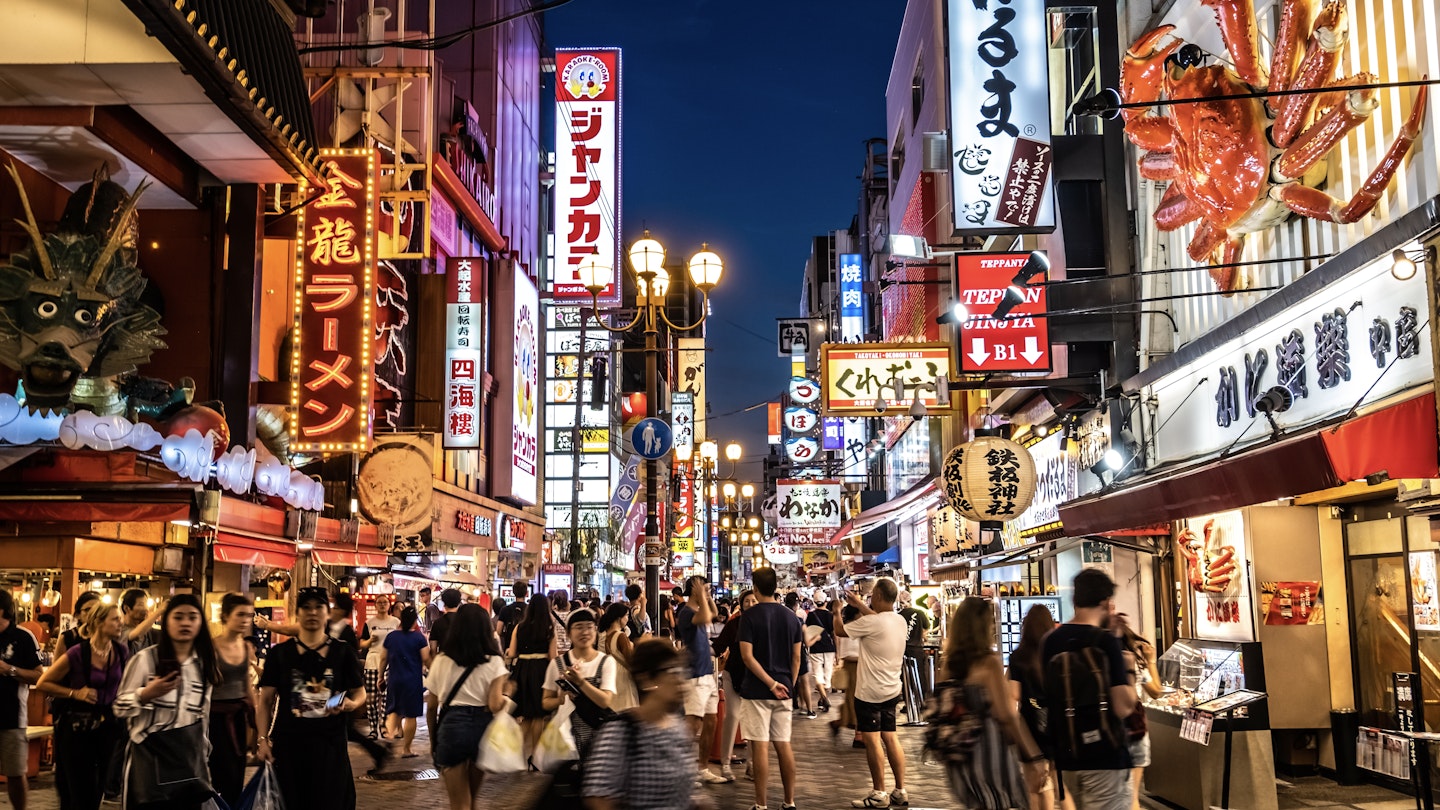
Make your next trip to Japan even better by adding on four days in exciting Osaka (pictured) and Kyoto © EarnestTse / Shutterstock
Senior Director of Content Laura Motta recently spent 10 days in Japan . To make the most of her time in the country, she included a four-day mini-excursion to Osaka and Kyoto – a trip within a trip, if you will, which anyone can replicate.
Everyone goes to Tokyo , and I would never tell you to skip it. But another critical part of any Japan itinerary is that magical Shinkansen (bullet train) ride south to Osaka , and the astounding sites that await beyond. A mind-boggling pair of cities – Osaka and Kyoto – are crammed with more shrines and temples, steel-and-glass skyscraper malls, scenic vistas and world-class restaurants than you can experience in a month, never mind in just a few days. This was my third trip to Japan and my second time visiting Osaka and Kyoto.
Before I get to my recommendations, here are a few practical tips:
- When to arrive: Arriving in Osaka around midday lets you drop your bags at the hotel, rest and then hit Dōtonbori in the evening, when its famous neon lights are ablaze.
- Getting there from the airport: The spotless, inexpensive airport limousine bus from Kansai Airport makes eight stops in Osaka, which include all of its main train stations.
- Getting around: Japan is world-famous for the ease and comprehensiveness of its public transit for a reason. You can – and certainly should – do this route without a car. High-speed (more expensive/faster) and local (less expensive/slower) trains cover every inch of this region and will shuttle you quickly between Kyoto and Osaka. Both cities have easy-to-use subway systems.
- What to pack: Certainly, your walking shoes and room in your stomach for a lot of ramen. Keep in mind that Japan has four distinct seasons and temperatures vary significantly between them. Check the weather ahead of time – and pack accordingly.
- How to structure your days: It’s tempting to cram your schedule when there are so many things to see. Yet realistically, you won’t be able to do more than two major sites – maybe three, if you’re really going for it – in a single day. This is especially true in Kyoto, where the best sites are far apart and can require up to an hour of travel to reach.
- Take it easy: Don’t forget to eat, hydrate, rest and wander. And tell yourself you’ll be back.
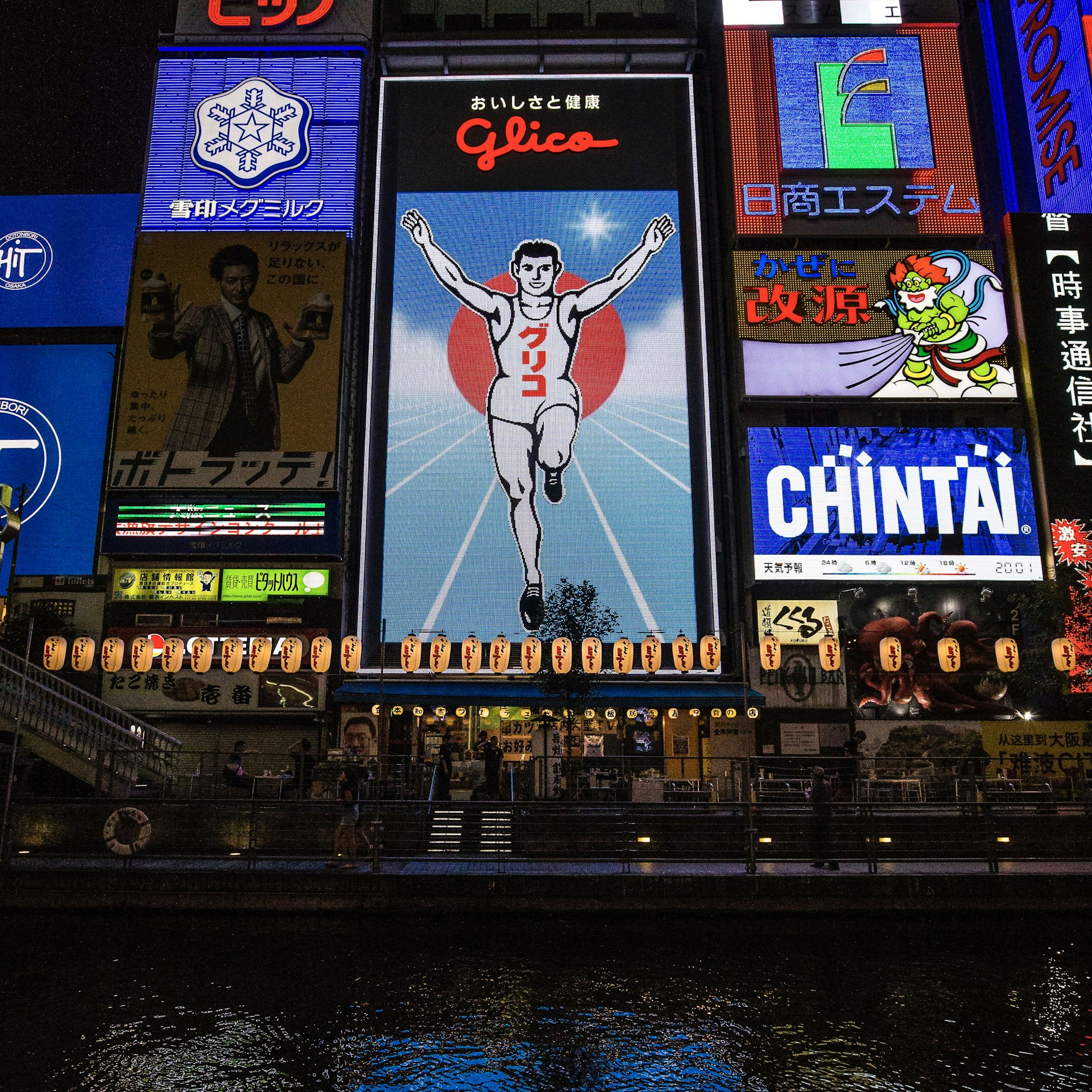
Day 1: Osaka
Snack time .
You’ve been traveling all morning. It’s time to eat. (Unless, of course, you stuffed yourself en route on the amazing bento boxes you can get at Tokyo Station.) Keep it simple like I did and grab onigiri (rice balls) or a sando at 7-Eleven. There’s one on every corner, you’ll only spend a few dollars, and buying local snacks – especially in Japan – is among travel’s greatest joys.
See the neon
If you’re in Osaka, go see the Glico man. It's a rule. Or maybe it's just mine. This famous animated sign of a runner, arms raised, about to cross the finish line in some hypothetical marathon in the sky, remains delightful despite the tourist crush on the streets below. This ad for the Glico candy company (candy bars give you energy – get it?) has become an informal mascot of Dotonbori , Osaka’s dining and nightlife district. After dark, it’s fun to wander here through the area’s many arcades, claw-machine and pachinko parlors, and shops. If you start here on a weeknight, it’s delightfully quiet.
Insider tip: Arrive before sunset and duck into a tiny side street to Hōzen-ji , a small temple known for its moss-covered statues. I was there when they were lighting the lanterns for the evening – a dreamy experience indeed.
Have a cheap and cheerful dinner
Dontonbori is teeming with restaurants. You can’t miss the distinctive signage advertising takoyaki (grilled octopus balls), gyoza and crab. My favorite takoyaki stand, Takoyaki Yoriabunzemon, is humble compared to its bombastic neighbors; there is no 5ft marquee. Inside, you’ll sit on a well-worn barstool while the single cook pours takoyaki batter into the famous round molds and serves it to you still piping hot, and slathered in mayo, barbecue sauce and bonito flakes. A warning: if you value the skin on the roof of your mouth, do not eat too fast here.
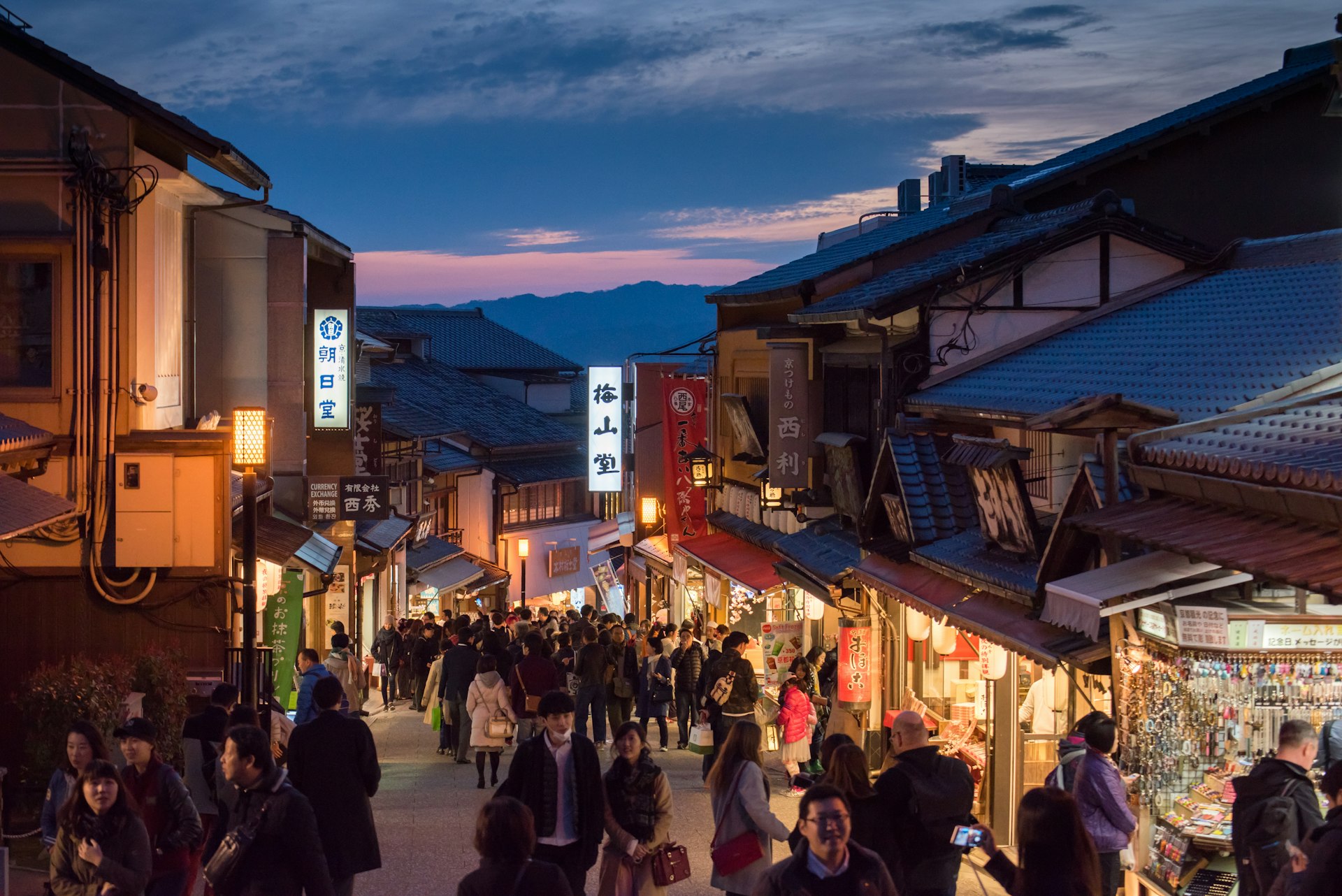
Day 2: Kyoto
Bullet train .
The Shinkansen train between Osaka and Kyoto is cheap and lightning fast. This trip is included in many Japanese rail passes , but if you’re paying for a standalone ticket, you’ll pay 1420 yen (about US$10). The trip takes 15 minutes, so slower local trains hardly seem worth the mildly cheaper price. Arrive midday and head to your hotel to check in and drop your luggage. Before you depart, don’t forget to look around Kyoto Station for the eki ink stamp, which you can imprint into a notebook as a souvenir. Every train station in Japan has a uniquely designed stamp, even if you sometimes have to ask the attendant at smaller stations where to find it.
Stay in style
If there’s one place to splurge on a fabulous hotel in Japan, it’s in Kyoto. Whether you’re strolling under vibrant fall leaves or spring cherry blossoms, or wandering the narrow alleys and stepped streets of the Gion district , Kyoto is romantic, its temples and shrines otherworldly. My choice was Hotel the Mitsui Kyoto , a new luxury property that blends smart contemporary design with traditional Japanese accents. Beside its excellent restaurant – more on that below – the highlight is the hotel's updated approach to the traditional onsen . This vast, moodily lit indoor space offers heated pools and loungers amid beautiful rock formations and water features. And unlike many onsen experiences, this one is a bathing-suits-required, mixed-gender space where everyone can hang out. There is also no surcharge for entry.

Visit the temples
My boyfriend cheekily refers to Fushimi Inari Taisha , Kyoto’s famous shrine with its rows and rows of vermillion gates ascending a dramatic hillside, as “the Instagram shrine.” It’s hard to say that he’s wrong: the site is a favorite among foreign travelers for good reason. The gates are simply gorgeous and – yes – photogenic. Just don’t expect to find yourself there alone.
Insider tip: Afterward, stop at the charming Vermillion Cafe for a sweet snack and coffee. Sit on the back porch, which overlooks a lovely stretch of forest, for especially serene vibes (spectacular in autumn).
If you still have energy left in the afternoon, head to Nishi Hongan-ji , a mammoth Buddhist temple complex that’s home to some of the largest wooden structures in Japan. After you marvel at the huge lanterns and expansive halls, stop by the brightly painted Chinese Gate, which dates back to the late 1500s. This temple is also within walking distance of Kyoto Station, and can be a good place to start or end your trip.
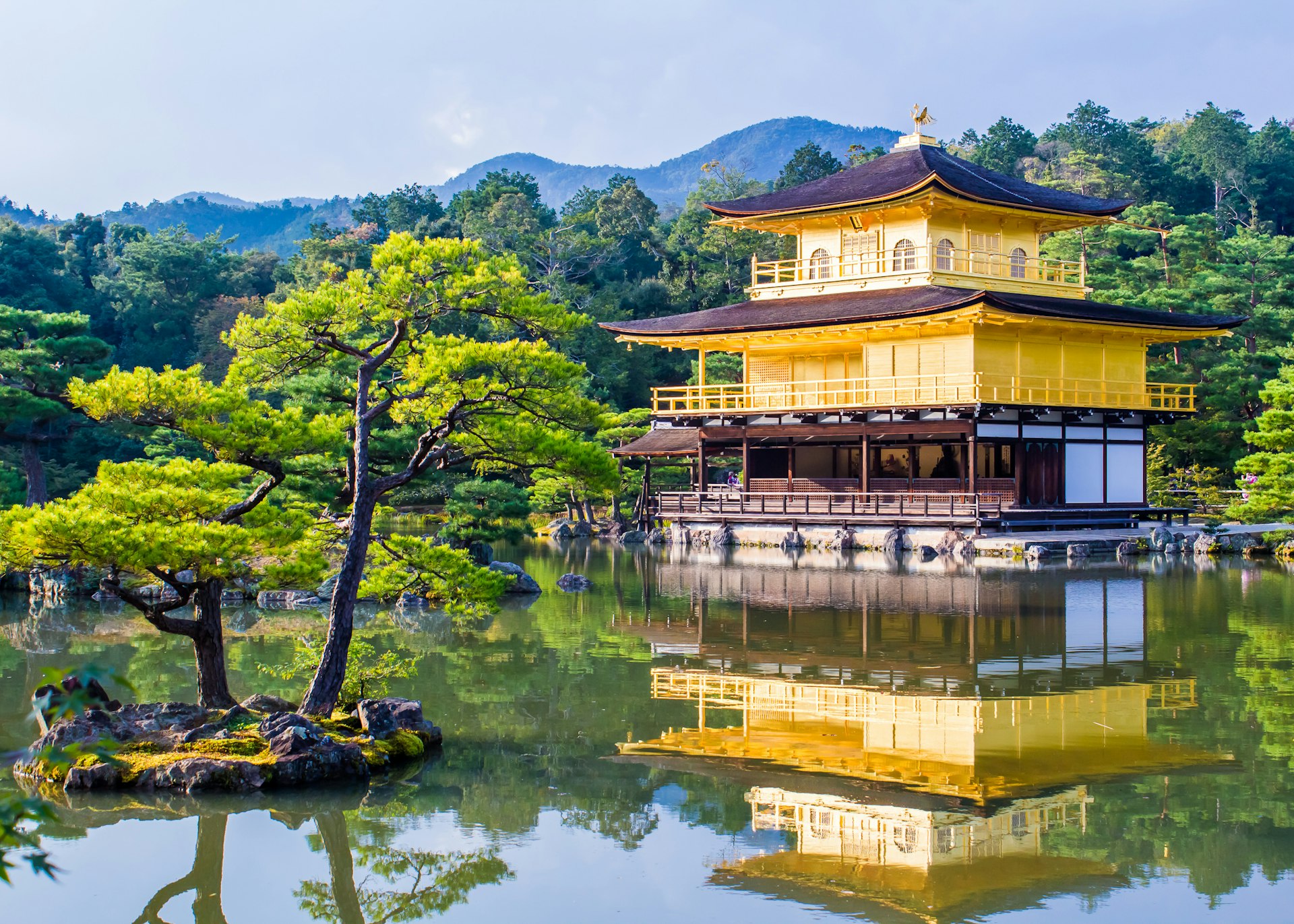
Day 3: Kyoto
Go for the gold.
Kinkaku-Ji , sometimes called the Golden Pavilion, is among Kyoto’s (and Japan’s) most famous and photographed landmarks. This UNESCO World Heritage site , where a brilliant gold temple appears to float along the shores of a serene lake, is well worth braving the crowds for, especially in sunny weather when the reflection of the lake glints off of the temple’s exterior walls. Go early, packing your patience – and you’ll understand instantly why so many people flock here.

School Bus Coffee Stop is a charming spot for an easy, affordable breakfast or lunch in cozy, industrial-farmhouse-style surroundings. Comforting selections like bagel sandwiches and avocado toast are accompanied by the shop’s excellent, house-roasted coffee.
Modern love
For an aesthetic palate cleanser after a quick lunch, stop by the Kyoto City KYOCERA Museum of Art , which houses rotating exhibits, often of contemporary and modern art, in a fantastic brick structure that dates to the 1930s.
Taste sensation
And you’d be remiss if you stayed at the Mitsui without eating at its elegantly flamboyant Italian restaurant, Forni . Yes, there are pizzas and pastas on its à la carte menu. But I’d highly recommend the tasting dinner, where impeccably composed dishes like sea bream citrus tartare and grilled wagyu arrive on geometric plates and stands. It’s a feast for the eyes as well as the stomach.
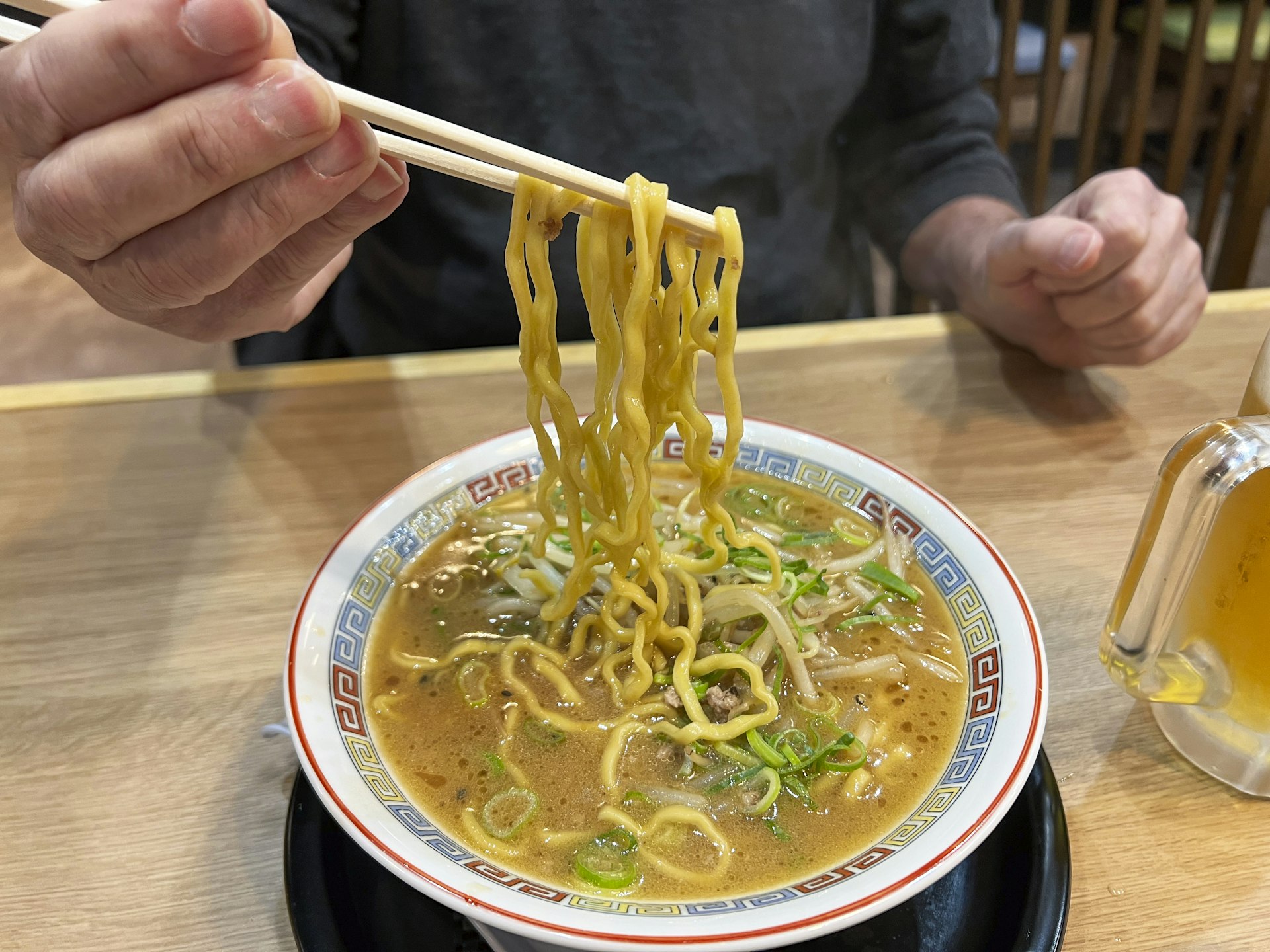
Day 4: Osaka
Smart hotel.
After going luxe in Kyoto on meals and lodging, I came back to Osaka looking to save money without sacrificing too much comfort. I wasn’t ready to sleep in a sarcophagus-sized pod or get every meal at 7-Eleven. (Well, not every meal – just a few.) After getting off the train from Kyoto at the massive Shin-Osaka Station, I took the easy-to-use metro to one of the best places I’ve stayed in Japan, the chicly designed, austere-but-comfortable Hotel Noum , just across the river from Temmabashi Station. The location made transportation connections easy and kept me sheltered from the stark urban rush of Umeda, Osaka’s high-rise business district. Rooms are small, comfortable and spotless; mine had a river view. The hotel also has an airy coffee shop in its lobby that attracts as many locals as travelers. I popped in here for a breakfast pastry and a latte and was ready to start the day.
Window(less) shopping
Even if you don’t stay in Umeda, visiting the neighborhood is a must. Spend a day wandering its cavernous, endless indoor shopping malls and underground food courts. You may never see daylight, but you will find everything from Hermès bags to the best 300-yen (US$2) gyoza you’ve ever tasted. I like to check in on the enormous red whale, which hangs suspended from the atrium of the Hep Five department store, which also happens to have a ferris wheel on its roof.
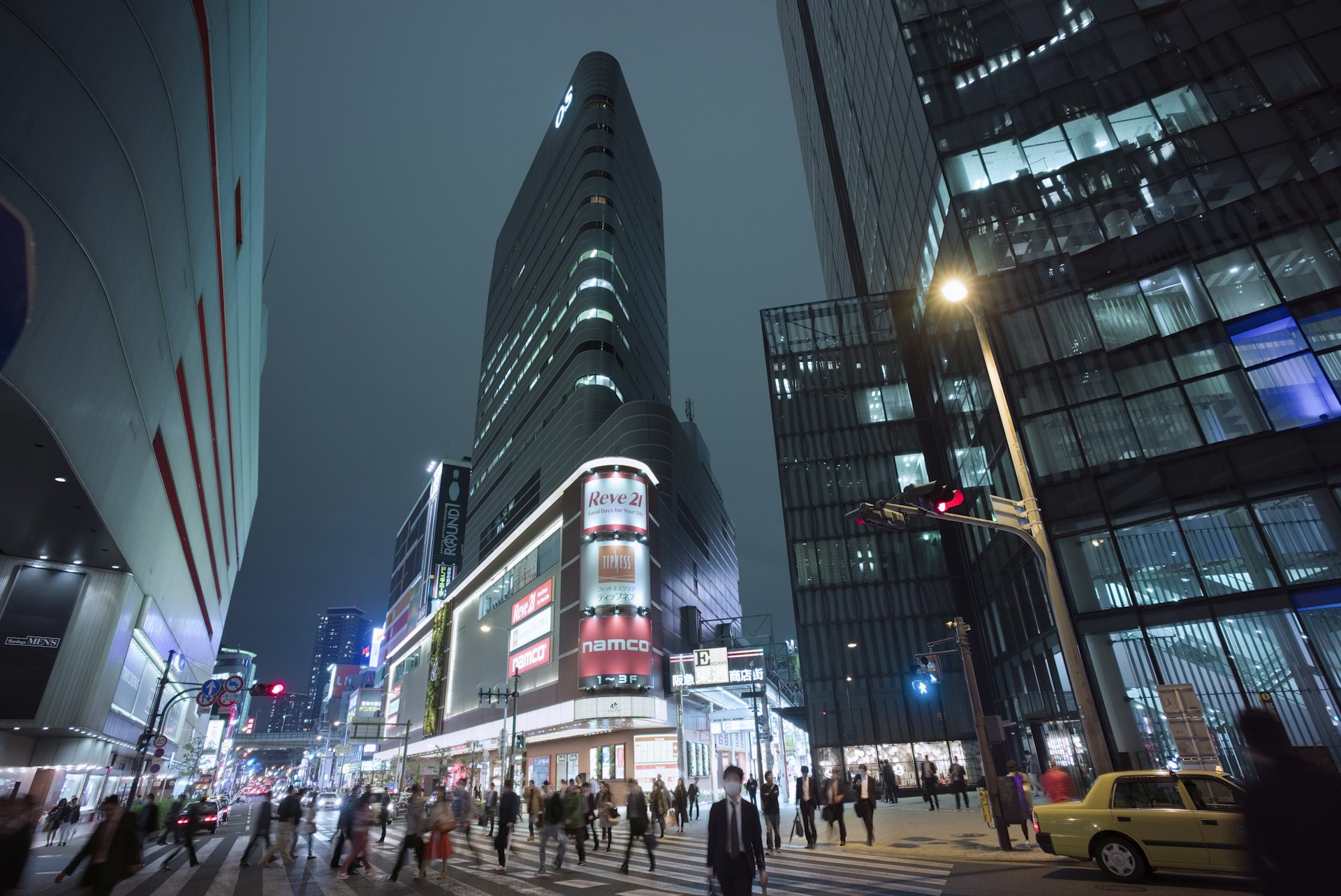
Enjoy a messy lunch
Train stations are where you’ll find some of the best food in Japan – and Osaka’s sprawling Umeda Station is no exception. My favorite train-station ramen is at Menya Takei, located behind the entry gates for the Hankyu Railway. Menya Takei specializes in tsukemen , in which the ramen noodles and broth are served separately. Dip the noodles into the broth to eat – yes, you’ll undoubtedly get it all over your clothes, but that’s part of the fun. Lots of laundry to do when you return home is a sure sign of a great trip.
Insider tip : Ask the gate agent to let you through. They’ll make you pay for a rail ticket on the way in, and then may refund you on the way out.
From Osaka, hop back onboard the Shinkansen for more exploring in Japan, or do what I did and catch a quick, affordable domestic flight to Tokyo’s Haneda airport to connect to your flight home.
Keep planning your trip to Japan:
The 24 best things to do in Japan Find out if you need a visa to enter the country Take to the open road on these top drives How to discover Japan on a budget
Explore related stories

Public Transport
Jan 31, 2020 • 7 min read
Whether you want canals, ceramics or buzzing cities, there’s a stop for you on the ‘sunny side of the mountain’. Here’s how to explore San'yō by train.

Apr 3, 2024 • 17 min read

Apr 2, 2024 • 10 min read

Mar 31, 2024 • 7 min read

Mar 28, 2024 • 7 min read

Mar 28, 2024 • 6 min read

Mar 28, 2024 • 11 min read

Mar 26, 2024 • 8 min read


9 Tips for Japan Travel You Can't Afford To Miss
I f you’re planning a trip to Japan, know that the process is a commitment . We’ve gone all over the world and back again, even traveling full-time for two years with our young children.
Even so, planning a trip to Japan sometimes felt like a Herculean task. There are so many moving parts, rules and barriers that it was easy to be overwhelmed at times. After putting together what I’d deem a very successful first visit, I’ve put together some of my best Japan travel tips to help you plan the trip of a lifetime!
I promise, you won’t want to miss these tips for traveling to Japan – they’ll help you make the most of your time with the fewest hassles.
1. Plan as far in advance as you can
As frequent readers of this website know, we’re avid travelers and have been all over the world – sometimes hopping countries on just a few days’ notice.
Japan isn’t a place where I’d want to do that. Ever.
The most important of my tips for Japan travel is to give yourself as much lead time as possible.
We were shocked at just how important it is to plan a trip to Japan well in advance. In my experience particularly if you plan to visit during a peak time (roughly March through May and, to a lesser extent, September and October) you’ll be happiest if you start arranging your hotels 4-6 months in advance. Even 4 months before our March trip, a few small or specialty hotels were already sold out. When I looked to shift our itinerary 3 months in advance, our hotel in Tokyo was double the price I had paid.
But it isn’t just about booking your flights and hotels. There are so many cool attractions in Japan that require booking at least a month in advance. It’s not just the obvious ones! Everything from TeamLab Tokyo (which we got) to Pokemon Cafe (which we didn’t) sells out. Heck, even the wonderful onsen we visited had limited availability for private rooms a month in advance.
Unfortunately the need to lock down times and places so far in advance can make Japan travel planning very tricky. Give yourself plenty of time and try not to get overwhelmed – take it one area at a time and don’t be too disappointed if you can’t get into one specific attraction or hotel. Know that you’ll still have an incredible trip and you’ll be starting to consider a return visit while you’re still there!
Pro tip: When you’re planning, don’t be afraid to book through Klook ! It’s one of the most popular sites for booking activities throughout Asia. It’s easy to use and has a great reputation. We used it many, many times without a hitch.
2. Consider the overall structure of your itinerary
Obviously the first thing to nail down when you’re planning a trip to Japan is the basic framework of your trip: your flights and roughly which regions you’ll visit when. There are a few ways to do it, which I’ll go over here. Here are some ideas for family-friendly Japan itineraries .
If you’re coming from North America, chances are you’ll fly into one of Japan’s three main international airports: Narita (NRT), Haneda (HND) or Kansai (KIX). West coasters may have the luxury of choosing where they’ll go, while travelers coming from the midwest and east coast will probably have to take what they can get based on how their connections work out.
Both Narita and Haneda are in greater Tokyo, but Haneda is much much more convenient: our taxi ride was an easy 20 minutes, which we appreciated after spending most of a day traveling. Narita would have taken over an hour and been more expensive for our family of four.
The other airport option is Kansai, which is about an hour from downtown Osaka by train. A west coast family member recently chose an open-jaw itinerary that arrived in Osaka and departed from Haneda. That was a great option as it avoided an extra few hours of train travel – and depending on your itinerary it could allow you to choose a shorter duration Japan Rail Pass (but more on that later). When we considered a similar itinerary, unfortunately the connections weren’t as favorable and the price was a lot higher but be sure to evaluate options for your airport and dates.
The second half of structuring your itinerary is figuring out the order in which you want to visit Japan’s wonderful and diverse regions. On a first visit, most tourists split their time between Tokyo , Kyoto /Osaka and Hiroshima . It’s worth considering the order of your trip, especially if you end up with a roundtrip ticket to Tokyo (as most visitors do). If you’re lucky enough to have a KIX flight on one leg, your itinerary will mostly build itself.
There are two schools of thought on how to structure your Japan itinerary . This excellent book recommends exchanging your Japan Rail Pass voucher at the airport when you arrive and immediately hopping on a bullet train for Hiroshima as one of the top tips for travelling in Japan. In theory you could also take a short domestic flight to Hiroshima, as it’s less than 2 hours and sometimes only $50 per ticket. You’ll then slowly make your way back up to Tokyo to finish out your trip. The benefits of this option are that you’ll be able to sleep for much of the 6 hour travel time (since most visitors are exhausted after crossing so many time zones) and you’ll also start off in the quieter parts of the country before tackling the hustle and bustle of Tokyo.
We took a different approach and it worked out fine as well. Our trip started with 5 nights in Tokyo, which was just a busy as advertised but allowed us to settle in and feel as rested as possible when we were clocking 10 miles on foot each day. Then once we had our bearings we went all the way to Hiroshima and Miyajima Island. Our final stay was in Kyoto , halfway between Tokyo and Hiroshima. With only 10 nights in Japan, our stays in Miyajima and Kyoto was shorter and might have been harder with the kids right when we’d gotten off the plane.
I’d probably avoid closing out your trip in Hiroshima. The security line when we returned to Haneda was one of the longest I’ve ever waited in and you would likely have to build in three hours to check in and get through security, whether you’re taking the 5-6 hour train ride or the 2 hour domestic flight (remembering to allow 60 minutes to get to the Hiroshima airport from downtown or 2.5 hours from Miyajima Island and 2 hours for domestic check in). Going through all of that followed by an incredibly long international flight is just too brutal.
3. Always factor transportation into your advance planning
Speaking of transportation, there’s a lot of it in Japan and it should factor into your planning from the beginning in terms of both time and money.
Japan is famous for its shinkansen bullet trains, but in reality the nation’s transportation network is far more vast than most people realize until they visit. Japan has more than 30,000 km of rail, which would get your 3/4 of the way around the globe if it was all laid end-to-end. Those rails are part of everything from the bullet train lines that travel at 200 mph to regional railways to local subways.
Even within a single municipality, there can be multiple overlapping transit lines run by the government, private companies or public-private partnerships. As a visitor, it can sometimes be confusing or even frustrating.
You’ll want to download the excellent JapanTravel app by NAVITIME to your phone. You can also use it on your computer though I found that it didn’t work as well. Where this app is a standout is that it allows you to select which transit passes you have (or are considering purchasing) and shows you which routes are included and which ones aren’t.
Before we talk about money, passes and more I’ll just share a quick note about the time aspect of taking trains in Japan. Overall they’re extremely efficient and get you from A to B. But Japan is home to 46 of the 50 busiest train stations in the world, and when you first arrive prepare to be a little lost. When you’re taking local trains, I recommend allowing plenty of buffer time to what the directions tell you. A “20 minute trip” could easily take you 30 minutes if you struggle to find the platform for your connection or figure out which exit the walking portion of your directions indicate. It’s not your fault, but plan accordingly if you have time-specific activities.
The first piece to figure out – at least a month before your trip but not more than 90 days – is whether or not a Japan Rail Pass is right for you. This pass gives you access to nearly every Japan Rail operated line in the country for a specific number of consecutive days. If you’ll be flitting around to different regions in a fairly short period of time it can be a great savings! You won’t typically need it for your entire itinerary. For example, we made sure that we only needed ours for 7 of our 10 days.
To give you a sense of our our calculations worked, on the second day of our JR Pass we traveled from Tokyo to Hiroshima. On the final day of our pass we traveled from Kyoto to Tokyo. Those two legs alone would have cost us more than the 7 day pass, and of course we used it many times in between.
The very fastest bullet trains – which cut an hour off of the transit between Tokyo and Hiroshima – aren’t currently included with the Japan Rail Pass but they will be when the rail pass price increases in early 2024. That price increase is going to hurt and you’ll really have to evaluate whether or not the pass makes sense for you if you’re visiting beyond 3/31/2024 (the initial announcement indicated October 2023, but it seems to have been pushed back). Of course it’s also possible that fares for individual tickets will rise as well.
Fortunately there’s no need to worry about spending for the fancy “Green Car” service. The regular class is plenty comfortable and very spacious, with reclining seats and tray tables for your bento box. And families rejoice: children 6-11 can get half-price rail passes! Each adult can also take up to two children ages 1-5 on their laps (though only one is realistic) and babies travel free.
Things get much more complicated when you’re talking about local and regional transportation.
If you’re traveling kid-free or your kids are 0-5, your simplest option is to buy an IC card . These are essentially reloadable debit cards that can be used on nearly every transportation system in areas where tourists go in Japan, plus you’ll use them for cashless payment at lots of businesses and kiosks in the country. To make your life easy, once you get your IC card add it to your Apple Wallet or Google Pay app. You can even top up your IC card directly from your phone, and Apple Watch users can scan into trains with their wrists. With an IC card you won’t have to buy individual tickets for train rides, though if you’re taking lots of trains you may end up spending more than if you purchased a train pass – more details on those below.
Unfortunately for families with kids over 6, an IC card isn’t quite so simple. First, for your children to receive discounted child fares when they tap in to a train they have to be on a child IC card. You’ll need to bring the kid and their passport to the JR East office to get it (this is the same place where you’ll exchange your JR Pass voucher for actual tickets). Second, unless they have their own cell phone they won’t be able to use the digital option and will need to carry the physical card and top it up at an actual kiosk.
Given the different fares, shopping opportunities and different reloading options, you may wind up with times when most of the family is topped up and ready to go but a kiddo’s card needs money unexpectedly at the turnstile. The upside is the most of the time you can board basically any train in the country with a simple tap and no worrying about which train line you’re taking. Some families even load their kids’ souvenir shopping money on to the IC card and empower them to stay within their budgets. That’s a great hack for family travel in Japan!
If dealing with IC cards sounds like a headache or you think you’ll ride local trains a lot, there are some additional train passes worth considering. Our family got excellent value out of the 72 hour Tokyo subway pass . It covered nearly every non-JR train we needed to take around the city, including the one conveniently located underneath our hotel . The cost of that pass just can’t be beat!
As you go in the Kansai region (encompassing Kyoto, Osaka, Nara and more) you can consider the Kansai Thru Pass for 2 or 3 days (and kids at half price). It covers nearly all non-JR rail lines plus bus lines and can be used on non-consecutive days. If you have an active Japan Rail pass you can use that for select rides in the city as well, but JR lines aren’t as ubiquitous as elsewhere.
Whether or not a pass makes sense for you will depend on how much you plan to use public transportation versus taxis and Ubers. That said, there’s also the convenience factor of nearly every trip being covered without having to stop at a ticket machine every time you want to board. You could also consider separate passes for Keihan , Hankyu and buses.
There were a few times when we felt like a taxi was the best option, for instance when we were heading to the train station with all of our luggage in the pouring rain on our last morning in Japan. I was so glad that we brought folding car seats for our kids to ride safely – I consider them a “must” to travel Japan with a family!
Want to organize your plans?
Grab our fully-customizable Japan digital travel planner!
4. Get comfortable with Google Translate
The most useful app for Japan is definitely Google Translate. Unless you’re fluent in Japanese (reading and speaking) you’ll use it all day, every day. If you only take away two traveling in Japan tips, it should be this one along with planning as early as possible.
We encountered so many people in Japan who were eager to help us in our travels but virtually none of them spoke English. And that’s understandable, because it’s their country and Japanese is the local language. Thankfully Google Translate was there to bridge the divide. We had plenty of “conversations” that consisted of us typing a few sentences into our app and a Japanese person typing their reply into their own Google Translate.
The other piece of Google Translate that’s indispensable is translating text in images, whether it’s a sign on a storefront or a Japanese-only menu. Particularly if you have any dietary restrictions, you’ll want to take advantage of this.
I recommend that you download the Japanese dictionary within your Google app before you go. When you go to the translation module, click “Detect language” and find Japanese on the list. Then click the download icon to the right. Your translations will be faster when you’re on the ground and you won’t have to worry about using mobile data.
5. Bring power backups for your phone
If you’re anything like us, you’ll use your phone all day long in Japan. Directions, photos, translations and more… it all takes a toll.
We love this portable charger because it plugs directly into our iPhones without a cord and still fits in our pockets. There’s an Android-friendly version as well. We brought one with us, but only because I forgot the second one charging at home when I packed! There were plenty of days we wished we had the second battery pack. It tops my list of what to bring to Japan.
On our smarter days, we brought a USB charging cable and wall plug with us. Plenty of restaurants in Japan have outlets near the tables so we were able to charge while we ate.
Speaking of plugs, Japan uses the same style outlets as the USA. Even so, I ended up bringing this gadget because it saved tons of space and energy on USB wall adapters!
Other things to put in your day pack for Japan: a plastic bag to carry around your trash, a small travel washcloth and hand sanitizer.
6. Pack strategically
I have plenty more to say about what to pack for Japan specifically, but as you’re planning your trip it’s helpful to have an overall strategy that takes your itinerary into account.
First, packing light is always a good thing. I love the travel capsule wardrobe strategy for maximizing my outfits while minimizing my luggage.
Second, if you plan to take trains around the country (which nearly everyone does) know that there’s limited space for huge suitcases in each compartment. Carry-on suitcases and travel backpacks will fit on the overhead racks without issue.
For our family of four, we traveled with two carry-on suitcases, one 35L travel backpack (which I’m wearing above) and our kids backpacks. We also tucked this awesome packable daypack into our luggage to use on the ground. Since we were sharing luggage, we made liberal use of packing cubes to organize everyone’s stuff. Japan isn’t a country that requires a lot of specialized equipment and we made sure to book one hotel with laundry , so packing light was easy!
Now for the strategy part… our itinerary included a very busy 48 hour stretch that saw us taking trains, buses, boats and taxis as we went all the way down to Miyajima Island and doubled back to Kyoto with a half-day stop in Osaka. It was a whirlwind!
But thanks to the excellent Ta-Q-Bin luggage forwarding service run by Yamato, we didn’t have to lug all of our stuff with us. Ta-Q-Bin is beloved by locals and visitors alike, as it reliably and affordably moves your items around the country. The service is available via 7-11 and many hotels. We arranged it the night before with the concierge at our Tokyo hotel . For just $50 we sent both of our suitcases and a supplied cardboard box containing the kids’ backpacks to Kyoto, and we just brought our 35L backpack and daypack for two nights on Miyajima Island. Without a hitch, our items were waiting in our hotel room in Kyoto when we got there!
Having the freedom to move through busy parts of your itinerary unencumbered is amazing. Sure there are luggage lockers in many places (the one time I tried to snag one they were full) but we didn’t always go and come back the same way.
Some visitors also use Ta-Q-Bin on the day they arrive in Japan. While the service generally calls for about 48 hours of lead time, Yamato offers same-day service within Tokyo from the airports if your flight comes in early enough. That means you can drop off your luggage when you arrive and immediately go sightseeing without stopping at your hotel first!
7. Engage with Japanese people
While it’s true that Japanese people are generally quiet and respectful in public, don’t let that scare you from interacting. Overall we found warmth, generosity and an overwhelming desire to help us as tourists – all of this despite the understandable language barrier.
We encountered kindnesses of all sizes, from the businessman who went ten minutes out of his way to help us find a hidden train station to the young people who saw us picnicking and offered us a spare tarp to sit on. Even though there are differences in how we approach public life, plenty of Japanese people we met were happy to chat about their favorite restaurants, the sports teams they support and all of the other normal aspects of daily life.
Private or small-group tours are a great way to forge those connections, even for the DIY traveler. You’ll have an opportunity to ask all of your burning questions about life in Japan and hear an insider’s perspective from someone who is eager to be a bridge.
8. Don’t be afraid of unfamiliar (or inexpensive!) foods
I’m not afraid to say that Japan’s food scene is incredible. Whether you’re craving fresh, creative, comforting or affordable you’ll find it in spades. But the most important thing to bring when you dine (other than perhaps a reservation) is an open mind.
You’ll undoubtedly encounter plenty of foods in Japan that you never imagined, from cabbage-laden okonomiyaki to octopus-filled takoyakio to sakura mochi wrapped in salt-pickled leaves for dessert. As long as they’re within any particular dietary restrictions you have, give it all a shot!
On the note of dietary restrictions, be sure to have your Google Translate app ready at restaurants if you’re particular about what you’re eating. It can be tough.
Pro tip: If you’re looking for pork-free ramen or vegan ramen in Tokyo, don’t miss the rainbow ramen at Afuri. There are locations throughout the city.
By the same token, don’t discriminate against affordable food in Japan. There are plenty of solid options where you can get yakitori , sushi or fried chicken for just a few dollars and they’re absolutely delicious. Many Japanese people grab sandwiches or other simple lunch foods at convenience stores like 7-11 or Lawson’s – these are perfect to bring along for a lunch picnic in one of the thousands of beautiful parks you’ll stumble across.
I’ll be honest and say that we had one of our most filling and satisfying breakfasts at Denny’s of all places – but it was delicious chicken and rice porridge for the adults and broiled salmon with rice for the kids. You could eat for $15-20 per day and really enjoy a huge range of Japanese food!
9. Plan some unique activities
With the ever-increasing costs of flights and hotels, it’s tempting to try to save on other parts of your trip to Japan. There are plenty of free things to do in Japan, from visiting all of the unique temples and shrines to searching out your favorite garden.
But it would be a shame to miss out on some of the more unique things to do in Japan that you have to pay for. Check out some of these great only-in-Japan experiences that we loved:
- Take an in-home cooking class
- Dress in a kimono and participate in a traditional tea ceremony
- Attend a sumo tournament
- Stay in a traditional ryokan where you can enjoy everything from sleeping on futons to soaking in an onsen to dining on a local gourmet breakfast
Of course there are a million other things you can do in Japan! One fact is certain: no matter where you go or what you, you’ll walk away anticipating your next visit.
Planning your trip to Japan
I hope these travel tips for Japan have give you the confidence to plan your own adventure!
Ready to dive in? Don’t miss these helpful resources for planning your own Japan trip!
- Buy your Japan Rail Pass
- Best Things to do in Japan With Kids: A Kid’s Take
- Essential Japan Itinerary: 10 Days of Family-Friendly Travel
- What to Pack for Japan in Spring (and What to Leave at Home)
- Things to do in Tokyo With Kids: Itinerary for 4 Days of Old and New
- The Best Hotels in Tokyo for Families (and How to Choose Yours)
- Visiting Kyoto With Kids: 2+ Day Itinerary + Must-Read Travel Tips
- Best Family Hotels in Kyoto
- Awesome Pokémon Things to do in Japan
- Visiting the A-Bomb Sites in Hiroshima with Kids
- 10 Japan Cultural Activities & Attractions For Your Bucket List
The post 9 Tips for Japan Travel You Can’t Afford To Miss appeared first on The Family Voyage .
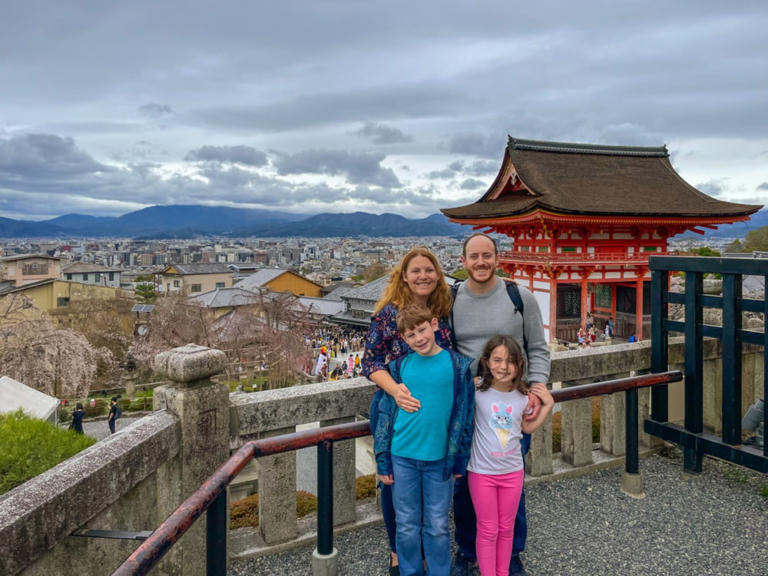
We’re sorry, this site is currently experiencing technical difficulties. Please try again in a few moments. Exception: request blocked

IMAGES
VIDEO
COMMENTS
Two times of year I would avoid for a vacation to Japan are: Golden Week in early May - In 2024, Golden Week is from 27 April - 6 May. This is a series of national holidays so many Japanese travel domestically, trains and hotels book up, and popular spots will be extra crowded. New Year - Late December to early January.
This guide for planning a trip to Japan will cover: How to prepare for a trip to Japan in 2024. 20+ crucial Japan travel tips to know before you go. Hire a pocket wifi or buy a 4G SIM card for your phone when visiting Japan. Don't blindly buy a JR Pass thinking all tourists need it. Take time to read these Japan travel guide books.
With the Japan itinerary planner by Triptile™. Embark on a journey to Japan, where the seamless integration of nature and ancient traditions creates an unparalleled experience for every traveler. From the moment you set foot in this captivating corner of Asia, you'll be entranced by its allure, finding it difficult to leave.
Plan on the go with our free travel app. With Wanderlog's mobile travel planner on Android and iOS, access and edit your trips wherever you go — even while offline. Keep your places to visit, flight/hotel reservations, and day-by-day itineraries for your trip to Japan in our web and mobile app vacation planner.
This 2 weeks in Japan itinerary will cover: How to explore Japan on your own with confidence; Quick links to useful resources; Complete 2 Weeks in Japan itinerary, day-by day guide including costs, things to do, where to stay, where to eat & getting around for:. DAYS 1-5: Tokyo (including day trip to Mt Fuji) DAYS 6-10: Kyoto DAYS 10-12: Hiroshima (including day trip to Miyajima)
Below are the steps to planning, organizing, and researching needed to create the perfect itinerary for your trip to Japan: 1. Decide whether you want to plan your own trip or use a Japan travel specialist. Me in Meiji Shrine. Japan is a fascinating mix of traditionalism and modernity.
This information-packed Japan trip planner has the answers to all your questions. Find out the best places to visit, which Japanese foods to try, and how to ride the bullet trains. All the research is done for you to assist in planning a trip to Japan. If you have been dreaming of traveling to Japan and want to get serious about planning your ...
Japan Trip Planner: How to Plan Your First Trip to Japan. This information-packed Japan trip planner has the answers to all your questions. Find out the best places to visit, which Japanese foods to try, and how to ride the bullet trains. All the research is done for you to assist in planning a trip to Japan.
There's a lot to see and do. That's why I put together a "first-timers" Japan travel itinerary, built on my 20+ years of traveling to and from Japan. This sample trip is for people heading to Japan for 1 to 2 weeks (which seems like the standard visit time for most people). Of course, there are so many things to see in Japan besides those ...
Japan Rail offers both standard and first-class carriages. Standard class on most trains is exceptionally clean and comfortable and offers great value for budget travellers. Here is a rough estimate of the cost of a few common expenses when traveling in Japan: A local beer = $6. A bowl of ramen or soba noodles = $9.
1. Google Translate. By far one of the most helpful apps when it comes to international travel, Google Translate makes reading menus or railway maps a breeze. It's most useful feature is undoubtedly its ability to translate from a photo or live feed from your smartphone's camera.
This guide covers 9 key tips for making your Japan travels easier, from accommodation options to transport advice and plenty more. ... a string of public holidays running from April 29th until May 5th annually. During this period, many people travel to visit family or plan their own getaways, meaning that roads are congested, trains and flights ...
Don't plan a trip to Japan without watching this! EVERYTHING you need to plan a trip to Japan is RIGHT HERE! This page is your one-stop-shop Japan travel planning guide to plan out your trip itinerary, set your budget, find accommodations, understand the Japan train system, what to understand about the local culture AND which aps to download.
Trip to Japan cost. Based on the tours people book on our site, the estimated total cost for 2 weeks in Japan is $5,530, £4,400 for 2 people. This works out to around $200, £157 per person per day, and it includes flights, accommodation, transportation, food, activities, souvenirs, and other small expenses.
With your trusty eSim or Pocket Wifi, you can effortlessly plan your trip without worrying about getting lost. Whether your itinerary includes Tokyo , Japan's capital, or a trip to Nagoya , the country's fourth-largest city, don't forget to have your eSim or carry around your Pocket Wifi for a fuss-free travel experience.
It's the one where you turn your ideas into concrete plans. Stage 4 is the fun part. And stage 5 is the most overlooked, but, as we'll see, one of the most important. Let's take a closer look at what each of these 5 stages are, and see how you can apply them when planning your next trip into The Real Japan.
Here are the 5 best things to do in Japan for your next trip 🇯🇵🩷. 1 - Sensoji Temple. To really tap into the culture of Tokyo, visit Senso-Ji Temple, Tokyo's oldest temple, dating back to the 7th century. 2 - Mount Fuji.
Hyperdia is a useful transport planning mobile and web app which allows you to plan your itinerary to travel around Japan by train with precision. Travelers who download Hyperdia have direct access to up-to-date schedules, journey times, and train information and prices. The app also allows you to access links to useful services in the selected ...
Japan receives between 300 and 600 inches of snow each year from December to March. There are over 500 ski resorts in Japan from Hokkaido to Kyushi, so take advantage of the amazing snow in Japan if you love winter sports. Spring - Spring is a great time to plan your trip to Japan.
The Ultimate Japan Trip Planner. The Ultimate Japan Trip Planner: How to design a dream trip to Japan without stress. 17.97 USD. Click to Purchase. "I'm using your Trip Planning Guide. It's a great aid and one less thing I have to think about organizing. Love it!"
You need to create an account, enter your passport and flight details, and add proof of vaccination (or a recent test certificate). At the time of writing Japan requires visitors to have at least 3 vaccinations or a test certificate from a test taken a maximum of 72 hours before boarding the flight.
One night in a capsule hotel or hostel: $30-60 USD. A meal in a local restaurant: $5-10 USD per person. Special meals and experiences: $30-60 USD per person. Attraction tickets and entrance fees: $5-15 USD per ticket. Japan Rail Pass: $230 (7 days) to $466 (3 weeks) USD per person ( if you order online before you go!)
The best way to plan your trip to Japan is to book with Fora.We'll go over the best places to stay in Japan, like where to stay in Tokyo — the coolest hotels in Tokyo are among the best in the world, by the way— where to stay in Kyoto and more.. And you'll get access to exclusive hotel perks and upgrades . This can include property credits, room upgrades, or even complimentary meals ...
Here are seven easy steps on planning a Japan trip: 1. Decide when you want to go. The first thing you need to do when planning a trip to Japan is figure out when you want to go. There are quite a few things to consider, especially because visiting Japan is quite a big and expensive trip.
Keep planning your trip to Japan: The 24 best things to do in Japan Find out if you need a visa to enter the country Take to the open road on these top drives How to discover Japan on a budget. Explore related stories. Read more articles. Public Transport. Exploring the highlights of Japan's San-yō region by train.
Unfortunately the need to lock down times and places so far in advance can make Japan travel planning very tricky. Give yourself plenty of time and try not to get overwhelmed - take it one area ...
Visas for U.S. citizens hoping to travel, study or work in Japan are controlled by the Japanese government. While the Japanese Government is the ultimate authority on visa matters, we would like to present some general information on visas for U.S. citizens to aid in your planning. U.S. citizens without a work visa cannot work in Japan.